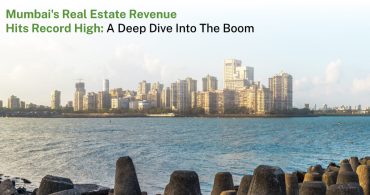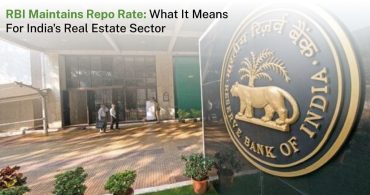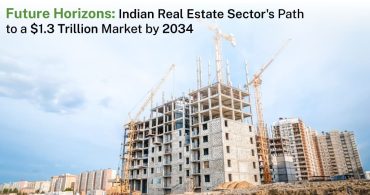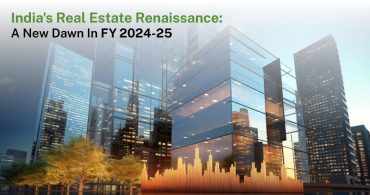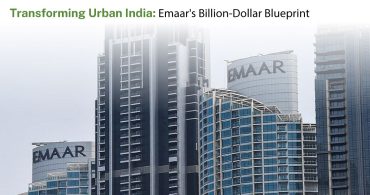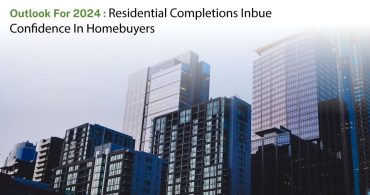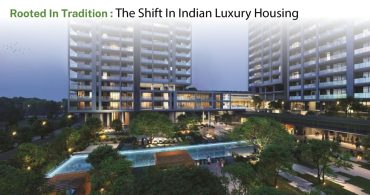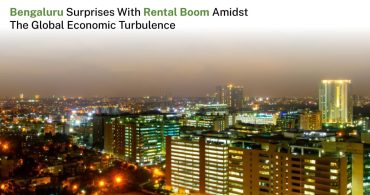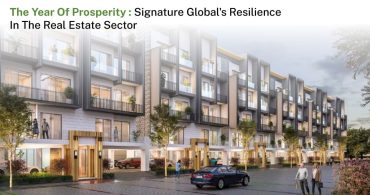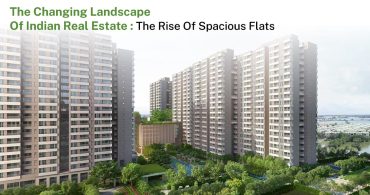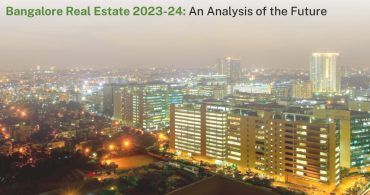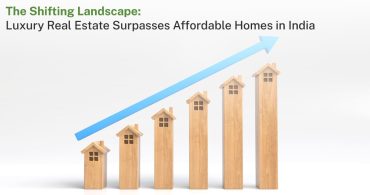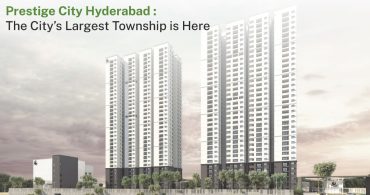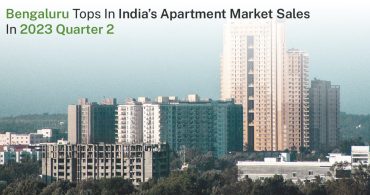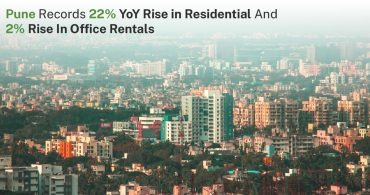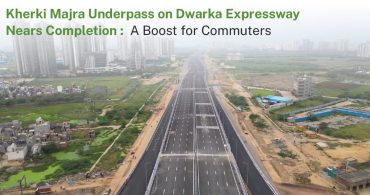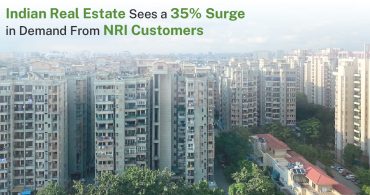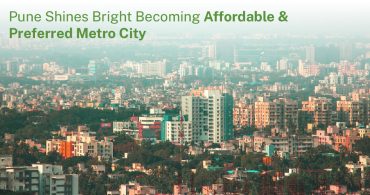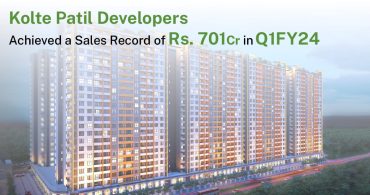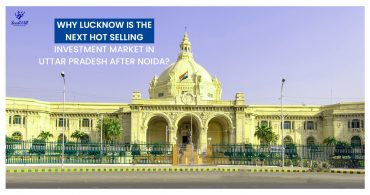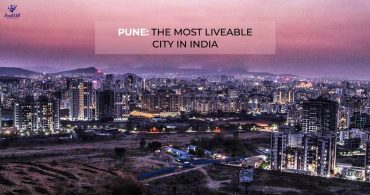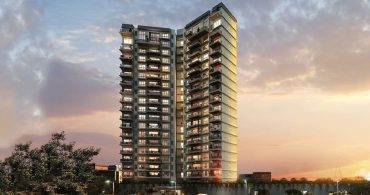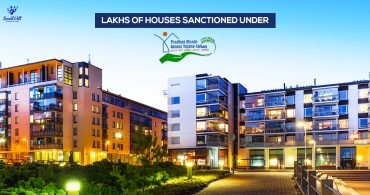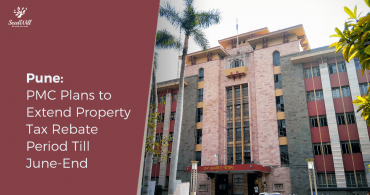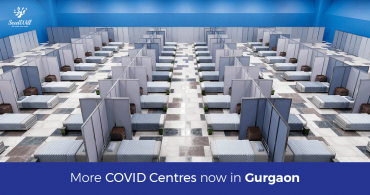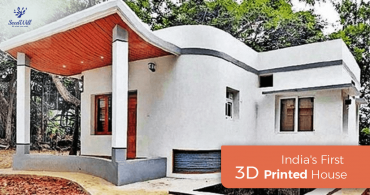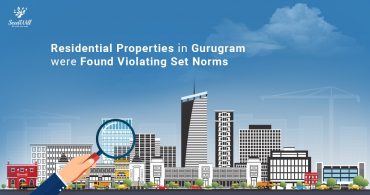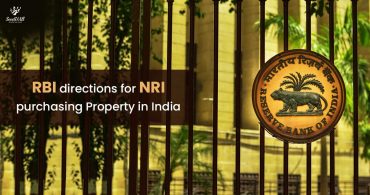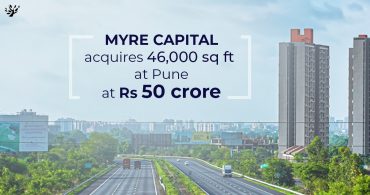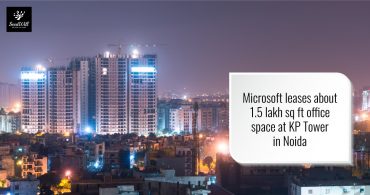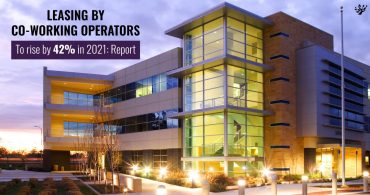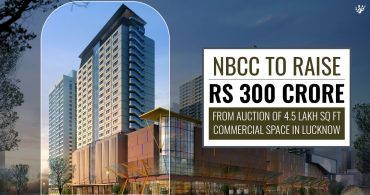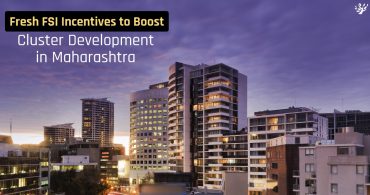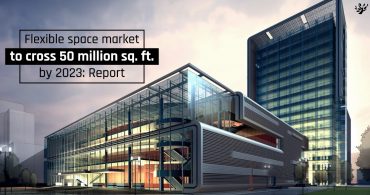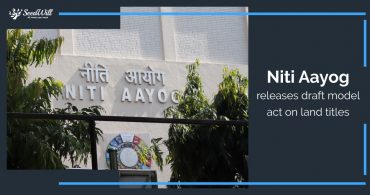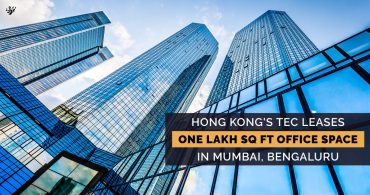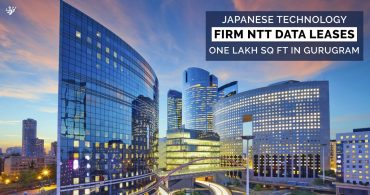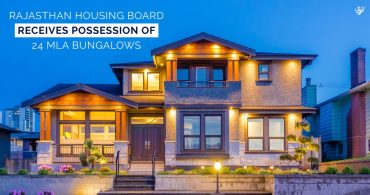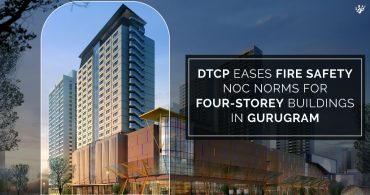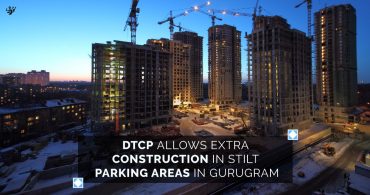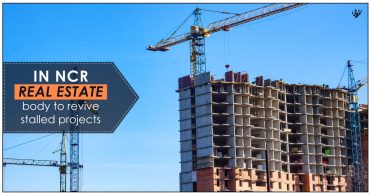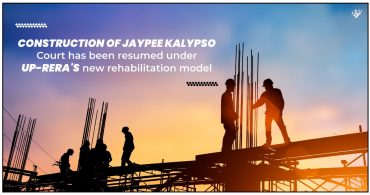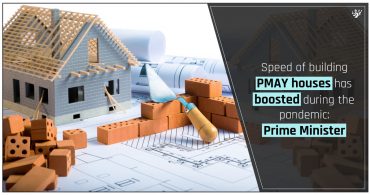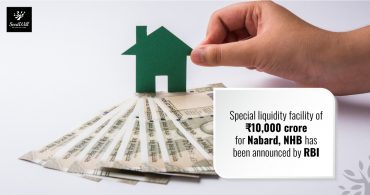Best Locations in Bangalore to Buy Property in 2025
Bangalore is emerging as a prime real estate market where new areas come up as lucrative target investment options. The analysis basically deals with the most promising segments for property investment in 2025, along with the factors of infrastructure, appreciation, and lifestyle amenities. Very high promise is given to Bangalore, especially Devanahalli and Yelahanka, thanks to developments at the aerospace park and the international airport coming up.
The future projects of infrastructure and business parks are going to result in enormous property increases in value. Obviously, the anticipated completion of metro connectivity would have increased even more their value proposition for both residential and commercial properties.
Devanahalli
The proximity of Devanahalli to Nandi Hills makes it an appealing location for a homebuyer or an investor. The area has all urban amenities and also provides a sense of nature. The region is well connected to NH 44 and NH 648, which provides great interstate connectivity. Six Lane Bellary Road connects it to Yelahanka and Hebbal and, even more conveniently, it is still very close to Kempegowda International Airport and other public buses.
Devanahalli is becoming a centre for employment thanks to an expanding IT infrastructure with lots of corporate presence. The area has many IT parks, tech parks, and Special Economic Zones that attract professionals. It has excellent economic potential, accentuated by the KIADB industrial area, the upcoming Aerospace Park, Science Park, and Financial City.
With strategic location, infrastructure development, and increasing employment, Devanahalli is emerging as an ideal real estate investment destination, especially for the working professionals who can then enjoy a balanced lifestyle. TATA One introduces a sprawling township of above 70 acres in Devanahalli, Bangalore.
This development consists of 2400 units all located within a few meters’ stretch from the KIADB Aerospace Park along with major business hubs. The project also enjoys an advantage of metro connectivity. This project offers luxurious 3, 3.5 and 4 BHK apartments along with luxurious row houses and townhouses. The prices start at ₹1.4 crores onwards. Booking amount as an Expression of Interest (EOI) is pegged at 2 lakhs for 3 BHK and 5 lakhs for 4 BHK units.
KIADB Aerospace Park
Just under 3,000 acres encompass the bulging pockets of the North Zone in Bangalore on the eastern part adjoining Kempegowda International Airport. This Hi-Tech, Defense & Aerospace Park beckons both seasoned investors and first-time homebuyers by demonstrating compelling investment opportunities.
There is developed infrastructure and valuable connectivity. The skill base supporting them continues to breakfast as they help build this growing industrial ecosystem. The residential development out of KIADB Aerospace Park has scope for all real estate needs, from high-end apartments to fully secure gated communities.
The modern built environment would cater to the increasingly important contemporary lifestyle of the residents who are enticed by promises of professionals flooding in. There could be a great focus on industrial growth, the strategic location, and the high-quality housing development that would make the investment appeal regarding the monetary and lifestyle benefits in KIADB Aerospace Park.
Brigade El Dorado is located on 50 acres in Aerospace Park of North Bangalore. The complex has G+21 towers and it offers luxurious 1BHK apartments starting from INR 49 lakhs. The 10-acre central green, this one highlight, adds to the serenity within this complex.
It boasts 80 plus high end amenities, which include a multiplex with 4 screens inside the compound. Such space also has areas for children’s play and crèche. It stresses a wholesome lifestyle experience for its members at any age.
Kanakapura Road
The rapid development of infrastructures like the upcoming Metro Phase 2 connection, which is supplemented by roads improving access to prime city areas, will end up in infiltrating business districts. The NICE Road junction also nicely connects cosets with major business districts.
Prestigious institutions like Rashtreeya Vidyalaya College and Valley School exist in the area, so it reasonably attracts those with children who have to go to school. The new IT parks and commercial spaces Gears up employment in its course. The upcoming business centers add residential customers and the property prices enjoy an appreciation of the same.
Proximity to Bannerghatta National Park and a number of lakes contributes to a healthy living environment. Green space and less density contribute to better air quality. Consistent growth is shown in property values due to ongoing development projects and improving social infrastructure. The prices per current unit remain very good for most other premium locations in Bangalore and have great appreciation potential.
Provident Park Square is a lifestyle township which is developed within an area of 20 acres on Kanakapura Road, Bangalore. The project has 19 towers housing 2082 units constructed using extremely strong precast technology. The residences are luxury 1.5, 2 and 3 BHK houses, with great introductory prices starting from just Rs. 69.99 lakhs for the attractive 1.5 BHK and Rs. 86 lakhs pricing for 2 BHK units. This booking scheme requires a 10% down payment and is very user-friendly.
Bagalur
Bagalur has a high-potential investment zone because of its proximity to Kempegowda International Airport and major tech corridors. In addition, improved road networks ensure seamless connectivity with Hebbal, Yelahanka, and KR Puram. The ongoing infrastructure improvement projects, including extensive road widening and proposed metro connectivity, further facilitate accessibility to the area. Also planned developments include the Aerospace SEZ and Hardware Tech Park.
The employment prospects in this place are enormous as it is well on its way to being the IT and aerospace hub. Heavyweights within the IT fraternity such as the Aerospace Park and other such parks are going to encourage many professionals to migrate into this place. Current prices for real estate are quite low in comparison to those of neighboring localities and are bound to rise strongly. Early status of development provides excellent potential to gain value appreciation.
Social infrastructure like schools and colleges, hospitals, and shopping centers have been planned to improve the liveability of the area. It strikes a balance of development and spaces in the texture of the living environment. The future holds the promise of changing Bagalur into becoming a micro-market that is self-sustaining and, hence, very valuable for end-users as well as investors looking for returns over a period of time.
Kalyani Living Tree at Bagalur, Bangalore, boasts of a sprawling 25 acres of residential area. The ten towers constructed therein present ideally designed 1-, 2-, 2.5-, or 3-BHK apartments for best utilization of space and natural lighting.
Apart from the 100,000 sq ft clubhouse, there are over 50 other amenities, including swimming pool and gymnasium. Added to this is a good connectivity of the project with Yelahanka, Hebbal, and Kempegowda International Airport by virtue of its strategic location adjacent to KIADB Aerospace SEZ for greater access.
Karnataka Kickstarts SWIFT City: New Industrial Space
The state of Karnataka has embarked on a journey of developing SWIFT City (for Startups, Workspaces, Innovation, Finance, and Technology) on Sarjapur, Bengaluru. It is the third major general planned industrial hub for the state after the successful setting up of Electronic city and ITPL in Whitefield.
Project Infrastructure
The envisaged SWIFT city would spread over more than 1,000 acres and house about 8-10 such facilities with plug-and-play infrastructure. Each facility would be spread across 20-25 acres as already confirmed by Large and Medium Industries Minister MB Patil. The Karnataka Industrial Areas Development Board has started giving shape to a Detailed Project Report for the Sarjapur Industrial Area over 647.69 acres of land. The site, which lies in proximity to National Highways 44 and 48, and to Bengaluru’s IT hub, really gives the project imported accessibility and potential.
Features and Facilities
The development will respond to Bengaluru’s workspace crunch by providing state-of-art offices, co-working spaces, and residential clusters. Small and medium startups would get access to built spaces in the range of 5000 to 20000 square feet through various models designed including lease, sale, and investment-sharing schemes. Schools will be included in the city as well as all wide connecting roads for comprehensive infrastructure development.
Vision and Future Plan
The vision of Minister Patil goes on for transforming Karnataka into a “Silicon State” beyond this new feature called SWIFT City even as it forms part of the larger development strategy that the state envisions for itself, which also includes plans for five Mini KWIN Cities to places like Vijayapura and Hubballi-Dharwad.
Recently, the initial phase of the KWIN City project, an ambitious initiative intended to draw global talent and promote sustainable economic growth, was rolled out by Chief Minister Siddaramaiah between Dabaspet and Doddaballapur.
Its development positions SWIFT City to attract a future generation of technologically advanced industries focusing on artificial intelligence, data analytics, and fintech. Karnataka is thereby proving itself not all that much less at maintaining its premier position in innovation and development; this way new jobs can be created while old investments can continue flowing into the region.
Top Builders in Bangalore: List of Real Estate Developers
Bangalore, also known as the “Silicon Valley of India,” is a vibrant and diverse city that attracts people of diverse demographic characteristics. As the hub for IT business, with superior infrastructure and a cosmopolitan standard of living, this city has also become the epicentre for real estate investments.
Whether it is high-end apartments or affordable houses, the requirement for residential properties is rising continuously. Therefore several leading real estate developers have been contributing to the city’s skyline by providing various options of abodes suitable to every pocket and requirement.
Thriving Real Estate Bangalore’s Market
The real estate market of Bangalore has grown immensely in the last decades because of the increase in industrialization, good employment prospects, and the favourable economy of the city. Especially, the revolution of the city’s IT sector has helped greatly in attracting the population which increases the demand for residential and commercial properties.
Besides, the availability of the social infrastructure, which includes well-developed roads, metro connectivity, and proximity to major tech hubs, makes the property even more attractive for home seekers and investors. In this growing market, some of the leading real estate developers have dominated this emerging area by delivering properties of superior quality for every lifestyle.
Top 7 Real Estate Builders in Bangalore
Here’s a look at the top six real estate developers who are shaping the city’s real estate landscape with their exceptional projects.
Godrej Properties
Godrej Properties, part of the prestigious Godrej Group, is a real estate company operating in India. Popular for their ideas on innovation, sustainability, and design exclusivity, Godrej Properties has many projects across key Indian cities including Bangalore. Their developments are famous for providing a combination of world-class infrastructure and green surroundings, keeping in mind the requirements of urban dwellers.
Some of their popular properties include:
- Godrej Lakeside Orchard
- Godrej Park Retreat
Brigade Group
Brigade Group, established in the year of 1986, is one of the reputed firms of Bangalore with specialization in providing residential, commercial, and hospitality segments. Their projects are marked by proper planning and the right locations and have all the latest amenities that are liked by homebuyers. Ideally, the Brigade Group has played a critical role in introducing glamorous buildings in the city with diverse lifestyle amenities for all categories of people.
Some of their popular projects include:
- Brigade Valencia
- Brigade El Dorado
Provident Housing
Launched in 2008 as a subsidiary of Puravankara Limited, Provident Housing has generated its niche in offering affordable housing segments without compromising its quality and luxury. As a first-time home buyer-focused company, Provident delivers affordable homes that are complemented with contemporary features and eco-friendly design. They have a reputation for timely project completion and the general adherence to high construction quality.
Some of their popular projects include:
- Provident Botanico
- Provident Park Square
TVS Emerald
TVS Emerald, being the real estate vertical of the prestigious TVS Group launched in 2012, endeavours to develop a sustainable habitation environment that is in harmony with nature. One thing that sets their projects apart in Bangalore is their effort to incorporate lush green landscapes, open spaces, and energy-efficient structures making them ideal for those who want to live in environment-friendly houses that are in harmony with their surroundings.
Some of their popular projects include:
- TVS Isle of Trees
Nambiar Builders
Nambiar Builders is a reputed organization specializing in building elegant and luxurious villas and apartments mainly in the vicinity of Bangalore city. Their developments are primarily focused on gated communities and include expansive villas as well as plots that are fitted with excellent services and facilities. They are associated with luxury and are targeted towards people who want distinctive and quality homes.
Some of their popular projects include:
- Nambiar District 25
- Nambiar Ellegenza
Tata Housing
Tata Housing, a part of Tata Group founded in 1984, is one of the leading real estate companies in India that carved a niche for trust and quality in the real estate business. Based in Bangalore, Tata Housing has been consistently developing and delivering residential projects including luxury as well as affordable housing. Their projects are known to be of high quality with good architectural designs bearing most of the modern facilities that people desire in their homes.
Some of their popular projects include:
- Tata Promont Phase II
Total Environment Building Systems Pvt Ltd
Total Environment, founded in 1996, is a real estate development company that specializes in focusing on designing and building homes that incorporate natural elements and green spaces within their architecture. Known for their innovative designs, Total Environment creates residences that emphasize environmental sustainability by seamlessly integrating nature into the interior spaces. Their projects cater to individuals who desire tranquil and eco-friendly living environments.
Some of their popular projects include:
- Total Environment Down by the Water
Final Words
The real estate market of Bangalore has been rapidly growing and there are a number of developers in the city who have various options in terms of residential properties that may suit different needs and budgets. All these leading builders can provide you with a dream home, whether you want a lavish villa or a small apartment.
With the continuous growth of the city, the developers’ specialization will guarantee the inhabitants comfortable living conditions in well-planned neighbourhoods.
Prestige E City: Luxury Living for Families & Professionals
Prestige E City is an innovative residential development, located in the vibrant Electronic City of South Bangalore. This project is one of its kind – envisioned to suit the fast-paced lifestyles of today’s families and working individuals. Designed with a lavish lifestyle in mind, this project is developed by the esteemed Prestige Group. This premium development blends luxury, convenience, and connectivity, creating a sanctuary for those in pursuit of an elevated lifestyle.
Designed for Families and Professionals
This well-planned residential property lets you choose from a range of well-constructed luxurious apartments starting at just ₹70 L*. Each home is crafted to perfection with smart layout plans that cater to diverse lifestyle needs:
- 1 BHK Apartments: These 650 sq ft units are large enough for young professionals and couples, featuring a contemporary layout and design that optimizes the space.
- 2 BHK Apartments: These 1200 sq ft units are ideal for small families as they consist of a stylish and fully functional living room, dining area, kitchens, and spacious bedrooms.
- 3 BHK Apartments: Designed for larger families or those desiring a luxurious living experience, these generous homes range from 1450 to 1950 sq ft.
Comprehensive Amenities for Every Lifestyle
Prestige Electronic City ensures that families and professionals have access to everything they need for a balanced and fulfilling life. The development provides more than 30 exclusive lifestyle amenities, such as:
- A clubhouse, swimming pool, yoga deck, and indoor games zone for relaxation and rejuvenation.
- A fully equipped gym and jogging track to encourage a healthy lifestyle.
- Beautifully landscaped gardens, a children’s play area, and multipurpose halls for family gatherings and celebrations.
- Various options for sports enthusiasts to engage in their favourite activities.
Strategic Location for Unmatched Connectivity
Located off the Jigani-Bommasandra Road, Prestige Electronic City is one of the best-connected residential projects which offers the perfect home for IT professionals working in Electronic City and families in search of a convenient home. Being close to well-known IT firms such as Infosys, Wipro, and Tech Mahindra offers working professionals a lot of convenience in terms of commuting. Moreover, since it is situated close to NICE Road and Outer Ring Road, it makes travelling in any part of Bangalore easier.
The project is surrounded by well-established schools, hospitals, and shopping centres, including:
- Educational Institutions: White Academy CBSE School and National Public School are well-known schools in the area that offer quality education for children.
- Healthcare Facilities: There are many good hospitals near this location such as Motherhood and Athreya Hospitals.
- Leisure & Retail: M5 Ecity Mall and DMart are destination malls that cater to all aspects of shopping and entertainment.
A Marvellous Blend of Luxury and Practicality
Prestige E City is one of the prestigious residential complexes by Prestige Group that has been designed with style and functionality. Conceptualized with families and working professionals in mind, the development has tranquil open green areas, Vastu compliance in building designs, and high-rise buildings with wonderful city views. The attention that is paid to natural lighting and ventilation helps in building a peaceful atmosphere that will ease off the stress after a long day at work.
Situated in Electronic City, residents are at the centre of Bangalore’s bustling IT sector. With ongoing infrastructure improvements, including the upcoming Yellow Line metro, the property holds great potential for appreciation. The area’s strong demand for rental properties makes it an appealing option for investors.
Final Words
Prestige E City fulfils all the parameters one can expect from a conducive environment for families with children or working professionals preferring to live in a luxurious yet well-connected neighbourhood. The development is aesthetically designed. It has modern facilities and is located strategically in a prime area which makes it a highly preferred choice in the real estate sector of Bangalore.
Whether you are looking for a dream home or a smart investment, Prestige E City is the perfect option for modern living.
Simple Techniques to Identify Your House Facing Direction
Complete Instructions for Determining Your Residence’s Directional Alignment. Begin by positioning yourself at the main entryway or principal access point. This location serves as your reference point for analysing the dwelling’s positioning. Utilise a magnetic navigation tool to precisely identify the alignment. Maintain the instrument level and steady in your grasp. Keep the compass level and stable in your hands. The navigator gadget will indicate True North. You will then be able to determine the rest of the cardinal points, which are the Southern, Eastern, and Western axes.
When staring forth from the building, take note of the cardinal direction that lies ahead. With these measurements complete, you can ascertain your dwelling’s orientation based on your findings. Having established the methodology for determining residential orientation, validate your results by conducting measurements from various positions throughout your dwelling.
Five elements of Nature
Vastu Shastra is the ancient Indian doctrine that influences the design and architecture of residences. The principles of prosperity, fortune, and joy are deeply connected to Vastu Shastra. This philosophy aids in attaining balance by aligning your home’s orientation with the five natural elements.
The elements greatly impact each and every one of us, so it is important to consider the suitable orientation of your home. When and how these elements are positioned within the living environment, they can have positive impacts upon the residents’ quality of life. However, if one fails to achieve this orientation of objects within the space, disastrous results may be expected.
Directions as the channels of energy
Now, directions are not just directions as per the compass, but they are specifically energy directions directed towards your house. The entrance point of your house and the outline of the property would determine the orientation of this energy to be effective. How this energy comes into the house and circulates everywhere is through the main entry point of the house – either positive energy or negative energy.
Imagine this: our ancestors solved the riddle of how to create spaces that were to scale with nature long before the advent of blueprints and CAD designers. No, this is not an old textbook that collects dust somewhere. It is a handbook of sorts, a smart book outlining how to enhance the chances of having good luck and achieving the most that life has to offer.
Reaping the benefits of positive energies
By selecting an optimal house orientation such as east, north, or northeast, you can direct beneficial energy into your home. These energies resonate harmoniously with the earth’s energies present in the property, along with its five elements.
Avoid negative energies.
Another consequence of house orientation, as suggested by Indian Vastu Shastra experts, is imbalance in energy flows resulting in breaks in energy continuity throughout the house. The negative effects can be manifested in different ways such as stress, wasteful expenditures, health complications for the family members, and various other difficulties. And therefore Vastu emphasises a way to escape from getting affected by the energies coming from unfavourable directions.
Thus, the direction the property faces is important in determining the flow of energies within the house. If the property is positioned in the correct way the tremendous positive energy in the universe assists the family members. This creates an environment of happiness and well being in the house.”
What to Look for When Buying an Apartment?
Flat buying is a serious life decision, and a person must think through many aspects. The purchase of a home is a life-changing decision, and increasingly people are turning towards purchasing apartments because of the steep property prices regarding Tier 1 and Tier 2 cities. A thorough market research is essential before you invest in any property. There are various places like Gurgaon, Bangalore, Mumbai, and Pune wherein one can find many different options for homes which accommodate different budgets and preferences.
Newly emerging places like Bangalore and Gurgaon would dream of having spacious and affordable apartments, whereas Mumbai offers all those established projects with robust infrastructure. While choosing a specific location, factors to take into consideration would be connectivity, living spaces, as well as existing amenities that would help in making an informed decision according to personal and finance goals. Here is a wise way to go about it:
Financial Planning
Budget-laying is the first and foremost aspect in house-hunting. Start by doing a full and detailed financial assessment beyond the purchase price alone. Look at what comes into your pocket monthly, compute all outgoings, and you will know what you can put aside as real spending capacity. This calculation gives you an idea of the maximum monthly mortgage payment you can afford to take on.
See the above about financial well-being as a whole. The measurements include current savings, investments already made, and those to be used for the down payment. A thorough financial review guarantees a whisk from their grasp as well as a false sense of security. Maintenance fees, property taxes, and renovation costs most likely will be part of extra costs to consider.
The Importance of Location
There cannot be enough emphasis put on location. A strategic location impacts quality of life, and it can also determine how return on investment appreciates. When you’re evaluating a potential apartment, such parameters should be taken into consideration:
For Investment Purposes:
- Proximity to city centers
- Potential future development
- Historical appreciation rates in the area
- Rental market demand
For Personal Living:
- Neighborhood safety
- Proximity to services necessary
- Quality of local infrastructure
- Accessibility from work and schools, hospitals, and public transport facilities
Amenities and Infrastructure
Getting modern apartment complexes closer to a dwelling is all that but the reason these enclaves add amenities is because they know that it offers a significant fine quality of life and price to the property. So you could evaluate what this complex has to offer:
Basic Amenities
- Secured parking areas
- Elevators
- 24/7 Fixtures of Security
- Recreation Spaces
- Health Clubs
- Greens and Parks
Security Features
No compromise to personal safety. Check thoroughly about the security measures of the apartment complex:
Key Features of Security:
- Round the clock security personnel
- Sovereign advanced surveillance system
- Mechanisms for protection against theft
- Robust entry and exit protocols
- Safety-centered architectural design
Purchasing an apartment is a transaction, not just financial; it is a future investment. For sure, it will require some very meticulous approach towards many aspects in this process before deriving a very well-formed decision on meeting immediate and long-term needs.
How to Check RERA Registration of Projects in Uttar Pradesh
The Uttar Pradesh Real Estate Regulatory Authority(UP RERA) serves as the state’s property guardian. They’ve just rolled out a fresh rule – every single sales pitch for both new and running projects needs to sport a QR code, making things crystal clear for buyers.
UP jumped on the RERA bandwagon early, kicking off their property watchdog squad back on May 1, 2017. Sure, they started by copying the main RERA playbook, but they tweaked some bits – like what counts as a running project and shared spaces.
UP RERA’s Customer-Centric Approach
And this is the interesting part: when purchasers weren’t pleased with these changes, UP listened! They got back to the drawing board and devised regulations that placed customers first. Quick fact: UP was one of the first states to adopt the property restrictions, demonstrating that they are serious about safeguarding people who spend their funds in houses. As QR codes are becoming popular all over, it’s becoming increasingly difficult for dishonest traders to pull a quick one!
The Significance of RERA Registration
According to this Act, builders need to file current projects with the regulatory authorities, following which they will be assigned a registration number. Consequently, the registration number, or RERA Certification, serves as a symbol of security and protection for real estate investments. Want to check if your UP property dream is legit? Here’s the real deal:
Pop over to UP RERA’s website – it’s easier than ordering pizza! Just scroll down a bit (yeah, keep going) till you spot ‘Registered Projects’ hanging out on the left side under ‘Search’.
Navigating the UP RERA Website
What next? You’ll see this massive list of projects – don’t freak out! There’s a search box up top where you can type in your builder’s name or that fancy project you’ve got your eye on. Like magic, the right stuff pops up! Want to delve further? Search for the small eye symbol in the ‘Details’ section and select it! You’re currently looking at all of the exciting facts regarding your future house. A suggestion from an individual who has been there: Save this page for easy access. Believe that you’re going to need it later! Keep in mind if it’s not on this list, perhaps keep your money in your wallet instead.
Verifying Builders on the UP RERA Website
“How to verify documented builders on the Uttar Pradesh Real Estate Regulatory Authority’s website? Select the ‘Registered Developer’ option under the search segment on the main page. A catalogue of all the registered developers with their particulars corresponding to their designation will materialise. On the other hand, you may search for a particular developer by putting their name in the search form rather than browsing the full register. Before selecting ‘Search’, verify that you have entered the Captcha Code. Next, tap on ‘View Specifics’ to learn everything regarding the builder.”
Uttar Pradesh Real Estate Regulatory Body: Contemporary Directives (July 2024)
In an endeavour to augment transparency, the UP RERA has instructed all constructors to incorporate Quick Response Codes on every new and subsisting undertaking enrolled with the Authority from 18 July, 2024. According to media chronicles, the registration attestation will also undergo a redesign with a digital imprimatur from the secretary.
Analogous to the official UP RERA web portal, the QR Code will also encompass all the pertinent data about the enterprise. Furthermore, the QR Code ought to be widely displayed on the developer’s specific project web page, booklet workplace, and project advertising venue to provide easy access. This project aims to provide purchasers with easy access to specific business information straight from the UP RERA site, while also encouraging accountability and standards in Uttar Pradesh’s real estate market.”
How to Check RERA Registration of Projects in Haryana?
The Real Estate Regulatory Authority or RERA is a governing body, established with the intention of bringing in more efficiency and integrity in the functioning of real estate businesses. For buyers, it works as a safeguard, providing information regarding registered projects as well as ensuring commitment to the regulations of real estate.
In Haryana, the RERA has two main bodies: HRERA Panchkula and HRERA Gurugram which deal with specific areas of Haryana respectively. Let’s explore more to know how one can check the status of a project’s RERA registration in Haryana.
What is Haryana RERA?
Haryana RERA came into force with provisions of the RERA Act of 2016 aimed at ensuring transparency and regulation of dealing in property. The government body monitors initiatives across the Haryana region with an emphasis on guaranteeing that developers offer potential consumers a precise explanation of prospects.
The regulatory authority of Haryana is divided into two divisions – Panchkula and Gurugram, based on geographical locations. The existence of these bodies assists in protecting buyers from fraud and unregistered projects by providing a legal interface that a buyer can use to verify property information.
What are the Roles and Responsibilities of Haryana RERA?
Haryana RERA plays a crucial role for both buyers and developers. It includes:
- Project Registration: RERA makes it compulsory for all projects that exceed 500 sq meters or eight units to register with HRERA. This registration helps the buyers to have confidence that the particular projects are legal.
- Transparency and Public Records: The online portal developed by RERA has specified details of the project such as approval, duration, penalty if levied, compliance details, etc. This information is disclosed to the public, allowing buyers to have adequate information with which to make decisions.
- Dispute Resolution: HRERA provides a smooth method for the settlement of disputes between buyers and developers in order to make sure compliance and integrity in the real estate sector.
Why is Haryana RERA Registration Important?
Both the buyer and the developer benefited from RERA registration in Haryana. For the buyers, it brings the provision of knowing the progress made on the project they have invested in so that they can face fewer hindrances in the possession of the property and also get a way to seek remedies in case they have been wronged.
From the developer’s side, the implementation of RERA increases credibility and is especially valuable in fully competitive markets such as Gurugram. Failure οn the other hand has severe penalties such as fines and at times legal action.
How to Check RERA Registration of a Project in Haryana?
To confirm the registration number of any project under Haryana RERA, the official website of Haryana RERA offers a convenient interface. Here’s how you can check RERA registration for projects in both Gurugram and Panchkula:
Step 1: Access the Haryana RERA Website by following the link: https://haryanarera.gov.in
Step 2: Depending on the location of the project, select either ‘HRERA Gurugram’ or ‘HRERA Panchkula’ from the home page.
Step 3: Navigate and click on the ‘Projects’ button. This section provides information on all the projects registered with the company.
Step 4: After that, through the ‘View Certificate,’ the user is provided with a PDF format document with details regarding the particular project such as the project number, compliance data, and much more.
What is the Requirement for the Separate RERA Bench for Gurgaon?
The real estate sector of Gurgaon is highly developed and competitive, which has led to increasing numbers of RERA-dedicated benches for Gurgaon. This bench is solely dedicated to addressing cases and disputes that concern the city hence turning into a one-stop hub for addressing any such issues.
The Gurgaon RERA Bench has important functions regulating and mediating the compliance of RERA norms and disputes between buyers and developers, which increases investors’ trust in the compliance and quality of projects in this area.
What are the Advantages of Buying RERA-Registered Projects in Haryana?
Opting for an RERA-registered project in Haryana comes with several benefits:
- RERA registration means all requirements as per the law have been met by the developer making the processes legal and free from any future legal hitches.
- RERA enables the buyers to have additional comprehensive data about the project thereby eliminating the possibility of encountering inadequate or unreliable information.
- If there is any problem, the buyers can take their grievances directly to HRERA, which speeds up the processing of the complaint.
- RERA-certified developers are supposed to report to the buyer periodically about the stipulated project progress and any delay that might occur.
Conclusion
To be on the safe side, checking the status of RERA registration is important while investing in property in Haryana. Through HRERA registration, you mitigate risks that can affect your investment since the necessary information you need for the project is outlined and the laws regulating the projects are clearly observed.
If you are trying to check whether a particular project in Haryana is genuine or not, you can follow the steps described in this blog to check if it is registered under RERA and invest more securely.
How to Check RERA Registration of Projects in Bangalore?
RERA, the Real Estate Regulatory Authority, has been developed to safeguard the interests of home buyers and maintain transparency in the real estate market. Each new commercial project launched in Bangalore (as well as in the rest of India) is required to be registered with the concerned state’s RERA authority.
If you’re planning to invest in a property in Bangalore, it is advised to look for the RERA registration status of the project. In this blog, we will discuss how important it is to verify the RERA registration and what is the process to check it in Bangalore.
What is RERA?
RERA stands for Real Estate Regulatory Authority, under the Real Estate (Regulation and Development) Act, 2016, was formed to control the sector and bring transparency. It is intended to improve the disclosure of information, increase accountability, reduce project timelines, and safeguard the interests of home buyers. The RERA Act requires the developers and builders to register their projects with the RERA authority of the states to provide all the essential information like timelines, legal clearances, and financial plans.
Through the registration of the projects by the developers with the state authority, the Act ensures that buyers receive accurate and up-to-date information about the status of the project, legal compliance, as well as the financial condition of the developer. RERA-registered projects in Bangalore have helped reduce fraud risks significantly and protect consumers’ rights.
What is the Need to Check RERA Registration?
If one is planning to buy a property, then it is very important to know whether the project is registered under RERA or not.
This will ensure that the developer follows the set legal regulations so that you as a buyer will have a more secure and safe investment. RERA also provides details on:
- Project Schedules – Avoidance of instances where the project is extended past the timeline planned for the project.
- Legal Compliances – Ensuring that the project complies with laws and regulations required for its implementation.
- Transparency – Gaining insight into the project’s financial planning, ongoing progress, and construction status.
How to Check RERA Registration of Projects in Bangalore?
Here is the step-by-step guide on how to verify the RERA registration status of a real estate project in Bangalore:
Step 1: Visit the Official Karnataka RERA Website
Go to the official website: https://rera.karnataka.gov.in to get information about all RERA-registered projects in Bangalore.
Step 2: Navigate to the ‘Services’ Section
After getting to the site, go to the “Services” button on top, and from the drop-down list, click on the “Project Status” tab on the home page. This part will facilitate the search for real estate projects that are enrolled with Karnataka RERA.
Step 3: Enter the Project Details
To search for a specific project, you can use the following filters:
- Project Name: Give the name of the project of your choice.
- Developer/Builder Name: If you are aware of the builder or developer then you can search by his name.
- Location: Type down the specific area, city, or region of the project in Bangalore.
Step 4: Review the Project Information
Upon getting to the project, click on the project name to view more information. The RERA registration details will include:
- RERA Registration Number: It indicates that the project is officially registered under RERA.
- Project Status: Whether the given project has been completed or if it is still under development.
- Timeline of the Project: The date on which the project is expected to be completed.
- Project Approvals: Information about legal approvals, financial clearances, and the legal ownership of the project area.
- Project Progress: Brief details concerning the current working development of the construction.
Step 5: Download Project Documents
You may even be able to download some documents related to the project like layouts that got approved, records of the land owners, and legal formalities that have been completed. These documents are essential when validating that the project is going through the right process.
Step 6: Contact RERA for Clarification
In case, you still have any concerns or need clarification about a project, you can contact the Karnataka RERA office with the contact details available on the website.
What is the Importance of RERA Registration for Home Buyers?
Verifying the RERA registration of a project helps you assess if the project is legal and complies with all the laws required. Here are some key advantages:
- Protection Against Fraud: Under RERA, the buyers are shielded from unscrupulous builders or half-baked and fraudulent projects.
- Timely Delivery: The RERA registration including the timelines for delivery is expected from the developers. If not done it may lead to some penalties.
- Transaction Transparency: Home buyers can track all the information regarding any project they are investing in which provides for transparency in the buying process.
Conclusion
To avoid any future complications relating to a new property, it is very important for a buyer to confirm that their project has been registered under the RERA Act. The process is simple and prevents worrying about the project, as it grants access to all the relevant information about the project’s progress and legislation.
You can follow the steps that have been described above to confirm the status of the RERA registration of the real estate project in Bangalore before investing in the property. It is always preferred to go for a registered project under RERA as it adds a safer vision and prevents the chances of legal or financial issues in projects that are unregistered or delayed.
How to check RERA Registration of Projects in Maharashtra?
Thinking about how to check a property’s RERA registration? No worries – here’s a simple breakdown! Head over to maharera.mahaonline.gov.in and hunt for that ‘Search Projects’ button. Got the RERA number? Great! Just punch it in – these usually kick off with P51000. No number? The project or builder’s name works too. Once you’re in, you’ll see all the juicy details – when they’ll finish building, what’s happening on-site, and whether the builder’s been behaving themselves. Keep your eyes peeled for any missing numbers or expired paperwork though – that’s usually bad news!
Jump onto maharera.mahaonline.gov.in – trust me, it’s your new best friend! Look for that ‘Search Projects’ tab. If you’ve got the RERA number handy (you know, those P51000-something ones), great! If not, no sweat – just type in the project name or builder’s details. Once you’re there, you’ll see everything laid bare – construction timelines, site progress, and even the dirt on the developer! But hey, watch out for missing numbers or outdated certificates – that’s when alarm bells should ring! Pro tip? Screenshot everything like your life depends on it
Your builder’s making big promises? Great, but run it through the RERA website first! You must have seen or heard enough “trust me” moments turn into disasters. And please, – don’t buy that “registration’s coming next week” story. I’ve heard that one way too many times at coffee with property buddies. Either they’ve got RERA or they don’t – simple as that! Let’s break down the key steps:
Using the Registration Number:
- Type the MahaRERA registration number if you have it
- The number usually starts with P51000 followed by unique digits
- Click search to view complete project details
Using Project/Developer Name:
- Enter the project or developer name in the search box
- Multiple results might appear; identify your project
- Click on the specific project to access detailed information
The search results reveal crucial details like:
- Project completion timeline
- Developer’s track record
- Construction status updates
- Approved project plans
- Payment schedules
- Available amenities
Red flags to watch for:
- Missing registration number
- Expired RERA certification
- Incomplete project details
- Misleading information
- Multiple customer complaints
Smart tips:
- Screenshot or download the RERA details
- Compare project details with developer claims
- Check quarterly construction updates
- Review complaint history
- Verify developer’s past projects
Conclusion
So here’s why check that RERA number!. Moving into your new home? Ensure that the RERA number is correct! It’s like running an automatic inquiry on your project. No nonsense- simply the truth about if the project is authentic or not. No secrets to keep here. Here Forget those glossy brochures! With RERA, builders gotta tell you the real story. Want to know if your house is actually getting built?
Or when you’ll get those keys? It’s all there, raw and real. Bye-Bye Scammers Been burned before? Not this time! That RERA check is like your BS detector. Trust me – the shady builders run for the hills when you ask for RERA proof. What’s Really Going Down Hit up MahaRERA’s site and get the truth bomb! Is your building stuck? Finished? Or did the builder ghost everyone? Save yourself from those “under construction forever” nightmares!
Can Foreigners Buy Property In India?
India’s dynamic real estate market, booming economy, and cultural diversity have caught the attention of people worldwide. Whether for investment or personal reasons, foreign nationals often wonder if they can buy property in India.
Though the prospects are bright, there are certain rules and regulations to follow. In this blog, we will discover the legalities, eligibility, and property types in which foreigners can invest in India.
Legal Framework Governing Foreign Property Ownership in India
Foreign property ownership in India is primarily governed by the Foreign Exchange Management Act (FEMA). The Reserve Bank of India (RBI) oversees the implementation of FEMA and makes sure that foreigners are purchasing property without violating Indian laws. The legal structure is created to protect both parties, foreign buyers, and the economy of the purchasing country.
For NRIs looking to invest in Indian property, it’s important to grasp the legal infrastructure that essentially decides the kind of property they can buy, in what manner and under what conditions.
Who Can Buy Property in India?
There are certain categories that are eligible to purchase property in India under certain conditions.
Non-Resident Indians (NRIs)
NRIs are Indian citizens who live abroad. They have the same rights when it comes to property ownership as resident Indians. NRIs can buy both residential and commercial properties in India freely without any hassles. The only thing NRIs cannot do is buy agricultural land or plantations directly. They can inherit these types of properties though.
Persons of Indian Origin (PIOs)
PIOs are people of Indian origin who hold citizenship in another country. They have the same property-buying rights as NRIs, which means PIOs can buy both residential and commercial properties without any difficulty. However, PIOs cannot purchase agricultural land just like NRIs.
Foreign Nationals (Non-Indian Origin)
Foreign nationals not of Indian origin have even more limitations. They can buy property only if they have stayed in India for over 182 days in the previous financial year or are on a long-term visa. Also, they cannot buy agricultural land, plantations, or farmhouses. Foreign nationals, irrespective of how long they have stayed, can inherit property from Indian res
Property Types Foreigners Can Buy in India
Foreigners have wider options of property that they can buy in India than those in their home countries, but the category of buyer (NRI, PIO, or foreign national) and property type set the rules.
Residential Property
NRIs and PIOs can purchase residential properties (including apartments and villas) and commercial properties in India without any restrictions only if there are no prohibitions on the guidelines that have been set for them. Foreign nationals with long-term residency can also apply to purchase, though only for residential use and after being based in India for a total of 182 days (approximately six months) during the preceding financial year.
Commercial Property
In India, NRIs and PIOs are allowed to invest in commercial properties such as office premises, shops, or industrial buildings. These can be acquired without any restriction. Foreign nationals can acquire commercial property only for the purposes of doing business that they undertake in India.
Agricultural Land and Plantations
The purchase of agricultural land is highly regulated. Agricultural land or plantations cannot be purchased by NRIs, PIOs, or foreign nationals in general. However, they can inherit or receive them as gifts but not sell them to another foreign national/PIO. Sale is allowed only to Indian residents.
RBI Guidelines and Restrictions for Foreigners
There are certain checks and balances put in place to ensure that property investment is done through transparent means and does not contradict prevailing national interests. Here is an overview on the same:
Long-Term Visa Requirement for Foreign Nationals:
Foreigners who do not qualify as NRIs or PIOs have to stay in India for a minimum of 182 days or more during the previous financial year to be eligible to buy property. It ensures that only those foreigners who have substantial connections with India are allowed to invest in the Indian real estate market.
Repatriation of Funds:
Foreign nationals, NRIs, and PIOs can repatriate funds related to the sale of property, but only under certain conditions. Repatriation of sale proceeds from residential property can’t be done in case there are more than two properties. The amount should also not exceed the amount paid for the purchase originally.
Financing Options:
NRIs and PIOs can avail of home loans in India from reputed banks but with certain terms and conditions. Such loans can be only used for buying a residential property. However, Indian financing for the property is rarely available to foreign nationals.
Stamp Duty and Registration:
After the purchase of any property, it needs to be registered with the local authorities and the stamp duty needs to be paid. These can vary depending on where the property is located, as well as its value. All foreign buyers are required to follow these procedures for their purchase agreements to be legally binding.
Documentation Required by Foreigners to Purchase Indian Property
To finalise property purchases in India, foreigners need to provide certain documentation:
- Proof of Identity: NRIs and PIOs are required to provide a valid passport. Foreign Nationals have to furnish their long-term visa copy along with any ID Proof.
- Proof of Address: This could be either a local address or an overseas address.
- PAN (Permanent Account Number): Indian authorities require a PAN card for taxation purposes.
- Bank Account: NRIs and PIOs are required to have a Non-Resident External (NRE) or Non-Resident Ordinary (NRO) account in India to carry out transactions.
Challenges and Benefits of Buying Property in India
Challenges
- Legal Complexity: Navigating the complex laws and guidelines of FEMA and the RBI can be daunting for foreign buyers.
- Restrictions on Certain Property Types: Agricultural land is off-limits to most foreigners, and this restriction may limit investment options.
- Residency Requirements: For foreign nationals, the 182-day residency requirement may complicate property ownership.
Benefits
- High Investment Potential: India’s real estate market has shown consistent growth, making it an attractive investment destination for NRIs and PIOs.
- Diverse Property Options: From urban luxury apartments to serene countryside homes, India offers a wide range of property types catering to different tastes and needs.
Conclusion
While foreigners can buy property in India, the process is governed by specific laws and regulations. NRIs and PIOs enjoy more flexibility in property ownership compared to foreign nationals of non-Indian origin. The key is understanding the legal landscape, eligibility criteria, and type of properties one can buy.
For those meeting the requirements, India offers lucrative real estate investment opportunities, but seeking professional legal advice is always recommended to navigate the complexities and ensure a smooth transaction.
Capital Gain Tax on Sale of Property in India
Selling a property in India can be a lucrative venture, but it also means that you have to deal with the taxes, particularly the capital gains tax. If you own any property or invest in it, you need to know about capital gains tax in order to follow the regulations and make the most of your money.
Let’s take a closer look at capital gains tax, its computation, exemptions, and how it affects the sale of property in India.
Overview on Capital Gains
Capital gains represent profits derived from the sale of a capital asset, such as real estate, stock, or bonds. A capital gain is defined as the difference between the selling price and the original cost where an asset was sold at a price higher than the actual purchase price.
The profit made on a property sale attracts capital gains tax, which is a major determinant of the overall financial returns from an investment. Such knowledge would be helpful to property owners and investors regarding how capital gains are computed and the taxes applicable to such computation.
There are several exemptions and provisions under the Income Tax Act that can be used to reduce capital gains tax liabilities and, therefore, incentivize reinvestment in real estate and other eligible assets.
Types of Property Capital Gains
The Capital gains are categorized into two types based on the holding period:
Short-Term Capital Gains (STCG)
If a property is sold within 24 months of its purchase, the profit is classified as short-term capital gains. STCG is taxed at the applicable income tax slab rate of the seller.
Long-Term Capital Gains (LTCG)
If the property is held for more than 24 months before sale, the profit is treated as long-term capital gains. LTCG is taxed at a fixed rate of 20% with the benefit of indexation.
Key Amendments to Capital Gains Tax Effective from FY 2024-25
In the Union Budget 2024, there have been a few critical changes based on capital gain tax from the financial year 2024-25. Here are the key amendments:
- Simplification of Holding Periods: Holding periods for classifying such assets under the long term as well as short term shall be governed solely by only two holding periods, specifically 12 months and 24 months. The holding period of 36 months has been removed.
- Holding Period for Listed Securities: A 12-month holding period will be required for all listed securities.
- Long-term Status of Listed Securities: All listed securities held over the holding period of 12 months will be treated as long-term assets.
- Holding Period of Other Assets: For all other assets including immovable property, there is a holding period set at 24 months. Therefore, any property beyond the holding period of 12 months shall be considered as long-term.
- Short-term Capital Gains Tax: All short-term capital gains arising on the sale of property would still continue to be taxed at the applicable slab rates of income tax.
- Lowered Tax Rate on Long-term Capital Gains: The tax rate on LTCG from other financial and non-financial assets has been reduced from 20% to 12.5%.
- Indexation Relief: The indexation relief on the sale of long-term assets is completely abolished. This means that all the properties sold from July 23, 2024, will attract 12.5% tax without indexation benefit.
These provisions are part of the efforts of the government to make the tax laws of the country simple and hence encourage investment in various resources.
How to Determine Capital Gains in India?
Various factors need to be considered while calculating capital gains for short-term and long-term in India.
For Short-Term Capital Gain
- The total amount received or the complete value exchanged for the sale or transfer of the property.
- The original purchase price of the property in question.
- The expenses incurred for any enhancements, modifications, or renovations carried out on the property.
- Any costs directly associated with the sale or transfer of the property.
For Long-Term Capital Gain
- The seller gets the total payment when they sell or hand over the property.
- The indexed price of buying the property.
- The revised costs of any improvements or changes made to the property.
- Expenses that come up when selling or transferring the property.
- Tax exemptions that apply to the deal.
Exemptions Under Capital Gains Tax
When it comes to capital gains tax on property in India, certain exemptions can significantly ease the financial burden for individuals. Below are the key provisions under various sections of the Income Tax Act that provide exemptions:
Exception Criteria Under Section 54
- Following the Budget 2019, individuals can now reinvest capital gains into a maximum of two residential properties. Previously, the limit was just one. If no reinvestment occurs, the exemption will not be granted.
- Only the capital gains amount is eligible for reinvestment, not the entire sale consideration.
- The total capital gains should not exceed ₹2 Crore.
- The investment must occur either one year before the sale or within two years after it.
- This exemption is available to an individual only once during their lifetime.
- Individuals can also invest the capital gains in a construction project, provided the construction is completed within three years of the sale.
- If the newly acquired property is sold within three years of its purchase, the exemption will be revoked.
Exception Criteria Under Section 54F
- The capital gain must arise from the sale of long-term capital assets other than residential property.
- The entire sale consideration must be reinvested into a maximum of two residential properties following Budget 2019.
- Similar to Section 54, investments must occur within one year before the sale or within two years after the sale.
- Investments can also be directed toward a construction project, which must be completed within three years from the date of sale.
- If the entire consideration is not reinvested, the exemption will be calculated based on the invested amount using the formula:
Exempted Amount=(Capital Gains × Cost of New House) / Net Consideration Amount
Exception Criteria Under Section 54EC
- Capital gains from the sale of a housing property must be reinvested in bonds issued by the National Highway Authority of India (NHAI) or the Rural Electrification Corporation (REC).
- The amount of maximum investment should not be more than ₹50 Lakhs.
- The investment can only be redeemed after five years from the date of sale, an extension from the previous three-year period established in the Financial Year 2018-19.
- The reinvestment should be done before filing taxes for that financial year or within the period of six months from the date of sale.
- If an individual cannot invest before filing taxes, they may deposit the amount in a PSU bank or another bank listed under the Capital Gains Account Scheme (1988). The deposited amount must be converted into an investment within two years from the sale date; otherwise, it will be treated as a short-term capital gain.
Exception Criteria Under Section 54B
- The capital gains must be reinvested in new agricultural land within two years of the sale.
- The exemption will be nullified if the newly acquired land is sold within three years of purchase.
- Investments must occur before filing taxes in the same financial year to qualify for the exemption.
Final Words
Capital gains tax on the sale of property in India is an essential consideration for property owners and investors. Understanding the available exemptions can significantly influence your financial outcome.
With careful planning and compliance, you can optimize your capital gains tax liability and make informed decisions regarding your real estate investments. As the real estate market continues to evolve, staying informed about tax regulations will be crucial for maximizing returns on property sales in India.
Why Property Prices are Rising in Bangalore?
Bengaluru, often called the ‘Silicon Valley of India’ and the ‘Garden City’, has become a thriving real estate hub, witnessing a significant rise in property prices.
The city has experienced growth in various areas ranging from residential projects to commercial spaces. Let’s explore the key reasons behind the surge in property prices in Bangalore.
Booming IT and Commercial Sector
A huge factor in why Bengaluru’s real estate property value increases is the entrenchment of the core IT sector in its economy. The city has many international corporations, Global Capability Centres (GCCs), technology corporations and start-ups. As per the CBRE India Office Figures Q2 2024 report, the office leasing volumes surged by over 24% in the October – December 2023 period when compared to that of the previous year.
For the January-June 2024 period alone, from the first half of 2024, Bengaluru witnessed upwards of 8.5 million sq. ft. in office leasing. The arrival of massive amounts of technology and life sciences companies has driven both office and housing demand which results in increasing the property rates.
Surge in Residential Demand
The residential sector of the city has shown very aggressive patterns of growth during our research findings period. According to a report, the city has witnessed an increase in the residential price by about 57% over the last five years. As of H1 2024, the price per square foot reached ₹ 7,800 from ₹ 4,960 per square foot in H1 2019.
Such development can be attributed to the fact that there are investors and home buyers who are keen on acquiring houses. This rise is also due to the evolution of Bengaluru as a business and technology hub that attracts professionals from almost every corner of the country.
Increase in Possible Construction Expenses
The price increase of construction materials is also an essential factor in the upsurge of property prices. There was increased disruption within the supply chain and even inflation after COVID-19 which led to the increase in the price of building materials like steel, cement, and even labour.
The situation was so dire enough for developers to increase the different property estate prices in response to these extra costs. This trend is most noticeable in the city’s premium and luxury housing markets, where prices have increased due to a spike in demand.
High Demand for Premium and Luxury Segments
In 2024, there are many new launches on the residential front in Bengaluru, with a large majority of them being in the premium and luxury housing segments. Nearly 3/4ths of the new supply in H1 2024, a total of 32,500 units, was absorbed in these luxury segments.
But with so many high net-worth individuals and investors looking for properties in these regions, the average prices have skyrocketed, particularly in North Bengaluru, the average capital value being more than ₹ 7000 per sq. ft. This obsession with upscale real estate is one of the main reasons that real estate prices have increased.
Infrastructure Development and Connectivity
Bangalore property values have also gone higher owing to the urbanization of the city’s infrastructure. Facilities like Namma Metro Phases 2 and 3, Bengaluru Satellite Rings, expressway systems and airport cities are enhancing the settlement patterns of the city.
With better and more developed infrastructure, more people and companies are coming in which increases the need for both the housing and the business space. These projects have also diversified the scope of the real estate sector within the city limits especially the peripheral regions hence propelling the prices of properties.
Continued Increase in Office Rentals and Commercial Demand
There is still vibrant growth in the commercial real estate sector in Bangalore. Office rentals in strategic areas have been increasing in rates year on year ranging from 4% up to 8% and the city ranked among the leading locations for high technology operations and flexible space providers. In the year 2024, the claimed top spot in office leasing across India, accounting for about one-quarter (25%) of the total office leases delivered nationally.
The office space market, especially in technology centres, has impacted even the most residential real estate in that professionals want to live close to where they work hence increasing the cost of residential real estate.
Post-Pandemic Recovery
In the post-COVID period, the sentiment of demand and interest in the city’s real estate market has revived completely. The pandemic initially caused a brief dip in sales, but the pent-up demand for homes, coupled with changing buyer preferences for larger homes and better amenities, has led to a surge in sales.
The demand for real estate post-pandemic is partly driven by the need for secure, comfortable living spaces, which has encouraged developers to raise prices to meet the increased interest.
Conclusion
The robust demand for residential and office space, growing building prices, and the city’s continuous infrastructural development are all contributing reasons to Bengaluru’s booming real estate market.
Bengaluru is likely to see a significant increase in property values in the upcoming years due to its role as a global hub for technology and its ongoing growth into both the premium residential and commercial segments. For investors and buyers, the city remains a viable real estate investment destination.
India’s Transparent Real Estate Market Poised to Attract Major Investments
India’s real estate market is transforming towards greater transparency, creating increased capital inflows and a stronger global standing. According to the recent Global Real Estate Transparency Index (GRETI), India’s Tier 1 markets have reached a new crest, highlighting this transformation. India has moved into the transparent category for the first time, ranking 31 with a composite score of 2.44 in GRETI 2024’s list.
This transformation is a result of enhanced institutional participation, improved regulatory frameworks and better access to comprehensive data on real estate. Every two years, the Global Real Estate Transparency Index is released to gauge the visibility of market relationships ranging from legal/regulatory conditions to performance measurement through enforcement mechanisms and data availability. According to the index, markets with higher transparency ratings capture 80% of global capital. In comparison, the United Kingdom and France scored 1.24 and 1.26 respectively, leading the higher transparency tier, while Singapore recently joined the Highly Transparent group.
India has also been classified in the semi-transparent tier; it leapt from 36th place in 2022 to its current position, showing improvement. Achievements like these are the result of new climate risk disclosure guidelines, proactive financial regulations combined with streamlined building regulations and digitized land records. India remains the only Asian country to feature in the top 10 for the ‘Transaction Process’ parameter, thanks to improvements in single ownership assets in office leasing, organized transaction processes, and regulatory reforms such as RERA.
The GRETI 2024 report, now in its 13th edition, evaluates 256 individual indicators across 89 countries and 151 cities. India’s ranking among the top 10 for transaction processes and 12th for market fundamentals is a testament to the country’s ongoing efforts to enhance market transparency. This movement has been supported by an uptrend in institutional participation, expansion of the Real Estate Investment Trusts (REIT) market, regulatory upgrades and digital land registry rollouts. Although regulatory and legal landscape improvements were impressive, the report says much more can be done in terms of dispute resolution mechanisms.
There’s an opportunity for the listed vehicle market to grow, as office REITs in India account for 12% of Grade A office stock. A strong regulatory environment has been produced by stringent oversight by the RBI and SEBI, digital land registry records, and regulatory improvements like RERA and the Insolvency and Bankruptcy Code that have enhanced investor protection. The market now includes green-certified office stock and climate risk reports showing a focus on helping the environment. WELL certifications reached 70 million sq. ft. in 2023 up 40% from 2021.
A senior industry expert commented, “The rise of India to the transparent tier in the Global Real Estate Transparency Index shows the government’s support and the industry’s concerted efforts. This accomplishment is expected to increase capital inflows and elevate India’s profile among international investors. 80% of capital flows worldwide are directed towards markets with high transparency ratings.”
Even with these steps forward, there are some areas that need to be improved further. Setting up faster ways to settle disputes remains a big task. To make things clearer, we still need to work on giving more people access to data, getting more big players into public markets, and sticking to sustainability goals. With a huge $4.8 billion expected to flow into real estate in the first half of 2024, India looks set to become a top spot for global investors.
Delhi-NCR Sees 69% Surge in Housing Prices in Q2 2024
Residential property prices in the Delhi-NCR area soared by 30% year-over-year in the April quarter of the current year, making it the fastest-growing market among India’s top eight cities, according to a recent analysis. The report highlighted that Dwarka Expressway saw an impressive 69% rise in average housing prices during this period, while Greater Noida experienced a 45% year-on-year increase in the second quarter of 2024. These substantial price hikes are largely driven by the introduction of exclusive, high-end projects by leading developers, particularly in the luxury and ultra-luxury categories. The influx of these premium developments has fueled demand, pushing property values to new heights in these key areas.
According to the survey, Bengaluru emerged in the second spot, with the cost of housing rising by 28% on an annual basis in the southern metropolis. In Bengaluru, “the peripheral region & Outer East micro marketplaces had the largest price increase of 42 percent year on year. Current Metro expansions and planned suburban railway projects are expected to stimulate housing operation, particularly in the Inner East region and Outer North micro-markets,” the research stated. “1BHK flats continue to show robust demand, with their prices.
Throughout the housing market, demand expansion was highest in the premium and ultra-luxury categories, especially vacation properties, as seen by price increases in certain micro-markets of Delhi NCR and Bengaluru. Typical costs of housing for big residential units, especially 3-4BHK arrangements, in these towns have risen by up to 30% every year. Furthermore, the administration’s subsequent limited retrospective reversal on long-term capital gains originating from land sales is likely to bolster investor and resident opinions, and consequently the real estate market as a whole.
Bengaluru’s Property Micro Markets See Unprecedented Price Surge
Bagalur, nestled in the vibrant region of North Bengaluru, has experienced a dramatic escalation in residential property prices, soaring by nearly 90% over the past five years. This surge is driven by robust demand and an influx of new developments, as revealed in a comprehensive study by esteemed real estate consultants. Kokapet in Hyderabad has emerged as a close competitor, recording an impressive 89% increase in property values. Prices in this area have climbed from ₹4,750 to ₹9,000 per square foot, with 12,920 new residential units added to the market. Whitefield, another key player in Bengaluru’s real estate sector, secured the third position on this list, showcasing an approximate 80% rise in property prices. Between 2019 and the first half of 2024, Whitefield saw the launch of over 18,600 new residential units, solidifying its reputation as a prime location for homebuyers.
Post-pandemic, the acceleration in housing prices has become particularly pronounced, especially in the last two years. Across the top seven cities, there has been a collective appreciation of over 44% in property values during the past five years. Following Whitefield, Dwarka Expressway in the NCR region recorded a significant 79% increase in property prices, with average rates climbing from ₹5,359 per square foot in 2019 to more than ₹9,600 per square foot in the first half of 2024. These developments reflect the dynamic shifts and promising potential within India’s evolving real estate market.
In the past five years, a staggering 1.63 million residential units have been introduced across the top seven metropolitan cities in India. The Mumbai Metropolitan Region (MMR) led this surge, contributing approximately 525,430 new homes, making it the largest contributor during this period. Pune followed closely, with the addition of over 295,550 units, reflecting the city’s growing demand and development.
Whitefield, a prominent Bengaluru suburb, has been outpaced only by NCR’s Dwarka Expressway, which has witnessed an impressive 79% surge in property values. Prices in Dwarka Expressway have escalated from ₹5,359 per square foot in 2019 to more than ₹9,600 per square foot by the first half of 2024. This remarkable growth underscores the region’s burgeoning appeal and the rapid evolution of India’s real estate market.
Millennials in Bengaluru: Pioneering the City’s Real Estate Revolution
Bengaluru’s real estate sector has experienced a remarkable evolution in recent years. Now, under the influence of millennials, the city has transitioned from its reputation as a garden city to a vibrant metropolis, embracing both modern urban environments and secure green spaces. This new generation has emerged as a formidable force in the real estate arena, redefining the cityscape with their unique vision. Armed with technological expertise and financial savvy, Bengaluru’s millennials are leading the charge, making unprecedented advancements in the property market.
India is witnessing a profound demographic shift, with millennials constituting a significant portion of the population. According to reports from the American Psychological Association and CBS in 2021, millennials made up 52% of India’s populace, surpassing the global average of 47% as noted by the UN. This demographic change is a pivotal element in the evolving landscape of India’s real estate sector, driving new trends and reshaping the market’s future.
Millennials are increasingly making their mark in the real estate market, driven by a multitude of compelling factors that align with their lifestyle and financial aspirations. Foremost among these is the aspect of affordability. This generation often grapples with substantial financial obligations, including educational debts and various economic pressures, which can render the prospect of purchasing property daunting. Despite these challenges, millennials are keenly aware of the importance of securing a stable and financially prudent future, viewing real estate investment as a fundamental step towards achieving long-term security and potential wealth accumulation.
The choice of location is another critical consideration influencing millennial property investments. This demographic exhibits a strong preference for residences that offer seamless access to public transportation networks, workplaces, and a plethora of modern conveniences. Proximity to amenities such as collaborative co-working environments, vibrant entertainment hubs, and tranquil, meticulously designed green spaces provides not only enhanced quality of life but also fosters a sense of community and connection with nature. These location priorities reflect millennials’ desire for a harmonious balance between professional commitments, leisure activities, and well-being.
Furthermore, the allure of technologically advanced, intelligent homes plays a significant role in attracting millennials to the real estate sector. Equipped with state-of-the-art automation systems, these smart homes offer unparalleled convenience, efficiency, and comfort, catering to the tech-savvy nature of this generation. The integration of innovative technologies simplifies daily routines, optimizes energy usage, and minimizes maintenance efforts, thereby mitigating the risk of expensive repairs over time. This emphasis on smart living solutions underscores millennials’ inclination towards forward-thinking, sustainable, and hassle-free lifestyles that adapt to their evolving needs and preferences.
What’s Driving Luxury Homebuyers to Gurugram’s Golf Course Extension Road?
Gurgaon is a sought-after real estate location due to its rapid urbanisation, proximity to Delhi, and excellent infrastructure. Gurgaon’s appeal also stems from its world-class commercial spaces, luxury shopping centres, and top-tier educational institutions. With seamless connectivity via highways and metro, along with a vibrant lifestyle, it attracts both investors and homebuyers. The city’s blend of urban convenience and green spaces adds to its desirability.
Investing in Gurugram’s Golf Course Extension Road is attractive due to its strong market performance. Property prices in this area have appreciated by approximately 30-40% over the last five years. The road connects seamlessly to key locations like Cyber City, with a 15-20 minute drive, and the upcoming Dwarka Expressway. Premium projects here offer a blend of luxury and comfort, with rental yields ranging from 4-6% annually. The area is also close to top schools, hospitals, and shopping malls, making it a preferred choice for both investors and end-users.
Rising aspirations and a stronger desire for homeownership have propelled buyers toward Golf Course Extension Road. This micro-market, previously led by a select few, is now attracting renowned developers from all over India, elevating the area’s real estate offerings and enhancing its premium appeal. The market appears to be adapting well to the higher price ranges at which new projects are being introduced, with developers providing luxurious amenities to meet growing expectations.
The average price for new launches on Golf Course Extension Road has surged dramatically, more than doubling between 2019 and 2024, increasing from approximately ₹8,800 per sq. ft. to ₹20,267 per sq. ft. This positions it as Gurgaon’s most rapidly expanding micro-market. The area’s mix of residential and commercial properties makes it a prime location in today’s high-paced world, where the proximity of home and work is increasingly important. Furthermore, the growing emphasis on living in healthier, pollution-free surroundings enhances the area’s attractiveness.
North West Bengaluru : Fast-Growing Housing Property Prices, Key to Decongestion
In real estate, a macro-market typically refers to an expansive region within a city or state that is characterised by a specific geographic and demographic makeup. The patterns in demand and pricing in smaller segments, known as micro-markets, generally mirror those of the broader macro-market. Noteworthy real estate transactions and acquisitions since the pandemic have further solidified the region’s strong position in the residential market. For instance, a leading international retailer opened its third Indian store in Nagasandra, Bengaluru, in late 2022. Bengaluru’s most heavily populated macro-market is currently undergoing notable enhancements in connectivity.
The metro system, which already integrates this area with other parts of the city, positions North West Bengaluru favourably for accelerated growth in the near future. Furthermore, infrastructure projects amounting to thousands of crores are projected to increase the region’s allure. Specialists believe that this zone could potentially offer a remedy to Bengaluru’s substantial traffic congestion problems. Elevated market rents, compared to those in Outer Ring Road and Whitefield, have kept Bengaluru a strong landlord’s market. However, with emerging alternatives like North West Bengaluru, rental rates are expected to decline soon.
With superior connectivity infrastructure and better living conditions than many other macro-markets in the city, North West offers a unique chance to secure office spaces and take advantage of the current rental arbitrage, the report noted. Rental rates in the Outer Ring Road area have escalated at a quicker pace compared to those in North and North West Bengaluru. However, with robust infrastructure and cost-effective commercial spaces available, the report anticipates that rents in North West Bengaluru will climb by 6-8 percent per year over the next five years.
Given the current lease contracts, future rents in North West Bengaluru are projected to remain above the average office rentals in the North and Outer Ring Road regions for the next six years. Representing only 5 percent of the city’s ongoing office space development, North West will experience a limited influx of new supply over the coming five years. Major developers, such as DNR, Brigade and Prestige, are developing considerable assets for investors aiming to expand or relocate within the city, the report indicated.
Gurgaon Real Estate: Evolving Premium Housing
For the past few years, the property scene in Gurugram has seen major and visible transformations. This vibrant metropolis situated near the capital has changed dramatically, particularly during the post-liberalization period. Gurugram, which has always been a hub for both real estate for homes and businesses, is currently experiencing an emerging pattern in its local sectors. The developing tendency emphasises on smart and innovative housing units, often known as luxury flats, with Gurugram serving as a key venue for this category. This move towards luxury housing real estate is not restricted to Gurugram. It’s a component of a larger national phenomenon that can be seen in a variety of diverse locations around the entire nation. While Gurugram, also known as the Cyber City, is in the vanguard of this development.
Data shows Gurugram’s increasing supremacy in the luxury housing industry. Forecasters expect that Gurgaon will consolidate its place as the nation’s main residential real estate market. Throughout the National Capital Region, the town is likely to increase the margin with other areas by capitalising on the possibilities given by this expanding market. Numerous factors explain Gurugram’s vibrant housing scene, notably ongoing infrastructural developments like the metro availability, well-developed roadways and closeness to the economic route of Delhi-Mumbai.
Investment in luxurious real estate in Gurugram has become a profitable option for those with substantial assets such as NRIs, and upper- to mid level experts. According to estimates from prominent property consulting companies, those who are looking to invest in the early stages in the city’s new luxury housing centres should expect an excellent rate of profit of about thirty to forty percent. This tendency is projected to accelerate in the future years. Gurugram’s potential in luxury property seems promising, thanks to a strong basis in the luxurious residential market, significant infrastructural upgrades, good timely profits on investments & its role as a powerful commercial powerhouse. The town’s luxury beacons are expected to glow even brighter in the decades to come.
Tech Boom in Bengaluru: Driving Commercial Real Estate To the Top
Bengaluru, India’s Silicon Valley, has seen major advancement in its tech industry. This advancement has exponentially impacted the city’s commercial real estate market, pushing it to a growth trajectory unlike any other city has witnessed in India.
Unprecedented surge in accessible office area.
Bengaluru is projected to lead India in commercial real estate by 2030, with a significant 330-340 million square feet of office space. The growth of office space in Bengaluru has been off the charts. In June 2024, the city’s office space had grown to beyond the 223 million square feet mark, which was more than twice the 100 million square feet available in 2013. This increase shows a bigger trend occurring across India, with a total office space of 880.7 million square feet. Bengaluru holds a substantial 25% portion of the overall national total, underlining its key role in the country’s commercial real estate sector.
Factors influencing demand
The demand for office space in Bengaluru is being driven by multiple industries. The technology industry continues to be the main factor, making up 30-35% of the yearly office space uptake. The majority of this request is focused on the Outer Ring Road and Whitefield regions. Furthermore, the demand is also greatly influenced by the engineering, manufacturing, and BFSI sectors. New and growing industries like life sciences, aviation, and the automotive sector are also starting to establish themselves.
Expansion in Outlying Areas
In the future, Bengaluru’s outskirts are predicted to experience substantial expansion due to the presence of extensive land plots and upcoming infrastructure ventures. Significant development is expected in the northern, eastern, and southern sections of the city. This growth is ready to fulfill the increasing need for office space and bolster the city’s ongoing development as a business center.
Obstacles and Possibilities
In spite of the remarkable expansion, Bengaluru encounters numerous enduring obstacles. These factors consist of business-friendly processes, expensive land prices, and the importance of utilizing space effectively. The common practice of acquiring land through joint ventures may present upcoming obstacles, necessitating creative solutions to sustain growth momentum.
Retail Real Estate: An Equivalent Tale of Expansion
The effects of the tech boom are not limited to just office environments. The retail real estate market in Bengaluru has also seen substantial growth. By June 2024, the city’s retail space had increased by more than double, reaching over 16 million square feet, compared to 7.2 million square feet in 2013. Currently, Bengaluru has the second-largest portion of the retail market among major Indian cities, accounting for 24%.
Real Estate – The Present & Future.
The retail industry in Bengaluru is thriving, driven by various sectors such as entertainment, fashion, home goods, and large stores. Each of these categories accounts for about 20-30% of the annual demand. Typically, the city absorbs between 1.5 to 2 million square feet of retail space each year. Bengaluru stands out nationally for housing three of India’s 17 recognized malls, underscoring its vibrant retail landscape.
Looking ahead, Bengaluru’s retail sector is expected to expand significantly, reaching between 20 to 30 million square feet by 2030, marking a 1.4 times increase. This growth reflects the city’s robust economic strength and its emergence as a leading retail destination in India.
Bengaluru’s tech boom has sparked significant transformations in its commercial real estate landscape. The city is now leading India’s market in both office and retail sectors, navigating challenges while embracing new opportunities. This evolution showcases Bengaluru’s dynamic role in shaping the evolving relationship between technology and real estate.
Bangalore Leads Nation’s Property Market In Recent Fiscal Quarter.
Based on recently published marketplace studies, the IT centre of Bangalore has become the biggest household property marketplace, having sold 18,550 apartments in the most recent quarter of the fiscal year. Additionally, the survey noted that the city of Bengaluru had 16,537 fresh unit launches, showing a rise of nearly forty-five percent. According to a high ranking executive of a reputed real estate establishment the metropolis of Bangalore is successfully drawing pan-Indian and local builders in it’s abode thanks to the consumer’s ever increasing interest in real estate, which is bolstered by the expanding IT industry, infrastructure upgrades as well as a hospitable commercial climate. As a result, there are successful project launches every three months.
As per a survey, the area of Whitefield, preceded closely by other prominent areas such as Hosur along with Bellary road, accounting for nearly forty-seven percent of all the latest real estate releases in Bangalore. In the most recent fiscal quarter, flats within the upper-mid segment—which range in cost from one crore rupees to nearly three crore—held a commanding sixty-two percent market. Exploring the recent Whitefield trends we can deduce that the growth within the workplace market has been due to the region’s constant expansion as well as the upcoming Namma Metro connection which has helped maintain its commanding status. Many reputable builders have expressed interest in the area that connects the region to the airport. These builders have mostly launched developments with prices ranging between Rs 1 crore and Rs 3 crore.
According to a senior economist the ventures introduced throughout the initial half of the year made up approximately twenty-five percent of Bangalore’s revenue, indicating solid consumer trust in these properties. Another interesting factor that can be noted was the fact that the region’s remaining stock showed a noticeable decline.
Information gathered from various sources showed that the median rental prices have skyrocketed and rental rates, or the yearly return on investment shareholders receive from funds put in property, have been gradually rising due to a sharp increase in the requirement for rental accommodation in the main cities. According to statistics, Bangalore, which is ruled by IT, led the list once again in the first quarter of this year with a yield on rentals of about 4.45 per cent.
Dwarka Expressway Boosts Gurgaon Real Estate
The Dwarka Expressway cuts the travelling time from Gurgaon to Delhi by as much as 30 minutes. This increased connection has transformed the highway into a doorway to hitherto unachievable property and infrastructure investments. The road, ideally situated within two smart cities and complete with several modern facilities, is set to alter both regions’ property sectors, raising prices for homes in Gurugram and Delhi.
The government of Haryana has several hopeful objectives for the Dwarka Expressway area including the creation of a “Skyscraper City” similar to international megacities such as Dubai and Tokyo. The future Global city endeavour, which covers 1000 acres in sectors 36 and 37, will include housing, business, institutional, and leisure hubs. This complete growth intends to suit global corporations’ demands while also creating a lively ecology.
Compliance to laws and regulations is critical for these premium home initiatives, as it ensures excellent development and building norms. Building laws, environmental restrictions, and security measures are strictly enforced, providing purchasers and developers with peace of mind and developing an excellent track record for luxury property in the area.
The marketplace worth of property close to the Dwarka Expressway has increased significantly. Over the previous ten years, housing costs for developments close to the highway have increased by 83%. Roughly 80% of the units introduced at this time have since been purchased. The focus is squarely on this area, and investigating several property lot choices to present the finest offers. The Dwarka Expressway’s attraction is further enhanced by its closeness to several corporate areas, such as Cyber hub and Aerocity. These centres draw in outside capital, which encourages the development of new business spaces and boosts the local economy.
Over the course of the next two to three years, real estate prices are predicted to increase by 20 to 40%, providing current homeowners with substantial financial returns.
The highway encourages thriving businesses as well as being situated near important destinations like IGI Airport, the International Convention Centre Dwarka, and the rest of Delhi-NCR. Numerous homes, economic hubs and retail centers have been built around the highway, benefiting relatively peaceful towns and easing traffic in large portions of the NCR region.
In addition, there is a significant demand for homes in the Delhi-NCR micro market. Now that the highway is running, tariffs are expected to increase by 10% to 15% in the upcoming months. The area’s housing environment is currently being redefined by a number of well-known builders. There is a wide range of options available from luxurious to reasonably priced housing along the route.
The Dwarka Expressway has transformed the neighbouring communities into thriving property centres and significantly improved their property possibilities. The highway is able to attract ventures, spur commercial expansion, and provide new opportunities for entrepreneurs and investors because of its outstanding facilities, enhanced accessibility, and favourable location. As it grows, the neighbourhood appears to be a major NCR property centre, with robust property industry development and growth anticipated.
2024 Property Trends: Price Spikes in Delhi, Noida, Gurugram, Bengaluru, and Mumbai
India’s real estate market is always evolving with more opportunities unveiling themselves now and then. 2024 has brought about a remarkable transformation, particularly in the premium residential segment. Major cities such as Delhi, Noida, Gurugram, Bengaluru, and Mumbai are witnessing an unprecedented surge in the prices of under-construction properties.
According to a recent report by global property consulting firm Savills India, these cities have seen price hikes of up to 53% as of June 2024, with Gurugram leading the charge. This surge is not just confined to under-construction properties; completed projects have also become much coveted, suggesting a strong and sustained demand in the housing market. This price trend is garnering the attention of investors and homebuyers alike, hinting at a wave of flourishing investments in the premium housing market.
Price Trends of 2024
Gurugram: Acing the Game
Gurugram is top-ranked in this price surge and the data is mind-blowing. The under-construction properties witnessed a surprising price increase ranging from 13% to 53%. This dramatic rise reflects the city’s growing appeal and the significant investments flocking into the real estate sector. Notably, completed projects in Gurugram have also seen prices rise by up to 44%, further establishing it as a top real estate destination.
Top Players on the List
Other cities are not far behind in this trend. Let’s look at the numbers from Noida that follow closely to those of Gurgaon, with under-construction property prices rising between 19% and 43%. North Goa has also experienced a significant price jump, ranging from 16% to 36%. Mumbai and Bengaluru have witnessed price increases of 1% to 21% and 5.2% to 11.5%, respectively, in their under-construction properties. In terms of completed projects, North Goa stands out again with a price increase of 16% to 36%, followed by Delhi with a rise of 3% to 27%. Bengaluru and Mumbai have seen more modest increases, with prices going up by 3.2% to 7.5% and 1% to 7%, respectively.
Factors Driving the Price Trends
Strong Market Demand
Savills India points out that the continued upward movement in prices indicates a strong demand in the premium housing market. The Reserve Bank of India (RBI) has maintained interest rates for the sixth consecutive time, which is expected to further boost the residential market. This stable interest rate environment has created a conducive atmosphere for both investors and homebuyers, driving up demand and, consequently, prices.
Investor and Buyer Trends
The market trends show that investor interest is gravitating towards new launches, while end-users are seeking ready-to-move-in properties. This shift in preference is quite logical as it suits the purpose of the property buyers. The trend is evident in the increased demand for older developments in grade-A corridors, which have seen a spike in interest from both buyers and tenants.
During the first half of 2024, buyer sentiment was particularly upbeat. Investors were keen on new launches, while end-users focused on properties that were ready for immediate occupancy. The demand is substantially higher for villas and apartments with large balconies and green patches, highlighting a preference for spacious and greenery in the enclave.
Luxury Segment and Sustainable Living
The luxury segment has also seen notable trends, with increased attention to the 4-bedroom format in both primary and secondary markets. This reflects a growing appetite for more luxurious and spacious living arrangements. Additionally, there has been a significant rise in new launches in Gurugram and Delhi, further indicating a strong demand for luxury residences.
In the first half of 2024, the buyer sentiment was extremely positive, with a clear division between investor interest in new launches and end-user preference for ready-to-move-in properties. The older developments in grade-A corridors have seen increased demand from both buyers and tenants, highlighting the multi-utilitarian natrue of the location.
There is a growing demand for upscale, sustainable living. Buyers are now seeking green buildings that offer sustainable living options beyond traditional amenities. This shift towards nature-centric properties reflects a broader trend towards nature-conscious living and a desire for high-quality and sustainable housing.
Conclusion
As it is apparent, the significant price increases in both under-construction and completed properties across major Indian cities point towards a thriving real estate market. The other factors in the market like the strong demand, stable interest rates, and growing preference for luxury and sustainable living options are signalling a positive growth trajectory. As the market continues to evolve, these trends provide valuable insights for investors and homebuyers looking to navigate the complexities of India’s real estate landscape.
Gurgaon Real Estate: How Dwarka Expressway is Transforming the Landscape
The Dwarka Expressway is a transformative infrastructure project reshaping the future of Gurugram. With the promise of improved accessibility and enhanced connectivity, this expressway has sparked a significant surge in Gurugram’s real estate market, catching the attention of homebuyers and investors alike. This development is pivotal in transforming Gurugram into a vibrant urban centre and a key player in India’s real estate sector.
Economic and Real Estate Impact
The introduction of the Dwarka Expressway has fueled economic growth and boosted infrastructure development in the region. Property values along the corridor have seen a substantial increase, reflecting the growing interest from both domestic and international markets. This surge in activity underscores Gurugram’s emergence as a prime destination for real estate investment. The expressway’s completion is anticipated to further drive economic activities, catalysing job creation and enhancing the overall liveability of the area.
Connectivity and Infrastructure Enhancements
One of the most significant advantages of the Dwarka Expressway is its ability to enhance connectivity between Delhi and Gurugram. The central peripheral road, acting as a crucial connector, links the Dwarka Expressway to Sohna Road via the Southern Peripheral Road (SPR). This strategic infrastructure is vital in maintaining the growth momentum of Gurugram. Prime Minister Narendra Modi’s recent inauguration of the Haryana section of the expressway is expected to streamline traffic flow and alleviate congestion, making commutes more efficient and reducing travel times significantly.
A New Residential Hotspot
The Dwarka Expressway-New Gurgaon corridor has rapidly become a sought-after residential destination. Over the past decade, approximately 53,000 housing units have been introduced in the area, with more than 80% already sold. This high demand has driven up property prices, with average rates increasing from Rs 4,530 per square foot in 2013 to Rs 8,300 per square foot by the end of the previous year. Esteemed developers have launched numerous projects in the vicinity, solidifying its status as a top choice for homebuyers and real estate investors.
Key Sectors and Areas Along the Expressway
The Dwarka Expressway traverses several key sectors in Gurugram, including Sectors 113, 112, 111, 110, 109, 108, 107, 106, 104, 103, 102, 99, 88B, 37D, 36A, and 36B. Its catchment area extends from Sector 81 to 115, connecting crucial areas such as Manesar Road and Pataudi Road. Additionally, it provides linkage to the Delhi Mumbai Expressway, further enhancing its strategic importance. As the Haryana stretch of the expressway nears completion, developers are optimistic that their investments will yield significant returns, with approximately 150 residential projects already delivered along this corridor.
Anticipating Future Growth and Development
The completion of the Dwarka Expressway is expected to bring about profound economic changes, steering Gurugram’s development in a positive direction. This infrastructure project underscores the monumental role of connectivity in catalysing growth and prosperity. As the expressway opens up new avenues for investment, Gurugram is poised to become a benchmark for sustainable urban development and economic success in India.
The ripple effects of this infrastructure project are anticipated to be far-reaching. Increased economic activity, job creation, and enhanced liveability are just a few of the benefits that the region is set to enjoy. With the promise of improved accessibility and enhanced connectivity, the Dwarka Expressway is all set to unlock significant opportunities for businesses, residents, and investors alike. As Gurugram ventures into this path of profound change, it is primed to showcase its potential as a dynamic and vibrant economic hub, driving innovation, growth, and prosperity for years to come.
In conclusion, the Dwarka Expressway is spearheading a real estate renaissance in Gurugram. Its impact on the city’s economic and infrastructural landscape is undeniable, making it a crucial development for anyone interested in the future of urban growth and real estate investment in India.
5 Best Rental Markets for IT Professionals in Bangalore
At the heart of all economic growth in Bangalore are hardworking IT professionals who drive the engines of the city. Thus, neighbourhoods popular among IT professionals are either already established hotspots or in the process of becoming one. From the high-rise apartments in Bellandur to the upscale homes in Whitefield, we examine five property hotspots preferred by tech workers. Each area offers unique benefits, catering to the diverse needs of Bengaluru’s dynamic workforce. Read along to get a full comparison of the top 5 micro-markets based on location, infrastructure, and rental yield.
Electronic City:
Main Advantage – New Airport to Transform the Location
Infrastructure development transforms the rental prospects of the location. Recently, Tamil Nadu Chief Minister MK Stalin announced the construction of a new airport in Hosur. This development is set to bring significant benefits to Bengaluru’s Electronic City, located just 25 kilometres away from Hosur. For tech professionals living and working in this tech hub, the new airport ensures convenient travelling and reduces commuting times significantly. Currently, the commute from Electronic City to Kempegowda International Airport, situated over 60 kilometres away, can take anywhere from one to three hours. The new airport in Hosur is expected to offer a much-needed alternative, potentially easing the strain on Bengaluru’s existing airport and providing faster connectivity for residents of Electronic City.
Rental Trends
Electronic City, one of South Bengaluru’s major tech hubs, has seen significant rental growth over the past year. Rentals have increased by 10-15% year-on-year, driven by high demand from tech professionals. The area offers a range of housing options, from apartments to paying guest accommodations. A 2 BHK property in Electronic City is currently available at an average rental value of ₹28,000. Despite the presence of a lot of unsold inventory, the demand for rental properties remains strong. Kiran Kumar, vice president at Hanu Reddy Realty, noted that the presence of several paying guest accommodations is eating into the share of apartment landlords, which has kept prices relatively competitive compared to other areas.
High Demand in Bellandur
Main Advantage – High Demand and Prime Location
Bellandur, located in South East Bengaluru, has become one of the most sought-after neighbourhoods for tech professionals. Bounded by Sarjapur Road and HSR Layout, Bellandur is home to several corporate giants such as Intel Technology, LinkedIn, Adobe India, and Wells Fargo. Like every well-developed locality, Bellandur offers smooth connectivity and easy access to social amenities.
Rental Trends
The presence of these major companies has driven up demand for housing in the area. The average rent for a 2 BHK apartment in Bellandur is around ₹40,000, reflecting a 20% increase over the past year. This surge in rental prices is attributed to a supply crunch and the unavailability of sufficient land parcels for new projects. Despite the high costs, the area remains highly desirable due to its strategic location and robust mix of modern apartments and gated societies developed by real estate majors like Prestige Estates, the Embassy Group, and Sobha Ltd. Additionally, several co-living brands have established a presence in Bellandur, catering to the growing demand from young professionals.
Whitefield’s Upscale Market:
Main Advantage – Luxury, Community & Metro Connectivity
Whitefield, situated on the eastern periphery of Bengaluru, is known for its upscale IT and residential hubs. The area has attracted numerous real estate developers, resulting in a wide range of housing options.
Rental Trends
Average residential property prices in Whitefield are around ₹10,850 per square foot, making it one of the pricier areas in Bengaluru. A 1 BHK flat in Whitefield can cost between ₹46.25 lakh and ₹87.50 lakh, with fully furnished units commanding average rentals of ₹28,000. For a 2 BHK, the rent is approximately ₹35,000. The recent operationalization of the Purple Line metro in March 2023 has further boosted Whitefield’s appeal, causing rents to increase by 7-10%. Major real estate brands like Godrej Properties, Prestige Estates, Sumadhura Group, and Sobha Ltd. have multiple projects in Whitefield, offering a blend of luxury and convenience that appeals to tech professionals and their families.
Marathahalli:
Main Advantage – Affordable Housing in Vicinity of IT Hubs
Marathahalli, located on the Outer Ring Road in East Bengaluru, is another preferred residential locale for techies. Its strategic proximity to Whitefield, just 8.6 kilometres away, makes it an attractive choice for professionals working in the IT sector. The region is high indemand owing to the location as well as the afoordable options for resideces. It is a bachalor’s hub and hold strong rental potential.
Rental Trends
The average rent for a 2 BHK apartment in Marathahalli is around ₹32,000. Property prices have appreciated by 10-15% annually, reflecting the high demand for housing in the area. According to data from 99acres, the current average property transaction rate in Marathahalli is ₹9,151 per square foot. However, a local broker pointed out that there is limited land available for upcoming projects, which could pose challenges for future development. Despite this, Marathahalli remains a popular choice due to its excellent connectivity and proximity to major IT hubs.
Emerging Hennur
Main Advantage – Most Sought-After in North Bengaluru
Hennur, located in North Bengaluru, has gained prominence as a preferred residential area for tech professionals, especially after the COVID-19 pandemic. Situated just 6 kilometres from the popular Manyata Tech Park, Hennur offers a convenient living option for IT employees.
Rental Trends
Property prices in Hennur have appreciated by 10-15% over the last year, reflecting the growing demand for housing in the area. A 950-1,200 square foot 2 BHK unit in Hennur rents for ₹32,300 to ₹40,000, while a 1,250-1,630 square foot 3 BHK unit commands a rental of ₹43,100 to ₹55,600. The average residential property rate in Hennur is ₹10,850 per square foot, according to data from 99acres. Additionally, Hennur’s proximity to Kempegowda International Airport, located 25 kilometres from Hebbal, adds to its appeal for tech professionals who frequently travel for work.
Hosur as a Residential Choice
Main Advantage – Affordable and Accessible
Hosur has emerged as a popular residential choice for many techies working in Electronic City. Known for its affordable housing options and quicker connectivity, Hosur offers a viable alternative to the more expensive and congested parts of Bengaluru. The city’s proximity to Electronic City makes it an attractive option for professionals looking to balance work and home life without enduring long and stressful commutes. Many tech employees find that they can get more value for their money in Hosur, enjoying spacious homes at a fraction of the cost compared to other parts of Bengaluru. This affordability, combined with the upcoming airport, is likely to make Hosur even more appealing to tech professionals in the future.
In conclusion, Bengaluru’s real estate market offers a variety of options for tech professionals, each with its unique advantages. Whether it’s the high demand and strategic location of Bellandur, the upscale market of Whitefield, the proximity of Marathahalli, the affordability of Electronic City, or the emerging prominence of Hennur, techies in Bengaluru have plenty of choices to suit their needs and preferences. As the city continues to grow and develop, these neighborhoods will likely remain at the forefront of Bengaluru’s dynamic real estate landscape.
Top 5 Reasons Why NRI Investors are Flocking to Gurgaon
Gurugram, the bustling city adjacent to New Delhi, is fast emerging as a preferred destination for NRIs seeking luxury living and lucrative investment opportunities. The city’s rapid growth and robust economy have established it as a magnet for professionals from around the globe. With major global firms establishing their presence here, the city offers a high-end lifestyle and the potential for profitable returns.
Luxury Realty in Gurugram: The Hub of the Expats
It is helpful to note the trends because they are pointing at the favourable investment opportunities opening up in the city’s landscape. For instance, property purchases in the real estate market have highlighted the interest the expats are showing in the high-end residential options. Exploring the factors that have enkindled this preference in overseas buyers can help figure out the most profitable investment opportunities that align best with the needs of interested buyers.
Infrastructure and Connectivity
One of the main attractions for expatriates is its strategic infrastructure and connectivity of Gurgaon. The city is seamlessly connected via major highways like the Delhi-Mumbai Industrial Corridor and Delhi-Gurgaon Expressway, facilitating easy travel within the National Capital Region (NCR) and beyond. Upcoming projects such as the Gurugram Metro and Rapid Rail Transit System are set to further enhance connectivity, promising a more convenient lifestyle for residents. The infrastructure in some areas is still in the developing stages but in the coming years by the time the position is granted for the properties, these semi-developed locations of today will be the commercial hubs of the future.
Expats’ Housing Preferences
Expatriates flock to Gurugram for its array of luxury condos and lavish villa mansions that redefine upscale living. Other cities in India either offer these leisures at a very high price or this segment is absent in the marketing segment, These residences offer state-of-the-art amenities such as advanced security systems, expansive green spaces, and exclusive club services. Additionally, the location is near top-notch tech parks and shopping destinations. Projects from developers like DLF, M3M India, and Central Park exemplify the city’s appeal, with nearly 30% of their residents hailing from overseas.
Economic Opportunities
Gurugram’s robust economic landscape, dominated by sectors like IT, banking, and real estate, serves as a significant draw for expatriates seeking career advancement. The city’s thriving job market and proximity to global corporate hubs make it an ideal choice for professionals looking to further their careers while enjoying a high standard of living. These areas are great options for those investors who are interested in renting or selling since the rental and appreciation rates in good localities are quite high. Areas such as DLF Phase 1-5, Golf Course Road, and Sohna Road are particularly favoured for their strategic location and comprehensive amenities, catering perfectly to the needs of NRI families.
A Complete Package
Beyond its economic prowess, the city offers a well-rounded social infrastructure that includes renowned international schools, world-class hospitals, and vibrant entertainment options. The city’s southern and western regions, including Southern Peripheral Road and Golf Course Road, are witnessing increased popularity due to their excellent amenities and connectivity. These areas not only provide comfortable living spaces but also ensure easy access to essential services and recreational facilities.
Recreational Luxury
For sports enthusiasts, Gurugram stands out with its selection of elite golf courses such as Karma Lakelands and DLF Golf and Country Club. These world-class facilities selectively cater to the preferences of those with a penchant for ultra-luxury. The exclusive lifestyle is the city’s allure as a premium residential destination. The availability of such recreational options enhances the overall experience for residents accustomed to a global standard of living.
Continued Trajectory of Growth
Looking ahead, Gurugram is expected to pave the way ahead as a leading destination for NRI investments. With ongoing infrastructure developments and a growing emphasis on sustainable urban planning, the city is set to establish its reputation as a hub of economic activity and high-quality living. Expats choosing Gurugram is an addition to the cultural diversity while it poses to be the key player in the economic growth story, shaping a dynamic and urban residential market that is all set to rival global standards.
In conclusion, Gurugram’s allure for expats lies in its perfect blend of career opportunities, luxurious living spaces, and vibrant community life. As more professionals from around the world choose Gurugram as their home, the city continues to evolve into an investment goldmine within India’s realty landscape.
Dwarka Expressway: Key to the Expanding Real Estate Market in Gurugram
Gurugram, a bustling city in the National Capital Region (NCR), with a rapidly growing tech industry market, is undergoing a transformative phase from the realty standpoint. This progress can be accredited to many factors such as the influx of working professionals and favourable renting prices over a few decades. However, the most recent surge can be majorly credited to the most awaited infrastructure development – Dwarka Expressway.
The Dwarka Expressway can be deemed as the third crucial connecting link between Delhi and Gurgaon, just as NH-8 and Mehrauli-Gurgaon Road pump life into the city. This 29-kilometre stretch of road has emerged as the key to economic growth, job creation, and an expanding real estate boom, positioning the city as the epicentre for a lucrative investment opportunity.
Spanning 18.9 km in Gurugram and 10.1 km in Delhi, this 16-lane access-controlled highway from Shiv Murti to Kherki Daula is an exemplary product of modern engineering brilliance. It features an 8-lane grade-separated route, three-lane service roads, numerous underpasses at intersections, and multi-level interchanges for the convenience of the commuters. The expressway drastically reduces the time needed to travel between the two cities.
Further, the strategically located expressway offers direct access to the upcoming India International Convention Centre (IICC) in Dwarka’s Sector 25 and an alternate route to IGI Airport via an 8-lane tunnel. It ensures seamless connectivity to Bijwasan railway station, NH-8, and Southern Peripheral Road (SPR). Planned developments include a new interstate bus station and urban forests using the Miyawaki technique, enhancing greenery with 30 times denser and 10 times taller plantations. Thus, making it an attractive corridor for future growth and development.
Real Estate Transformation
The Dwarka Expressway has triggered a remarkable increase in real estate development over the past decade. More than 53,000 housing units have been introduced along its corridor, and the success is apparent from the impressive 80% sale that has already been accounted for in the region.
The rise in demand has consequently spiked the property prices making the area a highly coveted residential destination, appealing to the home buyers seeking modern living spaces. The proof of the significantly positive price surge is the trend observed in the region where property prices rose by 41% from 2020 to 2023 along the Dwarka Expressway. This upward trend highlights the area’s growing popularity among investors and homeowners alike, drawn by its modern infrastructure and promising investment potential.
The striking appreciation in property values shows that property buyers see it as an attractive and lucrative investment. The prime real estate destination awaits further appreciation, making it a perfect time to invest in the market.
Sustainable Urban Development
Situated near the Indira Gandhi International (IGI) airport and seamlessly connected to major cities like Delhi and Jaipur, the Dwarka Expressway has positioned Gurugram as a facilitator for businesses and industries. This strategic location has attracted new ventures leading to job creation across sectors like construction, logistics, and hospitality. The improved accessibility has further amplified Gurugram’s appeal as a commercial hub.
Beyond connectivity, the Dwarka Expressway prioritises sustainable urban planning. Green corridors and landscaped areas integrated along the expressway contribute to a healthier environment, enhancing the overall quality of life for the residents. Renowned builders are launching integrated townships incorporated with essential amenities like schools, hospitals, and shopping centres to promote a sustainable living environment. It reflects a thoughtful approach to development that balances growth while incorporating environmental conservation methods.
Future Prospects
Looking ahead, Gurugram is ready to accomplish feats with sustainable and economic urban development in India. The ongoing development of the Dwarka Expressway promises to unlock even greater opportunities, through connectivity, and residential appeal in the region. As infrastructure continues to evolve and expand, Gurugram’s transformation into a dynamic urban centre is set to attract more investments, businesses, and residents seeking a vibrant and prosperous living environment.
The Haryana section of the infrastructure milestone was recently inaugurated by Prime Minister Narendra Modi, highlighting the importance of the project and marking the significant leap forward in Gurugram’s infrastructure. It aims to alleviate traffic congestion and boost activities by enhancing connectivity between Delhi and Gurugram. The arterial link between the two cities has established itself as a transformative force driving Gurugram’s evolution towards a flourishing future.
The impact of impact on real estate, economic growth, and sustainable development is apparent in underlying the significant role it has in shaping the future of the Delhi-NCR region.
Is India Ready for the Era of Ultra-Luxury Properties?
In recent years, India’s real estate landscape has witnessed a remarkable surge in the demand for uber-luxury homes, it is primarily driven by a booming segment of enthusiastic buyers seeking grand living spaces. The homebuyers have shown a striking bend of interest towards luxury living options and the developers are keen on providing living spaces that scream luxury.
Let us look into some trends and developments that have lately emerged in the market and are shaping this upscale market and driving the demand for the projects.
Evolving Market Trends:
Increased sales by a whopping 75% Last Year
India is growing at a rapid rate and the demand for luxury properties. Affordable luxury is a new segment arising owing to the changing trends. However, this blog is centred around the high-end luxury big-ticket projects that offer a whole new world for the residents.
2023 marked a significant milestone for India’s luxury real estate market. The sales of homes valued at Rs 4 crore and above have increased handsomely by over 75%. This dramatic increase has effectively doubled the share of total housing sales, bringing to light a rise in the demand amongst homebuyers for high-end residential properties across the country.
Promising Growth Patterns
Since the demand has been rising, Indian real estate developers have hopped on the bandwagon and strategically diversified their portfolios to include a range of projects that go beyond the norm and bring a world of luxury to life. The standard of living has improved and Indian developers are ready to bring the very best to the emerging market of lavish homes. Indian real estate has shown a striking rate of demand absorption for high-end luxury properties. Catching up in full swing, developers are launching exemplary big-ticket projects in cities like Delhi, Bangalore, Gurgaon, Mumbai and other important cities.
Indian Real Estate Firms Diversify to Meet Demand
The palatial projects in question are typically priced between Rs 3.5 crore and Rs 45 crore, and cater predominantly to the HNI investors likely to belong to the demographic of new-generation entrepreneurs and C-level executives who are increasingly seeking exclusive, amenity-rich homes as a statement of their success and lifestyle.
In 2023, a staggering 12,935 luxury homes were sold, a whopping increase from 7,395 homes in 2022. This significant increase in sales was complemented by a 45% rise in new luxury home launches, underlining the robust growth trajectory of the luxury real estate market. This is a first-of-its-kind instance.
Spotlight on Prestige Estate Projects and Concorde Group
Bengaluru-based Prestige Estate Projects has made headlines with its ultra-luxurious offerings. The Ocean Towers in Marine Lines, featuring 4-bedroom sea-view residences starting at Rs 23 crore, and the upscale Prestige Daffodils in Pali Hill, Bandra West, with homes ranging from Rs 26 crore to Rs 45 crore, have garnered significant attention and demand.
Anand Ramachandran, Senior Vice President of Business Expansion at Prestige Group, attributes this demand surge to India’s wealth creation among top executives and entrepreneurs post-Covid, coupled with the allure of spacious, high-end residences designed to international standards.
Concorde Group, focusing on prime locations like Basavanagudi and Koramangala in Bengaluru, offers luxury properties ranging from Rs 10 crore to Rs 30 crore for villas and Rs 3.5 crore to Rs 15 crore for duplexes. Anil RG, Managing Director of Concorde, underscores the premium nature of these properties, driven by exclusive specifications and prime locations that cater to discerning buyers.
Prestige, MAIA Estates, Ganga Realty, Runwal, and Casagrand at the Forefront of the Revolutionising Realty
MAIA Estates is expanding aggressively across Bengaluru and Chennai, with plans to introduce 3.5 million sq. ft. of residential projects and 1.5 million sq. ft. of high-end commercial spaces in the coming year. Founder and CEO Mayank Ruia highlights the success of their flagship projects like Pelican Grove and 27 Summit, where property values have doubled within a short span, attesting to the robust demand for luxury living.
Ganga Realty has embarked on an ambitious project in Gurugram, focusing on developing 30 lakh sq. ft. of ultra-luxury residences with an investment exceeding Rs 1,000 crore.
Meanwhile, Mumbai-based Runwal is enhancing its presence in the Mumbai Metropolitan Region with substantial investments in upscale developments like Worli and Walkeshwar, aiming for a 30% growth in investments in FY25.
Chennai-based Casagrand is poised to develop over 600 ultra-luxury units across prime locations, reflecting their strong commitment to meeting the growing demand for luxury homes in key urban centres.
Conclusion
As India’s economy continues to thrive and the number of high-net-worth individuals grows, the demand for luxury homes is set to escalate further. The real estate developers, with their strategic focus on upscale projects, are all set to take advantage of this trend, offering affluent buyers unparalleled living experiences in some of the country’s most sought-after locations. This surge in ultra-luxury housing not only mirrors economic prosperity but also reflects evolving consumer preferences for exclusive living spaces designed per the taste of the residents that redefine luxury in India’s real estate market.
Decline in Unsold Housing Inventory: A Positive Shift in NCR Real Estate
One of the most often used indicators of economic health and consumer sentiment in the real estate sector is unsold inventory. Delhi NCR in particular has been plagued with this issue due to unscrupulous practices by the industry’s stakeholders, speculation-driven growth, and oversupply, leading to often stagnation in the market. However, recent data from real estate consultants has shown a different and rather positive shift in the region’s market.
As per data, there has been a notable decline in unsold housing inventory in the Delhi NCR region, showing a remarkable decrease of a whopping 57% over the last five years. This paints an optimistic picture of the market’s health, one that depicts recovery and growth. Let us dig a bit deeper into this development and what it might mean for the market’s future.
Understanding the Decline:
Before delving into the decline and its potential ramifications, let us first understand the potential reasons beyond this shift. One of the major reasons that led to the decline is the gradual loosening of restrictions in the post-pandemic world, which has led to a noted revival of consumer confidence. Further, the vulnerabilities of global economics witnessed during the pandemic and the volatility of many asset classes have led to the emergence of trust in real estate as a stable asset class.
Another reason for the decline of unsold inventory is the agility and innovation with which many developers have recalibrated the housing landscape in accordance with changing customer demands. Therefore, many developers are now coming out with projects that are furnished with every possible luxury amenity while being conscious of their responsibility to the community and environment. Eco-luxury projects that are affordable are what consumers are drawn to today, and that is exactly what developers are bringing to the market. This alignment between supply and demand has contributed to the reduction in unsold inventory, particularly in cities like Gurgaon.
Regional Comparisons:
While the resurgence witnessed in the Delhi NCR housing market has been noteworthy, it must also be noted that it is not an isolated incident. While the decline in Delhi NCR has definitely been the highest, the housing markets of southern cities like Bangalore, Hyderabad, and Chennai have also witnessed an impressive decline of 11% during the same period. Mumbai Metropolitan Region (MMR), Pune, and Kolkata have also witnessed a decline, albeit at a varying and slower rate than the other cities mentioned.
Nonetheless, this decline has led to a resurgence in confidence amongst developers as well as increased demand for homes. A city in which this trend has been witnessed on a rather large scale is Millenium City, Gurgaon. Though the city currently stands out with the maximum unsold inventory—a colossal 33,336 units—it is key to notice the city has observed a 37% decline over the last 5 years. This showcases the resilience of the Gurgaon market and has instilled confidence amongst the buyers, further strengthening the region’s real estate potential.
However, the real success stories of Delhi NCR are the suburbs of Ghaziabad, Noida, and Greater Noida. The suburb of Noida has witnessed the largest reduction of unsold inventory, with a staggering 71% decline since 2018. This is followed by Ghaziabad and Greater Noida, both witnessing an impressive 70% reduction. This trend highlights how many people, especially the working class, are now more inclined to invest in suburban areas, away from the packed central hubs of the cities.
Controlled Supply Dynamics:
A key factor in keeping this positive momentum of reduced unsold inventory going is restraint when launching new projects and keeping supply additions under control. This change in approach to the residential real estate market is evidenced by the addition of new supply between Q1 2018 and Q1 2024, limited to 1.81 lakh units, ensuring more sustained growth and a balanced market.
Conclusion:
The decline in unsold inventory that Delhi NCR has witnessed is a testament to the resilience of the market and the confidence that consumers have in the region’s growth potential. The real estate landscape today is one characterised by resilience, stability, and sustained growth. Moving forward, to maintain this growth, collaboration between developers, policymakers, and financial institutions is the need of the hour. By focusing on fostering this ecosystem, Delhi NCR is right on track to be an opportune investment ecosystem for decades to come.
Pune’s Urban Expansion: Villages Inclusion to Fuel Housing Projects
Did you know that in 2024, the Indian economy will become the world’s fourth-largest economy? While a great feat, this achievement was a result of many factors, not the least being the increasing urbanization and consequently increased opportunities for the working demographic. However, the ever-increasing migration to the developed metropolitan cities of the country has put an amplifying amount of pressure on the existing urban infrastructure.
In such an ecosystem of burgeoning urban development, the expansion of city limits is often brought up and is more often than not contentious. An interesting proposal has been brought up by UCDR to expand Oxford of East Pune’s municipal limits. This is crucial because, in the last two decades, Pune has become one of the fastest-growing cities in the country. However, the infrastructure of the city has failed to keep up with the rapid increase in population and housing demand.
Therefore, this proposition couldn’t have come at a better time for the denizens of Pune. As detailed in recent news coverage by the Times of India, the proposal envisages certain villages around Pune being added to the city’s municipal limits. Not only will this benefit the city by helping address the extant problem of unplanned and oversaturated urban sprawl, but it will also provide innumerous benefits like providing affordable housing, addressing the issues of skyrocketing property prices, and many more.
Though this move might seem to be merely administrative at first glance, solely undertaken to accommodate the population boost, it is so much more. Indeed the proposal is also significant for the infrastructural development and socio-economic dynamics of the area. Let’s carefully consider some key effects that this proposal’s implementation might have:
- Addressing Urban Sprawl:
Did you know that the population of Pune has increased at the rate of 2.5% every year since the 1970s? While this can be looked at as an advantage for the city as most of this migration is of educated professionals and skilled labourers, contributing to the economic prowess of the city, it can also easily overwhelm the already strained infrastructure of the city.
Like many other metropolitan cities, the unplanned population boost and urban expansion has led to the city scrambling to deal with the crisis of urban sprawl. This is due to many reasons such as inefficient land planning, resource utilisation, lack of infrastructure, etc. This is precisely the reason why the proposal couldn’t have come at a more opportune moment for the city. The integration of villages in Pune’s municipal limits will allow administration to undertake the expansion in a much more planned and sustainable manner than ever before. Therefore, ensuring the region does not follow the extant pattern, steering for a better future for the upcoming generations. - Infrastructure Enhancement:
Another critical aspect which cannot be ignored when considering the proposal is infrastructural advantage the region would get from its implementation. The primary advantage that the proposal would beget is simply bolstering of the infrastructural network. This includes road, railways and other forms of public transport as well as water and sanitation frameworks. This is simply because extending the municipal boundaries enables the administrative authorities to structure,coordinate and invest in essential services in a streamlined manner.
An improvement in infrastructure of the area will lead to significant improvement in the standard of living of the residents here. Not only that, this is only likely to increase investment in the area, both commercial and recreational, further bettering the economic and social prospects of people living here, while also lowering pressure in mainland Pune. - Housing Affordability:
One of the most significant challenges faced by aspiring homeowners in Pune are that of increasing property prices and scarcity of good,affordable homes. In support of the proposal, CBRE stated that its implementation is likely to kick off a slew of residential development in this area. As supply of homes increases, the prices in this area are projected to belong to the affordable category, therefore providing much needed affordable housing avenues for Pune denizens.
Final thoughts..
As the above noted advantages make it clear, if the proposal to expand Pune’s municipal limits is indeed accepted, then it will unfurl a world of benefits for the city. As the city embarks on this journey to grapple the challenges of urban expansion while promoting economic progress and sustainability, it has provided a roadmap for other major cities in the country who are dealing with the same problems. The proposal does not just equate an administrative undertaking therefore but rather reimagines urban spaces as dynamic, inclusive ecosystems where people thrive, cultures flourish, and nature coexist harmoniously. As Pune embraces this vision, it paves the way for a more vibrant, resilient, and equitable future.
Why Bengaluru is a Goldmine for Real Estate Investors: Insights and Strategies
Bengaluru, often referred to as the Silicon Valley of India, is rapidly emerging as a prime destination for real estate investments. Its robust infrastructure, thriving IT sector, and dynamic urban development have made it a magnet for both domestic and international investors. Let’s delve into why Bengaluru’s real estate market is booming and uncover the top five tips to maximise your investment returns.
The Booming Bengaluru Real Estate Market
Bengaluru’s real estate sector has shown exponential growth, driven by a steady demand for both residential and commercial properties. The city’s continuous expansion and modernisation efforts have led to significant price appreciation, making it a lucrative market for real estate investment. According to recent data, nearly 200,000 residential units were sold in the first three quarters of 2023 alone, highlighting the strong investment sentiment and promising future supply.
Top Five Investment Tips for Profit in Bengaluru Real Estate
To make the most out of the thriving Bengaluru real estate market, here are five expert tips:
- Invest in the Premium Segment
Premium properties in Bengaluru are less affected by market fluctuations and have shown consistent growth. Investing in high-end residential or commercial spaces can yield substantial returns due to their steady appreciation and demand among affluent buyers and tenants.
- Explore Plotted Developments in Emerging Micro-Markets
Areas like Devanahalli and Sarjapur are emerging as hotspots for real estate investments. These regions offer plotted developments that promise long-term appreciation. As infrastructure projects and connectivity improve, these micro-markets are set to become major growth drivers in the real estate sector.
- Prioritise Connectivity
Connectivity is a crucial factor in determining property value. Regions such as Whitefield, Sarjapur, and North Bengaluru are witnessing tremendous demand due to their excellent connectivity to major IT hubs and business districts. Properties in well-connected areas are likely to appreciate faster and attract higher rental incomes.
- Research Developer Profiles
Before making an investment, thoroughly research the developer’s profile and their track record. Properties developed by renowned builders tend to have higher capital appreciation due to their reputation for quality construction, timely delivery, and better amenities.
- Focus on Sustainable Features
Investing in properties with sustainable features can yield better profits in the short, medium, and long term. As the demand for eco-friendly and energy-efficient homes grows, properties with green certifications and sustainable amenities are likely to command higher resale values and attract environmentally conscious buyers.
The Rise of REITs: High-Yield, Low-Risk Investment Tools
Real Estate Investment Trusts (REITs) have emerged as a popular investment vehicle for retail investors looking to enter the real estate market with lower risk. REITs allow investors to purchase shares in income-generating properties, such as office buildings and commercial spaces, offering high yields and diversified risk. Bengaluru’s office market, which saw a record 58.2 million square feet of gross absorption in 2023, provides an excellent opportunity for REIT investors. The city’s robust demand for office spaces ensures stable rental income and potential capital appreciation.
Exploring Alternative Real Estate Investments
Beyond traditional residential and commercial properties, several alternative investment options are gaining traction in Bengaluru:
- Co-working Spaces: The rise of the gig economy and remote work has spurred demand for flexible office solutions. Investing in co-working spaces can yield high returns as more businesses and freelancers seek affordable and versatile working environments.
- Co-living Spaces: With a large influx of young professionals and students, co-living spaces offer affordable, community-oriented housing solutions. These properties are in high demand and can generate substantial rental income.
- Senior Living: An ageing population has created a niche market for senior living communities. These properties offer specialised amenities and healthcare services, attracting a steady stream of residents and ensuring long-term profitability.
- Fractional Ownership: This innovative investment model allows multiple investors to co-own high-value properties. Fractional ownership reduces individual investment risk and enables participation in premium real estate segments.
Conclusion
Bengaluru’s real estate market is brimming with opportunities for savvy investors. The city’s strong fundamentals, coupled with strategic investments in premium segments, emerging micro-markets, and properties with sustainable features, promise substantial returns.
Additionally, the rise of REITs and alternative investment options like co-working and co-living spaces provide diverse avenues for profit. By following these expert tips, investors can navigate the dynamic Bengaluru real estate landscape and capitalise on its growth potential.
Investing in Bengaluru’s real estate is not just about buying property; it’s about strategically positioning oneself in a market that’s set for continued growth and development. With thorough research and smart choices, you can reap significant benefits from this vibrant and promising real estate market.
Unlocking Real Estate Investment: The Emergence of Small and Medium REITs in India
Real estate has long been a preferred investment avenue for many Indians, who often prioritise property ownership over financial assets like stocks, bonds, or mutual funds. However, the high capital requirement has kept many potential investors at bay. Enter fractional ownership and the recent amendments by the Securities and Exchange Board of India (SEBI), which are set to revolutionise the landscape of real estate investments through the establishment of Small and Medium Real Estate Investment Trusts (SM REITs).
What is Fractional Ownership?
Fractional ownership refers to dividing the value of an asset among multiple investors, each holding a share of the property. In India, this concept is gaining traction in the real estate sector, particularly for commercial properties. Fractional ownership allows individuals with limited resources to invest in high-value real estate by pooling their money with other investors through fractional ownership platforms (FOPs). This democratises access to real estate investments, making it feasible for a broader range of investors.
The Role of SM REITs
The recent amendment to the Real Estate Investment Trusts Regulations, 2014 by SEBI introduces the concept of SM REITs. These trusts are designed for smaller investment amounts, ranging from Rs 50 crore to Rs 500 crore. This move is aimed at bringing the largely unregulated FOPs under a formal regulatory framework, ensuring greater transparency and investor protection.
The key objective of the recent SEBI notification of SM REITs is getting fractional ownership platforms into the regulatory framework. The new guidelines provide a platform for FOPs to exist through the formation of REITs and, more importantly, bring full transparency to investors in terms of disclosure and governance.
Benefits of Investing in SM REITs
Investing in SM REITs offers several advantages:
- Accessibility: With lower minimum investment requirements, SM REITs make real estate investments accessible to a larger pool of investors.
- Transparency: The regulatory framework ensures that investors receive comprehensive information about the assets, reducing the risk of fraud.
- Liquidity: Once listed on stock exchanges, SM REITs will provide investors with the opportunity to buy and sell their shares, enhancing liquidity compared to traditional real estate investments.
Key Considerations Before Investing in FOPs
While SM REITs and FOPs open new doors for investors, due diligence is crucial. Here are some essential factors to consider:
- Minimum Investment Amount
Different FOPs have varying minimum investment amounts. It’s important to assess these requirements to ensure they align with your financial capabilities and investment goals.
- Lock-in Period
Investments in fractional ownership properties often come with a lock-in period, during which you cannot liquidate your investment. This period can vary depending on the FOP and the specific property. Understanding the lock-in period is vital to ensure it matches your liquidity needs.
- Asset Details
Investors should thoroughly evaluate the details of the properties being invested in. This includes the type of property (residential or commercial), location, and whether it is a completed and revenue-generating asset. According to SEBI regulations, SM REITs must invest at least 95% of the scheme’s assets in completed and revenue-generating properties, providing a safeguard against investment in high-risk, under-construction projects.
- Tenant Profile
The potential for rental income is a significant factor in real estate investment. Examining the tenant profile helps ensure steady rental income and reduces the risk of defaults. Reliable tenants contribute to the overall stability and profitability of the investment.
Conducting Due Diligence
Experts say, it’s essential to recognise that the landscape and regulations surrounding fractional ownership are still evolving. Comparing this sector to the well-established mutual fund industry may not be entirely justified. They further advise investors to carefully review terms and agreements and seek assistance from legal or subject matter experts to understand the implications of each clause.
Making an Informed Decision
Investors should consider the properties held by the REIT, the track record of fund managers, and the marketability of the properties. It’s crucial to understand the structure adopted by the FOP to ascertain investor rights, risks, and protection measures.
Conclusion
The introduction of SM REITs marks a significant milestone in India’s real estate investment landscape. By formalising and regulating fractional ownership platforms, SEBI’s new guidelines offer a transparent, accessible, and potentially lucrative investment avenue. However, as with any investment, thorough research and due diligence are imperative to maximise benefits and minimise risks. With the right approach, SM REITs and FOPs can provide a gateway to real estate wealth for a broader spectrum of investors.
The Evolution of Luxury Housing: Today’s Homebuyers Seek Holistic Lifestyles
In recent years, the luxury housing market in India has experienced a remarkable transformation. Today’s discerning homebuyers are no longer satisfied with just owning a home; they seek a comprehensive lifestyle that enhances their daily living experience. This shift in preferences has led to significant trends in the luxury real estate segment, with developers keenly attuned to the evolving needs and aspirations of their clientele.
Surge in Luxury Housing Market
The luxury housing market, defined by units priced at Rs 4 crore and above, has shown robust growth. According to a recent CBRE report, there was a 10% year-on-year sales growth in the first quarter of 2024. Additionally, new launches in the luxury segment surged by an impressive 64% year-on-year during the same period. This growth is particularly pronounced in metropolitan areas, with Mumbai leading the charge with a 15% increase in unit sales, followed by Delhi-NCR, Hyderabad, and Pune.
Key Trends Shaping Luxury Housing
Several key trends have emerged, shaping the luxury housing segment and reflecting the aspirations of modern homebuyers.
- Well-Thought Grand Living Spaces
Today’s homebuyers prioritise spacious residences that offer ample room for both living and leisure. Luxury housing projects are now designed with expansive living spaces characterised by thoughtful designs that prioritise comfort and elegance. These grand living spaces cater to the desire for a home that can accommodate both personal relaxation and social gatherings.
- Distinctive Architecture and Green Spaces
Distinctive architectural designs and abundant greenery are now hallmark features of luxury housing projects. Homebuyers are increasingly drawn to residences that not only offer aesthetic appeal but also promote a sense of serenity and well-being. Lush green landscapes and open spaces are essential components, providing a tranquil environment amidst urban settings.
- Wellness Amenities for a Healthy Lifestyle
The emphasis on health and well-being has led to the integration of wellness amenities within luxury housing complexes. State-of-the-art fitness centres, spa facilities, and yoga studios are now common features, catering to the holistic lifestyle needs of residents. These amenities offer convenient access to health and wellness activities, promoting a balanced and healthy lifestyle.
- High-End Modern Amenities
Luxury is synonymous with comfort and convenience, and today’s homebuyers expect nothing less. Modern luxury housing projects boast a range of high-end amenities, including smart home technology, concierge services, and 24/7 security. These features enhance the living experience, providing residents with unparalleled comfort and convenience.
- Sustainable and Smart Homes
Sustainability has become a fundamental consideration in luxury housing. Developers are increasingly adopting sustainable building practices and incorporating energy-efficient features into their projects. Additionally, smart home technology is becoming ubiquitous, allowing residents to control various aspects of their home environment with ease. This focus on sustainability and smart technology reflects a commitment to creating homes that are both eco-friendly and technologically advanced.
- Exclusivity and Privacy of Gated Communities
Gated communities offer a sense of exclusivity and security, making them highly desirable among luxury homebuyers. These communities provide a sanctuary away from the hustle and bustle of city life, allowing residents to enjoy privacy and tranquillity. The exclusivity of gated communities also fosters a sense of community among residents, enhancing the overall living experience.
Expert Insights on Luxury Housing Trends
Industry experts have observed and commented on these emerging trends, providing valuable insights into the evolving luxury housing market.
- Evolving Concept of Homes: In the views of veterans, the concept of a home has evolved beyond a mere dwelling; it is now seen as a means to enhance one’s lifestyle, with the address serving as a style statement.Buyers now expect luxurious interiors along with high-end amenities and facilities that foster community living.
- Developer Feedback Loop: Developers have responded to this growing demand by launching new properties that cater to the evolving tastes of the urban elite. From strategically-located ultra-luxury apartments to sprawling villas and farmhouses, the luxury housing segment offers a diverse range of options to suit varying preferences. Furthermore, luxury homes with high ROI potential have emerged as attractive investment instruments.
- Other Factors: The need for larger homes in the post-pandemic era, favourable exchange rates attracting investments from NRIs, and the desire to lead a premium lifestyle are key drivers. India’s robust economic growth and positive global market performance have bolstered purchasing power, particularly in metro cities, further fuelling demand for luxury residences.
The Future of Luxury Housing
With the Indian economy expected to perform well in the coming years, the luxury real estate segment is poised for continued growth and innovation. Developers are keen to cater to the sophisticated tastes of modern homebuyers, offering not just a place to live but a lifestyle to aspire to. The focus on holistic living, sustainability, and advanced technology ensures that the luxury housing market will continue to thrive, providing homebuyers with residences that are both exquisite and functional.
In conclusion, the luxury housing market in India is evolving rapidly, driven by the changing preferences of discerning homebuyers. The emphasis on grand living spaces, distinctive architecture, wellness amenities, high-end conveniences, sustainability, and exclusivity reflects a shift towards a holistic lifestyle. As developers continue to innovate and cater to these demands, the future of luxury housing looks promising, offering unparalleled living experiences to those seeking more than just a home.
The Booming Luxury Real Estate Market in India: Trends, Drivers, and Future Prospects
India’s real estate market is undergoing a dramatic transformation, with the luxury housing segment experiencing an unprecedented surge in demand. Rising incomes, growing aspirations for upscale living, and a preference for modern amenities have propelled this transformation, resulting in a boom in luxury home sales across the country. Let’s delve into the factors driving this trend and what the future holds for luxury real estate in India.
A Surge in Demand: The Numbers Speak
India’s luxury real estate market is on an upward trajectory. In a recent highlight, DLF, the country’s largest developer, sold out 795 apartments worth Rs 5,590 crore within just three days of launching its latest luxury housing project in Gurugram. This follows the success of previous projects like ‘The Arbour,’ which saw pre-launch sales worth Rs 8,000 crore in a similar timeframe.
According to recent surveys, the share of luxury homes sold in India has tripled over the past five years. Luxury properties now constitute 21% of all residential units sold across the top seven Indian cities in the first quarter of 2024, up from 7% in 2019. This shift is not just in the numbers but reflects a deeper change in the preferences of homebuyers.
The NRI Influence
Non-resident Indians (NRIs) have played a significant role in driving the luxury housing market. NRIs now account for nearly a quarter of total residential sales at major developers. The allure of luxury properties, coupled with exclusivity and modern amenities, has attracted both domestic and international buyers. This trend underscores the growing global appeal of India’s luxury real estate market.
Changing Preferences: From Affordable to Luxury
Interestingly, luxury home sales have surpassed those of affordable housing units, signalling a shift in buyer preferences. Affordable housing units, which once dominated the market, have seen a decline in sales share from 37% to 18% over the past five years. In contrast, the mid-range and premium housing segments maintain dominance with a 59% share.
Economic Momentum and Wealth Creation
India’s economic growth and the projection of a doubling of affluent individuals within three years have created a favourable environment for luxury real estate investment. Investing in luxury real estate offers not only opulent living spaces but also enduring value and potential long-term returns. The concentration of wealth among high-net-worth individuals (HNIs) has fuelled demand for exclusive properties, particularly in prime locations such as Delhi-NCR, Mumbai, Pune, Hyderabad, and Bangalore.
Investment Potential and Market Projections
Luxury properties have historically exhibited lower volatility and served as a hedge against inflation, making them an attractive asset class for sophisticated investors seeking prestige and profit. Industry analysis projects an 8-10% increase in property prices across key cities over the next two years, further solidifying the long-term investment potential of luxury real estate. This projection aligns with the prevailing sentiment among affluent investors, as evidenced by a recent survey where 56% of HNIs and ultra-high-net-worth individuals (UHNIs) anticipate a reduction in interest rates by the Reserve Bank of India in 2024.
Premiumisation: The Trend Driving Demand
A significant factor contributing to this surge is the prevailing trend of ‘Premiumisation’. With rapid wealth creation and pent-up demand from the COVID-19 pandemic era, consumers are increasingly drawn to luxury products and experiences. This trend extends to the real estate market, where high-net-worth individuals are diversifying their portfolios by investing in luxury properties. Another recent survey found that 75% of ultra-high-net-worth individuals are bullish on real estate, with 61% eyeing ultra-expensive houses.
The Scarcity of Upscale Apartments
The shortage of upscale apartments in prime locations is another driving force behind the luxury housing boom. Cities like Gurgaon are witnessing a scarcity of luxury housing options, leading affluent buyers to seek exclusive properties with modern amenities and sophisticated designs. The shift from traditional bungalows to posh apartments reflects changing preferences among high-net-worth individuals, who prioritise factors such as security, convenience, and exclusivity.
Regional Dynamics
Among the top seven Indian cities driving the demand for luxury homes, the National Capital Region (NCR) and the Mumbai Metropolitan Region (MMR) stand out. In the NCR, luxury homes accounted for 39% of all residential units sold in the first quarter of 2024. Similarly, the MMR has become a hotspot for luxury housing, attracting buyers seeking premium properties and world-class amenities. Other cities like Hyderabad, Bangalore, Pune, Chennai, and Kolkata also have strong demand for mid-to-high-end properties, reflecting diverse regional dynamics.
Conclusion: The Future of Luxury Real Estate
The shift towards luxury real estate is expected to continue, with launches in the affordable segment projected to remain muted. Premiumisation, coupled with rising per capita incomes, is anticipated to drive 10-12% volume growth for large, listed residential developers in the current financial year. As India’s economic momentum continues and wealth creation accelerates, the luxury real estate market is poised for sustained growth, offering both opulent living spaces and robust investment opportunities.
Recounting the Saga of Milestones Achieved In Pune Housing Market In 2024
The Indian real estate sector has been making waves in recent years, with the Pune market witnessing a fascinating upward trend. Ranked as ‘the most liveable city’ in India several times, the city is a unique composite of cultural richness, supreme infrastructure, and a booming IT and commercial hub. Apart from these factors, the city in and of itself has an inexplicable allure that captures the hearts of anyone who has had the opportunity to live here.
Record Breaking Registrations
It is no wonder then that the year 2024 has brought with it the highest property registrations ever in the city, with an unprecedented 52% year-on-year growth. According to reports by the Maharashtra government’s Department of Registrations and Stamps, the Inspector General of Registration and Controller of Stamp (IGR), in March 2024, 21,744 properties were registered, compared to 14,309 during the same month of the previous year.
The report also noted a substantial increase in stamp duty collection in the month, with Rs 804 crore collected in March 2024, accounting for a 30% increase YoY. In the same year, 17,575 properties were registered, with a collection of Rs 620 crore. This consistent increase in registration and stamp duty collection underlines a pattern of burgeoning supply-demand dynamics, signalling a robust housing market in Pune in the coming years.
Residential Market Trends
While property registrations have inarguably shot up in March 2024, the rise hasn’t been uniform across different demographics, price ranges, and apartment sizes. Let’s delve into some of the patterns that were observed to understand what the future might look like for developers, end-buyers, and investors.
- Price Range:
As per a report by a leading real estate consultancy, residential properties priced between Rs 50 lakh and 1 crore accounted for the highest proportion of registered properties, with 33%. This figure is closely followed by 32% of properties priced between Rs 25 lakhs and Rs 50 lakhs. Homes priced under Rs 25 lakhs also witnessed an increase of 5% this month as compared to 16% in March 2023. - Apartment Size:
In March 2024, apartments ranging from 500 to 800 sq ft commanded a significant market share of 40 percent. Apartments under 500 sq. ft., on the other hand, accounted for 35% of registrations in March 2024, becoming the second most preferred apartment size in the city. Similarly, apartments with an area under 500 sq ft also attracted considerable interest, comprising 35 percent of transactions in March 2024, positioning it as the second most preferred apartment size. During the same period, the market share of apartments exceeding 1000 sq. ft. was 13%, the same as it was the previous year.
- Homebuyer Demographic:
Homebuyers aged between 30 and 45 years make up the prime demographic share of the Pune housing market, representing a notable 52%. Additionally, young buyers under the age of 30 account for 24% of the market share, indicating a significant presence owing to increasing rent, relatively lower EMIs and interest on loans, as well as the rising per capita income of this generation. On the other hand, homebuyers aged between 45 and 60 contribute 18 percent, representing a somewhat smaller but still considerable portion of the market.
Final Thoughts
The city of Pune is currently positioned at a crucial turning point, poised for significant growth in its real estate sector. As evidenced by the data insights above, Pune’s housing market is experiencing a steady ascent, driven by strong demand for homes, competitive pricing, and exceptional infrastructure. Coupled with the city’s thriving economy, these factors create a conducive environment for attracting a surge of high-yield investments in the foreseeable future.
The Rise of Commercial Real Estate in India: A Look at Top Office Markets
The commercial Real Estate Sector in India is experiencing a significant surge in demand, with key office markets witnessing substantial growth. According to recent surveys, cities like Bengaluru, Pune, the National Capital Region (NCR), and Mumbai have seen a remarkable increase in rental rates, signalling a strong rebound from the impact of the pandemic. Let’s delve into the details and understand what’s driving this growth and which markets are leading the way.
The Office Market Landscape in Q1 2024
In the first quarter of 2024, the Asia Pacific region witnessed a notable trend: occupiers showed a willingness to pay higher rents for better-quality workspaces, despite their cost-conscious mindset. Key findings from the office market study include:
- High-quality new office spaces attract up to 20% greater rental premiums than average quoted prices in select premium micro markets.
- Global Capability Centers (GCCs) are driving India’s office space demand, accounting for 37% of total lease activity in Q1 2024.
- Bengaluru and Hyderabad dominated office market activity, accounting for over half of lease and three-fourths of supply in the first quarter of 2024.
- Despite a strong demand-supply equilibrium, vacancy levels remained steady.
- Rental rates surged by up to 8% year-on-year across key markets.
- Global firms captured a significant 61% share in office leasing.
Rental Rises in India’s Leading Office Markets
Rentals in India’s top office markets have increased by 4-8% annually. This growth can be attributed to strong demand and an increase in high-end, quality office supplies. After experiencing a downturn during the pandemic due to low demand, occupant exits, and remote work habits, rentals have bounced back in 2024, nearing pre-pandemic levels.
Reasons for Increased Willingness to Pay
Occupiers are now prioritising sites that are conducive to talent acquisition. India’s excellent office market performance is a result of sustained economic growth and improved occupier confidence. Specific high-performing markets in the top six cities have witnessed annual rental growth of up to 20%.
In reaction to changing market circumstances, office occupiers in India are modernising their cost-cutting methods by adopting the hub-and-spoke model, growing flex space portfolios, and using technology. Suburban and peripheral areas that offer affordability are seeing increased demand, indicating a desire for sub-dollar or near-dollar markets.
Examples of High-Performing Markets
- MG Road, Delhi NCR: 18.2% annual growth.
- SBD 1, Bengaluru: 15.5% annual growth.
- Pallavaram Thoraipakkam Road (PTR) in Chennai: 10.9% annual growth.
City-wise Snapshot
Bengaluru
- In Q1 2024, Outer Ring Road dominated leasing, with North Bengaluru leading in supply, accounting for more than half.
- The Engineering & Manufacturing industry dominated leasing activity, accounting for 39% of the total, thanks to major transactions.
- Rentals were constant, providing occupiers with a variety of options throughout the city.
Chennai
- Office leasing moderated to 1.5 million square feet in the first quarter of 2024, with 47% of demand coming from OMR Zone 1 and MPR micro-markets.
- The Engineering & Manufacturing industry witnessed a 28% YoY increase in leasing activity, outpacing the Technology sector.
- Vacancy levels are likely to stay constant despite strong demand and supply dynamics.
Delhi-NCR
- Gurugram’s Golf Course Extension Road saw the largest space take-up, accounting for 0.7 million sq ft (28% of total leasing).
- Technology firms dominated leasing, experiencing roughly a 3X rise in gross absorption compared to the previous year.
- Vacancy fell, and rentals rose by around 9% in Q1 2024 due to high demand and limited new supply.
Hyderabad
- Space uptake grew 2.2 times in Q1 2024 compared to Q1 2023, driven by the healthcare and technology industries.
- Hi-tec City accounted for 80% of overall office leasing in the quarter.
- Vacancies remained steady despite high demand and supply performance.
Mumbai
- The most active micro-markets were Navi Mumbai and Goregaon/Malad, contributing to about half of total absorption in Q1 2024.
- BFSI players dominated demand with 39%, while Flex space accounted for 15%, exceeding the Technology sector.
- Vacancy levels fell by 460 basis points year on year due to limited new supply and strong demand.
Pune
- The technology sector experienced a strong 3.3X YoY increase, indicating a significant recovery.
- Viman Nagar had the highest leasing rate at 25%, driven by BFSI, Technology, and Engineering & Manufacturing occupiers.
- Most markets had rental growth of 3-5% year on year.
- Vacancy rates rose due to lower space demand and increasing supply infusion.
Flex Spaces and Next Trends
The flex space category has grown dramatically, with 8.7 million square feet leased by 2023. Flex spaces are likely to sustain their momentum in 2024, accounting for 15-20% of total office leasing across the top six cities. This highlights occupiers’ desire for nimble, cost-effective workspace solutions.
Furthermore, new office supply with better construction and high-end facilities are often priced up to 20% more than regular rentals in select premium micro markets.
GCCs and Their Impact
Global Capability Centers (GCCs) are offshore entities set up by multinational organisations to execute a variety of strategic functions. In India, GCCs contributed to 37% of overall office leasing in the March quarter. Forecasts indicate that they will lease 45-50 million square feet over the next two years.
GCCs are preferred by international firms due to India’s cost-competitiveness, IT skills, and ability to innovate at scale. Additionally, India’s startup ecosystem and booming IT industry have made digital skills more accessible in the country, further driving the growth of GCCs and the office market as a whole.
In conclusion, India’s commercial real estate sector is witnessing a significant uptick in demand, with cities like Bengaluru, Pune, NCR, and Mumbai leading the way. The rise in rental rates, fuelled by strong demand and an increase in high-quality office supplies, is indicative of a robust recovery from the impact of the pandemic. With trends such as the growth of flex spaces and the increasing presence of GCCs, the future of India’s office market looks promising.
The Resilient Rise of Real Estate in India: Delhi-NCR Leads the Way
The Real Estate market in India has witnessed a remarkable surge in the first quarter of 2024, with the Delhi-NCR region emerging as a key player in this upward trend. According to recent reports, the demand for residential properties in the top eight cities of India has seen record-breaking sales, marking a robust 41 per cent year-on-year increase.
Record-breaking Sales in Q1 2024
In the first three months of 2024, the Indian realty market has seen a surge in both demand and sales. A staggering 1.20 lakh units were sold in primary sales, surpassing the new supply of 1.03 lakh units during the same period. While the residential sales soared, new supply plummeted by a substantial 30 per cent compared to Q1 2023. This persistent demand-supply dynamics in the housing market underline a resilient and vibrant real estate landscape in India.
Delhi-NCR: A Beacon of Growth
The Delhi-NCR region, in particular, has witnessed an extraordinary surge in both new supply and residential unit sales, marking a significant milestone in the real estate landscape. In the first quarter of 2024, the region experienced a 32% year-on-year increase in new supply and an astounding 164% year-on-year rise in unit sales.
Gurugram: A Hotspot for Real Estate
Gurugram, also known as Gurgaon, has seen the highest growth in demand among all cities in the NCR. This surge in demand is a reflection of the rising purchasing power and new ambitions of the Indian homebuyer. The increase in demand has had a cascading effect on the real estate markets across Dwarka Expressway, New Gurugram, and Golf Course Road.
Luxury Real Estate on the Rise
The real estate market in Gurugram has witnessed an extraordinary surge in both demand and supply, reflecting a dynamic landscape driven by discerning homebuyers. There has been a remarkable increase in luxury real estate transactions, with homebuyers prioritising quality, security, and lifestyle amenities. This trend signifies a maturing market where buyers are making informed decisions for long-term prosperity.
Property Trends in Delhi-NCR
Property prices are expected to surge around the Southern Peripheral Road (SPR) and sectors in close proximity to SPR, such as 71, 72, 75, and 76. These areas have seen the highest appeal among homebuyers and investors. The surge in demand for residential properties in these regions indicates a shift in buyer behaviour, with homebuyers looking to invest in a secure future.
Investor Confidence on the Rise
The surge in residential unit sales and new supply in Delhi-NCR has boosted investor confidence in the region’s property market. Developers have strategically unleashed pent-up supply and launched new projects at an unprecedented pace to meet the growing demand. This surge underscores the resilience and vibrancy of Delhi-NCR’s real estate market, reflecting a strong appetite for property investment and growth opportunities in the region.
The Future Outlook
Looking ahead, the perceivable future trend highlights the robust demand and investor confidence in the Delhi-NCR region. With the real estate market showing signs of resilience and vibrancy, there is an increasing appetite for property investment and growth opportunities in the region. The surge in residential unit sales and new supply indicates a promising future for the real estate market in India.
Conclusion
The surge in real estate sales and new supply in the Delhi-NCR region is indicative of a resilient and vibrant real estate market in India. With record-breaking sales and a surge in demand, the real estate sector in India is poised for growth and development. The increase in investor confidence and the shift in buyer behaviour towards luxury properties signify a maturing market driven by informed decisions and long-term prosperity. As we move forward, the Delhi-NCR region is likely to remain a key player in the growth story of the Indian real estate market.
Beyond Trendy: How Sustainability is Reshaping Real Estate
We live in a postmodern world where everything once showcased on the silver screen, thought to be the product of a fever dream, is now our reality. The world today is truly at our fingertips, with the Industrial Internet of Things (IIoT), Artificial Intelligence (AI), and Virtual Reality (VR) changing the ways we live irrevocably.
However, progress, as witnessed today, almost always has unforeseen consequences. Over the last century, the relentless march of industrialization, urbanisation, and technological advancements has exacted an indelible toll on the environment. The pursuit of short-term gains over sustainability has led to severe environmental degradation. According to the Global Footprint Network, since 1961, human carbon footprint has increased by a whopping 11 times.
Nowhere is this relationship between progress and environmental degradation more evident than in the erstwhile real estate industry. Projected to contribute approximately 13% to the country’s GDP, the industry and its ancillaries are also responsible for 42% of annual global CO2 emissions. However, the industry is waking up to its environmental responsibility, recognising the need to chart a path towards a more sustainable way of life.
Green Wave Taking Over the Real Estate Industry
The real estate industry is being propelled towards sustainability as a result of both investors and end buyers having an increasing inclination towards projects that adhere to environmental, social, and governance (ESG) goals. This is evident in a study conducted by a leading real estate consultancy, which revealed a 30% supply increase over five years in green-certified buildings across the country. This supply increase underscores a tangible shift in housing preferences in the country, with a survey revealing a whopping 64% of respondents willing to pay significantly more for homes with sustainable features.
Eco-Luxury Homes: The Newest Trend Ruling the Industry
Another interesting trend that has been witnessed in the real estate industry is the surge in demand for eco-luxury homes. Now, before we delve into the intricacies of this shift, let us first briefly understand what eco-luxury homes actually mean.
To put it simply, eco-luxury homes refer to homes that are built to be minimally disruptive to the environment while granting all the indulgences standard for a typical luxury home. Modern home buyers want living spaces that are a blend of functionality, aesthetics, and sustainability. This is where eco-luxury homes come in. Redefining the very meaning of luxury, these sustainable residences include not just extravagances but also high-quality, ethically sourced raw materials, with the intention of providing luxury from the inside out while lowering carbon emissions.
From spacious, well-lit, and ventilated rooms to lush green areas and energy-efficient fixtures, these homes are renowned for crafting living spaces that are good for the health of both residents and the environment. Inspired by the western trend, modern home buyers in India today want homes that provide an elevated living experience and convenience. Features like smart home automation, rainwater harvesting mechanisms, wellness amenities, etc. are now crucial factors influencing their home-buying decisions.
Final Thoughts
The surge in demand and supply of sustainable housing in the Indian real estate landscape spells a future with a resilient and vibrant real estate landscape, one that goes hand-in-hand with environmental sustainability. This surge reflects a maturing market where decisions are informed by both profitability and social responsibility. Looking forward, the trend forecast continues upward momentum in the eco-luxury housing sector, ensuring high yields and long-term profitability for investors.
Luxury Living: The Rise of Duplex and Triplex Apartments in Mumbai
In the city of dreams, where space is a premium commodity, Mumbai’s real estate market is witnessing a fascinating shift in the preferences of homebuyers. While the demand for luxury housing has always been high, a new trend has emerged – the rise of duplex and triplex apartments. Let’s delve into this luxurious vertical living trend that is captivating Mumbaikers.
The Shift in Luxury Housing Demand
Gone are the days when sprawling bungalows were the epitome of luxury living. Today, Mumbaikers are looking upward for their slice of luxury. The latest trend in Mumbai’s real estate market is the demand for duplex and triplex apartments. These vertical living spaces offer more height and larger floor areas, providing a luxurious lifestyle to those who can afford it.
From Horizontal to Vertical Living
The concept of duplex and triplex apartments is gaining momentum in Mumbai’s real estate market. Unlike the traditional horizontal spread, these vertical homes provide ample space and privacy to large families living under one roof. The trend is fuelled by high-net-worth individuals (HNIs) who prioritise spacious living over price.
Luxury Villas in the Sky
Imagine living in a sky bungalow with double-height living spaces and a ceiling height of 24 feet in the living room – a feature usually associated with villas. This is exactly what Mumbaikers are craving for. These sky bungalows offer a luxurious lifestyle statement, attracting those willing to invest in a unique living experience.
Redevelopment Projects Driving the Trend
The trend for duplex and triplex apartments is on the rise, especially due to increased redevelopment activity in Mumbai. With many redevelopment plots being small land parcels, there is limited scope for horizontal expansion. Therefore, the demand has shifted towards vertical units with more height and larger floor plates.
Premium Pricing and Sea-Facing Units
Sea-facing duplex and triplex luxury housing units command a premium of 10% to 15% in terms of prices. These units offer breathtaking views and are highly sought after by homebuyers looking for a luxurious living experience. However, the prices for such units can range from ₹12.5 crore to a staggering ₹100 crore, making them exclusive to a select few.
Architectural Preferences
Architects have observed a shift in the design preferences of Mumbaikers, especially since the pandemic. Homebuyers now prefer housing units that are spread out vertically rather than horizontally. They are looking for more floor height and double-height homes that offer larger spaces and higher ceilings.
Will Duplex Replace the Jodi Apartment Concept?
While duplex and triplex apartments are gaining popularity, the concept of ‘jodi apartments’ is not expected to fade away. The preference for ‘jodi apartments’ depends on the age factor of the buyers. While young couples and families may opt for duplex or triplex apartments for a bungalow-like experience within an apartment, elderly buyers may prefer larger ‘jodi apartments.’
Location Matters
It’s important to note that duplex and triplex apartments tend to sell only in certain locations, especially sea-facing buildings. The pace of sales may slow down if there are too many such units available, as they are expensive and cater to a niche market. Additionally, these units often come with design elements such as viewing decks and terraces, adding to their exclusivity and allure.
Conclusion
The rise of duplex and triplex apartments in Mumbai is not just a trend; it’s a lifestyle statement. With the demand for luxury housing reaching new heights, Mumbaikers are looking upward for their dream homes. Vertical living spaces offer the perfect blend of luxury, space, and privacy, making them highly desirable among high-net-worth individuals. As the city evolves, so do the preferences of its residents, and right now, the sky’s the limit when it comes to luxury living in Mumbai.
Indian Real Estate Panning into the Brighter Horizons: NRI Interest at an All-Time High
In recent years, the Indian real estate market has witnessed a remarkable surge in investments from non-resident Indians (NRIs). This trend has been further amplified by other factors working in the backdrop. like economic growth, technological advancements, and a favourable investment climate.
As we step into 2024, the landscape of Indian real estate is undergoing significant changes, with NRIs playing a pivotal role in driving demand and shaping the market dynamics. In this blog, we will delve into the key pointers highlighting the surge in NRI investments in Indian real estate and what to expect in the coming year.
Rising Trend:
The real estate boom in India has attracted a growing number of NRIs to invest in residential properties, reflecting a rising trend in NRI investments. According to a report by NoBroker, NRI investments in India’s real estate sector are projected to contribute 20% by 2025, signalling a significant increase from previous years.
The surge in NRI investments can be attributed to various factors, including sentimentality, quality real estate opportunities, and advancements in technology facilitating cross-border transactions.
Preferred Destinations:
While major cities like Mumbai and Bengaluru retain their status as preferred destinations for NRI investors due to their established infrastructure, economic opportunities, and cosmopolitan lifestyle, there is a noticeable trend of increasing interest in smaller cities as well. These smaller cities are experiencing a surge in demand from NRIs seeking investment opportunities beyond the metropolitan areas.
The attractiveness of these smaller cities lies in their potential for growth, lower property prices compared to metros and emerging job markets. Additionally, NRIs typically target properties with budgets exceeding 1 crore, indicating a preference for high-value investments that offer potential for substantial returns in the Indian real estate market.
Property Management Services:
Recognizing the challenges faced by NRIs in managing their properties in India, property management services have emerged as a valuable solution. These services cater to the specific needs of NRIs, offering comprehensive assistance in property maintenance, tenant management, legal compliance, and financial management. By outsourcing property management tasks to professional service providers, NRIs can overcome the complexities of the Indian real estate market and ensure efficient management of their investments.
Increased government spending on capital expenditure initiatives such as infrastructure development and urban renewal projects contributes to the overall growth and stability of the real estate market, thereby creating favourable conditions for investment.
Innovation and Growth:
The Indian real estate sector is undergoing a phase of significant innovation and growth, driven by technological advancements and a shift towards sustainable practices. Technological innovations such as virtual reality tours, online property portals, and digital payment platforms have revolutionized the way real estate transactions are conducted, making them more transparent and efficient for both buyers and sellers, including NRIs.
There is a growing emphasis on sustainability in real estate development, with developers incorporating green building practices, energy-efficient designs, and eco-friendly amenities into their projects. This focus on innovation and sustainability not only attracts investments from NRIs and foreign investors but also contributes to the long-term resilience and attractiveness of the Indian real estate market.
As we look ahead, the future of Indian real estate appears promising, with NRIs playing a crucial role in driving growth and investment. Despite the growing interest, NRIs have concerns about transparency and information accessibility in the Indian real estate sector, highlighting the need for improved regulations and services.
The sector is poised for significant expansion, driven by factors such as increasing NRI investments, technological advancements, and government initiatives. With a focus on innovation and sustainability, the Indian real estate market is set to unlock new opportunities and thrive in the years to come.
Unlocking Potential: Gurugram’s Transit Corridors and Real Estate Boom
With the evolving nature of Gurugram’s real estate, transit corridors have emerged as the catalysts of development and financial promise. Among these conduits of growth, the Dwarka Expressway emerges as a beacon, offering not only strategic access to Delhi but also serving as a gateway to major employment centres and essential amenities. Let’s delve into the intricacies of this burgeoning hotspot and understand the impact of transit-oriented development (TOD) corridors on Gurugram’s real estate landscape.
Transit Corridors: Engines of Transformation
Transit corridors like the Dwarka Expressway are more than mere thoroughfares; they are the lifelines of urban connectivity and progress. With their strategic locations and potential for infrastructural enhancements, TOD corridors have become the epitome of development and financial promise in Gurugram. The allure of these corridors lies in their ability to catalyse robust growth in property values and demand, attracting investors and homeowners alike with the promise of enhanced connectivity and accessibility.
The Power of Connectivity
Enhanced connectivity serves as the linchpin of TOD corridors’ success. The Dwarka Expressway, Southern Peripheral Road (SPR), Golf Course Extension Road, and upcoming metro rail projects constitute the arteries of Gurugram’s transportation network, promising smoother and more efficient travel across the city. This strategic development not only facilitates ease of commute but also fuels investment and spurs unprecedented growth in the real estate sector.
Luxury Living Along SPR
The Southern Peripheral Road (SPR) has emerged as a premier realty hub, attracting both investors and homebuyers with its connectivity and luxurious living spaces. With a surge in new unit launches and growing demand for premium residences, SPR’s appeal continues to soar. Developers like DLF, Signature Global, and Whiteland Corporation are contributing to SPR’s transformation into a coveted destination for real estate investment.
Insights from Market Reports
The latest reports shed light on shifting trends in Gurugram’s real estate market. Homebuyers are showing a clear preference for spacious accommodations, with 3 BHK homes dominating the market share at 54%. Mid-sized units ranging from 1,250 to 2,000 sq-ft are witnessing the highest traction, indicating evolving lifestyle preferences. Moreover, there’s a notable demand for luxury residences priced above Rs 10,000 per sq-ft, reflecting a growing appetite for upscale amenities and lifestyle.
The Promise of Transit Corridors
As transit corridors like the Dwarka Expressway and SPR continue to evolve, Gurugram’s real estate sector is poised for transformative growth. These corridors not only enhance connectivity but also serve as hubs of development and investment. With heightened demand and improved infrastructure, Gurugram emerges as a real estate powerhouse with unparalleled potential for development and investment.
Future Prospects and Opportunities
Looking ahead, Gurugram’s real estate industry is poised for exponential growth, fuelled by transit corridors and strategic connectivity. As leading developers redefine urban living and business excellence, the city’s skyline is set to evolve, offering unparalleled opportunities for investors and homebuyers alike. With infrastructure advancements and visionary development plans, Gurugram’s journey towards becoming a global city of tomorrow is well underway.
With enhanced connectivity, shifting market trends, and a growing demand for luxury living experiences, Gurugram will emerge as a hotbed of opportunity for investors and homebuyers. As the city continues to evolve, transit corridors will play a pivotal role in shaping its urban landscape and fueling its economic growth.
The Real Success Story of Indian Real Estate
The real estate sector is one of the most globally recognised industries, with the Indian market leading as one of the world’s most attractive investment hubs. While the pandemic resulted in an economic slowdown world over, the Indian real estate sector remained relatively resilient.
Further, as per research by the India Brand Equity Foundation, the Indian real estate industry is on a steady growth trajectory, projected to account for $1 trillion by 2030, and is expected to contribute up to 13% of the GDP by 2025. Propelled by macroeconomic factors such as the country’s robust economic growth, infrastructural development, increased influx of foreign investment, etc., the sector is primed to experience exponential growth in the upcoming years.
Driving Employment Rates Across Industries
In light of these factors, it comes as no surprise that the sector is the second biggest employment generator in the country. According to the latest research by a leading real estate consultancy and the National Real Estate Development Council (NAREDCO), employment in the sector has shot up to 7.1 crore from 4 crore in 2015. The report further goes on to state that industry makes up a whopping 18% of the country’s workforce and is connected to 250 ancillary industries.
Policies Driven Real Estate Momentum
The movement back to office, digitization of the sector, and many other policies rolled out by the Narendra Modi-led government are stated to be one of the main reasons behind this unparalleled momentum. Initiatives such as RERA and GST have served to make the sector more transparent and compliant with the legal framework, significantly decreasing the chances of illicit practices. The latest government data reveals that over 1.23 lakh real estate projects have been registered since RERA’s inception, with 1.21 lakh consumer grievances resolved, signaling a highly regulated real estate sector.
The central government backed SWAMIH Fund has also worked to reignite the trust in the realty industry. Aiming to provide financial support to stalled affordable and mid-income housing projects, SWAMIH has successfully delivered 26,000 homes in the country since its launch. A further 80,000 homes are projected to be completed in the upcoming three years, effectively resolving the sector’s liquidity grievances. The fund also acted as a shield during the period of pandemic induced economic crisis for many affected projects, providing assistance of up to Rs 35,000 crore.
As a result of these policies, unsold inventory has dropped to an all-time low, with many heretofore stalled projects being revived with the government’s assistance. This has led to the housing market in the country being stronger than ever, with prices in the top 7 cities of the country appreciating significantly due to rising demands. The aforementioned report accounts for a rise of 25–60% in housing properties’ prices in these cities over the last decade.
Final Thoughts
The Indian real estate sector’s resilience and growth reflect a promising future. With robust policies and initiatives fostering transparency and revitalizing stalled projects, the industry is poised for continued expansion. As employment rates soar and housing demands rise, the sector emerges as a key driver of economic development. Amidst challenges, the sector’s adaptability and government support lay a strong foundation for sustained progress. With innovative strategies and concerted efforts, Indian real estate charts a course towards prosperity, embodying the nation’s potential and resilience in a dynamic global landscape.
Inside India’s Housing Boom: Trends and Future Directions
India’s residential real estate market has been on an intriguing journey, navigating through various economic and social shifts. From the impact of the COVID-19 pandemic to the emergence of new buyer preferences, the landscape of housing in India is witnessing notable transformations. In this blog, we delve into the recent trends, growth drivers, and future prospects shaping the residential real estate sector in the country.
- Evolving Sales Trends:
In recent quarters, the Indian residential real estate market has witnessed a significant shift in sales trends. Notably, homes priced above Rs 1 crore have emerged as the frontrunners, capturing a substantial share of total sales. According to recent reports,’ the share of homes priced above Rs 1 crore in total sales reached a staggering 40 per cent in the quarter ending March 2024, marking a notable increase from previous quarters. This surge underscores a growing demand for high-end properties, reflecting buyers’ confidence in making long-term investments.
- Momentum in High-End Segments:
The surge in demand for high-end properties is not merely a short-term phenomenon but rather a sustained momentum driving the residential market. Mumbai, India’s financial capital, stands out as a prime example, witnessing a remarkable increase in sales volume and year-on-year growth. Notably, the sales of units priced above Rs 1 crore in Mumbai surged by a staggering 259 per cent in the first quarter of 2024 compared to the same period in the previous year.
- Shifting Preferences and Demand Drivers:
Several factors contribute to the shifting preferences in India’s residential real estate market. Post-COVID-19, there has been a notable uptick in demand for larger homes and housing complexes as individuals prioritise space and safety. Furthermore, government initiatives such as infrastructure projects play a pivotal role in driving demand, as seen in cities like Hyderabad. Additionally, the rise of smart homes equipped with state-of-the-art technology reflects evolving consumer preferences towards seamless living experiences.
- Impact of Interest Rates and Economic Outlook:
The stability in interest rates, coupled with a favourable economic outlook, has bolstered sentiment in the residential real estate market. Despite the increase in home loan rates and rising prices, homebuyers maintain a positive attitude towards purchasing homes. Moreover, with central banks expected to cut interest rates amid cooling inflation, the momentum in the residential market is poised to receive further stimulus.
- Future Prospects and Growth Trajectory:
Looking ahead, the Indian residential real estate market holds promising prospects for growth and expansion. Infrastructure upgrades in major cities, coupled with the inclination of non-resident Indian buyers towards the market, are expected to fuel demand in the housing sector. Moreover, the redevelopment of older residential structures is likely to drive a shift towards premium and mid-range homes, offering opportunities for branded developers to capitalise on emerging trends.
Looking Ahead
In conclusion, India’s residential real estate market is undergoing a period of dynamic change, characterised by evolving sales trends, shifting preferences, and favourable economic conditions. With high-end segments driving growth and new buyer preferences emerging, the sector presents lucrative opportunities for investors and developers alike. By understanding the dynamics and trends shaping the market, stakeholders can navigate this evolving landscape with confidence and foresight.
Unlocking the Pulse of India’s Real Estate: Q1 2024 Insights
Institutional Investments in India’s Real Estate sector have kicked off 2024 with a resounding statement, despite a 40% drop compared to the same period last year. According to recent reports, these investments reached $1 billion in the first quarter, marking a significant milestone. While foreign investments continued to dominate, forming 55% of the total inflows, domestic investments showcased a notable rise at 15% year-on-year, signifying a shift in the landscape.
Office Sector: Driving Capital Inflows
The office sector retained its stronghold, commanding a whopping 57% share of the total investment inflows during Q1 2024. Bengaluru and Hyderabad emerged as the frontrunners, collectively accounting for more than half of India’s leasing activity. The confidence of global funds in the commercial office real estate fundamentals in India remained evident, with foreign investments driving over two-thirds of the sector’s inflows.
Industrial & Warehousing: Sustained Momentum
Following a surge in investments in 2023, the industrial and warehousing segment continued its momentum, capturing an 18% share of total inflows in Q1 2024. Pune, Chennai, and Delhi-NCR emerged as key hubs for industrial activity, attracting significant investments. As the segment evolves, innovations such as micro-fulfillment centers and AI-driven supply chains are expected to drive further consolidation and institutionalization, attracting global capital in the years to come.
Residential Segment: A Noteworthy Player
While the office and industrial sectors stole the spotlight, the residential segment also made its mark, receiving capital inflows of $0.1 billion in Q1 2024. Although this segment formed a smaller share of the total investments, it remains a crucial component of India’s real estate landscape, reflecting investor confidence in the long-term growth potential of the residential market.
Domestic Investors: Gaining Ground
One of the most striking trends observed in Q1 2024 is the increasing participation of domestic investors in India’s real estate sector. Domestic investments witnessed a remarkable rise, with a notable 45% share in the total investments during the quarter, compared to 24% in Q1 2023. This surge in domestic investments underscores the growing confidence of local investors in the Indian real estate market, reflecting a strategic alignment with the country’s growth trends.
Regional Dynamics: Hyderabad and Pune Shine
Hyderabad and Pune emerged as the stars of Q1 2024, collectively attracting over 50% of the investment inflows in India. These cities solidified their positions as prime destinations for office sector investments, drawing substantial capital into office spaces and industrial & warehousing assets. Bengaluru, Chennai, and Delhi-NCR also showcased robust industrial activity, indicating a diverse landscape of investment opportunities across key regions.
Future Outlook: Promising Growth Potential
With the IMF projecting a GDP growth rate of 5.7% in 2024, India continues to attract significant investor interest within the APAC region. The surge in investments by APAC countries, such as Singapore, can be attributed to a favorable investment climate and strong demand fundamentals across core and non-core segments within real estate. As global capital trends evolve, India’s real estate market promises significant growth potential, fueled by strategic alliances, innovative developments, and a diverse spectrum of investors.
Q1 2024 has laid down a solid foundation for India’s real estate sector, marked by steady investments, evolving trends, and promising growth prospects. While challenges remain, such as regulatory changes and market uncertainties, the resilience and adaptability of the industry continue to drive innovation and opportunity. As we navigate through the rest of the year, it will be fascinating to witness how these trends unfold and shape the future of India’s dynamic real estate landscape.
Mumbai’s Real Estate Revenue Hits Record High: A Deep Dive into the Boom
In the dynamic landscape of Mumbai’s Real Estate sector, a remarkable surge has been witnessed in revenue collection from stamp duty and property registrations. The financial year 2023-24 marked a significant milestone as the revenue crossed a staggering ₹50,400 crore, showcasing a remarkable 13% increase compared to the previous year. This monumental achievement not only underscores the resilience of Mumbai’s real estate market but also reflects the concerted efforts of both the government and industry stakeholders. Let’s delve deeper into the factors driving this unprecedented boom and its implications.
Driving Forces Behind the Surge:
The surge in revenue collection can be attributed to several key factors. Firstly, the sustained buoyancy in the real estate sector has played a pivotal role. Despite various challenges, including the ongoing pandemic, Mumbai’s real estate market has displayed remarkable resilience, attracting robust investments and driving high sales volumes. Moreover, government initiatives aimed at recovering pending dues have further bolstered revenue collection. Special drives and amnesty schemes targeted at resolving disputed cases have been instrumental in unlocking substantial revenue streams.
Government Initiatives and Collaborations:
The Maharashtra state government’s proactive measures have been instrumental in augmenting revenue collection. Collaborative efforts with government authorities, such as the Brihanmumbai Municipal Corporation and public works departments, have facilitated the recovery of old dues related to stamp duty. Additionally, strategic tie-ups for stamp duty collection on agreements signed for tenders have contributed significantly to the revenue pool. Despite refraining from hiking the ready reckoner rates, the government’s relentless focus on recovery mechanisms has yielded impressive results.
Market Dynamics and Consumer Confidence:
The surge in revenue reflects robust transaction volumes and heightened consumer confidence. The real estate market has witnessed a flurry of activity, driven by high supply, new launches, and favourable pricing dynamics. Transparency measures introduced by MahaRera have instilled confidence among consumers, prompting increased investments for both residential and commercial purposes. The reduction in inventory pendency periods signifies improved market efficiency and efficacy.
Record-Breaking Performance in Mumbai:
Mumbai (India’s financial capital), has emerged as a frontrunner in real estate revenue collection, setting new benchmarks in the past five years. Notably, February 2023 witnessed a remarkable revenue collection of ₹1,102 crore from property registrations, marking a staggering 79% increase compared to the previous year. Despite this surge in revenue, there was a notable decline in the total number of property registrations, indicating a shift towards high-value transactions, particularly in the luxury segment.
Luxury Housing Sales and Tax Implications:
The luxury housing segment has witnessed robust sales performance, driven by high-net-worth individuals (HNIs) seeking to capitalise on tax-saving opportunities. The significant movement in big-ticket price homes, can be attributed to the Centre’s proposed cap on capital gains at ₹10 crore from April 2023. This move has spurred HNIs to expedite luxury housing deals before the financial year-end to optimise tax benefits. However, the new provision could potentially impact luxury housing sales post-implementation.
Future Outlook and Implications:
Looking ahead, Mumbai’s real estate sector is poised for continued growth, fuelled by favourable market dynamics and government support. The surge in revenue collection reflects the underlying strength and resilience of the market, with sustained investor interest driving transaction volumes. However, challenges such as regulatory changes and market volatility remain pertinent, necessitating adaptive strategies and collaborative efforts from all stakeholders. As the sector navigates through uncertainties, maintaining transparency, and fostering consumer confidence will be paramount for sustained growth and stability.
The convergence of market dynamics, government initiatives, and consumer confidence has propelled the sector to new heights. While challenges persist, the proactive measures undertaken by stakeholders bode well for the future trajectory of Mumbai’s real estate landscape. With prudent strategies and collaborative endeavours, the sector is poised to capitalise on emerging opportunities and chart a path towards sustainable growth and prosperity.
RBI Maintains Repo Rate: What It Means for India’s Real Estate Sector
The Reserve Bank of India (RBI) recently announced its decision to keep the repo rate unchanged at 6.5%, marking the seventh consecutive time it has maintained this stance. This move has significant implications for India’s real estate sector, affecting both homebuyers and developers alike. Let’s delve into the details of this decision and its potential impact on the housing market.
Stability in Interest Rates
The RBI’s decision to maintain the repo rate offers a sense of stability and predictability to the real estate sector. By keeping lending rates unchanged, the central bank aims to support economic recovery while keeping inflation in check. This stability in interest rates is particularly beneficial for homebuyers, providing them with assurance and confidence in their financial decisions.
Relief for Homebuyers
One of the immediate effects of the unchanged repo rate is the relief it provides to homebuyers, especially amid rising housing costs. With average residential prices seeing a significant jump in recent years, the decision to maintain lending rates offers much-needed respite to EMI-dependent buyers. This relief is crucial for those aspiring to fulfil their dream of homeownership in an increasingly competitive market.
Boosting Market Sentiment
The RBI’s decision is expected to significantly boost overall market sentiment in the real estate sector. By providing continuity and stability, it instils confidence among investors and developers, encouraging them to explore new opportunities and drive innovation in the market. This positive sentiment is likely to translate into increased residential sales across the country’s top markets.
Impact on Residential Sales
Experts predict that the decision to maintain the repo rate will lead to a surge in residential sales, with projections exceeding 3 lakh housing units in 2024. This uptick in sales is attributed to the conducive environment created by stable lending rates, which encourages both prospective homebuyers and developers to actively participate in the market. The momentum in the residential segment is expected to persist, further driving growth in the sector.
Implications for Luxury Housing
The stability in interest rates also has significant implications for the luxury housing segment. Affluent buyers seeking exclusive, high-end properties are driving demand to new heights, particularly in metropolitan cities and emerging luxury destinations. The unchanged repo rate, coupled with increased government infrastructure investments, is expected to fuel growth in this segment, providing lucrative opportunities for developers and investors alike.
Support for Economic Growth
The RBI’s decision to maintain the repo rate underscores its commitment to supporting economic growth in India. By keeping borrowing rates stable, the central bank aims to stimulate housing demand while ensuring affordability for homebuyers. This support for economic growth is crucial for the real estate sector, which plays a significant role in driving India’s GDP and future growth prospects.
Conclusion
In conclusion, the RBI’s decision to maintain the repo rate at 6.5% has far-reaching implications for India’s real estate sector. From providing relief to homebuyers and boosting market sentiment to supporting economic growth and driving sales in the luxury housing segment, the unchanged lending rates set a positive tone for the industry. As India continues on its path of economic recovery, the stability in interest rates serves as a beacon of hope for both buyers and developers, paving the way for sustained growth and prosperity in the real estate market.
Where Connectivity Meets Opportunity: Navigating the Real Estate Revolution
In the dynamic realm of real estate, a seismic shift is underway, and at its epicentre lies the transformative power of connectivity. It’s no longer just about the address; it’s about the accessibility, the allure of the local community, and the promise of seamless integration with modern amenities. As we journey through this landscape of change, let’s explore how connectivity is reshaping the real estate industry, from the emergence of digital nomads to the impact of groundbreaking infrastructure projects.
Embracing the Digital Nomad Lifestyle
In the wake of the COVID-19 pandemic, a new breed of professionals has emerged: the digital nomads. These modern-day adventurers blend work and travel seamlessly, relying on robust internet connectivity to fuel their remote careers. From bustling cities to remote hideaways, they seek out properties that offer more than just four walls—a gateway to adventure, a hub of creativity, and a connection to the world beyond.
Transportation: Beyond the Concrete Jungle
Gone are the days when a prime location meant being in the heart of the city. Today, proximity to transportation hubs reigns supreme. Whether it’s a bustling airport, a bustling train station, or a major highway, easy access to transportation is non-negotiable for both businesses and individuals alike. It’s the lifeline that keeps communities connected and economies thriving, paving the way for seamless movement and endless possibilities.
The Coworking Revolution: Where Creativity Flourishes
Enter the co-working space—a melting pot of innovation, collaboration, and community. These vibrant hubs have become the heartbeat of modern work culture, attracting freelancers, startups, and remote teams alike. Beyond just office space, they offer a platform for networking, a springboard for creativity, and a sanctuary for productivity. As the demand for flexible work environments grows, so too does the allure of properties located within arm’s reach of these creative epicentres.
Smart Cities: Building Tomorrow, Today
The concept of smart cities is no longer confined to the realm of science fiction; it’s a tangible reality shaping our urban landscapes. These technologically-driven metropolises are redefining the way we live, work, and play, harnessing connectivity to optimise resources, enhance quality of life, and promote sustainability. From smart transportation systems to energy-efficient buildings, connectivity lies at the heart of the smart city revolution, ushering in a new era of urban living.
Infrastructure Projects: Catalysts for Change
The recent inauguration of infrastructure projects like the Dwarka Expressway’s Haryana segment and the Mumbai Trans Harbour Link (MTHL) have sent ripples of change through the real estate market. These monumental endeavours not only improve connectivity but also unlock new opportunities for development, fuelling demand and driving up property prices. As commuters enjoy reduced travel times and businesses thrive in well-connected locales, the ripple effect of these projects is felt far and wide.
Charting the Course Ahead
As we stand on the cusp of a new era in real estate, one thing is clear: connectivity is the cornerstone upon which the future is built. From digital nomads seeking adventure to businesses craving connectivity, the demand for properties that offer seamless integration with the world around us will only continue to grow. As we navigate this landscape of change, one thing is certain: where there’s connectivity, there’s opportunity—to live, to work, and to thrive in the ever-evolving world of real estate.
Sector 63 and Golf Course Extension Road: Gurugram’s New Epicentres of Luxury Real Estate
Gurugram, the satellite city of Delhi, has long been synonymous with rapid urbanisation and burgeoning real estate developments. Among its various micro-markets, Sector 63 and Golf Course Extension Road have emerged as prominent destinations, reshaping the city’s skyline and redefining luxury living. Let’s take a closer look at these dynamic real estate hotspots.
Sector 63: The New Luxury Destination
Once a typical residential area, Sector 63 has undergone a remarkable transformation, evolving into a symbol of modern living in the National Capital Region (NCR). In the past year alone, property rates in Sector 63 have surged by a staggering 77.3%, signalling a significant shift in the area’s status.
Sector 63’s ascent to prominence signifies a pivotal shift from a residential zone to an aspirational hub of luxury real estate and high-end investments. Industry experts attribute this transformation to broader urban development trends, highlighting the area’s economic revival and potential.
DLF’s Game-Changing Project: The Arbour
DLF, a leading real estate giant, played a key role in reshaping Sector 63 with the launch of its luxury high-rise project, The Arbour, in 2023. Spanning 25 acres, this project comprises 1137 4 BHK units, with prices starting from INR 7 crore onward per unit. Despite its premium pricing of Rs 18,000 per square foot, The Arbour witnessed unprecedented success, with the project being fully sold out within three days even before its official launch. This overwhelming response underscores renewed interest and confidence in Sector 63’s real estate market.
Impact on the Local Real Estate Market
The success of The Arbour not only elevated the appeal of Sector 63 but also rejuvenated the local real estate market, setting a precedent for growth and investment in the post-pandemic era. Improved infrastructure and aesthetic appeal have further enhanced the area’s desirability, attracting diverse stakeholders ranging from homebuyers to investors.
Luxury Living Redefined: The Urban Oasis and Beyond
Following the success of The Arbour, other developers like Emaar have ventured into Sector 62 with high-rise projects such as The Urban Oasis. Notable developers are also leaving their mark in the area, enriching its profile as a luxury hotspot. TARC Real Estate is gearing up to unveil a high-end residential project promising modern living with luxury amenities, further enhancing Sector 63’s allure to upscale homebuyers and investors.
Golf Course Extension Road: A Real Estate Gem
Golf Course Extension Road, situated at the nexus of development and urbanisation, has emerged as one of the most promising areas in Gurugram’s real estate market. This 90-metre-wide road connecting MG Road to Gurgaon-Sohna Road has witnessed a remarkable transformation since its construction in 2009, evolving into a magnet for high-end residential seekers.
Expansion and Development Initiatives
Recent development initiatives have seen the expansion of Golf Course Extension Road to encompass new sectors such as 61, 62, 65, 66, and 67. Key stakeholders, including real estate giants, are pouring resources into this burgeoning corridor, with plans for interconnected roads, wider streets, and world-class social infrastructure. The vision for green belts and institutional belts along the road aims to foster a community-driven environment and prevent encroachments.
DLF’s Success Story
DLF’s foray into Golf Course Extension Road with The Arbour marked a significant milestone in the area’s development. The project achieved exceptional pre-launch sales milestones, exceeding Rs 8,000 crore for its upscale high-rise residences. The Arbour’s success underscores the growing demand for high-quality real estate on Golf Course Extension Road and reflects a paradigm shift in homebuyer preferences towards luxury living.
The Future of Luxury Living
As development continues to unfold on Golf Course Extension Road and Sector 63, these real estate hotspots are poised to redefine luxury living in Gurugram. With world-class amenities, smart home technology, and sustainable living options, these areas stand as testaments to visionary urban planning and offer a glimpse into the future of modern living in India’s evolving real estate landscape.
India’s Real Estate Landscape – 2024: Opportunities, Challenges, and Sustainability
As we step into 2024, the Indian real estate sector stands at a pivotal juncture, brimming with potential for growth and development. With a delicate balance of promising indicators and pressing challenges, navigating this landscape requires a keen understanding of the factors driving its trajectory. Let’s delve into the intricacies of India’s real estate market in 2024, exploring the opportunities, challenges, and the overarching theme of sustainability shaping its future.
Positive Indicators and Opportunities:
The real estate sector in India is witnessing a wave of optimism fuelled by robust market growth and government initiatives. Reports indicate a steady upward trend, with stable interest rates and escalating property prices driving demand, particularly in the residential segment. The government’s ‘Housing for All’ initiative exemplifies its commitment to accessibility and stability, aiming to address the housing deficit while stimulating economic activity through construction projects. Moreover, sustainability measures like the Green Rating for Integrated Habitat Assessment (GRIHA) signify a shift towards eco-friendly practices, aligning the industry with global trends and consumer preferences.
Challenges and Considerations:
While the outlook appears promising, the real estate sector faces a myriad of challenges that demand careful consideration. Effective policy implementation is paramount, as the success of governmental initiatives hinges on streamlined processes and transparency. Affordability remains a significant concern, despite commendable efforts like the Pradhan Mantri Awas Yojana (PMAY) targeting low and middle-income segments. Addressing the affordability gap requires attention to land acquisition complexities and infrastructure development in affordable housing projects. Moreover, maintaining market balance, especially in the luxury segment, necessitates vigilant monitoring to prevent potential corrections and market imbalances.
Specific Policy Examples and Impact:
Several policy measures are reshaping the real estate landscape and influencing market dynamics in 2024. The proposed increase in rebate on home loan interest rates aims to make homeownership more accessible, stimulating demand and market growth. Additionally, the government’s focus on Tier II and III cities through initiatives like the Smart Cities Mission opens up new avenues for real estate development beyond traditional metros. Digitalisation efforts, such as centralised digital property registration platforms, promise enhanced transparency and efficiency in transactions, paving the way for a more streamlined market. Moreover, the industry’s push for granting ‘industry status’ to real estate reflects the need for broader recognition and potential benefits like easier access to credit and tax breaks.
Market Size and Growth Projections:
Looking ahead, market projections for 2024 indicate a robust trajectory, with experts predicting significant growth in new residential launches. Affordable housing initiatives like PMAY continue to play a pivotal role in addressing housing needs, contributing to increased housing supply for low-income groups. Foreign Direct Investment (FDI) emerges as a catalyst for economic growth, with the potential influx of foreign capital positioning India as an attractive destination for global real estate investment. Employment statistics further underscore the sector’s socio-economic impact, with over 80 million people currently employed in the real estate and construction sector, reflecting its significant role in job creation and overall development.
Conclusion
As we navigate the complexities of India’s real estate landscape in 2024, it’s clear that the sector holds immense potential for growth and development. However, realising this potential requires a balanced approach that addresses challenges while capitalising on opportunities. By embracing sustainability, fostering affordability, and leveraging innovative policy measures, the real estate industry can not only thrive today but also contribute significantly to India’s economic and social well-being in the years to come. As professionals in this dynamic field, staying informed and adaptable is not just a strategy but a necessity for success in the ever-evolving realm of real estate.
Exploring the Evolution of India’s Real Estate Sector: Trends and Transformations
In the wake of global uncertainties that swept across nations in early 2023, India’s real estate sector stood resilient, showcasing adaptability and resilience amidst challenging times. As the year unfolded, the Indian real estate market not only weathered the storm but emerged as a beacon of growth and transformation, reflecting the nation’s dynamic socio economic landscape. Let’s delve into the key trends and transformations shaping the Indian real estate sector.
Rising Housing Prices and Increased Demand
One of the most noteworthy trends witnessed in 2023 was the surge in housing prices across the top 7 cities in India. Housing prices soared between 10% and 24%, attributed primarily to heightened input costs and robust demand. Despite the price escalation, housing sales witnessed a significant uptick, reaching an all-time high of nearly 4.77 lakh units. This surge in sales activity indicates the resilience of the market and the underlying strength of demand.
Changing Buyer Preferences
A deep dive into Real estate data for the past 3 years sheds light on shifting buyer preferences in the Indian real estate market. Despite rising prices, demand for larger homes remained strong, with nearly 50% of respondents expressing a preference for 3BHK units. Interestingly, there was a notable resurgence in investor interest, with 36% of prospective buyers looking at properties from an investment perspective, marking a significant increase from previous years.
Emerging Trends in Property Preferences
Recent surveys identified several emerging trends in property preferences, highlighting the evolving needs of homebuyers. Projects nearing completion garnered increased attention, with 53% of buyers expressing a preference for such properties. This shift underscores a growing focus on affordability and the assurance of possession in the near future. Additionally, luxury homes gained traction, with 46% of respondents preferring homes priced above INR 90 lakh, reflecting a desire for premium living experiences.
Technology Integration and Smart Homes
In tandem with evolving buyer preferences, the integration of technology has revolutionised the residential landscape in India. Smart homes equipped with IoT devices, home automation systems, and AI-powered assistants are becoming increasingly popular, offering residents enhanced convenience, security, and comfort. India’s smart home market is projected to reach US$6.5 billion by 2024, reflecting the rapid adoption of smart technologies in residential spaces.
Preference for Homeownership
The COVID-19 pandemic has spurred a notable shift in societal perspectives towards homeownership, with an increasing emphasis on owning a home rather than opting for rental arrangements. Individuals are recognising the intrinsic value of homeownership, which offers security and stability amidst uncertainty. This renewed interest in homeownership is reflected in the significant rise in housing loans disbursed by banks, reaching pre-pandemic levels in FY22.
Luxury Housing and Tier 2 Cities
Luxury housing has emerged as a focal point of the real estate market, driven by discerning buyers seeking unparalleled living experiences. Millennials, in particular, are gravitating towards luxury homes, attracted by top-tier amenities and the potential for high returns on investment. Moreover, Tier 2 cities have witnessed a surge in real estate activity, fuelled by growing demand for secure homes and rapid infrastructure development.
Affordable Housing Initiatives
Amidst the evolving real estate landscape, the government has renewed its focus on affordable housing initiatives to address the needs of low and middle-income households. Schemes such as the Pradhan Mantri Awas Yojana have incentivised developers to venture into affordable housing projects, fostering inclusivity and accessibility in the market. With a commitment of Rs. 79,000 crore for PM Awas Yojana in the Union Budget 2023-24, the government aims to meet the growing demand for urban housing.
Conclusion
The Indian real estate sector is undergoing a significant transformation, driven by changing buyer preferences, technological integration, and government initiatives. Despite global uncertainties, the sector has demonstrated resilience and adaptability, reflecting the nation’s dynamic growth trajectory. As India’s urban population continues to grow, the demand for residential spaces will persist, driving further innovation and development in the real estate market.
Polls & Property: Anticipating a peak in Indian Real Estate for Election Year 2024
As the political landscape of India gears up for the General Elections in 2024, the anticipation in the residential Real Estate market is palpable. With past election years serving as indicators, there’s a strong inclination towards another peak in housing sales and launches. Let’s delve into the factors driving this optimism and the trends shaping the trajectory of the market.
Anticipating Another Peak: Insights from Past Election Years
In both 2014 and 2019, India witnessed surges in housing sales and launches amidst the backdrop of General Elections. The decisive election results instilled confidence among homebuyers, leading to a surge in demand. In 2014, approximately 3.45 lakh units were sold and 5.45 lakh new units were launched across the top 7 cities. Similarly, in 2019, despite a slowdown in the sector between 2016 and 2019 due to policy reforms and the NBFC crisis, there were around 2.61 lakh units sold and 2.37 lakh units launched.
Factors Fuelling Optimism for 2024
Regulatory Reforms and Positive GDP Projections
One of the key drivers of optimism is the implementation of robust regulatory reforms in the real estate sector. Measures like RERA and GST have brought about much-needed transparency and accountability, attracting organised players and bolstering confidence among homebuyers. Additionally, international organisations like the IMF have projected strong GDP growth for India in the coming years, indicating a favourable economic climate for real estate investments.
Developer Dynamics: Clean Balance Sheets and Expansion Strategies
Developers are playing a pivotal role in shaping the market dynamics. With clean balance sheets and growing homebuyer demand, developers have been closing substantial land deals and venturing into new territories to expand their presence. This influx of organised players into the market further strengthens confidence among buyers and investors alike.
Impact of Structural Reforms
Major structural reforms like Demonetisation, RERA, and GST, introduced between 2016 and 2017, have transformed the Indian real estate landscape. These reforms have led to the exit of unreliable developers and the emergence of organised players, instilling trust and confidence among homebuyers. The transition from an unregulated market to a more organised one has contributed to the sector’s revival and stability.
Price Trends and Market Resilience
While examining price trends in past election years, it’s evident that 2014 witnessed a stronger performance compared to 2019. However, despite fluctuations and challenges faced between 2016 and 2019, the residential real estate sector has shown remarkable resilience. The initial signs of revival post-2019 were temporarily dampened by the pandemic in 2020. Nevertheless, the market bounced back from 2021 onwards, showcasing its inherent strength and adaptability.
Looking Ahead: What to Expect in 2024
With all signs pointing towards a favourable market outlook, 2024 holds promising prospects for the residential real estate sector in India. The continued demand from homebuyers, coupled with the confidence instilled by regulatory reforms and positive economic indicators, sets the stage for another peak in housing sales and launches. As the countdown to the General Elections begins, all eyes are on the real estate market, poised to ride the wave of growth and resurgence.
Conclusion: Embracing the Potential of 2024
As India prepares for yet another electoral milestone in 2024, the residential real estate market stands at the cusp of opportunity and transformation. Drawing insights from past election years and recognising the resilience of the sector in the face of challenges, there’s a sense of cautious optimism pervading the industry. With regulatory reforms, developer dynamism, and market resilience driving momentum, 2024 holds the promise of another peak in housing sales and launches, shaping the future landscape of India’s real estate market.
India’s Economic Ascendancy to Emerge as an Investment Haven
Did you know that at the time of independence, India had a GDP of a meagre Rs 2.7 lakh crore? In less than a century, the country has emerged as the world’s fastest-growing economy for two consecutive years in a row. As of 2023, the country’s GDP was a whopping $3.75 trillion, with the International Monetary Fund designating it as the ‘bright star’ in a struggling global economy.
In the 77 years since independence, the country has become a land of opportunities due to its robust infrastructural development, urbanisation, and strong economic climate. This, in addition to the country’s unique investment incentives such as tax incentives, competitive labour costs, and burgeoning economic influence, has led to the country becoming an investment haven.
Foreign Direct Investment (FDI) Trends
Indeed, the World Investment Report 2023 reports that the country’s FDI inflows have increased by 20 times from the year 2000 to 2024. The report also stated that in FY 2021, the country received the third-highest foreign investment globally. According to industry experts, the trend of the country emerging as an investment powerhouse is forecasted to continue in the upcoming years.
Growth Projections and Investment Landscape
The IMF’s projected GDP growth rate of 5.7% in FY24 for the country makes it one of the most sought-after investment destinations in the Asia-Pacific (APAC) region. Owing to the liberal investment ecosystem, the country offers investors an opportunity to benefit from higher yields, relatively feasible prices, and valuations. Between the years 2019 and 2023, foreign investment made up 77% of total investment in the country. Additionally, the year 2023 witnessed a dramatic 20% YoY increase in foreign investment at $3.6 billion.
Diversification and Alternative Assets
Apart from the traditional investment assets, reports suggest that investments have bolstered alternative asset classes, with avenues such as industrial, residential, and co-working spaces likely to witness renewed interest in the upcoming years. However, as reports suggest, office assets continue to lead investment in the country, with the average annual inflow surging to $2 billion in 2023.
Foreign Investor Dominance and Sustainability Trends
Another report suggests that in the same year, 90% of investment in the office sector originated from foreign bodies. Additionally, there has been a noticeable inclination towards investing in spaces that are aligned with the global Environmental, Social, and Governance standards. This is particularly true for office spaces, as more and more organisations feel the brunt of increasing public scrutiny and pressure regarding their sustainability initiatives.
Regional Dynamics and APAC Investment Surge
As has been the trend for the past couple of decades, the USA and Canada maintained their top position as the leading investors. However, countries from the APAC region such as Singapore, Hong Kong, South Korea, and Japan are also showing an increasing interest in the country’s booming real estate market. This is evident in the increase of investment inflow from APAC countries by 57% YoY in 2023 to $1.8 billion, out of which 70% were office spaces. Further, investment inflow from APAC countries has almost doubled from 2019 to 2023, showcasing the significant uptick of confidence in the Indian real estate sector.
Final Thoughts
The Indian saga of economic transformation and success is indeed one for the annals of history. From a country bogged by years of foreign rule to one of the world’s most powerful economies, the story is indeed inspirational. The country is in the midst of becoming the third-most powerful economy by 2030, making investing here more lucrative than ever before.
Future Horizons: Indian Real Estate Sector’s Path to a $1.3 Trillion Market by 2034
The real estate sector in India is not just a behemoth in terms of market size but also a key driver of economic growth and prosperity. The sector is on a trajectory to reach unprecedented heights, with estimations projecting a market size of USD 1.3 trillion by 2034 and a staggering USD 5.17 trillion by 2047.
Current Market Landscape:
As of now, the Indian real estate market commands a market size of Rs 24 lakh crore, roughly translating to around USD 300 billion. This colossal figure is divided between residential and commercial segments, with a ratio of 80 percent and 20 percent, respectively. Such proportions underscore the substantial weightage of the residential sector in driving the overall market dynamics.
Within the real estate domain, the residential segment stands out as a powerhouse of growth and opportunity. Notably, 61 percent of the current supply in this segment surpasses the threshold of Rs 45 lakh, reflecting the evolving preferences and purchasing power of Indian homebuyers. Moreover, the average home area is witnessing an impressive annual growth rate of 11 percent, indicative of the burgeoning demand for larger, more spacious dwellings.
Projections and Growth Trajectory:
Recent projections shed light on the transformative role that Indian real estate is set to play in the country’s economic landscape. By the fiscal year 2034, the sector is expected to contribute a significant 13.8 percent to the projected GDP, with the market size reaching USD 1.3 trillion. Looking further ahead, by 2047, this contribution is anticipated to soar to 17.5 percent, with the market size skyrocketing to USD 5.17 trillion. These projections paint a vivid picture of the sector’s pivotal role in shaping India’s economic narrative.
Unveiling the Driving Forces:
Rising Demand and Aspirations: The heart of this unprecedented growth lies in the aspirations of over 28 crore Indian citizens yearning to own a home. With a burgeoning population, the demand for housing is reaching new heights, with surveys projecting an additional demand for 7 crore housing units by 2030. Notably, over 87.4% of this demand is anticipated to be for houses priced above Rs 45 lakh, reflecting the evolving aspirations of Indian homebuyers.
Urbanisation and Infrastructure Development: India’s urban landscape is undergoing a seismic transformation, fuelled by rapid urbanisation and infrastructural development. Satellite cities are emerging as veritable hubs for affordable housing, offering connectivity to major urban centres at a fraction of the cost. Upcoming projects like the Satellite Town Ring Road (STRR) and Peripheral Ring Road (PRR) in Bangalore are not only enhancing connectivity but also catalysing the demand for affordable homes in linked areas.
Financial Incentives and Easy Financing: The financial ecosystem is playing a pivotal role in propelling the real estate boom. With a significant increase in residential home loans and low non-performing asset (NPA) rates, financing for investors and homebuyers has become more accessible. Government initiatives like ‘Housing for All’ are further incentivising investment, with a projected $1.3 trillion infusion into the housing sector by 2025.
Shift in Household Dynamics: The evolving dynamics of Indian households, with a significant rise in nuclear families, are reshaping the demand for real estate. As more families seek affordable housing solutions, the market is witnessing a surge in demand for compact, budget-friendly homes. This demographic shift is fuelling innovation in the real estate sector, with developers catering to the evolving needs of modern Indian families.
Addressing Challenges and Seizing Opportunities:
Despite the promising trajectory, the real estate sector is not without its challenges. The existing urban housing shortage, estimated at around 10 million units, poses a formidable obstacle to sustainable growth. Additionally, regulatory hurdles and bureaucratic red tape often impede the pace of development.
However, amidst these challenges lie immense opportunities for innovation and collaboration. Real estate players are leveraging technology, such as PropTech platforms, to streamline processes and enhance transparency. Moreover, the synergy between government initiatives and private sector innovation is paving the way for inclusive growth and sustainable development.
Looking Ahead
In conclusion, India’s real estate sector stands at the cusp of a transformative journey, poised to reshape the economic landscape and uplift millions of lives. This development emphasises the profound significance of the real estate sector in bolstering India’s economy and driving key macroeconomic indicators. From employment generation to revenue generation for the government and banking ecosystem, the sector’s ripple effects permeate every facet of the economy. With rising demand, evolving aspirations, and concerted efforts from stakeholders, the sector is primed to realise its full potential and emerge as a cornerstone of India’s growth story.
Revolutionising Connectivity: The Dwarka Expressway Revolution
In a major stride towards enhancing transportation infrastructure, Prime Minister Narendra Modi recently inaugurated the Haryana section of the Dwarka Expressway in Gurugram. With an estimated cost of Rs. 4,100 crore, this expressway is set to transform travel for commuters and significantly reshape the real estate landscape in the Delhi-Gurugram corridor.
Transforming Travel: A Gateway to Efficient Transportation – The Dwarka Expressway, spanning 19 kilometres in Haryana, offers a direct link between Delhi and Gurugram, providing seamless connectivity to key destinations such as the Delhi Airport and Gurugram Bypass. With its entirely access-controlled, grade-separated 14-lane corridor, the expressway boasts of innovative features including multi-level interchanges, tunnels, and elevated flyovers. Notably, it features India’s first 4 km long 8-lane tunnel near IGI airport, aimed at alleviating traffic congestion and reducing vehicular pollution in the Delhi NCR region.
Enhancing Real Estate Opportunities: A Boon for Property Market – The expressway also heralds a new era for the real estate sector along its corridor. Experts anticipate a significant uptick of around 10-15 percent in property prices and land parcels located in sectors adjacent to the elevated corridor. This surge in demand is attributed to the improved connectivity and accessibility facilitated by the expressway, which has already positioned itself as one of the most sought-after micro markets in the National Capital Region.
Unprecedented Growth: The Dwarka Expressway Advantage – The inauguration of the Dwarka Expressway has catalysed an era of unprecedented growth in both residential and commercial developments along its corridor. With its strategic location and state-of-the-art infrastructure, the expressway has emerged as a beacon of opportunity, attracting developers, investors, and homebuyers alike.
Let’s delve deeper into the advantages offered by the Dwarka Expressway:
Prime Location Driving Development: Situated at the confluence of Delhi and Gurugram, the Dwarka Expressway corridor enjoys proximity to key economic hubs and urban centres, fostering a conducive environment for robust development.
Diverse Portfolio of Approved Projects: The corridor boasts over 400 approved projects, ranging from residential complexes to commercial ventures, catering to the varied needs and preferences of prospective buyers and investors.
Enhanced Connectivity: The expressway’s completion heralds a new era of connectivity, seamlessly linking key destinations such as Old Gurugram, Golf Course Road, and the Indira Gandhi
International Airport. This enhanced connectivity not only facilitates smoother commutes but also opens up new avenues for business and leisure.
Downturn in Unsold Inventory: With the completion of the expressway, there has been a notable downturn in unsold inventory levels, indicating a shift towards a more balanced market. This trend bodes well for developers and investors, signalling a favourable environment for growth and profitability.
Anticipated Appreciation in Property Prices: As connectivity improves and infrastructure continues to develop, property prices along the Dwarka Expressway corridor are expected to witness steady appreciation. The strategic location, coupled with the promise of future growth, positions the corridor as a lucrative investment destination.
A Luxurious Lifestyle: Premium Living Along the Expressway Real estate developments along the Dwarka Expressway promise luxury living, offering contemporary amenities and unparalleled connectivity. Clubhouses, swimming pools, gyms, and manicured gardens are just a glimpse of the premium features available to residents. The seamless fusion of luxury and connectivity not only enhances the living experience but also solidifies the area’s attractiveness as a top choice for real estate investment.
Anticipated Rental Boom: A Shift in Demand Dynamics With the improved infrastructure and connectivity brought forth by the Dwarka Expressway, rental properties in the region are expected to witness a surge in demand. Monthly rentals in the area are projected to increase by around 10-15% in the coming years, driven by heightened demand and the infusion of improved infrastructure facilities. Areas along the expressway are poised to become more desirable residential destinations, attracting a larger pool of tenants seeking convenience and connectivity.
Conclusion
Ultimately, the Dwarka Expressway marks a significant milestone in the evolution of transportation infrastructure and real estate development in the Delhi-Gurugram corridor. With its innovative design, strategic location, and transformative impact, the expressway is set to redefine connectivity, stimulate economic growth, and elevate the standard of living for residents and businesses alike. As the region embraces this new era of progress, the Dwarka Expressway stands as a testament to the power of visionary infrastructure projects in shaping the future of urban living.
India’s Real Estate Renaissance: A New Dawn in FY 2024-25
India’s real estate sector is on the brink of a transformative era, heralding a renaissance that promises to redefine the landscape of urban living and commercial spaces. As we look towards FY2024-25, the confluence of economic growth, technological advancements, and proactive government policies is setting the stage for an unprecedented boom in both residential and commercial real estate markets. Let’s delve into the dynamics propelling this renaissance and explore the multifaceted growth anticipated in the coming fiscal year.
The Residential Revival
The Indian real estate sector, a critical pillar of the economy, is witnessing a significant revival, buoyed by robust demand and favourable policy measures. The anticipated surge in urban housing demand, aligned with the nation’s rapid urbanisation, is a key driver of this resurgence. With projections indicating a commendable 7-8% economic expansion, the residential market is set to flourish, propelled by:
Increased Accessibility to Home Loans: The gradual easing of interest rates by the Reserve Bank of India is making home loans more accessible, encouraging a surge in residential property investments.
Government-Backed Initiatives: Initiatives for affordable housing and infrastructure development are further fuelling the growth, with residential sales expected to escalate by 10-12%.
Technological Integration: The adoption of digital technologies is enhancing customer experiences and operational efficiencies, making the sector more appealing to a tech-savvy generation.
The Commercial Real Estate Boom: The commercial real estate (CRE) sector in India is poised for a historic best, with an expected growth rate of 7-8% in 2024. This optimism is grounded in several key factors that are contributing to the sector’s dynamism:
Rising Demand for Office Spaces: As businesses resume normal operations and expand, the demand for office spaces, particularly in the IT and ITeS sectors, is witnessing a significant uptick.
Growth of Real Estate Investment Trusts (REITs): REITs are anticipated to play a pivotal role, providing institutional investors with a transparent and lucrative avenue to invest in real estate assets. The projected growth of REITs is set to deepen liquidity and transparency in the sector.
Technological Advancements: The CRE sector is embracing digital transformation, utilising technology to enhance building operations, energy management, and tenant experiences.
This includes: Smart building technologies for enhanced operational efficiency
Green building practices for sustainability
Advanced security systems, including CCTV, for tenant safety
Government Initiatives and Policies: Supportive government policies and initiatives are bolstering the CRE sector. This includes infrastructure development projects and urbanisation efforts that are increasing the demand for commercial spaces.
Global Investment Flows: The CRE market is attracting significant interest from global investors, drawn by India’s economic growth and the sector’s high yield potential.
Unprecedented Growth and Change – A joint study by the PHD Chamber of Commerce and Industry and Grant Thornton Bharat highlights the potential growth statistics of the real estate sector, projecting an increase to 18% by 2030 from the current level of 7-8%. This growth is attributed to several emerging key segments, including co-working spaces, student housing, co-living/shared housing, data centres, senior assisted living, and warehousing.
Furthermore, rapid urbanisation and the government’s focus on infrastructure development are laying the groundwork for sustained growth in the real estate sector. Key government initiatives such as the Smart City Mission and the Pradhan Mantri Awas Yojana (PMAY) are pivotal in driving this growth, aiming to provide affordable housing and improve urban infrastructure. This, in turn, is expected to catalyse demand across both residential and commercial real estate segments.
Green Real Estate: The Future – Sustainability is becoming a cornerstone of India’s real estate development, with an increasing number of green-certified buildings. The sector’s shift towards eco-friendly practices is not only a response to environmental concerns but also a reflection of the growing demand for healthier and more sustainable living and working spaces. This trend is expected to accelerate, with the green real estate portfolio projected to grow significantly by 2025-2030.
Conclusion : As we look towards FY2024-25, India’s real estate sector stands at the cusp of a renaissance, driven by economic growth, technological innovation, and supportive government policies. The residential market is set to thrive on the back of increased affordability and demand, while the commercial sector is gearing up for unprecedented growth, fuelled by the expansion of businesses and the rise of REITs. With sustainability and digital transformation at its core, the future of India’s real estate looks brighter than ever, promising a new era of prosperity and development.
Transforming Urban India: Emaar’s Billion-Dollar Blueprint
Emaar India, a real estate giant, has unveiled an ambitious plan to invest a staggering billion dollars over the next four to five years, aiming to develop and launch approximately 8 to 10 million square feet of real estate projects across the country. This strategic move is set to significantly impact the Indian real estate landscape, particularly in Gurugram, which is poised to host the majority of these projects. Let’s delve into the details of Emaar India’s investment and its implications for the Indian real estate sector.
A Focused Investment Strategy
Emaar India’s strategy is not just about expanding its footprint but also about strengthening its presence in the markets where it has historically been active. With a focus on five key locations—Lucknow, Mohali, Indore, Gurugram, and Jaipur—the company is set to launch 8 to 10 projects primarily in these existing markets. Gurugram, in particular, is expected to be the epicentre of this development surge, with project pricing anticipated to start at ₹8,000 per square foot. This major leg-up that Gurugram’s economy will soon witness has investors at the edge of their seats.
Gurugram: The Crown Jewel
Gurugram, a city already known for its vibrant real estate market, is about to get a significant boost from Emaar India‘s investment. The company has launched a luxury project in Gurugram’s Sector 62, with an investment of close to ₹900 crore spread over four to five years. This project, Urban Oasis, is a testament to Emaar India’s commitment to delivering luxury and quality. The first phase of Urban Oasis has already introduced 424 units, and the second phase is expected to add around 60 units, with the total development cost pegged at ₹900 crore.
Expanding Horizons
While Emaar’s current focus remains on its established markets, the company is also exploring opportunities to acquire lands in new locations. This indicates a strategic approach to expansion, ensuring that growth is both sustainable and aligned with market demands. The company’s decision to contemplate launching a greenfield project in Mumbai further underscores its intent to diversify its portfolio and tap into new markets, although it has no immediate plans for Noida and Bengaluru.
Legacy and Future Projects
Emaar India has a rich legacy in the Indian real estate market, having entered the scene in 2005 in partnership with MGF Development. Despite facing challenges, including a demerger and court cases, the company has successfully completed and delivered a significant number of housing units post-demerger. With 95% of projects handed over last year, Emaar India’s track record speaks volumes about its commitment to its customers and the quality of its projects.
Implications for the Indian Real Estate Sector
Emaar’s investment is a clear indicator of the potential the Indian real estate market holds. This influx of funds is expected to not only boost the real estate sector but also contribute to the overall economic growth of the country. By focusing on luxury projects and commercial spaces, Emaar India is set to cater to the growing demand for high-quality real estate solutions in India. Additionally, this investment by the Real Estate behemoth is essentially the green signal to other developers and builders, signalling India’s potential in this sector as well as the ROI implications with the ever-growing metropolitan cities like Gurugram.
Conclusion
Emaar India’s ambitious investment plan is a significant development for the Indian real estate sector. By channelling funds into key markets and focusing on luxury and commercial projects, Emaar is poised to play a pivotal role in shaping the future of real estate in India. As the company embarks on this journey, it will be interesting to see how its projects unfold and contribute to the transformation of India’s urban landscapes.
The Surging Rent in Bangalore: Aggravated by the New Property Taxation Scheme
The growth engine of India’s IT industry, present-day Bangalore is a melting pot of people and cultures from all over the country. This cosmopolitan hub draws thousands of young and aspiring professionals to the city with its thriving technology hub, stunning infrastructure, and fascinating fusion of cultures. This increasing urbanisation in the city in a short period of time has, however, led to a steadily rapid increase in apartment rents.
As per reports by a leading real estate consultancy, rents in the Silicon City of India will hike by as much as 30% in 2023. This surge in rent can be attributed to many factors, from the increased population to the limited inventory of homes available in the desired areas. While many new residential communities have been developed in recent years, they also come with exorbitant rentals due to the wide array of luxurious amenities and lifestyles they offer.
If reports circulating in the industry are to be believed, the year 2024 is not likely to bring any reprieve. On the contrary, in a rather controversial move, the local municipal corporation, Bruhat Bengaluru Mahanagara Palike (BBMP), has recently proposed a guidance-based taxation framework.
The Old System Vs the New System
As per the proposal, property tax will now be collected on the basis of guidance value or circle rate, as opposed to the previously used zonal classification. As per the civic body, the existing taxation framework gave a lot of leeway to the BBMP officials to change the zonal classification and therefore tamper with the property tax that needs to be paid.
On the other hand, according to the new proposed system, the property tax would be computed by combining two factors: the size of the plot and the total built-up area. Depending on the property type, a certain percentage of the guidance value is assigned to it. In addition to this, the second component is a certain percentage of the construction cost of the built-up area. This amount is then supposed to be divided by an annual depreciation of 3% every year, with the upper limit constrained to 60%.
Before we delve into what the ramifications and oppositions of this proposal are if it were to be approved, let us first understand what guidance value is.
Guidance value is the minimum price of real estate assets as ascertained by the authorised government agency. This is done to minimise undervaluation of the assets and determine stamp duty, registration price, and taxes. On the other hand, market value is the cost of the property determined in a competitive real estate market based on various macro and microeconomic factors and is subject to external variables such as political conditions.
The Concerns Swirlings Around the New System
Now, let us proceed to discuss the changes that are likely to take place once the new system is adopted from 1st April. As per one of the most contentious changes, owners of rental properties will now have to pay double the tax as opposed to those with personally used properties. While those with self-occupied properties will be required to pay 0.1% of the guidance rates, those with rental properties will be required to pay 0.2% of the guidance rates.
This has raised concerns that rents will rise in the city, a concern that intensified amidst the surging rents in the city. It must also be noted that it was only in the previous year that the guidance value in the city was raised significantly, even as much as 25–30% in certain areas, leading to a rental crisis. In light of this, the twofold increase in taxation is likely to further intensify the housing rental crisis.
Further, while formerly the outskirts of Silicon City were often considered affordable as compared to the city’s centre, the increase in guidance value in 2022 has led to these values being higher than the actual market price. The proposed shift is particularly significant in this case, as now the property owners will have to pay a higher property tax on their rentals than before.
Another concern amongst the public is that while the authorities affirm that the new taxation framework will rationalise and simplify calculating property taxation, only one-fourth of the 90,000 streets under the BBMP jurisdiction are assigned guidance values. This has led to many apartment complexes without one, paving the way for possible anomalies in the tax assessment.
The Response of Karnataka Home Buyers Forum
In light of these ramifications, the Karnataka Home Buyers Forum has recently written to the BBMP commissioner, seeking to draw attention to the adverse effects the proposal might have on the middle class. For one, the increase in property taxes is likely to spike the rent in the city, leading to a lack of affordable housing.
The body also requested that the government calculate property taxes in accordance with the actual carpet or usable area of the property. This request is quite reasonable, as RERA does mandate selling residential apartments according to the carpet area.
Conclusion:
The proposed changes in property taxation by BBMP have raised concerns about affordability and housing availability in Bangalore. While aiming to streamline the process, the potential twofold increase in property tax for rental properties could exacerbate the existing rental crisis. It’s crucial for policymakers to carefully balance these concerns to promote sustainable urban development.
Outlook for 2024: Residential Completions Inbue Confidence in Homebuyers
Indian real estate sector shows phenomenal growth with estimated completion of 5.31 Lakh housing units across India
Despite global economic challenges, India’s real estate market has shown remarkable resilience, witnessing a surge in construction activity in 2023. With over 4.35 lakh homes completed across the nation’s top seven cities, the sector has defied expectations and continued its growth trajectory.
Notably, regions like the Mumbai Metropolitan Region (MMR) and National Capital Region (NCR) have emerged as frontrunners in this construction boom, reflecting the evolving dynamics of the Indian real estate landscape.
MMR and NCR Lead Construction Surge: Mumbai Metropolitan Region (MMR) and National Capital Region (NCR) have collectively contributed approximately 59% of the total completed housing units in 2023. MMR witnessed a substantial increase of 13% in completed units compared to 2022, with around 1.43 lakh units completed. Similarly, NCR saw a significant uptick of 32%, completing approximately 1.14 lakh units.
Pune’s Contrarian Trend: In contrast to the national trend, Pune experienced a decline in completed housing units in 2023. With approximately 65,000 units completed, Pune’s construction activity reduced by 23% compared to the previous year. This deviation highlights the unique dynamics at play in Pune’s real estate market.
Anticipated Completion in 2024: Looking ahead to 2024, the Indian real estate sector remains optimistic, with an estimated 5.31 lakh housing units slated for completion across the top seven cities. MMR and NCR are expected to lead the construction surge once again, with Delhi-NCR projected to complete around 1.44 lakh units and MMR aiming for approximately 1.60 lakh units.
Reflections on Phenomenal Growth: Anuj Puri, Chairman of ANAROCK Group, reflects on the exceptional growth witnessed in the Indian real estate sector in 2023. With over 4.35 lakh homes gaining ready-to-move (RTM) status, 2023 marks a significant milestone in the industry’s trajectory. Puri emphasizes the industry’s resilience and adaptability in navigating economic challenges and meeting growing housing demands.
In conclusion, India’s real estate market has demonstrated remarkable strength and resilience in the face of global economic uncertainties. The surge in construction activity, particularly in regions like MMR and NCR, underscores the sector’s pivotal role in driving economic growth and meeting the nation’s housing needs. As the industry looks ahead to 2024, optimism prevails, with expectations of continued growth and development in the Indian real estate landscape.
Rooted in Tradition: The Shift in Indian Luxury Housing
Did you know that an all-time high of 4.76 lakh units were sold in the year 2023 in India’s top 7 cities? This marks a whopping 31% increase from the previous year, reflecting the vigorous momentum that had enveloped the Indian real estate industry. One trend that particularly swept the industry by storm in 2023 was the dominance of luxury housing. Indeed, for the first time in the annals of Indian real estate, sales of luxury real estate exceeded those of the affordable segments during the July–September quarter. If industry experts are to be believed, the year 2024 is poised to follow in the previous year’s footsteps, with the luxury segment reigning in the industry.
The Echo of Indian in Modern Indian Luxury Homes
While the erstwhile luxury housing sector was predominantly characterised by homes with top-of-the line modern specifications, heavily influenced by their western counterparts, an interesting shift has been observed in recent months. Interestingly, developers today are harkening to times bygone, leveraging the rich legacy therein to inspire a new kind of luxury Indian home. In a nod to India’s glorious culture, more and more people house hunting today are keen to find living spaces that can bring to life the country’s rich past. Particularly, luxury homeowners today are inclined more than ever to encapsulate the quintessential Indian essence in every nook and cranny of their homes.
A recent report by a leading real estate agency reveals that approximately 71% of the country’s NRIs and HNIs are planning to invest in luxury residential properties in the upcoming two years. A major portion of this demographic is focused on properties that symbolise homage to their roots. They seek properties that offer the best of modern comforts along with cultural significance. Another report that underscores the shift towards homes that embody luxury not only in their physical structure but also in their traditional elegance is by another real estate consultancy that reveals the luxury real estate market in India is primed to grow to a remarkable USD 101.92 billion by 2029.
Vastu Shastra Emerges as the Leading Design Principle
One particular way of incorporating the Indian ethos of spirituality is by adhering to the principles of the Vastu Shastra. Originating during the Vedic period of Indian civilization, the word literally translates to ‘home science’, guiding the populace through centuries regarding the design of homes and offices in a manner that leads to the five elements of nature. Stemming from the ancient belief that the universe is swirling with energies, Vaastu Shastra believes in designing spaces that balance these elements to bring both physical and spiritual fulfilment. One rather common practice in India while designing homes is to ensure that the living rooms face east to enjoy the benefits of the early morning sun.
Another important element of the Vastu Shastra is establishing a strong spiritual connection between man and his surroundings. This idea is not limited to just the built environments he lives in, but nature itself. Indeed, it is no surprise that modern luxury residences are crafted as spaces that are rich in natural elements.
From elements such as wooden fixtures to roomy windows letting plenty of natural light into expansive green spaces such as landscaped parks, nature is incorporated in every aspect of these properties’ designs. Talks about sustainable buildings are no longer limited to just rhetoric. Echoing the Indian ethos, sustainability now permeates every thought, action, and design at these new luxury properties.
Desire for Modern Homes with a Traditional Twist Surges
Industry experts reveal that modern buyers look for homes that are located in a coveted spot with ample light and fantastic views while sheltering them in the concrete urban jungle. This desire is aligned not only with the best of contemporary comforts but also with traditional values. This is parallel to New India emerging on a global scale, which is simultaneously the world’s fastest-growing economy, modern in every aspect that counts, and firmly rooted in its rich cultural legacy.
As a result of this dynamic shift in the Indian luxury real estate sector, there has been a rapid upsurge in the demand for luxury homes in the country. This is particularly true for Tier-1 cities, like Delhi, NCR, where demand for opulent residences is higher than ever. Experts have cited that prices for luxury homes have since surged by 45%, owing to the shift in the real estate landscape. Furthermore, this surge in demand and prices is expected to maintain its momentum in 2024.
Final Thoughts
As the Indian real estate market continues to evolve, one thing remains certain: the allure of luxury homes intertwined with traditional elements is stronger than ever. With an increasing number of buyers seeking not just modern comforts but also a connection to their cultural heritage, the demand for luxury residences that blend the best of both worlds is on the rise. From embracing Vastu Shastra principles to integrating natural elements and sustainable practices, luxury developers are redefining the concept of opulence in Indian homes. As we look ahead to 2024 and beyond, it’s evident that the echoes of tradition will resonate through modern Indian luxury homes, creating spaces that are not just dwellings but embodiments of India’s rich cultural legacy.
Bangalore Investors Shifting Gears Towards Real Estate
In the heart of India’s tech hub, Bengaluru, a transformation is underway in the real estate sector. Traditionally known for its booming IT industry and residential properties, the city is now witnessing a growing interest in alternative real estate investments. Investors are expanding their horizons beyond conventional assets like mutual funds and bonds, seeking higher returns and diversification. This shift in investment preferences is reshaping Bengaluru’s real estate landscape, with emerging trends highlighting new opportunities and prospects.
1. Growing Interest in Alternative Investments:
Bengaluru is experiencing a surge in interest towards non-traditional real estate ventures such as senior living and co-working spaces. These emerging sectors offer investors unique opportunities to capitalize on unmet demand and changing demographics. With a limited supply in these markets, investors see the potential for significant returns, driving a wave of investment and development in these sectors.
2. Shift Away from Conventional Assets:
The shift towards alternative investments reflects a strategic move by investors to diversify their portfolios and tap into emerging market dynamics. Shesh Rao Paplikar, Founder & CEO of BHIVE Group, notes that this trend signifies a broader shift away from traditional assets like mutual funds and bonds, towards more innovative and potentially lucrative investment opportunities in real estate.
3. Emerging Trends in Real Estate Investment:
Forecasts suggest that alternative asset classes will command substantial investments in the coming decade, challenging established financial instruments. This underscores the evolving investor landscape in Bengaluru, driven by a pursuit of higher returns and a keen understanding of emerging market trends. Investors are increasingly looking beyond traditional residential properties, exploring new avenues for wealth creation and portfolio diversification.
4. Investment Potential in Senior Living:
The senior living sector presents a particularly attractive investment opportunity in Bengaluru. With the aging population and increasing demand for quality senior care facilities, investors see potential for steady rental income and long-term appreciation. Navin Dhanuka, MD & CEO of Aris Unitern RE Solutions, highlights the promising returns and growing demand in this sector, making it an appealing investment option for savvy investors.
5. Office Market Dynamics in 2023:
Bengaluru’s office market has witnessed spectacular performance, with record-high demand for office spaces in 2023. The city, along with Chennai and Hyderabad, led the surge in leasing activity, signaling robust economic growth and demand for commercial real estate. This trend underscores Bengaluru’s status as a thriving business hub and reinforces its appeal to investors seeking opportunities in the commercial real estate sector.
As Bengaluru’s real estate sector continues to evolve, investors have a unique opportunity to capitalize on emerging trends and investment opportunities. Whether it’s investing in senior living facilities, co-working spaces, or commercial properties, Bengaluru offers a diverse range of options for investors looking to diversify their portfolios and achieve attractive returns in the dynamic real estate market.
Bengaluru Surprises with Rental Boom Amidst the Global Economic Turbulence
In the face of an economic slowdown across the world, India’s real estate market stands tall. Exceeding expectations, a remarkable surge over the course of two years. A major instance of growth in the sector has been noticed in the rental market, which has emerged as an epicentre for investors seeking profitable returns.
The real estate sector has experienced a surge in activity, with the epicentre being the tech-centric cities like Bangalore, Chennai and Hyderabad that have also shown similar trends of increasing rental reflecting the changing dynamics in the Indian real estate landscape. Interestingly though, the brewing phenomenon in the market demands is not mirrored by other sectors, since it is apparent that many are grappling with uncertainties.
Leading the charge amongst the cities is the country’s Silicon Valley, Bengaluru. Regardless of the sluggish growth outside of India, the city has managed to attract investors ensuring an overall boost in the overall economic activity in the city. Housing rents have skyrocketed in the city with a striking average inflation rate of 24%. Attributed primarily to the reopening of offices in major cities, driving demand for properties around IT parks and office hubs triggering an upward price spiral.
Market Trends & Challenges – Bengaluru attracts working professionals from across India. Most of them live in rental accommodations. As the fog of the pandemic has lifted return-to-office norms have pushed the remote workers in tier 2 and tier 3 cities to relocate. This leads to an increase in the rental hikes on both commercial and residential properties.
The office spaces are in high demand pushing rent higher in the commercial real estate realm. While on the residential end, this relocation leads to an increase in demand for rental accommodation.
A challenge that is hindering the growth of the market is surplus demand in the market. The increasing demand for rented accommodation leads to an increase in prices due to disruptions in the real estate supply chain. Builders and developers face hurdles in increasing supply, leading to a persistent supply-demand mismatch in the market especially in the primary micro market.
Further, the increased demand from individuals transitioning from paying guest accommodations to houses also fuels rental inflation. While the rental surge presents lucrative opportunities for investors, it also poses challenging implications for the tenants, particularly in meeting the growing demand. This scenario highlights the robust demand-supply dynamics in Indian real estate where the demand is outstripping supply in key metro areas.
India’s real estate rental market has experienced unprecedented growth amidst global economic uncertainties surpassing that of global counterparts like Singapore and Dubai which is a positive sign. While addressing the challenges of supply-demand dynamics is crucial for sustaining this growth in the long term, the rental boom presents promising opportunities for metropolitan Indian cities.
Real Estate Investors in the Tier 2 Cities Get Ready for the Big Win?
As we enter 2024, the real estate sector in India is poised for a promising year ahead. Industry experts anticipate further growth in the realty landscape for the coming months thanks to the positive momentum continuity.
Primarily the two key trends are expected to shape the real estate landscape in 2024: the surge in luxury housing demand and the rising prominence of tier 2 cities. In the blog below we will be expanding on the synergising impact of these two and establish a thriving ground for the social
Luxury Housing Price :
The demand for luxury properties in India has increased, reflecting changing consumer preferences and market dynamics. Sales growth in the luxury segment has been remarkable, with properties priced at higher brackets witnessing increased traction. Factors driving this demand include rising disposable incomes, evolving lifestyle aspirations, and a desire for exclusive amenities and experiences. Developers have responded to this trend by launching new luxury projects, catering to the needs and preferences of affluent homebuyers. This surge in luxury housing demand is expected to be significant, influencing market trends and setting new benchmarks for real estate developments.
Tier 2 Cities Rising:
Tier 2 cities in India are experiencing a surge in economic growth, attracting attention from both homebuyers and developers. These cities, characterized by their burgeoning infrastructure and emerging opportunities, offer a viable alternative to metro cities. With increasing urbanization and improvements in connectivity, non-metro areas are becoming attractive destinations for real estate investment. The shift towards tier 2 cities is driven by infrastructural growth and changing work dynamics, as professionals seek affordable yet high-quality living options outside of major urban centres. The growth potential of tier 2 cities presents exciting opportunities for investors and developers looking to capitalize on emerging markets.
Developer Focus on Tier 2 Cities:
Developers are recalibrating their strategies to focus on tier 2 cities, recognizing the potential for growth and expansion in these markets. Investment trends indicate a shift towards greenfield development projects and innovative housing solutions tailored to the needs of local residents. By tapping into the demand for affordable yet premium housing options, developers are poised to unlock new opportunities for growth and profitability. The influx of investment into tier 2 cities is expected to stimulate economic development and create employment opportunities, further fueling the growth trajectory of these regions.
Tri-City Area Dynamics:
The Tri-City region comprising Chandigarh, Mohali, and Panchkula has emerged as a vibrant residential market, characterized by well-planned urban infrastructure and rising demand for luxury homes. With its focus on sustainable development and quality living, the Tri-City area has attracted homebuyers seeking a balance between urban convenience and natural surroundings. The region’s strategic location, coupled with its robust infrastructure and connectivity, positions it as a preferred destination for both investors and residents. As demand for luxury homes continues to rise, the Tri-City area is poised for steady growth and development in the coming years.
Opportunities for Investments:
India’s real estate market presents attractive investment opportunities, driven by strong economic fundamentals and favourable market conditions. With the country positioned as a favoured investment destination in the Asia Pacific region, there is significant potential for foreign direct investment (FDI) and capital inflows. The surge in investment activity is expected to create opportunities for professionals and families seeking to invest in real estate assets. As India’s real estate sector continues to evolve and expand, it will play a crucial role in driving the country’s economic growth and development.
In conclusion, 2024 holds promising prospects for the real estate sector in India, with the surge in luxury housing demand and the rising prominence of tier 2 cities driving growth and investment. As developers focus on tapping into emerging markets and investors explore new opportunities, the real estate landscape is set to undergo significant transformation in the coming years. With favourable market conditions and strong economic fundamentals, India’s real estate sector is well-positioned to contribute to the country’s growth story in the years ahead.
Gurugram’s Real Estate: Riding the Metro Wave
For the ever-evolving city of Gurugram, a new dawn breaks with the clang and clatter of what promises to be not just another metro project, but a journey towards urban excellence. With Prime Minister Narendra Modi laying the foundation stone, the Gurugram Metro Rail project is all set to turbocharge the city’s real estate, connectivity, and lifestyle. Let’s dive into how this ambitious project is set to boost Gurugram’s real estate sector, making it an even more attractive destination for investors, residents, and daydreamers alike.
A Metro That’s More Than Just a Ride
Spanning 26.65 kilometres from Huda City Metro station to Cyber Hub, this ₹5,452-crore project is not your average commute. It’s a lifeline that promises to weave through old Gurugram, including a strategic spur to the Dwarka Expressway. Imagine hopping on from anywhere and being whisked away to your destination, bypassing the dreaded Gurugram traffic. It’s like having a magic carpet, but with air conditioning and less chance of flying off!
Real Estate’s New Best Friend
The Gurugram Metro isn’t just a project; it’s a real estate matchmaker. With its inception, areas like New Gurugram, Dwarka Expressway, and the Southern Peripheral Road are blushing with anticipation of the new suitors it will bring. Property sales have already seen a 13% jump, and with the metro playing Cupid, we’re expecting more love stories between buyers and properties. This kind of boost will get even the most sceptical investor to view the Gurugram Real estate market in a new light.
The Economic Engine That Could
Gurugram, the ‘Usain Bolt’ of Haryana’s economy, attracting 70% of the state’s annual investments, is set to get a major leg-up. The metro project is not just a ride; it’s an economic engine on rails. As noticed by the going trend, metropolitan cities with excellent connectivity (be it better roads, infrastructure, or metro network) experience rapid economic growth, thereby benefitting all facets of the city’s economy. With over ₹5,000 crore pumped into creating an efficient public transportation system, the city’s socio-economic base is gearing up for rapid expansion. It’s like feeding spinach to Popeye, but for the city’s economy.
A Catalyst for Urban Renaissance
Beyond the numbers and investment portfolios, this Metro project is set to become a harbinger of urban renaissance. It promises to enhance the quality of life by reducing traffic congestion, promoting sustainable transport, and making the city more accessible. Imagine living in a city where your daily commute is not a test of patience but a smooth, eco-friendly journey. This is the Gurugram of tomorrow.
The project also marks a significant milestone in the city’s journey towards becoming a more connected, accessible, and sustainable urban centre. It’s not just about moving people; it’s about moving forward.
Developers on the Edge of Their Seats
Real estate developers are not just watching from the sidelines; they’re on the edge of their seats, popcorn in hand, ready for the show to begin. The project is expected to generate new business prospects, investment opportunities, and, most importantly, a rise in property prices near metro stations. This future price boom and the prospects it brings, has everyone, from investors to property owners, waiting with bated breath.
The Future Looks Bright (and Well-Connected)
As Gurugram stands on the brink of this new era, the Metro Rail project is more than just infrastructure; it’s a beacon of sustainable urban development. It’s about creating a city where connectivity enhances the quality of life, where economic growth is tangible, and where the real estate market is as vibrant as the city itself.
In conclusion, the Gurugram Metro Rail project is not just about getting from point A to B. It’s about transforming the urban landscape, boosting the real estate market, and making Gurugram an even more attractive destination for living, working, and investing. So, as we await the completion of this monumental project, let’s dream of a future where traffic jams are just a thing of the past, and the real estate market is as bustling as a metro station at peak hour. All aboard the Gurugram Growth Express!
Bangalore’s Fight Against Water Scarcity: BWSSB Extending Cauvery Water Network to the City’s Periphery
The Silicon Valley of India, Bangalore, is a thriving metropolis bubbling with attractive opportunities and splendid public infrastructure. The city is the country’s quintessential hub of innovation and economic growth. However, this increased urbanisation and mobilisation of aspiring professionals from all parts of the country have led to mounting pressure on the already fragile ecosystem of the city.
This has culminated in a pressing water crisis in the city. As per a recent report, the Bangalore Water Supply and Sewerage Board (BWSSB) supplied water to less than 70% of the city’s population, with the rest of the city’s population having to depend heavily on ground water or private tankers. This has led to the depletion of an already limited groundwater supply as well as the deterioration of water quality, leading to a shortage of water and making the city vulnerable to catastrophic scarcity.
Already, many neighbourhoods have been experiencing bouts of severe water shortages, leading the residents to rely on expensive alternative sources. The looming water crisis has also severely impacted the operations of many industries reliant on it, often debilitating productivity and increasing operational costs.
However, recently, increasing efforts have been made to overcome the water impediment. According to a recent announcement, the BWSSB is planning to beat the water crisis and lack of proper supply in many heretofore ignored areas in the periphery of the city. The board is planning to expand its network of Cauvery water to provide supply to areas like Anekal, Nelamangala, Hoskote, and Devanahalli.
In the months past, the Board made an official request to be allowed to use 10 tmcft of Cauvery water in addition to the 19 tmcft of water it is currently utilising. This request was made in accordance with the 35 TMC allotted to the city. With the completion of Cauvery Stage V, it is imminent that this request will be met with success.
Further, the board is also in the process of underlining a detailed project report (DPR) for stage VI of the Cauvery initiative, requesting another 6 TMC. As the population of the city increases by the minute, it is critical that imminent action be taken to prevent a water crisis, and this is exactly what DPR aims to do.
However, while Stage V is slated to be finished by May 2024, funding for the subsequent stage still remains a challenge. An official from the board recently stated that the board is unable to fulfil such a tremendous financial undertaking and that options such as government bodies and international banks would be explored.
Bangalore’s water crisis presents a pressing challenge that demands immediate attention and innovative solutions. While efforts to expand the Cauvery water network to the city’s outskirts offer a glimmer of hope, sustainable water management practices and community engagement are essential to ensure long-term water security. As the city continues to grow, collaborative efforts between government agencies, private sectors, and citizens are paramount in overcoming this critical issue and safeguarding Bangalore’s future prosperity and well-being.
The Evolving Rental Landscape in India: Trends and Projections
The real estate landscape in India has transformed significantly in recent years. Far from being a fluke or a statistical anomaly, this is the result of a series of intertwined factors, such as demographic shifts, changing investment dynamics, and attitudes towards home ownership.
For instance, the surge in urbanisation has led to many aspiring professionals moving to cities and burgeoning micromarkets for better opportunities, infrastructure, and an overall elevated lifestyle. This, in addition to the flexibility and increased mobility afforded by rental properties, has led to a boost in demand for rentals, especially in urban areas.
The return to work and growing preference for real estate assets such as co-living and co-working spaces have also worked to further fuel the demand for rental assets. A recent report by a leading real estate consultancy has reaffirmed this by revealing a whopping 17.4% YoY surge in rent across India’s 13 major cities. Gurgugram was listed as the city with the highest increase, with a 31.3% surge as compared to the previous year, followed by Greater Noida with a 30.4% YoY surge and Bangalore with a 23.1% YoY surge.
Further, the report also revealed that the rent has increased by 1.6% this quarter as compared to the previous one, whereas there was an increase of 4.6% QoQ between July and September 2023. A survey by the aforementioned real estate consultancy also stated that despite surging rentals, rental demand has intensified in cities like Greater Noida, Ahmedabad, and Chennai, with the latter witnessing the highest rental demand increase of 4.1% YoY.
As opposed to this, rental supply has witnessed a significant decrease, with exceptions like Noida, Greater Noida, and Hyderabad observing an increase in rental supply. The report also revealed that the ideal rental range in India’s real estate landscape lies between Rs 10,000 and Rs 30,000 per month, with 76.7% of demand and 66.8% of supply falling within this range.
While rental demand has gone up markedly in 2023, owing to factors such as increased urbanisation, influx into the Tier 1 market, increased per capita income, etc., rental supply has gone down significantly as well owing to the increased interest rate, which has led to investors and property owners being less inclined to invest in the real estate market.
Nonetheless, with reports implying that the RBI is likely to cut down on the REPO rate, the year 2024 is predicted to be a game changer for the rental real estate market, with rental supply rebounding significantly to meet demand. Stakeholders must remain flexible to seize emerging opportunities in this evolving landscape. Understanding the interconnected factors driving rental demand is crucial for navigating this transformative period with confidence. In essence, the trajectory of India’s rental market underscores the enduring significance of rental housing within the broader real estate sector.
Urban Connectivity Redefined: A Closer Look at Bangalore’s Namma Metro
The Silicon City of India, Bangalore, is a city thriving with innovation, young professionals, and bustling streets. The annals of the city today are decorated with pulsating tech hubs and SEZs. Every year thousands of young and hopeful people migrate to the city with the aspiration to live out their dreams. However, this has led to incredible pressure on the existing infrastructure in the city.
This is because the increased population has led to a surge in traffic snags and congestion, leading to widespread pleas for an efficient, affordable, and reliable public system of transportation. As a result of this, the Government of India and the State Government of Karnataka came together to establish Bangalore Metro Rail Corporation Limited in 2006 to supervise the construction of Namma Metro.
The second-largest metro network in the country, Namma Metro, which translates to ‘Our Metro’ in Kannada, is inarguably the symbol of a new Bangalore, one that is seamlessly connected to ensure convenience and progress. While commencement of the construction started in 2007, after the first stone had been laid by then prime minister Dr. Manmohan Singh, the first phase of the metro became finally operational in 2011.
Phase 1 spanned 42.30 km, with the first section connecting Baiyyappanahalli to Mahatama Gandhi Road. This phase included the construction of two lines, with the first line, popularly known as the Purple Line, spanning 18.10 km and connecting Baiyyappanahalli to Mysore Road with 17 stations. Subsequently, the second line of Phase 1, spanning 24.20 km with 24 stations, connected Nagasandra in the northwest to Yelachenahalli in the south.
Phase 2 of Namma Metro spans 73.921 km, with construction commencing in September 2015, with 62 stations in total. This phase consists of both extending the existing two lines and constructing two new lines. Recently, plans to further enhance the connectivity and transit experience were announced to be underway by expanding the Namma Metro lines even further. The new line, estimated to span 37 km, is proposed to connect Sarjapur to Hebbal.
First mentioned in the Comprehensive Mobility Plan 2020, estimated to cost Rs 16,543 crore, it is envisioned to connect the tech hubs of Bangalore easily, making transit a breeze for commuters. While the previous extensions of the metro were crafted to target specific areas, this route endeavoured to reduce the heretofore extant congestion often experienced on this stretch.
According to the Comprehensive Mobility Plan (CMP), the elevated section extends from the IT corridor near Sarjapur to Jakkasandra before transitioning to a surface route in Koramangala, eventually going underground within the city. Additionally, the extension of the Ballari Road route from Gangenahalli to Hebbal is underway, offering a direct connection to Kempegowda International Airport.
The Sarjapur-Hebbal corridor, already integrated into the existing metro network, intersects with the Blue and Pink lines, streamlining travel for commuters. It is expected to have a significant impact on reducing traffic congestion in key areas of Bengaluru. Furthermore, the improvement of Ballari Road, coupled with initiatives like the Bangalore Airport High-Speed Rail and the Steel Bridge project, complements these advancements.
The Year of Prosperity: Signature Global’s Resilience in the Real Estate Sector
India’s leading real estate developer, Signature Global, started its journey barely 10 years ago, in 2014. Endeavouring to fuse global panache with a modern Indian outlook, the developer has successfully managed to elevate the landscapes of both affordable and luxury housing with their high-quality construction methods. Empowered by a team of highly qualified professionals, Signature Global endeavours to exceed the expectations of their associates, stakeholders, and most importantly, customers.
Founded by seasoned professionals with decades of experience and expertise, Realty today holds a significant 19% of Delhi NCR’s market share. As of September 2023, the realty has successfully delivered over 6 million sq. ft, with 17.21 million sq. ft of ongoing projects and 27 million sq. ft of projects in the pipeline, all within the Delhi NCR region.
Following the increased demand in the housing industry, many major realtors have been on a hunt to acquire land in sought-after cities like Gurgaon. A leader of this trend, Signature Global’s company representative announced in a recent interview with a leading daily that the developer had acquired 20 acres of land in Gurgaon to develop a residential community. The company has undertaken the project, estimated to have a revenue potential of Rs 4,500 crore, by signing a Joint Development Agreement with one of the most prominent landlords in Gurgaon, whose name has not been disclosed.
The project scheduled to launch in the next 12–24 months is projected to have a development potential of 28.4 lakh sq. ft. with a high envisaged sales closure. The realtor has also undertaken three JDAs with major landlords to develop residential communities spanning 21.38 acres with a development potential of 32 lakh sq. ft. Earlier this month, Signature Global also announced the signing of three separate JDAs with landlords to develop housing projects on a total of 21.38 acres of land.
While the company reported a net loss of Rs 44.89 crore last year, the October–December quarter has brought in Rs 2.17 crore of net profit. Similarly, the company’s total income increased from Rs 191.78 crore in the third quarter of the previous fiscal year to Rs 301.75 crore this year. Following this trend, the net loss of the company has reduced from Rs 71.36 crore to Rs 24.93 crore during the April-December period of the current financial year.
Furthermore, the company has reported a sales booking of a notable Rs 1,262.73 crore during Q3 as compared to the Rs 856.77 crore, leading to a 47% surge in annual sales. The number of units sold during the first three quarters of the current fiscal year increased to 3,135 units from 3,113 units during the same period last year.
Signature Global’s trajectory showcases resilience, innovation, and strategic vision in India’s real estate sector. With a commitment to quality and customer satisfaction, they’ve navigated challenges, emerging stronger. As they expand and launch new projects, Signature Global remains a beacon of excellence, promising a bright future for both the company and the communities they serve.
Building Trust: How RERA is Revolutionising Real Estate Practices in India
RERA, which stands for Real Estate Regulation and Development Act, is a piece of legislation passed by the Parliament of India in 2016. The main objective of this act is to regulate and ensure transparency in the Indian real estate sector, to protect home owners best interests, and to promote investment. While the advent of any new legislation is bound to bring in some level of confusion, it must be said that the benefits of rolling out RERA far outweigh any complications.
Before RERA, exploitation of allottees was rampant in the industry, with no framework for monitoring financial regulation and control amongst the promoters. However, the establishment of RERA has led to increased transparency and accountability on the part of developers and promoters, resulting in increased confidence amongst homeowners and investors in the Indian real estate market.
Let’s study some of the provisions of RERA that have resulted in empowering and protecting homeowners and investors.
- Upholding Transparency: Quarterly Reporting and Legal Consequences
After the legalisation of RERA, promoters are no longer allowed to advertise, market, book, sell, or even offer to sell any property that has not been registered under RERA by the state-level authority that has been established for each state. Further, these government bodies are also authorised to ensure that the project meets all compliances with respect to registration and validity.
It is now imperative for a promoter to obtain documents such as a commencement certificate, sanctioned plans, pro forma of allotment letter, agreement for sale, etc. before a project might be registered under RERA.
Apart from this, RERA has also necessitated that promoters conform to quarterly regulations such as upgradation of any price changes, stage and percentage of project completion, any ongoing or previous litigation, volume of sold and unsold units, etc. Failure to comply with these regulations is liable to legal disciplinary action.
- Consumer Confidence Restored: Open Access to Project Information & Timely Delivery
As mentioned above, RERA has also led to a tremendous increase in transparency by making all the information related to projects widely available in the public domain. This has worked to make the developers and promoters accountable to the consumers by making sure their practices align with the best customer-centric practices while ensuring they are informed timely about the progress of the project’s construction.
In addition to this, RERA also ensures timely completion of the projects, failure of which makes the promoters liable to pay compensation or refund allottees, which has reaffirmed the faith of homeowners and investors in the industry as well as the legal framework.
- Investor Protection: Financial Safeguards & Constraints on Unilateral Alterations
Another way in which the confidence of the homeowners and investors has been bolstered is by the adjudication under RERA, according to which it is mandatory to allocate 70% of the proceeds received from the allottees into a separate escrow account, which must be used strictly for the construction of the project. This has been instrumental in ensuring that the funds promised by the allottees aren’t misused and utilised for sanctioned purposes only. Further, due to RERA, developers are no longer allowed to undertake any sanctioned changes in the approved floor plans, specifications, nature of fixings and fixtures, etc. without the prior consent of allottees, further strengthening the belief in the Indian real estate sector.
- Enhancing Investor Voice: RERA’s Measures for Allottee Involvement
In an effort to further empower the allottees, RERA also limits promoters from transferring any major rights or liabilities to other parties without the consent of the authorised state RERA body and prior written endorsement by at least two-thirds of the allottees. This makes sure that the allottees are deeply involved in any decision that might have a significant impact on the project they have invested in.
As is evident from the various provisions mandated by RERA, the housing market in India has never been more transparent and customer-centric, with promoter accountability being central to the act. This has ushered in an era where investors and end-buyers are both supremely confident in the real estate sector. Even financial institutions, like banks today, are more likely to provide aid to finance construction projects, boosting the real estate ecosystem.
Godrej Properties: Building Dreams, Creating Legacies in Indian Real Estate
The Indian real estate market is one of the most dynamic and rapidly growing in the world. The second highest employment generator in the country, the real estate sector in India was reported to be worth US$ 200 billion in 2021. Despite the challenges brought on by the pandemic, the sector has not only remained resilient but has rather evolved and is projected to continue to grow to US$ 1 trillion by 2030.
The Indian residential real estate in particular has been impressive, with demand gaining substantial momentum in recent years, with FY23 witnessing residential real estate sales reaching an all-time high of US$ 42 billion. Not only the period marked a striking 48% year-on-year increase, the sales volume also noted a considerable surge, with a notable 36% increase year-on-year.
It is no wonder then that the global leading sustainable developer as per GRESB, Godrej Properties, is projecting to sell more than Rs 18,000 Crore worth of properties this financial year, almost a whopping 50% year-on-year sales booking increase. This is a substantial increase from the projected Rs 14,000 Crore sales guidance the developer had estimated for the contemporary financial year.
However, this guideline has already been crossed within the first nine months of FY24. As of April-December period of the current fiscal year sales booking rose by 59% to Rs 13,008 Crore as opposed to Rs 8,181 Crore during the same period in the previous year.
In a recent interview, the company’s executive chairperson, Pirojsha Godrej, stated how the company is projected to sell properties worth over Rs 5,000 crore in Q1 FY24, replicating the achievements of the preceding quarters. In the previous fiscal year, the developer had reportedly sold the property for Rs 12,233 crore. Mr. Pirojsha also claimed that the developer has witnessed record-high quarterly sales during the last five quarters, highlighting the steady momentum the company is experiencing.
In conclusion, it is clear that Indian residential real estate is on its way to becoming one of the most robust housing markets in the world. With legendary real estate developers like Godrej, the real estate industry in the country is primed to be worth US$ 5.8 trillion by 2047, with it contributing 15.5% to the GDP from the current 7.3%. So if you are looking to diversify your portfolio and invest in an asset guaranteed to offer high and steady returns, now is the best time to invest in the Indian residential real estate market.
Inside NRI Portfolios: Exploring India’s Luxury Property Market
Over the past decade, the Indian real estate industry has witnessed increasing investment by NRIs, with reports stating that they will make up over 20% of investors in the industry. This would be a sharp increase from the reported 10% this segment made up for in 2019–20. Today, this figure has reached 15%, as per the latest reports from the leading PropTech company.
While this group has invested in a diverse array of assets, it is residential real estate that has garnered the most interest, with investment growing from 11% to 15% in 2023. Interestingly, it is the luxury residential real estate sector that has inspired the most interest from NRIs and HNIs. Key interest in this sector has mostly spurred from the United States of America, the United Kingdom, Singapore, and Gulf Cooperation Council countries.
This surge is influenced chiefly by increased rental yields, the depreciating Indian rupee against major foreign currencies, a liberal investment ecosystem with favourable government policies, and a staunch Indian real estate industry, amongst many other factors. Let us study in detail some of the key findings the report has revealed about these NRI investments to get a deeper insight into their investing habits.
- IT Capital and Finance Capital as the Leading Investment Destination
The report has revealed Bangalore and Mumbai as the most sought-after investment destinations by NRIs and HNIs. This is due to an assortment of factors, such as the flourishing infrastructure, both social and transit, the presence of attractive employment opportunities due to a thriving startup ecosystem, and the extensive penetration of the largest multinational corporations in the world.
In addition to this, the housing market in the top 7 cities in India is ranked as one of the top ten appreciating residential real estate markets in the world, ensuring a great return on investment for the NRIs. Based on the report, Bangalore emerged as the top pick, with 29% of NRI investors, followed by Mumbai with 24% of NRI investors.
- Spacious Homes Fueling the Demand Amongst NRIs
In recent years, demand for spacious homes with luxurious amenities and state-of-the-art infrastructure has been fast gaining traction. This is due to a wide variety of reasons, such as the switch to hybrid or remote work modes, rising per capita income, elevated aspirations of the middle class, etc. It is no wonder that this inclination towards luxurious and spacious living spaces has trickled into the NRI segment as well.
Indeed, according to the report’s findings, demand for expansive 3 BHK living space exceeded demand for 1 and 2 BHK units in 2023, reflecting demand for commodious living quarters. The report also disclosed surging demand for second homes or vacation homes in India.
- Burgeoning Interest in High-value Investments
As mentioned above, there has been a noticeable uptick in investment in the luxury and ultra-luxury segments by NRIs. The report reveals that a notable 2% of NRI investors are inclined to invest in properties exceeding Rs. 1 crore. Furthermore, 40% of NRIs stated that they are interested in buying properties exceeding Rs 1 crore, showcasing a strong desire for luxury real estate avenues. Another trend noticed in the survey is a mounting predisposition towards investing in gated townships owing to safety and convenience reasons, with 54% of them reporting a strong inclination towards it.
The increasing NRI investments in India’s luxury property market signal a significant shift in global real estate dynamics. Bangalore and Mumbai emerge as top destinations due to robust infrastructure and economic opportunities. The demand for spacious, high-value properties reflects changing lifestyle preferences among NRIs. This trend underscores the resilience and attractiveness of the Indian real estate sector, offering promising avenues for lucrative investments and strategic growth opportunities.
The Changing Landscape of Indian Real Estate: The Rise of Spacious Flats
As the urban Indian skyline continues to evolve, gone are the days when the average Indian apartment was characterised by compact space. The mounting population and soaring price are among the factors that led to this preference, driven by a need for space optimisation. However, in the recent period, a noticeable trend has been witnessed: more and more developers are offering larger, more spacious apartments to accommodate the shifting pattern of homebuyer demand.
Homebuyers today are hankering for more spacious apartments owing to multiple factors. For one, the country has been undergoing a significant demographic shift, with a surge not only in the population of middle-class people but also in the rising urban populace. Another reason for this shift in consumer preference is often attributed to the rising aspirations of modern Indian families for an elevated lifestyle. Influenced by global trends, Indians today are opting for homes that provide ample space for relaxation and recreation.
This trend towards larger flats has dynamically reshaped the Indian real estate sector. As it turns out, a recent study by a leading real estate consultancy released a report that studied these shifting patterns. While in 2020 and 2021, the average flat size was 1,170 sq. ft. in 2021 and 1,167 sq. ft. in 2020 in the top 7 cities, this number has only increased since then. In 2022, the average apartment size in these prime cities grew to 1,175 sq. ft., further growing by 11% in 2023 to 1,300 sq. ft.
It is the Delhi-NCR region that witnessed the highest growth amongst these seven cities, with a massive 37% average increase in apartment size between 2022 and 2023, from 1,375 sq. ft. to 1,890 sq. ft. Over the last five years, average apartment size has surged from 1,250 sq. ft. to 1,890 sq. ft., jumping by a whopping 51% from 2019 to 2023.
While NCR had the highest growth, it was the city of Hyderabad that came out at the top with the largest average apartment size of 2,300 sq. ft. in 2023. The average apartment size in the city grew by 35% yearly, with 30% growth during 2022–2023, with the average apartment size varying from 1,700 in 2019 to 1,775 sq. ft. in 2022 and 2,300 sq. ft. in 2023.
Over the period of five years, NCR followed close after with the aforementioned 1,890 sq. ft., Chennai with 1,260 sq. ft., Bangalore with 1,484 sq. ft., and Pune with 1,086 sq. ft. The study also revealed the average apartment size increase in the rest of the top cities in the previous year, with a 26% increase in Bangalore from 1,175 sq. ft. to 1,484 sq. ft. Pune showcased a 11% jump from 980 sq. ft. to 1,086 sq. ft. and Chennai from 1,200 sq. ft. to 1,260 sq. ft. during the period. The study also shed light on the five-year average increase in flat size in these cities, with a 16% average yearly jump in Silicon City, 19% in Oxford of the East, and 15% in Gateway of South India.
However, amongst these top cities, Kolkata and Mumbai Metropolitan Region were the exceptions, with the average apartment size dropping by 2% and 5% in these cities, respectively. While the average flat size in Kolkata dropped from 1,150 sq. ft. in 2022 to 1,124 sq. ft. the following year, in MMR it diminished from 840 sq. ft. in 2022 to 794 sq. ft. in 2023. Despite this, there has indeed been an increase in the average apartment size in these cities over the last five years. On one hand, in Mumbai, this increase was a meagre 1% from 2019 to 2023; on the other hand, there was a 12% increase in Chennai during this period.
Final Thoughts
While the demand for bigger homes was indeed kicked in during the pandemic, the soaring real estate prices ever since have in no way discounted the momentum of increasing apartment sizes. Given the positive impetus recorded in the study, it is clear that demand for spacious homes is not slowing down anytime soon. As developers respond to the demand for spacious homes with innovative offerings and premium amenities, the concept of homeownership in India is being redefined to encompass not just shelter but also comfort, luxury, and a higher quality of life.
Bridging Mumbai: Atal Setu Unveiled by Prime Minister Narendra Modi on 12 January 2024
In an effort to decongest the rising traffic in the Mumbai Metropolitan Region (MMR), the Mumbai Metropolitan Region Development Authority (MMRDA) began debating ways to rectify this alarming situation in 1990. While there were bridges between Navi Mumbai and Mumbai, they were far too narrow. Therefore, a proposal was submitted in 2012 to the government of Maharashtra to build a comprehensive link between the two cities to handle more traffic and make travel easier, faster, safer, and hassle-free.
Approved in 2012, the project was completed in December 2023 and inaugurated by Prime Minister Narendar Modi on January 12, 2024. Also known as the Atal Bihari Vajpayee Sewri Nhava Sheva Atal Setu, the sea bridge is open for public commutes as of January 14, 2024. India’s longest sea bridge covers approximately 21.8 km, out of which 16.5 km is over the sea.
As the epitome of ‘Viksit Bharat’, the six-lane expressway is projected to expect a commute of over 70,000 vehicles per day, with over 17,000 labourers and 1,500 engineers, and create innumerous employment opportunities in the transport and construction industries. More than Rs 12,700 crore worth of projects’ foundations were laid down by the prime minister in Navi Mumbai, across various sectors like transport, drinking water, jewellery, women’s empowerment, etc.
Despite the disruptions caused by the pandemic, the MTHL has been finished to provide the citizens of Mumbai with a progressive transit infrastructure, substantially improving the connectivity in the city. Not only will the sea bridge reduce the commute time to the Mumbai International Airport and Navi Mumbai International Airport, but it will also reduce the transit duration to Pune, Goa, and other South Indian cities considerably. It is also projected to reduce the travel time between Mumbai Port and Jawaharlal Nehru Port Terminus. To ensure enhanced security on the bridge, the government has equipped it with over 400 cameras and thermal cameras for fog detection.
Also called the Sewri Nhava Sheva Link, it’s the 12th longest sea bridge in the world and is envisioned to save Mumbaikar’s valuable time. The trans-harbour link begins at Sewri in South Mumbai and ends at Chirle in Navi Mumbai, cutting down the travel time between Navi Mumbai and Mumbai to 20 minutes. Furthermore, the commute from South Mumbai to the New Airport Influence Notified Area (NAINA) has been reduced by 30-45 minutes during peak hours. MTHL will also be linking the proposed Third Mumbai, near Navi Mumbai International Airport, to Mumbai.
Final Thoughts
The Mumbai Trans Harbour Link (MTHL) epitomises Mumbai’s dedication to progress and connectivity. As India’s longest sea bridge, it drastically cuts commute times, reduces congestion, and fuels economic growth. Serving as a vital link between Mumbai and Navi Mumbai, the MTHL heralds a new era of regional development and unity. It stands as a symbol of innovation and resilience, propelling the city towards a brighter, more interconnected future
Ayodhya’s Renaissance: From Temple City to Global Hub
Situated on the banks of the holy river Sarayu, the city of Ayodhya has long held deep religious ties for the Indian populace. The recent Pran Pratishtha ceremony of Maryada Purushottam Shri Ram at Shri Ram Janmabhoomi Temple has only served to reinforce these reverent sentiments.
However, this move, along with a string of government initiatives aimed at uplifting the city’s infrastructure, has had an interesting effect on the city’s real estate sector. Indeed, the ancient city of India has witnessed an exponential rise in circle prices, with experts estimating the price in the city ranging from Rs 2,000 to Rs 10,000 per sq. ft, competing with mega real estate hubs like Gurgaon, Bangalore, and Pune.
The town is projected to be the epicentre of devotion and development, attracting devotees and investors alike. In this vein, various modernization projects have been undertaken. From the construction of Maryada Purushottam Shri Ram International Airport to the development of a 1,890-acre smart city, Navya Ayodhya, to a model solar development plan for the city, the temple city is envisioned to transform into a global hub where spirituality meets modern comforts.
In addition to this, the city will soon possess seamless inter- and intra-state connectivity, with the Chaurasi Kosi Parikrama route being declared a national highway with upgraded road links and a revamped Ayodhya Dham Railway Station. This sea change in the city’s infrastructure has led to leading real estate developers in the country hankering to invest in the city.
In a show of belief in the city’s potential, India’s number one branded land developer, the House of Abhinandan Lodha, has recently committed Rs 12,000 crore to the spiritual city’s economic development. Furthermore, the developer has recently launched Ayodhya’s first seven-star integrated township, Sarayu. Named after the holy river, the township, spread across 25 acres, is envisioned to grant its residents a feel of spiritual luxury by blending old-world charms with contemporary luxuries.
The development, located conveniently 10–12 minutes away from the newly inaugurated Ram Mandir and 30 minutes away from the upcoming international airport, is divided into three sectors: Ananta, Jal Tarang, and Atulya, with the architecture inspired by the aforementioned temple.
Every element in this township is curated to endow it with the magnificence of the ancient royal cities. From the massive ornate entrance gates that welcome you to the township to the scenic welcoming garden and the 12,000-square-foot clubhouse, everything here is imbued with grandeur befitting a historical empire. In addition to this, the township is planned to have the best of amenities, like an expansive amphitheatre, an extravagant 40-foot swimming pool, a 4000-square-foot luxury restaurant, and many other posh features, all selected to provide its residents with the best of luxuries.
In conclusion, Ayodhya’s blend of spirituality and modernisation is reshaping its real estate landscape, attracting investors and residents alike. With initiatives like the Ram Mandir and Navya Ayodhya, coupled with major infrastructure projects, the city is poised for exponential growth. Sarayu Township symbolises this transformation, offering a luxurious lifestyle amidst the city’s rich cultural heritage.
The Luxe Lifestyle Revolution: A Deep Dive into India’s Real Estate Landscape
Real estate has long been a trusted investment avenue in India. In addition to being steady and appreciating, the asset in India holds significant cultural implications, reflecting stability, status in the societal hierarchy, and a sense of belonging. Therefore, the real estate sector in the country has always been robust.
However, it is in this decade that the sector has performed in a groundbreaking manner, with the residential market in the country being placed in one of the top ten appreciating housing markets in the world. Indeed, the real estate industry is now one of the country’s economic pillars, with the sector projected to contribute up to 13% to the GDP by 2030.
With growing disposable incomes, people today are more likely to invest in real estate than ever before, a trend that is reflected in the growing real estate sales we are witnessing firsthand. According to a recent study, it is the luxury and ultra-luxury housing segment that will experience the most growth in the coming months, owing to the fact that the uber-rich population in the country is projected to grow to 100 million.
The burgeoning number of ultra-rich people in the country has led to surging interest in luxury real estate, which is viewed not only as a propitious, well-generating asset but also as a means to live the luxury lifestyle that they have always aspired to. However, beyond epitomising an elevated lifestyle, these residences also provide larger living spaces with tranquil green spaces, world-class amenities, opulent designs, and the best locations.
A recent survey conducted by a leading real estate developer revealed that a startling 71% of HNIs and UHNIs are planning to invest in real estate in the next 12–24 months, with capital appreciation overtaking lifestyle elevating as the primary motivation for investing. The survey also revealed that a phenomenal 79% of HNIs and UHNIs were confident about investing in the economy as compared to 59% the previous year.
The increased interest in real estate investment can also be attributed to the belief of 56% of HNIs and UHNIs that the Reserve Bank of India is likely to reduce interest rates in the coming years. The survey also revealed that approximately 83% of the HNIs and UHNIs appraised have invested in multiple luxury properties, showcasing the trend of having a diversified portfolio.
Therefore, in addition to investing in primary residential development, 34% of HNIs and UHNIs invest in commercial real estate, with 25% of them owning vacation homes and 20% buying farmhouses. Among the ultra-rich, over 35% are interested in investing in holiday homes in Goa. Apart from primary residences, 34% own commercial real estate, 25% own holiday homes, 21% own agricultural land, and 20% own farmhouses. Out of the group surveyed, approximately 12% showcased interest in offshore real estate, with Dubai and the UAE appearing to be their primary selection.
Final Thoughts
India’s real estate landscape is reaching new heights with a surge in luxury living, blending cultural reverence for homeownership with opulence. The sector, fueled by high-net-worth individuals, emerges as a symbol of affluence and economic growth. Beyond mere dwellings, homes now embody prosperity. As high-net-worth individuals increasingly invest in opulent residences, the sector stands as a beacon of economic growth, blending financial prudence with cultural sophistication.
Breaking Ground and Records: Puravankara’s Resounding Success in FY23
Established in 1975, Puravankara Limited is the leading real estate developer in India. Headquartered in Bangalore, the real estate developer is renowned for delivering high-quality residences in a timely manner while adhering to benchmark standards of quality, transparency, and innovation.
The developer today has a legacy of remarkable residential development across nine cities, a portfolio of over 80 projects, and a massive land bank of 45 million square feet. Responsible for providing luxurious living spaces to 50,000 families. Their commitment to ‘The You Philosophy’ revolves around curating homes that are designed primarily to meet the unique demands of the customers.
As a result of their dedication to their philosophy, Puravankara Ltd. reported sales of Rs 1,241 in July–September 2023, almost doubling the sales achieved during the same period last year. The real estate’s customer collection has also increased by 52% in 2023 as compared to last year.
In the first nine months of FY23, the company reported sales accounting of Rs 3,967 crore, resulting in a whopping 89% increase as compared to the previous fiscal year. The customer collection in this period surged to Rs 2,515 crore, accounting for a 57% rise. The July to September quarter also witnessed the realty launch of two residential projects, Provident Deansgate in Bengaluru and Purva Soukhyam in Chennai, both collectively totaling 1.12 million sq. ft.
The company has also reported a decrease in the average pricing of their inventory by 2%, from Rs 7,767 in Q3 22 to Rs 7,610 per square foot in Q3 23. This is reported to be the result of the inventory mix between the company’s different brands, Purva, Provident Housing, and Purva Land brands. Owing to the upward sales momentum the share of Puravankara have also surged by 10.5%, reaching a 52 week high.
In FY23, Puravankara’s stellar sales and customer growth, along with strategic project launches, not only highlights their commitment to excellence, but also undoubtedly marks a milestone in the annals of Indian real estate development.
Why Bangalore Real Estate Is a Smart Investment
The capital city of Karnataka, Bangalore, is one of the fastest-growing cities in India. Today, the city, home to over 12 million people, is the country’s foremost IT hub, with the biggest names in the industry calling it home. While before the 1990s, the city was a renowned manufacturing hub, it was the liberalisation policy framework introduced thereafter that catapulted the city to its present glory.
Aided by the government’s investment in the city’s infrastructure and the IT sector, the city has emerged as one of the most sought-after commercial hubs in the world, with thousands of talented employees moving to the city year after year for lucrative job opportunities. Add to this the large scale of residential developments that have cropped up in the city, which has led to the city rising as a coveted investment ecosystem.
As the robust city welcomes the new year with open arms, it is clear that the city’s prosperity saga is nowhere near its final chapter. With that in mind, let us look at a few reasons why you need to invest in the propitious Bangalore real estate market today.
- India’s IT Capital
One of the foremost criteria that one needs to consider while investing in real estate is location. A strategic location with good connectivity to major social infrastructure is a sureshot bet for a high-yield real estate investment. As mentioned before, Bangalore is home to major IT parks, standing tall as the IT hub of the country. In addition to this, the city has also witnessed a marked increase in innovative startups launching in the city. This has resulted in many talented professionals moving here, increasing the demand for residential real estate and thereby boosting the sector.
As a result, robust demand for the commercial and residential sectors in Bangalore has made the real estate market in the city witness an unprecedented upward trajectory, making investment decisions here easy. Investing in and near these booming employment hubs is an irrefutable method to yield substantial returns.
- Accelerated Infrastructure Development
The city of Bangalore has experienced significant infrastructural development in recent years. The city has undergone a major metamorphosis with the construction of flyovers and metro lines, enhancing connectivity. Enhancing the overall quality of life by reducing the hassle of bottleneck traffic jams and long commutes is a key driver of the real estate market’s growth in the city.
This newly enabled seamless connectivity has made it possible to reach, develop, and invest in remote and underdeveloped areas, unlocking new growth corridors in the city. For instance, the development of infrastructure in Northern Bangalore, such as the construction of an international airport and the development of SEZs, has unfurled a new era of development in this part of the city. The improved connectivity has therefore resulted in the emergence of new residential and commercial projects as well as an increase in property values.
- Steady Appreciation
Historically, Bangalore’s real estate sector has showcased extraordinary ability to adapt to market fluctuations as well as resilience during periods of downturn., making it an attractive investment destination. Indeed, many experts back this claim with an industry report stating that in the next 10 years, residential investments in Bangalore are expected to yield an impressive 8.98% return.
- High Quality of Life
While there are many financial benefits to investing in Bangalore, as discussed above, investing in the city can bring you so much more. The city, also famously known as the City of Gardens, not only boasts a progressive infrastructure with one of the best transit networks in the country but also excellent social infrastructure. From elite educational institutions to world-class medical facilities and recreational avenues, everything you can ever need and more is available in close proximity in the city so that you can live out your dream life. The city is constantly rated high in terms of the quality of life provided, attracting both individuals and families who want to live in a cosmopolitan, thriving community.
Final Thoughts
As the global landscape keeps on evolving at a rapid pace, with major economies facing an impending downturn, the Indian economy, backed by a robust real estate sector, has been impressively stalwart. It only makes sense to take advantage of the country’s thriving ecosystem by investing in a sector that has showcased exemplary resilience even in the face of critically unfavourable macroeconomic forces.
Bangalore’s real estate market in particular is a goldmine for investors who are seeking a market that assures high growth potential, diverse assets, and stability. Whether you are an NRI looking to invest in a luxury villa, someone looking for their first home, or someone who wants to diversify their portfolio by adding in a commercial asset, Bangalore is the ultimate destination.
The 93 Million Quest: India’s Housing Demand Forecasted to Skyrocket
The nation of India has emerged as one of the world’s most powerful economies in 2023. Standing strong as the fifth largest economy globally, the country has been designated as the bright star in a world riddled with war, socio-political turbulence, and the catastrophic aftermath of the pandemic.
One of the most powerful propellants of the Indian economy, the real estate sector in the country is estimated to be worth US$1 trillion by 2030, up from US$200 billion in 2021. Rapid urbanisation, shifting consumer demand and patterns, progressive infrastructure development, etc. are all driving this growth. Indian residential real estate in particular has been growing strength to strength in the post-pandemic period, with the top 7 cities in the country being labelled as one of the most appreciating residential markets in the world.
According to industry research, the Indian residential real estate market is estimated at USD 227.26 billion in 2024 and is forecast to reach a whopping USD 687.27 billion by 2029. Not only that, the country is projected to witness a vigorous demand of 93 million homes by 2036. Further, the macroeconomic indicators, saturation of real estate in major cities, and demographic advantage show that a large chunk of this demand is going to be emulated in Tier 2 and Tier 3 cities.
The government’s infrastructure amelioration programmes, such as the Smart Cities Programme and the commercialization of Tier 2 and Tier 3 cities, are likely to further push the housing trajectory in these cities and become a driving force in the Indian residential market. In addition to this, with the Indian economy poised to become the third largest economy in the world, the emerging sections of the residential segment are slated for a rather positive outlook.
The study reveals that not only 2023 witnessed over 19,050 RERA registrations but also an unprecedented volume of interest from homebuyers, with 45% of the registered projects belonging to the residential sector. Among other interesting findings, the study also disclosed that while housing inventory in the country in 2024, standing at 10,42,195 units, is declining at 3% on a quarterly basis, it is also increasing by 2% on a yearly basis.
Further, while the Tier 2 cities witnessed a decline in demand after a long period of robust demand, the major metropolitan cities, such as MMR and Ahmedabad, experienced a significant reduction in inventory in Q3 2023. As far as pricing is concerned, there has been a 6% CAGR in apartment prices pan-India, reaching Rs 11,600 per square foot, with Delhi NCR leading the charge at a 22% CAGR.
Keeping all these parameters in mind, it is evident that the Indian real estate sector is currently at a critical juncture, poised to grow in an unprecedented manner. While 2023 has indeed been an excellent period of growth for the industry, 2024 is slated to accelerate the positive momentum, instilling homeowners and investors with a strong belief in real estate as a robust industry.
Exploring the Phenomenal Rise in Office Space Absorption Across Indian Cities in 2023
The last quarter of 2023 saw the Indian office leasing segment break all records with 58.2 million square feet of gross absorption. According to insights by a leading real estate consultancy, while office absorption stood at 9.06 million sq. ft in the last quarter of 2023, the final quarter of 2024 witnessed a jump to 18.63 million sq. ft during the same period.
The jump in office space absorption in the country can be attributed to various factors. From the country’s robust economic growth to progressive infrastructure development to a liberal regulatory ecosystem, many factors have contributed to arousing positive investment sentiments, culminating in investments by both foreign and domestic companies. Another reason for the jump, according to industry insiders, is that the trepidation many fence-sitting occupiers were facing last year due to rising inflation and fear of an impending recession has been subdued due to positive macroeconomic factors.
Though the increase in office space absorption was observed country-wide, this momentum was led by none other than India’s leading IT city, Bangalore. Of the country-wide absorption, Bangalore witnessed the highest absorption of office space, with the city recording an unprecedented 15-time jump in net office leading.
In addition to attaining the highest volume of office spaces, Silicon City also registered the maximum increase percentage-wise during the last quarter of the current year. The study reported net office leasing or absorption in Bangalore skyrocketing from 5,18,622 sq. ft. in Q4 2022 to 80,50,266 sq. ft. in Q4 2023.
Bangalore is not the only city, however, that has witnessed a surge in leasing activity. Ahmedabad also detected a surge in corporate space leasing, doubling from 2,10,010 sq. ft. in Q4 2022 to 4,92,795 sq. ft. in Q4 2023. Chennai experienced an amplification in leasing from 10,59,307 sq. ft. to 14,48,595 sq. ft. Pune, also popularly known as Oxford of the East, saw a 58 percent growth in leasing to 1,898,143 sq. ft. from 11,97,733 sq. ft.
The City of Nawabs experienced a significant increase, surging over threefold to reach 2,618,424 square feet from its previous size of 788,624 square feet. In contrast, Kolkata saw a more modest growth of almost 2 percent, with demand reaching 257,700 square feet compared to the previous size of 253,737 square feet.
Conversely, the country’s two major metropolises, Mumbai and Delhi-NCR, saw a decline in office space absorption. According to the data from the report, the leasing activity in Mumbai experienced a 9 percent decrease, dropping from 2,472,259 square feet to 2,246,920 square feet. Similarly, the demand in Delhi-NCR also saw a decline of 37 percent, decreasing from 2,561,752 square feet to 1,625,514 square feet.
To summarise, in Q4 2023, India’s office leasing hit a record 58.2 million sq ft, led by Bangalore’s unprecedented 15-fold increase. Other cities like Ahmedabad, Chennai, and Pune also saw growth, while Mumbai and Delhi-NCR faced declines. These trends reflect the dynamic interplay of economic factors in shaping India’s evolving office leasing landscape.
Indian Real Estate Defying Global Challenges Amidst Socio-political Paradigm Shifts
The last three years have been a rather tumultuous period in modern history. From trade wars between the two reigning superpowers of the world to geopolitical tensions due to territorial disputes culminating in the form of devastating wars like Ukraine-Russia and Gaza-Israel to global pandemics, the surging geopolitical tensions have led to widespread fears of an impending catastrophic global recession.
Though the full extent of the effect these events have had will be unveiled in the coming years, one thing is clear: they have undoubtedly had serious ramifications on global currencies, investor confidence and sentiments, and global supply chains. While admittedly, these shocks have led to groundbreaking shifts in the global ecosystem, with significant social and economic repercussions, the Indian economy has resolutely withstood these calamitic forces.
The Indian real estate sector, for instance, despite being confronted with such unfavourable odds, grew considerably during this period. The country’s strong economic growth, the government’s PLI schemes to attract investments, the thriving manufacturing sector, surging foreign direct investment, and accelerated infrastructural development are just a few of the factors responsible for propelling the real estate industry.
Let’s review some of the major trends that reshaped the global political landscape and paved the way for the Indian real estate sector to gain a competitive edge.
The Robust Indian Economy
While the rest of the world’s economies have struggled tremendously in the last three years, the Indian economy has been labelled as the world’s ‘bright star’ by the IMF, being the fastest-growing economy in the world. Not only was 2023 the year the country finally emerged as the fifth largest economy in the world, if experts are to be believed, the country is well on track to be the third largest economy by 2030, in addition to continuing its run as the fastest-growing economy this year. The government’s rapid disinvestment to boost capital expenditure (CapEx) outflow, fiscal policy restructuring, tax subsidies, etc. have also substantially boosted the real estate sector.
Shifting Consumer Pattern
The onset of the pandemic significantly altered the demand pattern in the country. The increasing income of the middle and upper middle classes led to many desiring an aspirational lifestyle. The confinement to home owing to the pandemic’s restrictions and the resultant move to work-from-home mode led to many aspiring for more spacious homes with holistic amenities. This has led to a surge in demand for mid- and luxury housing segments.
This decade also led to the entry of millennials into the housing market for the first time. With the stable repo rate and therefore affordable home loans, rent, and EMI parity, many first-time home buyers are motivated to invest in the market.
Booming NRI & HNI Investments
Recent years have also witnessed a surge in demand for residential real estate in India from NRIs and HNIs. As mentioned above, India is currently undergoing a massive economic expansion. In addition to this, the country’s liberal economic policies, progressive infrastructure development due to programmes like the Smart Cities Mission, and a slew of policies like RERA working to make the sector easier to navigate than ever have led to increased investor confidence.
In addition to this, the falling Indian rupee as compared to major foreign currencies, the higher disposable income of NRIs, and the availability of Grade A spaces at an affordable price all culminate in curating an ideal ecosystem for investment.
A Positive Business Horizon
Another trend that 2023 witnessed was increased land acquisition by developers. This has come as a result of the government’s increased effort to usher in an era of last-mile connectivity, which has engendered many developments, both commercial and residential, in heretofore remote locales. This has helped developers meet the rising demand from consumers, thereby facilitating the stabilisation of property prices while increasing the options for homeowners and investors.
Yet another reason for the surge in the real estate industry is the availability of a wide array of new funding options like real estate investment trusts (REITs), initial public offerings (IPOs), fractional ownership, infrastructure investment trusts (InvITs), etc., which have provided investors with alternative sources of capital, allowing them to invest more effectively.
Resurgence of Demand for Commercial Space
The year 2022 brought with it an easing of the pandemic restrictions and, with it, a great return to office. This has led to a consistent surge in demand for office spaces, with occupancy for novel commercial real estate assets like coworking spaces and SCOs reaching an all-time high. An interesting trend, however, in 2023 has been the increasing demand for office spaces from non-IT sectors such as healthcare, manufacturing, R&D, e-commerce, BFSI, etc.
Final Thoughts
In a world grappling with challenges, India’s real estate sector emerges as a beacon of resilience and opportunity. The sector not only withstood global uncertainties but thrived, propelled by a robust economy, visionary government initiatives, and evolving consumer dynamics. As global landscapes shift, India’s real estate stands as a testament to its ability to turn challenges into avenues for growth and innovation.
Changing Tides: Shifting Preferences in the Indian Real Estate Landscape
A popular real estate services portal reported in a recent study some quite interesting insights about the Indian real estate landscape. As per the study, Mumbai Metropolitan Region (MMR), Bangalore, and Delhi-NCR are the most searched cities on its portal. While Mumbai Metropolitan Region (MMR) merged as the top-searched city, with 20% of the platform’s users looking for properties, Bangalore and Delhi NCR followed closely behind with 19%.
Another interesting trend that the study revealed was that 80% of the platform’s 2 crore user base is interested in multi-story apartments, followed by builder floors. Preference for these living spaces owes to the high quality of living these communities provide to the homeowner due to the wide array of amenities and holistic living they provide, a preference that has only grown stronger after the pandemic forced everyone into the confines of their homes.
The pandemic also reinforced the need for larger, more spacious homes as the working model shifted to remote/hybrid mode. This is evidenced in the study’s finding that over 56% of homeowners favour 3 BHK and larger units, reflecting the inclination towards larger living spaces. It is important to note that the shift in the consumer demand pattern is due to Millennials and Gen Z entering the housing market for the first time and accounting for a significant portion of the consumer base.
While Tier 1 cities still command a massive demand for housing, the high price and saturation of these markets also created a surge in demand for residential properties in Tier 2 cities in 2023, a trend that is expected to continue in 2024. Yet another cause of this is the robust infrastructural development that is taking place in Tier 2 cities as a result of the government’s initiative as well as the massive commercial penetration in these micromarkets, drawing a talent pool of workers to the area.
However, it isn’t just the demand for home ownership that surged in Bangalore but also for renting residential properties. While the demand for renting remained stable in the rest of the cities, in Bangalore, it increased from 21% in 2022 to 24% in 2023. Approximately 67% of the demand for renting residential properties comes from young adults aged 18 to 35.
In summary, the trends unveiled in the study spotlight the ever-changing dynamics of India’s real estate scene. From the growing appeal of Tier 2 cities to the surge in demand for rentals, these insights underscore a dynamic market adapting to the preferences of a new generation. As we look ahead, the real estate landscape promises to be shaped by flexibility and foresight, ensuring it aligns seamlessly with the evolving demands of homeowners and renters in the years to come.
Unlocking Investment Opportunities in the Booming Real Estate Sector
As the new year unveils, we see the Indian real estate market draws in a whopping 65% of aspiring homeowners for 2024. This surge isn’t a mere coincidence but a rather rhythmic orchestration of the economic forces at play with the rising individual aspirations. Let’s delve into the reasons and understand the myriad factors that have
Rising Rentals and Home Purchases
As the rents in the top-tier cities soar like a relentless tide, 41% of individuals are abandoning the uncertain waters in search of more prominent and constant solutions. Further gauging the current trends, it is clear how the gap between rents and EMIs is narrowing, steering owners towards the decision of homeownership. The jump in the market sentiments due to increasing rentals is swiftly translating into higher demand for homes this year. Easy financing options further ensure people
Unfavourable Rentals
As mentioned earlier, the challenge for the buyers lies with the surging rental rates in cities like Bengaluru, Chennai, and Hyderabad. Precisely, a 24% ascent in Bengaluru, an 18% incline in Chennai, and a 16% surge in Hyderabad—the data makes it apparent how these cities have emerged as peaks when charting rentals across India. Even Delhi NCR and Mumbai are not spared from the surmounting rental rates, echoing the rumblings of a dramatic shift.
Well-directed Achievable Objectives
Behind every homeownership dream lies a set of well-thought-out uncompromisable purposes. The bedrock of motives in Indian real estate majorly comprises security, comfort and—most importantly—stability. From establishing your roots away from the ancestral cities to the union of hearts in matrimony all intentions have their cornerstone in homeownership, representing a secure shared haven. Consequently, the developers are striving to make luxury affordable for those with a penchant and dreams of a permanent address in every way possible.
The Foundation Unwavering Trust
In the realm of investments, real estate reigns supreme—conveniently ranking above gold, stocks, and even the enigmatic allure of Bitcoin. With 74% of investors pledged to this estate, the trust is only amplified over time with consistent growth, remarkable returns, and tax benefits. Homeownership thus provides an enduring shaft steering investors to a relaxed future.
Shifting economies, changing market sentiments and inspired individual aspirations, the real estate realm stands as a glimmering beacon. Real estate emerges as more than just an investment; it’s a sanctuary, a fortress, and a testament to enduring value and security. As the numbers and desires ascend, homeownership is the sturdy harbour amidst the haze of uncertainty.
Luxury Living Soars: Unveiling the Phenomenal Growth in India’s Real Estate Sector in 2023
The year 2023 has been one of the most crucial years for the Indian economy, as the nation entered the ranks of the largest economies in the world. Emerging as the fastest-growing economy in the world, the country’s economic and political prowess has indeed led to 2023 being dubbed its global year. This feat was, however, attainable in no small part due to the country’s robust real estate sector.
The Indian real estate sector, worth $477 billion, contributes approximately 7.3% to the country’s GDP, a share that is poised to increase to 15.5% by 2047. Therefore, as we bid adieu to this year, it is crucial to conduct a comprehensive review of the real estate sector in 2023 to understand the trends that characterised this year. To say 2023 was a groundbreaking year for the Indian real estate sector would be an understatement, with the luxury segment leading the way.
In fact, in the first half of 2023 itself, the sale of luxury homes increased by 130% as compared to the same period in the previous year. According to industry studies, more than 60 high-value transactions (>Rs 40 crore) took place in 2023, as opposed to 13 in 2022. Not only that, sales of properties worth over 1 crore more than doubled this year vis-à-vis the previous year.
Some reasons for the popularity of luxury housing in India are:
Shifting Buyer Preferences
In recent years, there has been a shift of significant magnitude in the buying preferences of Indian homeowners. The pandemic in particular led to the revelation of these preferences, with many buyers wanting spacious homes with built-in work and study spaces owing to the pandemic restrictions. While these constraints have been lifted, the evolution when it comes to housing preferences has been permanent.
The pandemic has also reiterated the need for living responsibly, driving demand for homes built with sustainability as a priority. Not only that, it also plunged young professionals all over the country into housing uncertainty, with many of them more inclined than ever to purchase holistic living spaces that match their aspiration of leading an elevated lifestyle.
Moreover, the rapid urbanisation and rising disposable income of people have also been major factors in driving up demand and the sale of luxury homes. A survey by a leading real estate consultancy corroborated the findings that homeowners today prefer homes with future-oriented amenities such as smart home technology, eco-friendly fixtures, and recreational facilities. It is no wonder then that in 2023, the sales and demand for the luxury segment in the top cities in India far outpaced the previous years and other residential segments.
Increasing demand by NRI & HNI
The last decade has also witnessed a significant surge in luxury residential real estate investment by NRIs and HNIs. The year 2023 in particular saw a monumental increase in the purchase of luxury housing by this segment, driven not only by the strong emotional and cultural ties these people feel with their homeland but also due to the country’s booming economy.
As mentioned above, the Indian economy has been performing exceptionally well, with projections for the country to possess the third largest economy by 2030. This has lured many NRIs and HNIs to invest in the country’s thriving economy. In addition to this, the government’s liberal regulatory framework as well as the introduction of policies aimed at refurbishing and uplifting the country’s infrastructure have further aided in attracting many NRIs to invest in luxury homes here.
Further, the depreciation of the Indian rupee against major foreign currencies and the high disposable income of NRIs also motivate them to invest in India’s booming real estate market. Combined with the international standards that Indian developers are utilising to construct luxury homes, this culminates in many foreign nationals investing in luxury properties for both recreational and investment purposes.
Final Thoughts
While the year 2023 has been phenomenal for both the Indian economy and the real estate sector, if industry pundits are to believe 2024 is poised to be the industry’s finest year, Continuing the Indian saga of economic growth, according to the IMF, India is again poised to emerge as the fastest-growing economy in the world in 2024, making it an attractive investment ecosystem. Further, from a decreased repo rate to relatively affordable home loan EMIs, the real estate sector is primed to boom in 2024.
From Chennai to Bangalore: Insights into India’s Dynamic Commercial Real Estate Scene
The Indian economic saga in the last decade has been one marked by resilience and defiance of global forces of economic decline. The country today boasts of having the fifth-largest economy in the world, backed by a robust infrastructure, a large working population, and high investor confidence.
While the rest of the world’s commercial real estate absorption has severely struggled in recent years, the segment in India has defied this trend. According to a recent study, the Indian commercial real estate market, valued at a staggering USD 33.62 billion in 2023, is expected to grow at a CAGR of 21.10% during the next five years, reaching 87.57 billion by 2028.
Another study has revealed how the fourth quarter of 2023 has culminated in office space absorption reaching record-breaking levels, with 58.2 million square feet of gross absorption.
Let’s look at some of the other trends about the Indian commercial real estate market that the study has revealed.
Which cities are leading the office absorption growth?
The study reveals that it is peninsular India and Delhi NCR that are leading the country in terms of commercial space absorption, with Bengaluru accounting for one-fourth of the share. However, a surprising reveal in the study was the growth witnessed in Chennai, with the city recording 10.5 million square feet of uptake, doubling absorption as compared to 2022. It is the first time Chennai has been placed among the top three cities in terms of office absorption, along with Bangalore and Hyderabad.
According to industry experts, the demand for commercial real estate in India is anticipated to continue on this growth trajectory, with both domestic and foreign interest likely to surge even more in the coming years. The next few years are predicted to be marked by a sustained interest in both core and flex commercial real estate spaces, with special interest in Tier 2 markets. These office spaces are expected to be characterised by sustainability and futuristic features.
What industries contributed to the increase in demand?
While demand from the BFSI, engineering, and manufacturing sectors has grown twofold, almost doubling from 10-12% in 2020 to 16-20% in 2023, the IT sector’s contribution to office absorption has been cut by half. In fact, for the first time in a long time, leasing by engineering and manufacturing surpassed the leasing demand from the IT sector in the IT capital of India, Bangalore, accounnting for 26% and 22%, respectively.
The demand for flex spaces also remains at an all-time high of 8.7 million square feet, with 2023 recording 24% higher office space leasing than 2022. As more and more offices are slowly but surely moving back from the remote model to the hybrid or hub-and-spoke model, the flex model is forecasted to gain even more popularity in the ensuing times.
Towards the second half of 2023, Global Capability Centres have also resumed their expansion momentum in India with great fervour, bouncing back from the lukewarm period during the pandemic. As a result, over 40% of leasing deals in the country’s top 6 cities were from GCCs. The reason for this renewed vigour in office tenancy by GCCs is because of the country’s strong economic ecosystem, a liberal regulatory framework, stable socio-political framework, readily available large talent pool, and easy availability of Grade A buildings.
The demand for large office spaces is not only limited to GCCs but also hails from domestic firms across various segments, such as BFSI, technology, healthcare, etc. Indeed, large office spaces of 1,00,000 square feet accounted for over 50% of all commercial real estate deals sealed in 2023.
Final Thoughts
In recent years, India’s commercial real estate landscape has not only weathered global economic challenges but has also successfully emerged as an international beacon of growth. As BFSI, engineering, and manufacturing sectors take the lead, flexible models gain momentum, and the resurgence of Global Capability Centres becomes a characteristic of the office landscape, India’s commercial real estate journey is poised for sustained success in the years ahead.
Indian Real Estate 2024: Trends Reshaping the Industry
The last five years have been transformative for the global real estate industry. In the midst of the global pandemic, socio-political upheaval, international and civil wars, and the ever-feared economic recession, the real estate industry is at an interesting crossroads today.
While the pandemic has ushered in a demand for spacious homes with world-class amenities, driven by the shift to remote or hybrid work modes, it has also simultaneously driven up demand for the premium and luxury residential sectors at an albeit affordable price. Nowhere are these trends more apparent than in the Indian real estate market.
As the rest of the world is dealing with headwinds on every frontier, our country is going through a period of economic nirvana, wherein the per capita income of the working class is on the rise, hand in hand with a steadily growing GDP. This has led to a gradual shift in consumer behaviour in the Indian real estate market. In this blog, we will endeavour to briefly study some trends in the real estate industry that we will likely be witnessing in 2024.
Shifting Consumer Investment Preferences:
The shift to hybrid work modes has, perhaps accelerated by the COVID-19 pandemic, transformed the real estate industry terrain. The housing insecurity many had to contend with during the pandemic has led to people being more inclined than ever to invest in residential property over renting.
Moreover, another interesting trend that the industry is witnessing is the rising demand for modern, state-of-the-art amenities in houses. Today’s rising middle class, with their increasing exposure to global standards of luxe living and escalating incomes, has a tendency to desire homes that reflect their aspirations for an elevated lifestyle.
Therefore, the demand for luxury residential projects has steadily been on the rise, with sales rising by 24%, according to a leading real estate consultancy. The demand for spacious residential properties with designated work space has also been on an upward trajectory in the past year, as the definition of homes has evolved into so much more than the traditional room with four walls.
Opportune Economic Climate
The Indian economic buoyancy is another fact that is predicted to positively contribute to investor sentiments in the housing market. Dubbed the ‘bright star’ amidst the global phenomenon of economic decline, the Indian economy has indeed grown steadily from strength to strength in the last decade. This has culminated in increased foreign investments, attractive employment opportunities, strengthened job security, rising per capita and disposable income, and making the middle class more secure than ever.
Additionally, macroeconomic factors such as stable home loan interest rates and low inflation have been the defining features of the last couple of years, resulting in increasing interest in home ownership. As witnessed in 2023, this interest is likely to be characterised by the country’s upwardly mobile middle class’s rising aspirations for an affluent lifestyle.
Movement to Tier 2 and Tier 3 Cities
Closely tied in with the growing penchant of the Indian populace for a high lifestyle and the rising real estate prices in Tier 1 cities would be a move by aspiring homeowners to Tier 2 and Tier 3 cities in search of homes that would provide them with a luxurious experience at a relatively affordable price. This shift would also be motivated by the Indian government’s policy and programme framework dedicated to uplifting the infrastructural facade of these cities.
The growing population in the country and increasing pressure on the finite resources of the Tier 1 cities have also contributed to the central and state governments having united forces to deploy urban development programmes such as the Smart Cities Mission, Pradhan Mantri Awas Yojana, etc. aimed at boosting infrastructure. This means that the year 2024 is likely to witness growing demand for residential projects in these emerging cities as commercial and retail investments proliferate here.
Final Thoughts
In light of these emerging trends, one key thread tying all of them together is very apparent, and that is the indisputable fact that in 2024, the stage is set for increasing demand for homes, both premium and luxury. As you navigate the complexities of the real estate market in 2024, it is key that you keep these factors in mind so that you can invest smartly.
Investment Oasis: Understanding the Booming Indian Real Estate Landscape
The Indian chronicle of progress is at a pivotal turning point today. The country on the cusp of becoming a global superpower is already an economic behemoth, with the year 2023 culminating with its presiding as the fifth most economically powerful nation in the world. Not only that, according to S&P Global, the country is poised to possess the third-largest economy globally by 2030.
The inextricable, directly proportional relationship between the economic upswing and real estate investment propensity spells a palatable surge in demand for real estate across all segments. However, macroeconomic factors are not all that are driving the real estate investment surge. The country’s favourable demographic dividend, a progressive policy and programme framework dedicated to uplifting its infrastructure, and thriving urban expansion all culminate in driving this growth.
In a landscape piloted by projected 7-9% economic growth, it comes as no surprise that industry experts augur sustained growth for the real estate industry. Residential real estate sales are projected to grow by 10–12%, fuelled by demand for smaller, more affordable units by the expanding middle class and first-time buyers. Similarly, the sale of commercial projects is anticipated to witness an uptick, impelled by a rebound to work-from-office mode as well as surfacing into popularity in modern commercial spaces like SCO and coworking spaces.
The recently discovered appeal of Real Estate Investment Trusts (REITs) with an estimated Rs 18,000 crore under AUM has also bolstered the sector’s robust outlook. Let us study some of these factors that, combined, have spelled a positive outlook for the Indian real estate sector in 2024.
Favourable Financial Landscape
One major factor that has contributed to the optimistic stance for the real estate industry is the anticipated economic growth the country is expected to attain in the coming year. As mentioned above, the Indian economy’s dream is predicted to continue in 2024. With the country expected to emerge as the fastest-growing economy for the third time in a row,
This economic vigour is expected to boost the real estate sector, with increased income and stability bolstering predilections for investment. In addition to this, the Reserve Bank of India’s long-awaited pronouncement of easing interest rates will also fortify a desire to become homeowners by making home loans more affordable.
This, coupled with government-backed initiatives to make housing more affordable and burgeoning urbanisation, has formed the perfect nexus for increased demand for residential properties. The favourable economic climate with attractive interest rates and a liberal investment policy framework also forms the ideal junction for institutional investors.=
Flourishing Urban Milieu
The country’s young demographic dividend has also led to a national landscape that is constantly being urbanised, with numerous policies being rolled out to ameliorate the social and transit infrastructure of cities. This development not only helps in fulfilling the housing needs of a growing population but also creates an ecosystem conducive to financial investment, thereby creating an even more fertile environment for real estate investments.
NRI Driven Growth
According to recent industry analysis by a renowned real estate consultancy, NRI investment in the country has been rapidly increasing over the years. While NRIs comprised only 10% of real estate investments in India between 2019 and 2020, the figure has jumped to 15% during 2023 and is poised to amplify to 20% by 2025.
The increasing investment from NRIs is due to numerous reasons. From a propitious regulatory setup to the country’s relatively stable socio-economic terrain and a terrific economic upswing during an era of global headwinds, the contemporary period brings to foreign investors the ideal confluence of favourable factors.
The government has recently worked relentlessly to ensure a liberal investment framework for NRIs with numerous tax incentives as well as RERA, ensuring a transparent and hassle-free investment process. Reinforcing this lucrative investment climate is the depreciating value of the Indian rupee against major foreign currencies, leading to NRIs, who usually have higher disposable income, being drawn to invest in the Indian real estate landscape.
To conclude, the Indian real estate industry is poised to experience extraordinary growth in 2024 as a result of a confluence of numerous factors, such as India’s economic trajectory, the increasing inclination of NRIs to invest in their homeland, rapid urbanisation, an opportunistic investment policy framework, etc. Therefore, if you have ever considered investing in real estate, 2024 is the ideal time to finally take the plunge and yield promising results.
Air India Expands Presence: Leases 6.3 Lacs Sq. Ft in Gurgaon’s E-Innovation Centre
The flag carrier airline of India, Air India, that serves domestic and international destinations via an impressive fleet of planes, has recently signed a lease agreement with the E-Innovation Centre in Gurgaon, Sector 75. Registered on October 18, 2023, the lease agreement states the leasing period to be 21 years for an area covering 6.3 lacs sq. ft., with the annual rent amounting to Rs 90 crore.
Located in the institutional area of Sector 75, Gurgaon, the E-Innovation Centre is an under-construction commercial project dedicated to innovation, research, and development. Spanning 12 acres, the development is proposed to be LEED Gold certified, ascertaining its dedication to environmental sustainability.
Since its acquisition by TATA Group in January 2022, the airline has secured Blocks B, C, and E, spanning 3.61 lacs sq. ft. of the commercial project belonging to Innovative Techno Park Pvt Ltd. According to Hindustan Times, the average monthly rent for this space would be approximately Rs 2.40 crore, with the annual rent averaging to be Rs 43.29 crore. According to sources, the starting monthly rent to be paid by the airline for this space is Rs 2.40 crore, with a stamp duty of Rs 3.89 crore and a security deposit of Rs 14.40 crore already paid.
The lease agreement for the extra 2.66 lac sq. ft. area was signed in October, for which the monthly rental is agreed to be Rs 2.85 Cr, with the annual rent amounting to Rs 48.04 Cr. A security deposit of Rs 17.10 crore was submitted to seal this agreement, along with a stamp duty of Rs 4.32 crore. The agreement also includes parking space for 450 cars as well as a provision for escalation of rent by 4 percent at the conclusion of each year.
Sources also reveal that the commercial space leased by Air India will be used for training purposes. As per trusted insiders, the project will be built by the developer as per specifications detailed by Air India and will include housing stimulators for pilot training.
Affordability Surge: India’s Real Estate Market Positioned for Growth in 2024
In the International Monetary Fund’s (IMF) annual Article IV consultation with India, the organisation described the Indian economy as a ‘star performer’, projected to contribute 16% to global growth in 2023. Amidst global headwinds, the Indian economy has continued to be one of the fastest-growing, standing headfast in a time of global wars, recessions, shifting supply chains, and international socio-political upheaval.
While the country was not fully shielded from the global turbulence in 2023, with ameliorating domestic inflation levels and the country’s growth outpacing the rest of the world, the Indian Central Bank was able to maintain a relatively stable repo rate. This resulted in residential sales in the first nine months of 2023 surpassing 90% of the yearly sales of the previous year.
It comes as no surprise then that, according to a report by a leading real estate services company, home affordability is expected to improve even further in 2024, with the repo rate projected to be cut by 60–80 bps. This is forecast to not only lead to keeping residential properties within a comfortably affordable bracket but is also likely to keep the positive momentum of sales going.
While there has been quite a bit of a rise in the price of residential properties, it has not yet acted as an inhibitor of affordability or increasing levels of sales. This is simply because of the sustained economic growth of the country, which has resulted in better employment opportunities and rising per capita income, leading to better affordability even when compared to pre-COVID times.
This is quite a contrast from the year 2022, when home affordability levels declined quite a bit, as opposed to the year 2021, when they reached their peak level in a decade. This was a result of the RBI raising the repo rate by 225 bps from May until December 2022.
The aforementioned report also revealed Kolkata, Pune, and Hyderabad as the most affordable of the 7 prime cities in India, with Kolkata retaining its spot as the most economically viable for investing in residential assets. Further, the city is also predicted to witness the highest sales in this sector in both 2023 and 2024. Pune and Hyderabad are likely to follow with higher affordability gauged for the year 2024, with the residential market anticipated to boom in the cities.
If the current cycle advances as per the experts’ predictions, then the year 2024 is likely to be one of the most affordable and lucrative years to invest in residential projects in India, second only to 2021. The year 2024 therefore presents a promising window for residential investments in India. With rising affordability, stable repo rates, and anticipated sales growth, the real estate sector emerges as a beacon of opportunity amid global uncertainties.
Repo Rate Remains Unchanged – What Does It Mean For Real Estate Investors
Monetary policy is amongst the most prominent instruments through which the government directly controls the money supply in the economy, consequently impacting economic activity and growth.
Repo Rate – the rate at which banks obtain loans from the RBI – is a vital monetary tool that significantly influences the interest rates set by banks for various loans, especially home loans. Making changes in the repo rate directly impacts and influences property purchasing decisions.
At the recent Monetary Policy Committee (MPC) meeting, the Reserve Bank of India (RBI) decided to maintain the repo rate at 6.5 per cent. Previously RBI had shown commitment to stability while gradually scaling back accommodation to align inflation with the 4 per cent target but this decision comes in contradiction to the previous statement.
In this blog, we will explore the impact of maintaining the Repo Rate on the various factors in the real estate realm.
Immediate Impact on EMIs
Equated Monthly Installments directly affect buyers and the loan-bearing capacity of the buyers. Maintaining the repo rate means the EMI won’t go up immediately is good news. Experts pointed out that with the repo rate steady, the existing borrowers can be at ease about immediate changes in their EMIs. This stability in the repo rate translates to stability in bank loan interest rates, fostering a more affordable borrowing environment in the realty landscape.
Financial Guidance for Borrowers
A prudent move at this juncture is exploring potential refinancing avenues if prevailing market rates are lower than existing loan rates. Refinancing could reduce interest costs, but borrowers should consider associated expenses like processing fees and tenure adjustments. Channelling surplus funds towards additional loan principal payments will lessen interest burdens substantially and shorten loan terms, saving money in the long run.
Impact on Credit Economy
An increase in economic activity during the upcoming festive season is anticipated. The repo-rate pause and potential developer incentives drive home-buying decisions higher. The unchanged repo rate is a positive step for India’s credit economy. It’s anticipated to facilitate easier borrowing, particularly in rural areas, fostering increased economic activity across sectors.
Insight for New Loan Borrowers
Analysing diverse loan types—fixed versus floating rates—is yet another integral step to determine the most suitable fit for individual financial circumstances. Also, experts have cautioned against fixed-rate home loans, predicting rate decreases once policy rates go down shortly. The stable repo rate provides relief to prospective homebuyers, allowing them to plan without the immediate threat of rate hikes. Some experts have seen this as a calm opportunity for cost-optimized home purchases, suggesting positive consumer sentiments are a sign of the flourishing real estate sector in the upcoming year.
Market Trends and Analysis
Researchers reported a whopping increase in average housing prices, ranging from 8 to 18 per cent across the top seven cities in the past year. This bullish trend is indicative of the flourishing real estate markets, further emphasised by the unchanged home loan rates – a very favorable sign for homebuyers.
Home Loan Interest Rates
Interest rates Below is a quick overview of the current home loan interest rates at some of the most renowned banks.
- Public Sector Banks
SBI (State Bank of India) and BoB (Bank of Baroda) offer home loan interest rates ranging from 8.40 per cent to 10.15 per cent for loans up to Rs 30 lakh. PNB’s (Punjab National Bank) rates vary from 8.45 per cent to 10.25 per cent.
- Private Sector Banks
Leading private lenders, like HDFC Bank, Kotak Mahindra Bank, and ICICI Bank, provide competitive interest rates starting from 8.70 per cent. HSBC Bank’s home loan interest rates are 8.45 per cent across tenures.
- Housing Finance Companies (HFCs)
Private lenders such as Bajaj Housing Finance, Tata Capital, and PNB Housing Finance offer rates ranging from 8.50 to 14.50 per cent.
LIC Housing Finance provides interest rates ranging from 8.40 per cent to 10.75 per cent.
Conclusion
The RBI’s decision to maintain the repo rate steadies the lending landscape, impacting loan interest rates across banks and housing finance companies. This stability brings a plethora of opportunities for borrowers and prospective homebuyers, creating a thriving atmosphere for real estate investors and their financial endeavors.
Making History: DLF Arbour’s Rs 8,000 Crore Record-Breaking Pre-Launch
The success story of the city of Gurgaon and the real-life giant DLF is often considered to be an inseparable one. Entering this relatively unknown city in 1984, the real estate developer effectively transformed the landscape of the city, elevating it into a global household name. Known popularly as the Millennium City, today it is home to the world’s leading MNC and houses the most luxurious residential spaces in the country.
Just this year the realty launched its first project in the emerging micromarket of Golf Course Extension Road. DLF Arbour, the ultra-luxury residential project is located in the largest sector of Gurgaon, sector 63. The luxury neighbourhood spread over 25 acres spells a great future for the Golf Course Extension corridor. Already, the micro market has been witnessing tremendous growth in the last five years, with the area witnessing the highest rise in housing prices at 46% on a YoY basis during Q2 2023, according to industry reports.
The largest listed real estate company in India, DLF’s foray into the market is projected to further boost this growth trajectory. The project has already managed to create history with its record-breaking pre-formal launch sale of Rs 8,000 crore for the ultra-luxurious residences. According to the company’s representative, about 95% of the buyers of residences at the DLF Arbour are end users, which speaks to the trust people have placed globally in the realty extraordinaire’s ability to provide an exceptional lifestyle.
The 5-story high-rise community has indeed been envisioned to be built with DLF’s trademark assurance of unparalleled quality, undeterred commitment to sustainability, and timely delivery. The immaculately designed residency is planned to be two apartments in a core with three dedicated high-speed elevators for them, ensuring not only that the 4BHK residences are capacious but also that every day is one full of comfort and ease.
While the Arbour is proposed to provide its residents with tonnes of recreational spaces conducive to building a community composed of like-minded people, DLF has nonetheless ensured every family has the privacy they desire for their special moments. To this end, each tower will be 30 metres away from each other, with a 3,600-square-foot tower lobby, so that the residents get the best of privacy and community whenever their hearts desire.
The residency is also envisaged to have 85% of open space, which would be brimming with verdant foliage and landscaped gardens, so that residents can leisurely take in the fresh air and get their daily dose of exercise. Following DLF’s legacy of sustainable built spaces, the community is already pre-certified by the Indian Green Building Council (IGBC) with a platinum rating.
Finally, as mentioned before, the residency is also located at one of the most sought-after locations in Gurgaon, with SPR, Golf Course Road, and Delhi-Mumbai Expressway all within a 5-kilometre radius ensuring seamless connectivity to major hubs in Delhi-NCR and a thriving social infrastructure in the vicinity.
In conclusion, DLF Arbour in Gurgaon epitomises luxury living with strategic positioning, cutting-edge design, and a commitment to excellence. Boasting record-breaking sales and pre-certification by the Indian Green Building Council, it symbolises opulence, privacy, and sustainability in the thriving Golf Course Extension corridor. As DLF continues to redefine luxury living, Arbour signifies a new pinnacle in the city’s real estate landscape.
Unveiling the Future: India’s Projected To Rise as the Third-Largest Economy By 2030
Emerging from a thousand years of colonialism, the Indian tale of ascension as one of the most powerful nations in the world is one of resilience, strategic planning, and a population with an unbreakable spirit. From the indomitable manner in which the country faced the challenges of being a newly independent nation to leveraging the technological revolution to turn itself into an IT mecca to constantly furnishing and refurbishing policies to ensure its provision of a liberal investment ecosystem, the country’s journey to becoming one of the economic superpowers has been a captivating one.
In a global landscape ravaged by socio-political upheaval, wars waged in the name of religion, and economic turmoil, India has in fact been a beacon of hope, steadily and surely climbing the hierarchy of economic prowess. The fastest-growing economy in the world, the Indian economy, overtook the United Kingdom as the 5th largest economy in the world in FY2023, followed by the United States, China, Germany, and Japan.
According to S&P Global’s latest reports, the country’s $3.7 trillion economy is poised to rise to $7.3 trillion by 2030, becoming the fifth largest economy in the world. The report also states that the country is likely to maintain its status as the fastest-growing economy in the world for the upcoming three years, with India’s GDP expected to grow at a rate of 6.4% this financial year and elevate to 7% by FY 26–27. Attaining this position would make the country the second-largest economy in the Asia-Pacific region, overtaking Japan’s GDP by 2030.
However, to attain this level, it is critical for the country to become a global manufacturing hub in the current service-dominated economy. The agency goes on to suggest that India can achieve this by leveraging its demographic dividend: the country has one of the youngest working-age populations in the world, with 53% of its workforce being under the age of 30. The need of the hour in India, therefore, is to implement policies and programmes that facilitate upskilling of the existing workforce as well as encouraging the participation of women in the workforce.
Furthermore, the country’s thriving digital market is also likely to bolster its startup ecosystem, particularly in the finance and consumer technology sectors. The focus on infrastructural development, innovation, and investment is also likely to boost the automotive sector, further propelling the growth of the Indian economy.
As India propels towards becoming the world’s third-largest economy by 2030, the narrative extends beyond economic statistics to embody a tale of resilience, innovation, and global impact. Today the country’s India’s journey has established it as the torchbearer of innovation, inclusivity, and unwavering determination on the world stage.
The Coworking Wave: Trends Reshaping the Office Landscape in 2024
Three years ago, the international community went through a life-altering event, the pandemic, which, within days of its ingress, altered the ways of the world irrevocably. With global economies in upheaval and everyone relegated to the confines of their homes, traditional office spaces became increasingly redundant, with remote work becoming the new norm.
However, as we are returning to a post-pandemic era, modern employees are reluctant to return to the normative pre-covid office spaces. With companies scrambling to navigate their way in these changing times, many have chosen coworking spaces as their saving grace. From its cost-saving benefits to shorter leases to the world-class amenities that usually accompany these workspaces, the advantages that coworking spaces grant have been the competitive edge that allows many companies to thrive in an evolving and turbulent business world.
While the pandemic has been a critical event, bringing coworking spaces into everyday discourse, the first coworking spaces actually began appearing in the early 2000s. Originally the sanctuary of freelancers and web entrepreneurs, today it has become a global phenomenon, with everyone from individuals to entire corporate teams and companies utilising it. Today, coworking is revolutionising the Indian office ecosystem, transforming the way we work and interact, with industry experts positing several key trends that will take centre stage in 2024.
Some of these trends are:
- The Rise of Coworking in Tier 2 and Tier 3 Cities
While erstwhile coworking was strictly the domain of major metropolises like Mumbai and Delhi, in recent years coworking spaces have gained momentum in Tier 2 and Tier 3 cities in India as well. This growth is driven by various factors, not the least of which is the reverse migration that the world witnessed during the pandemic. Since the move helped many not only optimise their work-life balance but was a financially savvy decision, many employees are reluctant to move back to the cities with sky-high rents and are often plagued by isolation, away from loved ones.
This has led to many companies adopting a spoke-and-hub model, leasing coworking spaces in Tier 2 and Tier 3 cities to retain a talented workforce. The infrastructural push by the government in these regions, as well as the lower lease costs, have also driven demand for coworking and flexible spaces in these cities.
- Coworking Spaces as Hubs for Community Building
The sudden lockdown and restrictions during COVID-19 also led to another unexpected global pandemic, that of loneliness and isolation. Humans are innately social beings and need to feel a sense of community and belonging to thrive. While conventional workspaces were often billed as purely places of work, coworking spaces are challenging that norm. Built to instil community values amongst the coworkers, these spaces are often characterised by open floor plans erected to facilitate healthy collaboration and communication.
Not only this, coworking institutions are also often furnished with many recreational zones, such as cafeterias, gaming areas, etc., that can not only help the workers destress but also form a sense of camaraderie and foster lifelong friendships.
- Technology Infused Coworking Spaces
Another trend that experts postulate will rule the year 2024 is the increasing integration of technology in the coworking space. The advent of technologies such as artificial intelligence (AI), the Internet of Things (IoT), augmented reality (AR), and virtual reality (VR) is bound to create a more efficient, effective, and seamless working experience.
From using AI-powered smart systems that enable better and sustainable utilisation of energy to IoT enabling seamless communication to AR and VR revolutionising collaboration, technology is affirmed to be one of the mainstays of coworking spaces in the upcoming year.
- Sustainability Takes Center Stage in Coworking
In 2024, sustainability is proposed to be one of the top concerns expected to take hold in coworking spaces. Already, we can witness a pronounced focus on building coworking offices that work to minimise carbon emissions by utilising environmentally friendly practices, right from the development to the actual operations of the premises.
This will likely be in response to the growing demand for businesses to be cognisant of their effect on the environment and take measures to not only minimise but also proactively work towards creating a healthier environment for our future generations. Therefore, next year will witness coworking spaces emphasising sustainability by enforcing environmentally friendly policies such as recycling programmes, minimising the use of non-compostable materials, etc. At the same time, we are also likely to notice an increase in the utilisation of biophilic fixtures such as rooftop gardens, grand windows to let in sunlight, etc., and energy-efficient fixtures to create a greener future for everyone.
In conclusion, as we gaze into the unfolding chapters of coworking, we are witnessing more than a trend; we are witnessing a transformative force redefining the way we work, connect, and exist within the professional realm. Coworking is not just a workspace; it’s a movement that embraces change, community, technology, and sustainability—an evolving saga that continues to shape the office landscape in profound and unprecedented ways.
Jaipur’s Fast Lane to Prosperity: The Delhi-Mumbai Expressway
It is a universally acknowledged fact that the infrastructure of a country plays a huge role in propelling its economy ahead. From critically impacting several supply and demand channels to influencing international perception and investment, the role a country’s infrastructure plays cannot be understated. To attain the national objective of transforming India into a US$40 trillion economy, rapid infrastructural development is crucial.
The Indian landscape in recent years has therefore witnessed a flurry of amelioration in its built environment, with skyscrapers, progressive transit infrastructure like arterial roadways, etc. dominating its landscape. In fact, according to a recent insider report, the Indian government will be spending Rs 143 crore in the seven fiscal years between 2024 and 2030 on infrastructure, doubling its expenditure from 2017 to 2023.
One of the many impressive infrastructural undertakings embarked on by the government is the Delhi-Mumbai Motorway, a 1,350-km-long, 8-lane-wide, access-controlled expressway. The first of its kind highway in India is also proposed to include an ‘e-lane’, a lane designated especially for electric vehicles. The under-construction highway is envisioned to connect DND, the country’s national capital, Delhi, to JNPT, the country’s financial capital, Mumbai. The corridor will connect six major states—Delhi, Haryana, Rajasthan, Madhya Pradesh, Gujarat, and Maharashtra—and cities like Kota, Indore, Jaipur, Bhopal, Vadodara, and Surat.
While initially the highway is proposed to be eight-laned, land for an additional four lanes has also been reserved to allow the possibility of future expansion. Planned as a part of Bharatmala Pariyojana, also known as the Delhi-Mumbai Industrial Corridor, the highway is proposed to reduce the commute time between these two bustling metropolises from 24 hours to 12 hours, with a speed limit of 120 km/h.
The Sohna-Dausa part of the motorway was inaugurated by PM Narendra Modi in February, reducing the commute from the National Capital Region to Jaipur to just under three hours from the previous five hours. This development is a part of the government’s expenditure of Rs 50,000 crore for building highways in the state of Rajasthan, with the year 2023’s budget allocating 10 lakh crores for infrastructure development, roughly five times more than 2014.
The inauguration of this section of the corridor is pivotal for the microeconomics of Jaipur and Delhi-NCR, as the easier commute will pave the way for an easier commute for talented employees as well as open up the Pink City to major investments globally, turning the city into a commercial hub.
So in conclusion we can say that the Delhi-Mumbai Expressway, marked by the recent inauguration of the Sohna-Dausa segment, exemplifies India’s commitment to robust infrastructure for economic acceleration. This transformative project not only reduces travel time but also sparks regional economic vibrancy, underscoring its pivotal role in India’s journey towards unparalleled growth and development.
Gurgaon’s Most Sought-After: Dwarka Expressway Witnesses Remarkable Spike in Property Prices
Ever since its conceptualisation under the Gurgaon Manesar Plan 2021, the Dwarka Expressway has been on every real estate company’s radar. Also popularly known as NH 248BB, or Northern Peripheral Road, the 29-km-long, 16-lane elevated expressway connects Mahipalpur, Dwarka, in Delhi, to Kherki Daula Toll in Gurgaon, with 18.9km in Gurugram and 10.1 km in Delhi.
The highway is planned to function as an alternate to the Delhi-Gurgaon expressway to ease the bottleneck congestion commuters often face travelling between Delhi and Gurgaon, with industry experts insinuating that its operationalisation will reduce the traffic on the Delhi-Gurgaon expressway by as much as 50 to 60%.
However, what was initially envisaged as a micro market meant to ease the congestion and saturation in the Delhi and central Gurgaon markets has evolved into so much more. Indeed, today, the expressway has successfully metamorphosed into one of the most sought-after investment locales in the country. In fact, according to a recent study by a leading real estate consultancy, the Dwarka Expressway corridor is the quintessential residential destination in Gurgaon.
The study also indicates that in Q3 2023, the prices for residential properties appreciated by 25% from the previous quarter and over 50% as compared to last year, owing to the increase in demand for housing units in the area. Another trend that the report highlighted is how the demand for 3BHK residences has surmounted this year, with most of these homes being sold for Rs 5000 to Rs 1000 per square foot. This is hardly surprising as the pandemic has eternally altered the paradigms of the housing market, with a noticeable inclination amongst homeowners towards owning spacious homes with world-class amenities.
This growing proclivity towards aspirational living, especially amongst millennial homeowners, who account for a significant portion of the contemporary customer base in the housing market, has led to demand for houses that are not only spacious but also built with luxurious specifications and located strategically. It is the fact that the Dwarka Expressway not only meets these criteria but exceeds them in every aspect that has earned it the status of the most in-demand living district.
For instance, investors seek locations with excellent connectivity, and Dwarka Expressway does not disappoint. As mentioned before, not only does the locale provide an excellent commute route between Delhi and Gurgaon, but it is also located in the vicinity of prominent growth corridors such as Southern Peripheral Road, Sohna Road, Golf Course Extension Road, etc. Not only that, the corridor will also shorten the distance between Dwarka and the industrial corridor of Manesar to 15 minutes.
The proximity to these industrial and commercial hubs, in addition to its proximity to prominent residential enclaves such as those on Pataudi Road, has actualised the expressway into an even greater investment prospect. From the presence of the best social institutions to unparalleled connectivity advantages to being the home of the leading multinational companies in the country, the locale is an unrivalled investment landscape for hopeful homeowners.
The Dwarka Expressway, with its upward trajectory, presents an exciting opportunity for those looking to tap into the growing real estate market in the NCR. Consider it not just as an investment but as a stake in the evolving landscape of one of the most dynamic regions in India.
Luxury Real Estate in India: Trends, Transformations & Future Trajectory
India’s real estate sector is witnessing a 151% surge in the sale of luxury homes in the first quarter of 2023. This astonishing surge is a sterling testament to the transforming landscape of consumer preferences and demands among Indian homebuyers, more so in the in top-tier cities such as Bengaluru and Hyderabad. Suggesting a substantial shift in the market dynamics, it indicates a growing inclination towards upscale properties and redefining what buyers seek in their ideal residences.
Note that, the movement is not sporadic, in fact, a significant indicator of a shift in the mindset of buyers, emphasising factors like design, sustainability, and opulent living experiences. Two cities specifically, Bengaluru and Hyderabad, have witnessed a notable evolution in consumer behaviour, where buyers are prioritizing distinctive features and luxurious amenities. It shows that homebuyers have acquired a refined taste of living and are on a quest for upscale properties.
This surge in luxury home sales reflects a paradigmatic change, echoing the evolving aspirations and preferences of India’s discerning homebuyers in the current real estate landscape.
Rising Demand for Opulence:
There’s a significant surge in the demand for luxury housing in the country, reshaping skylines and reshaping the idea of opulence in Indian real estate. Consumers are now leaning towards emphasizing design aesthetics and sustainability when making decisions about buying homes, showcasing an increased awareness and preference for eco-friendly living spaces. This notable shift in consumer behaviour signals a growing inclination toward residences that boast both aesthetic appeal and environmentally conscious features, fundamentally altering the landscape of the real estate market in India.
Developer Adaptation to Evolving Needs:
Developers are placing greater emphasis on augmenting curb appeal and architectural design to meet the changing needs and preferences of perceptive buyers. This shift in focus aims to align properties more closely with the evolving desires of discerning individuals seeking enhanced residential experiences. Moreover, the upsurge in luxury demand finds its impetus in the burgeoning middle class of India and their amplified disposable income. This economic elevation has significantly fueled aspirations for superior living standards, leading to a heightened demand for upscale properties that offer premium lifestyle experiences and amenities.
Market Dynamics in Key Cities:
Developers are placing greater emphasis on augmenting curb appeal and architectural design, aligning with the evolving needs and desires of perceptive buyers. This shift signifies a response to the changing landscape of consumer preferences, where developers aim to cater to the discerning tastes of the market. Additionally, the burgeoning demand for luxury properties finds its impetus in the expanding middle class of India, coupled with their heightened financial resources. The rise in disposable income has significantly contributed to fostering aspirations among individuals for sophisticated and elevated living experiences. This surge in demand is a direct result of the middle class’s increased affluence, propelling the desire for upscale, premium residential offerings in the market.
Significance of the Surge:
The upsurge in luxury real estate marks a significant transformation within the residential sector, triggering innovation and a reconsideration of conventional housing paradigms to harmonize with the shifting demands of the market. This surge not only represents a profound shift in the real estate landscape but also acts as a catalyst for redefining the standard approaches to housing. It prompts a reimagining of architectural concepts and design elements to cater to the evolving preferences and expectations of homebuyers.
The surge in luxury real estate sales in India’s key cities not only showcases a shift in consumer behaviour but also indicates a redefinition of luxury living itself. From a growing emphasis on sustainability and design to the integration of cutting-edge technology, the evolving demands of buyers are reshaping the real estate landscape. This surge not only signifies demand for opulence but also heralds an era of innovation and adaptation as developers strive to meet the burgeoning aspirations of the discerning Indian homebuyer.
Key Insights for Novice Investors: Maximising Real Estate Investments
The top priority for wealth creation for Indian investors has always been real estate and for all the right reasons. Despite prevailing misconceptions, the right timing and keen insight behind property acquisitions can prove to be highly profitable in the long run. When one makes strategic decisions it can be the key to gaining substantial returns. Thus, understanding the nuances and studying factors like market cycles and property types is crucial for anyone aiming to harness the potential of real estate as an investment avenue.
This introductory guide will prove to be of the essence in understanding the various factors and how they function to bring maximum returns.
How Real Estate is Different: To seek the most out of your investment it is integral to delve deep and understand how the market works. Weighing where the strengths lie and leveraging them to work for you is the key
Plethora of Options: Choosing between plots of land and apartments if you are residential options or commercial properties if you are seeking higher rentals. Depending on your intention you can decide on a nuanced. While plots possess greater potential for price appreciation if selected wisely, apartments offer stability through consistent rental income and act as an effective hedge against inflation. In commercial properties, you can invest in shops or office spaces – both offer astable rental for a long time. Where offices are of lesser value, the retail or F&B leases can bring more returns.
Inflation Protection: Although there are some constraints on value appreciation, apartments offer the benefit of consistent rental income. This income serves as a promising cushion against inflation, with periodic rental hikes offsetting the decline in purchasing power. Similarly, commercial properties such as office spaces and retail units present a comparable advantage. Though their appreciation potential may have limitations, they offer a reliable stream of higher rental earnings from the get-go. This consistent income flow acts as a protective measure against inflation, balancing the impact of diminishing purchasing value.
Timing is Vital: Drawing comparisons between property returns and equity gains might offer false insights since the property market follows cyclic patterns, unlike the stock market. In most instances, long-term returns are higher, especially in real estate markets in big cities that have the potential to develop or in tier 2 cities. As the growth unfolds the properties observe a handsome price and rental appreciation.
The recent declines may impact present returns, but a thorough examination uncovers positive prospects for future price appreciation. Acknowledging these market cycles and adjusting investment strategies accordingly can lead to significant advantages. Understanding these fluctuations is crucial in navigating the property market for potential long-term benefits.
Diversification and Stability:
Safe Harbor: Real estate can offer diversification in your investment portfolios by introducing a physical asset that behaves distinctly from financial intangible assets. This divergence insulates portfolios from the volatility inherent in financial markets, offering stability even during economic downturns.
Investment Strategies: Tailoring investment strategies to individual circumstances is paramount. Young investors may opt for affordable plots sans leverage while delaying apartment purchases until settling in a permanent location can be advantageous. Later in life, acquiring a home with minimal leverage ensures a stable financial foundation post-retirement.
Navigating the realm of real estate investment demands a keen understanding of market cycles, property types, and personalized investment objectives. Embracing the cyclical nature of the market, making informed decisions between plots and apartments, and aligning investments with long-term goals are pivotal for success. By considering these key factors, investors can unlock the potential of real estate as an attractive, diversified, and rewarding investment avenue.
Bangalore Real Estate 2023-24: An Analysis of the Future
A prominent measure of the success of a real estate market is how much NRI or the international clients it attracts. If we talk about the real estate landscape in India, which continues to evolve, Bengaluru and Mumbai stand out as hotspots global for Non-Resident Indian (NRI) investments. These cities offer a compelling mix of factors, from stable markets to expanding opportunities, attracting NRIs seeking lucrative real estate prospects.
Bengaluru’s Appeal:
Rising Rental Yield: The top reason for the success of Bengaluru real estate investors is the increasing rental yield. As more people flock to the city to make a home the market stability makes it a prime choice for NRI investments. This increases the demand for rental properties and hence the rental returns.
Horizontal Expansion Potential: The city’s potential for horizontal expansion and the emergence of micro markets promise attractive returns, drawing in savvy investors. Unlike most cities around the world due to lack of space, expansion is rather vertical. This gives an edge to the outer regions of the city when they get occupied sooner or later, securing the investment people made at lower prices.
Vibrant Ecosystem: Bengaluru’s dynamic ecosystem, attracting global businesses and talent, intensifies housing demand, thus augmenting prices. This is a unique case for top-tier cities which attract more people and thus increase the demand.
Commercial and Luxury Properties: Mumbai presents a dynamic mix of commercial and luxury residential properties, capturing the attention of discerning NRIs. It gives the investors freedom to choose where they want to invest their money and how.
Growing NRI Contributions: NRIs, who contributed 10% to real estate investments in 2019-20, are estimated to escalate this to 17% by 2025, signifying increasing interest owing to the factors mentioned above.
Diverse NRI Interests:
Expanding Asset Classes: NRI interest encompasses a broad spectrum, ranging from residential to commercial properties, and extends to emerging asset classes like data centres. This diversification aims to broaden investment portfolios, reflecting a growing trend among Non-Resident Indians to explore varied avenues within the real estate market.
Purpose of Purchase: The intent of buying a new property is of integral value as it establishes why the investment is flowing in. Statistics show that 57% of NRIs aim to acquire property for personal use, while 43% intend it for their families in India.
Demand and Preferences:
When we look into the data regarding real estate there are a few things that stand out.
Preferred Property Types: Demand trends in the real estate market showcase a preference for expansive 3BHKs valued over Rs 1 crore within gated communities, echoing the inclinations observed among NRIs. The preferences lean towards spacious accommodations, specifically those exceeding the Rs 1 crore mark, nestled within secured, gated societies.
Top Investor Countries: It is interesting to note that countries such as UAE, the US, and Singapore are the top players when it comes to NRI investments, exerting a significant influence on the Indian real estate landscape.
Challenges and Opportunities:
Transparency Concerns: Every market has bottlenecks and solving them may lead to reaching major heights. Amongst all the ongoing challenges consumers face in the industry, 82% express concerns about the lack of transparency in real estate transactions, pointing out crucial areas requiring enhancements.
Interest in Professional Management: Moreover, there is a keen interest in professional property services among 52% of NRI property owners for hassle-free management. Indicating a market yet to be fully explored.
Bengaluru continues to entice NRIs with its diverse offerings, from stable markets to a wide array of property choices. However, challenges like transparency issues highlight areas for enhancement, suggesting that there lies a plethora of opportunities for growth and innovation in India’s real estate sector. As NRIs increasingly contribute to this sector, they remain prominent investors in this sector and facilitating an easy NRI investment procedure – will prove to be beneficial for investors and the industry in the future.
The Shifting Landscape: Luxury Real Estate Surpasses Affordable Homes in India
The real estate industry in India is one of the biggest contributors to the country’s economy, projected to account for 13% of its GDP by 2025. The sector, estimated at USD 265.18 billion by 2023, is forecast to reach USD 828.75 billion by 2028. In fact, Indian residential real estate has been named time and time again as one of the fastest-appreciating housing markets in the world.
According to a report released by a leading real estate consultancy, the total number of homes sold surpassed the number sold in the last six years, with 82,612 units sold in Q3 2023 as opposed to the 73,691 units sold during the same period the previous year. However, it is crucial to understand that not all segments of the industry are performing equally. In recent years, the demand for luxury real estate has been slowly but surely building, with the segment sale of luxury units overtaking the affordable sector for the first time in India. The aforementioned report showcases this with the sales for the luxury segment, which is home priced over Rs 1 crore, with 28,642 units sold in Q3 in 2023 as opposed to the 20,501 units during the same period the previous year, accounting for a 39% Q-o-Q jump.
As opposed to this, while the affordable segment, homes priced from Rs 50 lakh to Rs 1 crore, accounted for a 36 percent market share of total homes sold, this segment witnessed only a 14% Q-o-Q increase. A total of 29,827 units were sold in this segment, with Bangalore accounting for the largest share of the houses sold. Finally, the report also stated that the share of houses priced below Rs 50 lakhs is going significantly down, from 36 percent last year to 29 percent this year.
The trend of the luxury residential market outshining the affordable segment can be attributed to several factors. Let’s discuss some of them.
Booming Economy
The Indian economy’s growth story in the last century has been an unprecedented one. In a little less than 76 years of freedom, the country has not climbed but leapt and bound on the global economic hierarchy, with the country being touted as possessing the fifth-strongest economy in the world. The country’s growing economy, in addition to the rising disposable income of the middle class, has resulted in a mounting demand for upscale residences.
Foreign Investment
The country’s flourishing economy and a liberal policy framework with inviting foreign investment policies have also led to surging interest by HNIs and NRIs in investing in a luxurious second or vacation home in the country. While the buoyant economy assures an investment that is appreciating, these individuals, who are mostly earning in currencies stronger than the Indian rupee, are also able to purchase properties with world-class amenities and prime locations at relatively reasonable prices.
Global Influence
A factor whose importance is often discounted when it comes to discussing the feverish upswing in demand for luxury properties is the impact that exposure to global trends and lifestyles has had on luxury real estate. Buyers today want to invest in properties that reflect their aspirations for an elevated lifestyle that is on par with global benchmarks.
Opportune Investment
Luxury real estate assets are often perceived to have a higher and more stable return on investment. As compared to their affordable counterparts, they are more likely to provide higher rental income and yields while steadily increasing in value. Therefore, they are a great way to ensure a steady source of passive income while increasing the investor’s capital holdings.
To conclude, the rise of luxury real estate in India signifies a shift driven by a booming economy, foreign investment, and global influences. Beyond being a shelter, real estate has become a statement of status and a strategic investment. This transformation reflects not only economic growth but also the evolving aspirations of discerning buyers, marking a new era where opulence and opportunity converge in the Indian real estate landscape.
Augmented Reality: Transforming Real Estate Paradigms
We live in a world that is constantly changing owing to the constant leaps we are making on the technological frontier. The pandemic has only served to accelerate the rate of change and the role technology is poised to play in shaping our future in an increasingly contactless world. With the advent of Industrial Revolution 4.0, Industrial Internet of Things (IIoT), Machine Learning, and Generative Artificial Intelligence (AI), technology has revolutionised the very way we work, communicate, and live.
One technology in particular that has been making waves in recent times and has been pervasively adopted by many industries is augmented reality (AR). This is especially true for the real estate sector, which has leveraged AR to enhance the customer experience, efficiency, and transparency. In this blog, we will delve into the intriguing world of AR and how it has forever altered the dynamics of the real estate industry. But first, let’s understand what augmented reality actually is.
Essentially, augmented reality is the user’s real-world experience integrated with digital information that can be experienced in real time. As opposed to virtual reality, which is tangential to the user’s experiencing a completely virtual world, augmented reality fundamentally overlays the user’s real life with virtual elements such as sound, imagery, and other sensory elements. Blurring the line between real and digital, augmented reality works to enhance the user experience by turning your immediate surroundings into an interactive learning environment.
At present, augmented reality is being utilised in various applications and industries, facilitating granting competitive advantage, decision-making, problem solving, fast tracking of employees, and overall optimising the functioning of organisations. From manufacturing to healthcare to gaming, nearly every industry today is utilising augmented reality technology, keen to capitalise on its many benefits. It comes as no surprise that in a sector such as real estate, which is completely fixated on transforming vision into reality, augmented reality has done wonders, allowing innovators to bring their vision to life.
Let us discuss some ways this technology has transformed the way we market, experience, and view real estate.
Competitive Edge
For real estate players, AR is so much more than just a technological tool, as it grants them the ability to pique customers’ curiosity. The tool makes property viewing a dynamic and interactive event, as it allows realtors to personalise experiences to the potential buyer’s needs. As this trending technology allows users to place virtual elements over existing reality, it allows buyers to visualise what the property would actually look like.
For instance, with this paradigm-shifting technology, users can actually view how a new piece of furniture, certain wallpaper, or any other renovation will actually look, adding a layer of perceived corporeality to the experience. With humans being innately sensory creatures, this technology is likely to foster a deeper connection with properties, thereby expediting sales. Not only that, with virtual tours powered by AR, buyers can set the pace of property exploration by inspecting the areas that matter to them to their hearts’ content, thereby increasing comfort and reliance.
A recent study by the Journal of Real Estate reaffirmed this by stating that properties that have virtual tours available received 40% more traffic and 49% more qualified leads than those with only images, leading to increased engagement and sales.
Maximising Operational Efficiency
While AR has indeed been a game changer when it comes to property viewing and marketing, it also offers many advantages to hone operational efficiency. For instance, AR can help developers and architects overlay virtual plans on real-life properties, enabling them to visualise what the final construction would look like.
In addition to this, AR tools today also have collaboration or conferencing options that enable individuals like developers, architects, and clients sitting in different locations to conduct a virtual tour of property together, promoting real-time decision-making.
Not only this, AR can be infinitely helpful in the maintenance phase as it enables developers to spot any existing or potential construction problems, thereby enabling a quick and seamless repair process and increasing buyer or tenant satisfaction.
Enhancing Marketing
When it comes to real estate marketing, AR applications have fundamentally revolutionised this world. Not only has this technology made property tours a much more interactive experience, bringing magnificent visions to life, but it has also added ease and convenience to this experience. Today, a client sitting in the United States of America can remotely tour properties in India in a comprehensive and engaging manner, unlocking a whole world of heretofore untapped markets.
In addition to this, utilising AR in marketing allows buyers to immediately scan all the requisite information, such as property specifications, amenities, location advantages, etc., making the property buying process seamless. Enhancing the customer experience, AR adds novelty to the process of property tours, increasing the memory retention of buyers and leading to higher sales.
In conclusion, augmented reality has revolutionised the real estate industry, redefining marketing strategies, enhancing customer experiences, and maximising operational efficiency. As we embrace this dynamic technology, the future of real estate promises not just innovation but a seamless fusion of the virtual and the real, creating immersive and personalised journeys for property buyers around the world.
Fractional Ownership: A Game-Changer in the Indian Real Estate Market
Did you know that the Indian real estate market is among the strongest in the world, growing at an astonishing rate of 11 percent CAGR? Not only that, the industry currently contributes 10 percent of the GDP and is projected to contribute USD 1 trillion to the Indian economy by 2030. That’s why it should come as little surprise to our readers that real estate has had a long and well-established tradition as one of the most lucrative investment assets in India.
In fact, homeownership has long been associated with emotional satiety and respect in the country. In recent years, however, the industry has evolved, with increasing interest being witnessed in investing in higher-ticket properties. While earlier, investing in such high-value real estate assets was viewed as the purview of the elite or big corporations, the industry today has evolved.
With the introduction of policy frameworks like the Real Estate Regulatory Authority (RERA), investing in the industry has never been more transparent and hassle-free. However, in recent years, another investment tool has been gaining popularity in the real estate world in India. While earlier people were hesitant to invest in sizable real estate due to the high cost of entry, risk of ownership, and associated responsibilities, fractional ownership has completely shifted the real estate paradigm in India.
Before we delve into the intricacies of what the introduction of fractional ownership has done to Indian real estate, let us first understand what it actually entails.
To put it simply, fractional ownership is essentially the cost of ownership of a high-priced asset that is split via shares, where each person owns a percent of the asset and the associated risks and responsibilities. When it comes to real estate, it simply means that multiple investors jointly own portions of a high-value property, which they are entitled to a proportional stake in.
This enables the investors to mitigate the risk of owning and the responsibility of managing the entire property while enjoying the investment’s benefits. While the concept was already popular globally, it is only recently that it has been introduced in the Indian market by a few startups. However, given the positive public sentiment, industry experts opine it would not be long before the real estate tycoons join the wave.
An investment management consultancy in a recent study emphasised the role technology-enabled platforms will play in spearheading the ascendancy of fractional ownership. The study also highlighted the growth of fractional ownership in India, from Rs 1,500 crore in 2019 to Rs 4000 crore in 2023. To better understand the reason behind this fantastic growth momentum, let us study some of its advantages:
While earlier real estate assets, particularly luxury residences and commercial properties, were viewed as difficult investments for those with a limited budget, fractional ownership has completely changed the game. Today, investors even with a small budget can easily access these properties by sharing the costs with other investors. This allows investors to enjoy all the benefits and amenities of these spaces while minimising costs and risks.
Since the entry cost of fractional ownership is relatively lower than that of full ownership, it allows investors to curate a more diversified portfolio, thereby minimising the risk associated with owning a single property.
Another advantage of fractional ownership is that while the entry price is limited, as the investors own shares in the property, when the property’s value appreciates, so does the value of their share, which leads to an increase in equity ownership.
One of the biggest hindrances for new investors when foraying into the world of real estate is the maintenance costs, upkeep, and management of the property. In fractional ownership, these responsibilities are shared by the co-owners, therefore reducing the financial burden on everyone involved.
In addition to the appreciation potential of these real estate assets, these assets can also provide a steady stream of rental income, providing financial security to investors.
As opposed to full ownership of real estate assets, which are not easily liquidated, fractional ownership allows investors to sell their shares to other investors or management companies, offering an easy exit strategy.
Fractional ownership is gaining ground in India, providing a fresh approach to property investment. As the market matures and regulations evolve, it’s poised to transform the real estate landscape, making investment more accessible. However, potential investors must do their due diligence and understand the terms of each opportunity for informed decision-making.
Beyond Returns: The Hidden Tax Advantages of Real Estate in India
The real estate sector in India has long been favoured as one of the most opportune investment avenues. Whether you are looking for long-term financial stability, a stable route for generating passive income, or capital appreciation, real estate is the ideal destination. However, another reason that often gets overlooked while investing in real estate is the numerous tax benefits associated with investing in real estate in India.
This is especially true when it comes to making real estate investments as the financial year comes to an end, as this is the time of year when investors are looking for investments that optimise their tax positions. Let us discuss a few of the top tax benefits of investing in real estate.
1. Depreciation
A major benefit of investing in real estate is that one can claim depreciation on the property, which allows them to deduct a part of the property’s value over time. This is doubly ingenious because while an opportune investment’s property almost appreciates over time, the elements of the property, like its structural components, fixtures, etc., lose value. By engaging a surveyor who can comprehensively curate a depreciation schedule, investors can leverage this to potentially claim depreciation as a tax deduction. In addition to this, any amount spent on maintenance and repair can also be claimed along with depreciation, culminating in a powerful tax minimization strategy.
2. Negative Gearing
Another way in which investing in real estate can be beneficial in reducing tax liabilities is by utilising a strategy called negative gearing. As per this strategy, the investor intentionally allows the cost of owning a property to exceed the rental income generated from it. This cost can include interest on home loans, depreciation, maintenance, etc. This in turn creates a negative cash flow ecosystem that can be leveraged for tax deductions. For instance, when it comes to the interest paid on the loan on the purchase of a real estate asset, it can be deducted from the tax the investor is liable to pay.
3. Prepaid Expenses
Discerning investors can also benefit from investing in real estate by paying certain expenses related to it in advance. These expenses can include property insurance premiums, property management fees, certain service contracts, etc. By paying these expenses before the end of the financial year, investors can claim deductions on their taxable income. While an amateur investor might consider prepaying expenses to cause issues with optimum cash flow, it can actually be a very strategic way of managing and planning the needed funds. It is critical that these payments be made before the financial year concludes so that the deductions are applicable for the current reporting year.
4. Home Loan Tax Benefits
When you purchase a residential asset using a home loan, you are also liable for numerous tax benefits. Some of them are:
Interest on Home Loan
If a home loan is undertaken for the purchase or construction of a residential asset, then tax deductions can be claimed up to a maximum of Rs 2 lakh from the total income. However, if the property is being leased out, there is no upper limit on the amount of interest paid that can be deducted from the taxable income.
Principal Payment
The principal amount paid as an EMI for a home loan is also deductible up to Rs 1.5 lakh, but only if the property is not resold within 5 years of the initial sale date.
Stamp Duty and Registration Charge
Under Section 80C, an amount of up to Rs 1.5 lakhs can be deducted when incurred on stamp duty and registration charges, but only if it is claimed in the year the expenses are incurred.
Joint Home Loan
If a home loan is undertaken on a joint basis, Section 80C allows each party to claim up to Rs 1.5 lakhs of the principal amount. Further, Section 24B enables each party to claim up to Rs 2 lakh on a home loan’s interest.
In the realm of Indian real estate, the approaching end of the financial year becomes a strategic gateway for investors to unlock substantial tax benefits. From leveraging depreciation and intentional negative gearing to prepaying expenses and capitalising on home loan perks, real estate emerges not just as a wealth-building asset but as a tax-efficient powerhouse. This synergy of financial growth and astute tax planning underscores the integral role of real estate in driving comprehensive financial success for discerning investors in India.
Reshaping Real Estate: The Green Revolution in Indian Housing
It was at the 2021 UN Climate Summit in Glasgow that the majority of global economies came on board to have Net Zero as the organising principle. Today, more than 140 countries have set a net zero target, pledging to undertake rigorous action to curb carbon emissions. However, the need of the hour is for major carbon-emitting industries to reevaluate traditional practices, trading them for environmentally friendly alternatives.
One such industry that has been increasingly under the scanner is the real estate sector, which is responsible for nearly 40% of global emissions. This has led to the concern of climate change, which was once peripheral to the industry, rising to the forefront. This is especially true for a country like India, where rapid urbanisation and population growth have driven the climate crisis to unprecedented levels.
As a result, the paradigms of the Indian real estate industry have been unvaryingly altered, with momentum towards green and sustainable residential developments. The pandemic, which once again revealed nature’s wrath to mankind, has furthered the push towards residences that drive a healthier lifestyle and environment. But before discussing the benefits of these green residences, it is important to understand what the term actually entails.
So what are Green Homes?
Green homes, the panacea of healthier, environmentally friendly living, are essentially residences that are built to emit minimal, or rather reduce, carbon emissions by virtue of utilising non-toxic, durable, and carbon-neutral materials throughout a home’s lifecycle. This can include things such as sustainability-sourced raw materials, energy-efficient fixtures, low-VOC paints, etc.
As of 2022, India ranked second in the U.S. Green Building Council’s (USGBC) list of the Top 10 Countries and Regions for LEED certification in the year 2022, with over 10.47 million gross area square metres of LEED certified space. The certification is the world’s most widely used green building rating system and symbolises the strides the Indian real estate industry has taken in creating a built environment that is sustainable.
Let us now delve into the numerous advantages green homes bring to us, our communities and the planet.
Nurturing the Environment
As mentioned above, the foremost objective of green homes is to curate residences that are better for the environment, thereby reducing carbon emissions. This includes developers investing in renewable sources of energy, like solar power and wind energy, that are carbon neutral. Right from the planning stage to the development and operational stage, it is critical that the principles of sustainability are upheld.
From sourcing sustainable raw materials to ensuring they are indigenously acquired to designing homes that employ energy-efficient appliances and fixtures, these homes are dedicated to minimising greenhouse emissions, thereby mitigating climate change. These initiatives also focus on reducing consumption of water by installing water management systems like rainwater harvesting, sewage treatment plans, low-flow fixtures, etc.
Catering to Residents’ Wellbeing
In addition to being nurturing for the environment, investing in green homes also enables you to invest in a healthier lifestyle. For instance, green homes are usually designed to be naturally well lit and ventilated, which not only reduces dependence on artificial lighting and temperature regulation but is also infinitely beneficial for residents’ health.
Similarly, green homes are renowned for their use of non-toxic materials, which lower the risk of respiratory diseases and allergies while also contributing to cleaner air. Another way in which these spaces promote environmental stewardship is by incorporating green spaces such as landscaped gardens, green terrace tops, vertical gardens, etc. into their design to create an urban ecosystem that is thriving with unadulterated air. This significantly reduces the heat island effect urban landscapes today are often plagued with, in addition to maintaining clement conditions.
The Economic Appeal
Homeowners today are not only looking for aesthetics and comfort but rather prioritise spaces that align with their values of a healthier lifestyle and planet. It is for this reason that demand for green homes will reach an all-time high in 2023. The heightened demand for these spaces by environmentally conscious consumers, coupled with the limited supply, has supplanted the added perceived value of these homes.
Indeed, many studies show that green homes tend to resell at a higher price point compared to their contemporary counterparts. Therefore, the initial premium price paid for the green specifications is repaid in folds when the property is resold. Not only that, many of these energy-efficient fixtures are also cost-effective, adding to a home’s overall economic attractiveness.
In conclusion, the surge in demand for green homes in India signifies a profound shift towards sustainable living. As the real estate industry unvaryingly alters its paradigms, the rise of eco-friendly residences becomes not just a trend but a commitment to a harmonious coexistence between modern living and environmental responsibility. Green homes are not merely properties; they are the embodiment of a collective vision for a healthier, more sustainable tomorrow.
Redefining Growth: The Ascendance of North Bangalore
The Silicon City of India, Bangalore, has had an enchanting grip on discerning real estate investors for over half a century. The city’s journey to become an investment haven started in the 1970s, when the Indian government made proactive efforts to turn the city into an IT hub. Today, the city boasts a mature industrial ecosystem and an expansive talent pool made up of a large influx of highly competent individuals due to the presence of the best IT firms globally.
As a corollary, the city accounts for 87% of Karnataka’s domestic GDP, with 2 million individuals employed in what is the largest existing technology workforce in the country. While for the majority of this century the Eastern Corridor has been the main stage of economic progress and its revelations, the latter half of this decade has witnessed North Bangalore taking the centre stage, registering one of the highest growth rates the country has witnessed in recent history.
The presence of eminent business and IT parks such as Manyata Embassy Business Park and the KIADB Aerospace SEZ has resulted in successfully attracting the best MNCs and aerospace companies to the region. The region has turned into a connectivity hub, with roadways, flyovers, and upcoming metro rail seamlessly bridging the gap between the region and the rest of the city. Not only that, the region is also in proximity to Kempegowda International Airport, further boosting the economic growth of the locale.
In light of these factors, it is no wonder that, according to a recent study conducted by a leading real estate developer, the region is all set to add 3,50,000 new jobs to Bangalore’s ecosystem, accounting for 30% of the city’s office absorption by 2025. Another study by a leading real estate industry expert showcased that North Bangalore has moved ahead of the Eastern Corridor when it comes to rental yield. While the rental yield in North Bangalore was up from 3.38 % in Q3 FY2019 to 4.48 % in Q3 FY2023, the rental yield in Whitefield went up from 3.7% in FY2019 to 4.41% in FY2023.
The reason for the relatively lower increment in these prime areas can be as a result of higher capital values in these prime, established areas than those in prominent IT hubs in North Bangalore, with the difference in rentals being relatively insubstantial. According to industry experts, the reason for higher rental yields in North Bangalore is simply because of the booming business ecosystem of the area, which is complemented by a progressive infrastructure. On the other hand, infrastructural handicaps like waterlogging, bottleneck traffic, etc. in the Eastern IT corridor have severely affected the real estate market in the region. This is particularly true for certain pockets in Eastern Bangalore’s IT hubs that are plagued with regular flooding.
However, while rental yields are incontestably higher in Northern Bangalore, rental growth is increasing at a higher rate in the Eastern region, with prices for a standard 1,000 sq. ft. 2 BHK residence growing by 31% and 27% in Whitefield and Sarjapur, respectively, in a period of 9 months in 2023. On the other hand, the rental growth at Thanisandra Main Road has been a meagre 16% in the same period. Further rent has appreciated by 30 to 40% in most Eastern projects, with the best projects even registering a 50% rental appreciation.
The reason for this discrepancy in rental growth can be attributed to the presence of major IT belts in the eastern corridors. However, with the Karnataka government’s relentless efforts to transform Northern Bangalore into an aerospace and IT hub, it seems that the tide will soon turn in its favour. The region’s burgeoning ecosystem and progressive infrastructure has set the stage for continued growth, making North Bangalore a compelling focal point for investors and businesses alike.
Why HNIs are Flocking to Global Luxury Real Estate Hotspots
The luxury real estate market in India is undergoing a striking transformation, and it’s not only due to the allure of sumptuous living. High-net-worth individuals (HNIs) are showing keen interest in investing in sustainable luxury properties, that significantly impacted the property landscape.
Factors like rising disposable incomes, urbanization, and the conscientious desires of HNI homebuyers. In this blog, we will explore how this paradigm shift is related to HNI investments in India’s luxury real estate market.
The Rise of Sustainable Luxury Properties and HNI Investments
The luxury real estate sector in India is experiencing a remarkable shift, and this transformation is closely linked to HNI investments. The India Luxury Real Estate Report 2023 by Knight Frank, shows that in India, a substantial 63% increase in ultra-high-net-worth individuals (UHNWIs) is expected over the next five years. This presents an exciting opportunity for HNIs to invest in luxury real estate, particularly in major cities like Delhi, Mumbai, Bengaluru, and more.
A Growing Demand for Sustainability and HNI Preferences
What sets this trend apart is the noticeable rise in the demand for sustainable luxury properties, which strongly resonates with HNI preferences. HNIs are increasingly drawn to homes that are not only visually opulent but also ecologically responsible.
In 2021, the green building market in India was valued at a staggering $20,983 million, with a compound annual growth rate (CAGR) of 7.2% from 2017 to 2021. Sustainability aligns with HNI values and lifestyle choices. Globally, the interest in green building practices is also growing, with the global green building materials market estimated to reach $394.41 billion by 2028.
Focus on Wellness and Sustainability and HNI Investments
This shift isn’t just about property; it encompasses the well-being of residents and the environment. Properties are now designed to foster sustainable living and offer a range of wellness amenities, catering to the preferences of HNI investors. In a survey by JLL, 7 in 10 occupiers had carbon emission targets as part of their corporate sustainability strategy. This indicates a market willing to invest in eco-friendly spaces, reflecting the preferences of HNI investors.
What truly defines these sustainable luxury properties, and why do HNIs favour them? These properties go beyond being just residences; they are conscientious sanctuaries designed to minimize environmental impact and maximize energy efficiency. For instance, the TARC Tripundra project in Delhi, with a ₹500-crore investment, incorporates green features like rainwater harvesting, solar panels, and energy-efficient appliances.
Sustainable materials can be used for different purposes including energy efficiency, water conservation, renewable energy and lots more
The Bright Future of Sustainable Luxury Real Estate and HNI Investments
This surge in sustainable luxury real estate isn’t a passing trend; it represents a profound market shift that aligns with HNI investments. Corporate real estate leaders in Asia Pacific, including India, perceive the connection between Corporate Real Estate (CRE) and sustainability as a board-level agenda.
Green real estate assets in India’s key cities have increased from 24% in 2011 to 31% in 2021, offering attractive options for HNI investments. The availability of green real estate assets compliant with ESG standards has surged by 37% in the last five years, promising a sustainable and profitable future for HNI investors in the Indian real estate industry.
A Paradigm Shift Towards Sustainable Luxury Living and HNI Investments
As this shift unfolds in India’s luxury real estate market, sustainable luxury properties are not just dwellings but have also transformed investment opportunities into a new way of living, a way that harmonizes opulence with environmental stewardship.
HNIs are recognizing the potential in these properties and are actively investing in this paradigm, where luxury is synonymous with consciousness. They are not only shaping the future of opulent living but also contributing to the growing trend of sustainable luxury living and HNI investments in India’s property landscape.
The Great Indian Real Estate Revival: Festive Season Housing Sales Soar
The festive season is here, and it brings families and friends together, feasting on culinary delights, playing games into the late hours of the night, and making memories that last a lifetime. It also brings with it an undeniable aura of excitement and joy—a sense of new beginnings. When it comes to India, the festive season, which typically lasts from October to November, is seen as the best time to make big investments.
It is no wonder that it is during this auspicious period that the real estate market experiences an all-time boom. Many use this period to consider upgrading their living situations and investing in the housing market. Developers, in turn, use this period to introduce attractive offers and exciting discounts to further sweeten the deal. From cashback schemes to advantageous flexible payment plans to fully furnished residences, many offers are rolled out to make home ownership more enticing than ever.
In their recent study, a global investment management company released the finding that almost 40 percent of the annual housing sales take place in the last quarter of the year, with developers and financial institutions releasing attractive offers. As mentioned earlier, while developers offer flexible payment plans and lower floor-rise charges, financial institutions offer one-time interest waivers, reduced or zero processing fees, etc. This makes securing a loan for home buying easier, thus easing the process of home buying.
According to the study, housing sales in 2023 have already reached the 2022 annual sale levels, and industry experts predict that the former will be approximately 20 to 30 percent higher than the latter. The year 2023 has already brought with it a real estate market that is booming, with the Indian residential market among the top 7 appreciating markets in the world. The rising middle-class aspirations and disposal income, the country’s strong economy, and a transparent and supportive real estate policy framework have all propelled the housing market in the country to another level. The festive season that peaks on India’s biggest festival, Diwali, is likely to further drive sales, with the period witnessing a surge of new launches, festive season targeted marketing campaigns, and irresistible tie-ups between developers and furnishing companies.
However, while changes in factors like home loan EMI rates and repo rate changes do impact buyer behaviour, in India, where homeownership is a matter of pride and emotion, the correlation between the two is more flimsy than expected. In a country where home ownership is synonymous with a sense of identification, serious buyers are more likely to stretch their budget to purchase the home of their dreams rather than be affected by fleeting financial gains or losses.
Conclusion:
The surge in housing sales during the festive season is a testament to the enduring allure of homeownership. Families across the globe are capitalising on attractive offers, discounts, and favourable financing options to make one of the most significant investments in their lives. This trend not only benefits buyers but also contributes to a thriving real estate market, which is indicative of a positive economic sentiment. So, if you’ve been contemplating buying a new home, the festive season might just be the perfect time to make your dream a reality.
Prestige City Hyderabad: The City’s Largest Township is Here
From iconic historical sites to a rich culinary heritage to a booming IT/ITes sector, the city of Hyderabad is an interesting amalgamation of the best of both the world, the ancient and modern. The City of Pearls, with its rich cultural heritage, is today one of the country’s fastest-developing locales, evidential of a new India, where tradition intermingles with sky-high buildings to form a beautifully intricate tapestry unique to the country.
The city, often colloquially known as Cyberabad, is today home to leading IT giants like Google, Microsoft, Facebook, etc. The city’s development into a major employment hub has led to a substantial surge in demand for residential real estate. A recent study by a leading real estate consultancy corroborates this, with the city being responsible for the largest number of residential units sold in Q1 2023 amongst the top 7 cities in India.
Recently, South India’s leading real estate developer, Prestige Group, unveiled its flagship offering, Prestige City, in Hyderabad. The development is set to be the city’s largest township, spread across over 64 acres. Before we delve into the details of this mega community, however, it is important to note that, established in 1986, Prestige Group is one of the most celebrated real estate developers in India. The real estate developer synonymous with innovation and plush living has delivered over 280 projects till date, with an approximate land bank of 170+ million sq. ft. delivered and another 170 million sq. ft. under development.
The only CRISIL DA1+-rated real estate company in India, Prestige Group’s latest offering is already garnering a lot of attention. A representative of the company recently stated that the realty is investing approximately 5000 crores in the mega township, which comprises approximately 5000 units of apartments and villas. The township is envisioned to consist of a large array of housing options ranging from 1 BHK to 4 BHK, catering to the needs of a wide range of residents.
Designed by internationally renowned architect Hafeez Contractor, Prestige City Hyderabad offers its residents a microcosm of utopian existence. From a canopy of tree-lined avenues to verdant landscaped gardens and cascading lawns, the township provides its residents with a bucolic existence everyone yearns for. The picturesque gated township is located next to the idyllic Mulagund Lake in Rajendra Nagar, heightening the former’s beauty even further. Not only this, the development is surrounded by the National Institute of Agricultural Sciences and the Agri Biodiversity Park on either side, nestling in nature’s pristine beauty.
The township situated in Budvel, Rajendra Nagar, is known for its serene ambience, away from the hustle and bustle of city life. At the same time, the area is seamlessly connected to the rest of the city via the Outer Ring Road, which allows residents to access the major commercial areas without any hassle. In addition to this, while the township in itself has space allotted for commercial development, the region too has a rich framework of essential services like schools, healthcare facilities, and local markets.
Prestige City, the flagship offering by Prestige Group, stands as a testament to the city’s growth and development. With its expansive township, thoughtfully designed residences, and picturesque surroundings, it epitomises the fusion of nature and urban living. It offers a serene haven in the midst of the city, providing residents with the best of both worlds.
Aravali’s Hidden Gem: Gurgaon’s Future Leopard Paradise
The continuous urbanisation of the satellite towns of Delhi has also led to more focus on improving the ecological hotspots. In Gurgaon, this has led to taking steps to protect the most prominent natural heritage, the Aravalis.
Preserving Gurgaon’s Wildlife and the Aravalis:
A comprehensive conservation plan has been in the works for a 15km stretch of the Aravalis, stretching from Bandhwari (landfill) to Damdama Lake. The ambitious initiative is an exemplary joint effort involving the forest department, district administration, GMDA, and MCG.
The main objective is establishing a 15 Km jungle trail, a green corridor connecting two key points in the Aravalis. The endeavour was important as it will prevent private landowners from disregarding construction regulations, which have resulted in the lack of regulation for this ecologically sensitive region (including the Aravalis.)
Leopard Park in Behrampur: A Safe Haven for Leopards Away from Conflicts
One of the most intriguing aspects of this conservation project is the proposal to establish a leopard park in Behrampur village, designed along the lines of the Jhalana Leopard Safari Park in Jaipur which proved to be a major success.
It is important to note, that the conservation park is not just a tourist attraction but more importantly, it is a long-term solution to minimise human-leopard conflicts within Gurgaon. Over the years, many dangerous incidents have come up, including the lynching of a leopard in Mandawar in 2016, and gruesome hit-and-run accidents claiming the lives of 12 big cats in 15 years.
The establishment of the leopard park is a step toward creating a safe haven for these magnificent creatures whilst offering visitors a unique opportunity to observe them in their natural habitat. The significance of conserving the Aravalis and its wildlife is also connected with the broader context of urban development, where construction activities often collide upon these precious green spaces.
Facilitating better Living Conditions and
The proposed leopard conservation zone will not only provide a safe habitat for these big cats but also incorporate features like watering holes, solar pumps for water supply, camera traps, and native grasslands. This will ensure better living conditions in the areas nearby. There are plans to develop facilities such as a watchtower and an interpretation centre.
Preserving Biodiversity and Encouraging Sustainability
Additionally, just like in Jhalana, there is the possibility of a jungle safari which tourists can enjoy, providing regulated eco-tourism and wildlife awareness to the public. This approach also holds the power to engage the local community and provide employment opportunities. In the larger context, such conservation efforts highlight the need for balancing urban development and preserving natural spaces, ensuring that real estate development respects the boundaries set by nature.
In conclusion, the Leopard Paradise Project in Gurgaon is a significant step in the right direction, aimed at preserving the Aravalis and their precious wildlife, particularly leopards. As the city expands and real estate development continues, building up a harmonious balance between urbanisation and nature becomes increasingly vital, and projects like this serve as a beacon of hope for sustainable development.
A Glimpse into M3M India: Leading the Way in Real Estate
Established in 2010, M3M India has become the leading real estate developer in North India. The real estate company, built upon the ethics of transparency, commitment, and passion, is dedicated to becoming one of the most sought-after contenders in the industry. Today, the developer has successfully become an integral part of the country’s built environment ecosystem, having triumphantly revolutionised the residential and retail segments in the country.
The company today is renowned for its adherence to timely deliveries, providing high-quality, customer-oriented spaces that are meticulously planned to be located in the country’s growth corridors and carefully designed, ensuring high returns on investment. The company has more than 50 projects in Gurugram itself and a massive saleable portfolio of over 30 million sq. ft.
In a recent press release, the company’s representative revealed that the real estate extraordinaire company is planning to deliver six projects totaling 6.5 million sq. ft. in FY 2023–24, accounting for ₹3,250 crore. Out of these projects, two residential and one commercial project, M3M Heights, M3M Flora68, and M3M Skylofts, have already been delivered in the first half of the financial year. In the second half, the company is expected to deliver three more projects, M3M Atrium 57, M3M Soulitude, and M3M Lofts 74, accounting for about 4 million sq. ft. of land and having a construction cost of ₹2,00 crore.
M3M Soulitude:
Located in Sector in the thriving micromarket of New Gurugram, M3M Soulitude brings to you ultra-luxurious 3 BHK residences. The 30-acre low-rise residence is designed to bring you homes that give you the privacy you have always dreamed of while living in a community of like-minded people. Just minutes away from Dwarka Expressway, NH8, and KMP Motorway, these homes place you in the heart of a thriving catchment while enclosing you in a haven of tranquillity.
M3M Heights:
Have you ever dreamt of living in homes that provide a living experience akin to living amidst clouds? M3M’s latest offering, M3M Heights in Sector 65 Gurgaon, promises to give you exactly that. The 34-story high-rise residences are a testimony to M3M’s commitment to delivering residential spaces that exceed all expectations. From taking exhilarating morning walks on the rooftop jogging tracks to the rooftop green terraces, here you can unwind in the clouds.
M3M Atrium:
The realty extraordinaire, in its mission to elevate the built environment ecosystem of the country, has provided numerous luxurious retail developments. Out of these, the M3M Atrium in Sector 57, Gurgaon, definitely stands out. The high-street retail centre in Gurgaon is designed in such a manner that all the retail outlets enjoy excellent visibility. Further, the double-heighted shops give a luxurious shopping experience to all who visit.
To summarise, M3M India, a real estate leader in North India, has made a remarkable impact since its inception in 2010. With a commitment to transparency and quality, they’ve revolutionised the industry. Their projects, like M3M Soulitude, M3M Heights, M3M Atrium, and many more showcase their dedication to excellence. As they continue to deliver on their promises, M3M India remains a symbol of innovation and transformation in real estate.
REITs: Making Investing in Real Estate Easy
An investment instrument that is resilient to market forces, acts as a hedge against inflation, and can ensure long-term passive income These are just some of the many advantages that investing in real estate can provide. However, investing in real estate is often equated with allocating huge amounts of funds, not to mention the daunting tasks of navigating the tricky terrains of the real estate industry.
From conducting thorough research on market trends, location, developers, etc. to narrowing down the right property best suited to your needs to actually managing the property, the challenges can be unnerving, especially for a novice investor. So what should you do if you want to enjoy all the benefits of investing in this sophisticated asset class but bypass all the obstacles? This is where the Real Estate Investment Trust comes in.
What is Real Estate Investment Trust (REIT) ?
To put it briefly, a REIT is an investment instrument wherein a company or trust owns, operates, and finances a real estate asset that generates income. While investing in real estate can often prove to be a tricky business, REIT allows you to invest in large-scale assets without having to come up with large sums of money associated with them. Much like mutual funds, REITs pool capital from multiple people, allowing them to enjoy steady dividends without ever having to worry about the associated upkeep of the properties.
So essentially, REITs are companies that own high-value real estate properties, lease them out, and distribute a significant portion of the collected rent amongst the investors. REITs in general trade in a variety of real estate assets like residential real estate, warehouses, data centres, retail assets, etc. To qualify for the tax benefits of being a REIT, it is necessary to distribute 90 percent of the collected rent amongst the investors.
Just like stocks, REITs are traded on major security exchanges, where they can be bought and sold, thus granting liquidity to investors, an aspect that is often missed when directly investing in real estate. Furthermore, with REITs as your trusted investment partner, you can rest assured that your investment is being managed by experienced professionals, thus minimising any risk involved.
While investing with a REIT has been a popular investment technique globally, it is a relatively new concept in India. It was, after all, only a decade ago, in 2014, that the Securities and Exchange Board of India (SEBI) finally laid down the framework for establishing and operating REITs. Today, there are three REITs listed in India: Embassy Office Parks REIT, Mindspace Business Parks REIT, and Brookfield India Real Estate Trust, with four more expected to be established by the end of 2025.
The types of REITs operating in India currently are:
Equity REITs: These REITs are those that buy, sell, manage, and operate various types of real estate assets like residential space, commercial space, hotels, retail spaces, etc. Whatever yield is generated through the sale and rent of the properties is distributed amongst the investors.
Mortgage REITs: Also known as mREITS, these entities loan out money to those interested in purchasing real estate assets or buying existing mortgages. Modelled on debt mutual funds, their source of income is the interest received on these loans.
Retail REITs: These REITs invest in different retail spaces, like shopping malls, grocery stores, hypermarkets, supermarkets, etc. Their income source depends on the performance of the retailer, and they do not manage these spaces.
Residential REITs: These REITs invest in residential spaces such as apartments, gated complexes, etc. Since the demand for these spaces has been on the rise in the last few years, they present a good investment opportunity.
Healthcare REITs: These are a specialised type of REIT that primarily invests in and manages healthcare-related real estate such as hospitals, medical office buildings, senior living facilities (including assisted living and skilled nursing facilities), etc.
Office REITs: These REITs focus on office properties and earn through rental income.
To sum it up, REITs are a hassle-free way to invest in real estate. With various REIT options in India, they provide an easy way to diversify your portfolio. As REITs gain traction, they’re transforming real estate investment by offering liquidity, and professional management. Whether you’re new to investing or an experienced pro, REITs can be your key to financial growth and stability.
Indian Residential Real Estate: A Strong and Appreciating Market
Everyone knows the value of a planned and diversified portfolio. While investing can greatly facilitate ensuring financial security, it is critical to possess a portfolio that is created to secure oneself against volatile market forces. When making investment choices, therefore, it is critical to recognise that while investment instruments like stocks, bonds, crypto currencies, etc. might promise high and quick returns, they are vulnerable to macroeconomic factors. Conversely, real estate offers investors a dependable and resilient asset category.
It is no wonder then that real estate accounts for a lion’s share of many Indian investors’ portfolios. A recent study corroborates this in its finding that in a typical Indian household, over 77 percent of total assets are in real estate. In the real estate market, residential real estate has always held sway for the Indian populace. Investing in residential real estate is not just a savvy investment undertaking for Indian households but also a dream come true for many, possessing deep cultural and emotional significance.
Indeed, in recent years, the Indian residential real estate market has surpassed many records, with the residential real estate market in India being one of the top 10 appreciating housing markets in the world. While many factors have contributed to this development, we cannot deny the role India’s triumphant economy, the government’s introduction of a liberal and transparent investment policy, rising per capita income, and urbanisation have played. Some recent trends that have been observed in the residential real estate sector in India are:
Rise in the Number of Residential Units Sold
Bangalore in particular has been showcasing a particularly strong demand for and sale of residential units. This is due to a number of factors. For one, the city is home to the IT revolution in India, housing some of the biggest names in the IT industry. Not only this, but the state government has made incredible strides in improving the social and transit infrastructure in the city. From expanding metro connectivity to improve intercity commutes to the development of many Special Economic Zones, the economic landscape of the city has never been stronger. It is not surprising then that in the report mentioned above, the city came in at the penultimate spot, accounting for 22.9 percent of total units sold.
Bengaluru Tops the Chart in Residential Unit Sales
Bangalore in particular has been showcasing a particularly strong demand and sale of residential units. This is due to a number of factors. For one, the city is home to the IT revolution in India, housing some of the biggest names in the IT industry. Not only this, the state government has made some incredible strides in improving the social and transit infrastructure in the city. From expanding metro connectivity to improve intercity commute to development of many Special Economic Zones, the economic landscape of the city has never been stronger. It is not surprising then that in the report mentioned above the city came in at the penultimate spot, accounting for 22.9 percent of total units sold.
The Premium Sector Takes the Lead
Another trend that has been noticed this year, particularly in Q3, was the emergence of the premium residential sector as the leading residential property sold. During this period, properties priced above ₹ 1.5 crore contributed 24.3 percent to the quarterly sales, the highest throughout the year. Homeowners today, especially in leading metropolitan cities like Gurgaon, Bangalore, Lucknow, and Pune, are becoming increasingly inclined towards larger residential properties.
This emerging disposition can be credited to many factors. The relegation of the population to their homes during the pandemic and shift to work-from-home mode, for instance, has often been considered the catalyst of this shift. The yearnings of the thriving working population, particularly millennials, who make up the largest share of homeowners today, to own homes reflective of their rising status in the social hierarchy is another major contributor to the popularity of premium and luxury homes. These homes are often designed with the highest quality furnishings, set in prime locations, and embellished with lavish amenities.
Increasing Prices in the Housing Market
Due to the burgeoning demand in the residential sector, prices will also appreciate significantly in 2023. While Bangalore witnessed 14.8 percent Y-o-Y appreciation, the highest in the country, Delhi NCR also saw an appreciation of 8.5 percent Y-o-Y prices.
To sum it up..
In light of these trends, it is expected that the increase in demand and sale of residential properties is likely to drive developers across the country to launch new projects. This momentum of new launches would be noticeable preeminently in peripheral micromarkets, which are fast emerging as the growth corridors of the nation. The residential real estate market is therefore expected to remain lucrative next year, with special interest from mid- and premium-tier buyers.
Is Bangalore real estate still a viable investment? 10-year of Impressive Returns
As Indians, investing in real estate has been the ultimate investment opportunity. Homebuyers across India are reaping hefty returns from their residential purchase. In this blog, we will look at the current returns and further observe the factors that will help you determine how to seek properties with a high investment potential.
Bangalore’s Success – 10-Year Saga of Booming Progress
Owning a home for most of us can be a probable investment but foremost, it is majorly a necessity. The primary aim, thus, is to have a roof over our heads to call ours forever. But, as homebuyers, it is important to remember that this emotional decision is also a major financial checkpoint which will determine your future in the decades to come.
One can argue that other investments perform better than residential property but the recent data shows otherwise. At present, the returns from the house prices stand at the same level as the fixed deposits. So, if you are buying a home today with no thoughts about the returns, then think again.
Recently, Housing.com and Liases Foras conducted a study on Bangalore’’s real estate sector. It showed that over the past decade, Bengaluru’s housing market has delivered an impressive 8.98% return on investment. Essentially surpassing the traditional investment options.
Bangalore Is Not An Anomaly
If you are thinking that this trend was observed only in Bangalore, then that is not the case. The study analyzed the housing market returns in seven top-tier cities of India, including Bengaluru, Hyderabad, Pune, NCR, Kolkata, Mumbai, and Chennai. Hyderabad topped the list with a striking 13.99% ROI. Even cities like Kochi and Lucknow, as per the House Price Index, show 9.94% and 9.11% 10-year returns. Thus, investing in properties in these cities may prove to be a very fruitful prospect in the long run.
There were some exceptions in the list too like Mumbai and Chennai that, lagged with 6.72% and 6.15% respectively. It is interesting to note that Mumbai Residential proved to be a better investment in the short term. On the other hand, Delhi showed the highest figure for 1-year returns – a whopping 14.84% which makes it ideal for a short-term investment opportunity.
It can be observed that in the long run, more returns can be expected from the cities anticipating development and growth. Bengalore’s 8.98% return is a testimony to the fact that the city has a thriving real estate market and much potential for homebuyers.
Residential Real Estate as an Investment:
The aforementioned study by Housing.com and Liases Foras also pointed out that when compared to other traditional investment avenues such as gold, fixed deposits, and mutual funds, the study found that real estate investments have outperformed in all cities except Mumbai and Chennai. This demonstrates the resilience and long-term potential of the housing market, even amidst economic slowdowns and policy changes.
The Factors you should be looking at:
To maximize returns on real estate investments, experts suggest the following factors as primary determinants for best return –
1. Location – a good location where most of the development is done or anticipated will guarantee a good return.
2. Infrastructure development – seamless connectivity and access to public services add to convenience and comfort and ensure better returns
3. Builder reputation –the safety of your investment is primary so always look for a developer that has delivered the projects timely and is a trusted name in the market.
4. Demand – if the demand for a property is high, foremost it is easy to find a buyer. Also, a demand property is likely to have all the above factors in line.
Conclusion:
Bengaluru, with its booming IT sector and growing population, offers a range of investment opportunities for both end-users and investors. Addtionally, the Bengaluru’s housing market has proven to be a great investment opportunity over the past decade. As the city continues to grow and evolve, investors can look forward to long-term potential in the residential real estate sector. By carefully considering factors such as location, demand, and infrastructure, investors can find promising opportunities in Bengaluru’s thriving housing market.
High Streets and Luxury Homes: A Perfect Match
In a report by a leading real estate industry expert, the luxury housing sector registered a 130 percent year-over-y increase in the January to June period of 2023 in the top 7 cities of India. The number of units sold in the same period also increased by 3,900 units in the same period in these cities. The demand for luxury housing is driven by various propelling factors, both macro and microeconomic, as well as social.
For instance, the global pandemic in 2020–22 significantly impacted housing trends in the country. With the majority of the population relegated to their homes and a shift to remote or hybrid work, many across the country realised the importance of spacious homes with an array of amenities. Furthermore, these homes catering to a rising middle class with aspirations of an elevated lifestyle are also considerably safer, a concern that has been at the forefront of every citizen in the aftermath of the pandemic.
Another reason why we are encountering a surge in demand for luxury development is the rising disposable income of the middle class, which has a desire to match their abodes to their aspirations of a high lifestyle. This demand has led to developers curating architectural marvels designed to grant this new rising class unique living experiences that have become a quintessential symbol of their privileged status.
Renaissance of High Street
However, one interesting trend has been noticed by developers across the country in recent times. This is the demand for luxurious high streets as an integral part of new-age urban communities. This can be attributed to these affluent residents seeking convenient access to what is increasingly being considered as everyday luxuries for them. From the best restaurants to retail stores and other recreational luxury experiences, the residents living in luxury properties consider these facilities to be every bit as important as the design of their new, opulent homes.
Long considered the heart and soul of modern metropolises, these commercial centres have undergone significant change in recent decades. While the onslaught of forces such as online shopping, malls, etc. led to a period of decline in the popularity of high streets, the sector is experiencing a renaissance in the contemporary marketscape, fueled by the skyrocketing popularity of the luxury housing segment. Therefore, with rising demand for luxury homes, a proportional rise in demand for high-streets is also being witnessed across the country.
A Burgeoning Economic Realm
The presence of high streets in the vicinity of luxury homes forms a very compelling and mutually beneficial relationship for these two real estate assets. While the presence of these amenities in proximity to residential real estate makes the latter a prime asset in a sought-after location, it also provides the commercial project owners with a guaranteed customer base. This increased footfall leads to the creation of a thriving economic catchment, attracting more businesses to the area and driving the prices of residential properties in the area, thus creating a burgeoning real estate investment landscape.
Cultural and Social Hub
In today’s ultra-busy modern world, homes have become so much more than just a place to live. They have become a haven from the hustle and bustle of hectic lives, with residential communities becoming a nexus for like-minded individuals to come together and form lifelong bonds. Luxury residential communities help facilitate this human need for social interaction and bonding. This has given rise to developers furnishing these communities with social avenues such as parks, clubhouses, etc. Similarly, high streets in communities help foster bonds with neighbours, cultivating a sense of belonging and community.
Final Thoughts
As industry pundits predict, the relationship between the luxury housing segment and the high street is poised to grow even stronger in the near future. From the economic appeal of creating these mixed-use neighbourhoods to the enhanced aesthetic appeal these developments grant to luxury residences, the benefits of creating such townships are unparalleled. Masquerading as economic centres, these spaces form the perfect nexus of social interaction. As cities seek to promote walkability and sustainability, the revival of high streets through luxury housing is expected to become a more common and successful approach. So the next time you are looking to invest in a residential property, remember that when you invest in a luxury residential property with a high street in the community, you’re not just buying a home; you’re buying into a lifestyle.
Investing in India’s Commercial Real Estate: Why NRIs are Leading the Way
Overview
From the government’s liberal investment policies to a supportive investment framework to the country’s growing economic prowess and vibrant business climate, the Indian economy today is ripe for breaking all records. While the global economy was faced with turbulent headwinds, the Indian economy stood stalwart, bolstered by a steady real estate sector. This has led to foreign direct investments in the country surpassing all previous records, increasing 20 times from 2000-01 to 2021-21. Indeed, today the country is a FDI powerhouse, securing the third highest foreign investment globally in 2022.
The real estate sector in the country in particular has significantly benefited from this positive momentum, with the country securing US$ 55.5 billion of FDI from April 2000 to December 2022. The real estate sector in India has been witnessing unprecedented growth momentum in the last five years. As per leading industry experts, the industry, estimated to be worth USD 265.18 billion in 2023, is projected to grow at a CAGR of 25.60 percent from FY 23–28.
As a result, the robust sector is witnessing increasing interest and investment from the NRI sector, with a report from a leading NRI investment portal revealing a special inclination towards investing in commercial real estate assets. The surge in interest in commercial real estate assets can be attributed to various factors. Let’s delve into some of these reasons.
India’s Powerful Economic Standing
NRIs are increasingly inclined towards investing in commercial real estate, which is India’s powerful economic stature in the contemporary global ecosystem. Today, the country has emerged as the third-most powerful economy in the world, as per the International Monetary Fund. As mentioned above, the global economy has had to pay a substantial cost due to the pandemic, the ongoing wars, and the shift to a multipolar global power system. The Indian economy, on the other hand, has been a bright spot in the midst of ravages, boasting a stable political climate, increasing urbanisation, and a progressively growing modern built environment.
This has led to many of the world’s leading companies finding a home in the country, further boosting the country’s economy. Further, while the Indian economy is undoubtedly getting stronger day by day, many of the NRIs are from countries like the United States, Singapore, the United Arab Emirates, etc., which not only have significantly stronger currencies but also have citizens with higher purchasing power and disposable income. These factors have made the country’s investment ecosystem very attractive to NRIs.
High Return on Investment
Commercial real estate assets have an average yield of 6–10 percent gross rental yield, as compared to 3-5 percent of residential real estate. In addition to this, the potential for capital appreciation is also usually significantly higher for commercial real estate. The increased potential for a higher return on investment has been a motivating factor for 34 percent of NRIs investment in commercial properties in India.
In addition to providing a stable source of passive, secondary income, investing in these assets also leads to enhanced wealth generation capacity, as these assets can be leveraged to invest in other assets, thus facilitating the building of a strong capital base.
Ease of Investing
The same survey also highlights convenience as a motivating factor for 48 NRI investors, who cite streamlined processes, availability of Grade A spaces, and integration of technology as the leading driving forces. The establishment of standardised frameworks such as RERA has also significantly boosted interest in real estate, as it enables a transparent and hassle-free buying and selling process without any hidden charges.
The days when the commercial real estate sector was only considered the purview of the rich and wealthy are no more. The increasing transparency and information about the sector, along with the emergence of real estate investment trusts, has made it easier than ever for people to invest in even more sophisticated asset classes, such as commercial real estate.
A surprising 18 percent of investors cited the ease of investing in a real estate asset that offers property management facilities such as property maintenance, finding tenants, etc. to enhance their interest in commercial properties. This is because these professionally managed assets enhance ease, providing a hassle-free investment experience while guaranteeing long-term rental yields.
Portfolio Diversification
Any discerning investor knows the importance of possessing a diversified portfolio to protect their investments from volatile market forces. Real estate assets provide a perfect opportunity to have a portfolio, even when the market is undergoing fluctuations. While other investment asset classes, such as stocks and bonds, are vulnerable to macroeconomic fluctuations, real estate is not. The asset’s inherent nature, longer pricing cycle, and tangibility can help investors mitigate adverse losses, thereby reducing portfolio risk.
Final Thoughts
The increasing interest of NRIs in Indian commercial real estate can be attributed to a combination of factors which make India an appealing destination for NRIs looking to make sound investments while contributing to the growth of their homeland. As the Indian commercial real estate market continues to thrive, NRIs are likely to play a significant role in shaping its future.
Factors Driving Indian Commercial Real Estate Growth
While the global economy has been struggling with headwinds, the Indian economy has showcased extraordinary resilience. The country today possesses the fifth-largest economy and is projected to attain the third position by 2029, as per the International Monetary Fund. As per S&P Global, India’s nominal GDP is projected to increase from USD 3.5 trillion in 2022 to USD 7.3 trillion by 2030.
As a result of this economic boom, the demand for commercial real estate has been at an all-time high in the country. Despite the challenges posed in the years 2020 and 2021, such as the pandemic, ongoing global warfare, and shifting global manufacturing and supply chains, the net absorption levels have largely remained positive. In fact, as per industry research, the net absorption rate in 2022 exceeded the 5-year average of the pre-covid period.
Another study by a globally renowned Real Estate Consultancy reinstates this sentiment and predicts that commercial real estate in India will continue to grow steadily and sustainably in the near future. The market’s upbeat mood has led to the commercial real estate market becoming one of the most sought-after in the economy. In this blog, we will discuss some of the factors that have driven the growth of commercial real estate in India.
The pandemic wreaked havoc on all sectors of the economy, but when it comes to commercial real estate, the sector has been irrecoverably transformed. While many companies shifted to a remote work mode during the pandemic, the year 2022 has led to ‘return to work’ with many companies opening their doors again.
However, it must be kept in mind that the office space that the modern workforce desires is far from traditional offices. The future of work desires workspaces that are equally modern, with coworking spaces being one of the most desired commercial spaces in the contemporary real estate market.
The pandemic has also brought the conversation on environmental conservation and health into the limelight. Officegoers today prefer going to workspaces that are sustainably designed and operated, in addition to being ones that are curated to ensure the maximum safety of the employees. This has resulted in an increasing demand for green office spaces, with India accounting for the second largest green offices in the world.
Further, the removal of restrictions due to the pandemic has led to the reopening of vacancies in Grade A office spaces. Industry research states that this would result in Grade A space reaching 1.2 billion sq. ft. by 2030 in India.
There has also been a major surge in demand for shop-and-Office spaces in India. In Delhi-NCR, there has been a 30–40 percent increase in the launch of SCO plots. This is due to the fact that these places provide an ingenious combination of retail spaces and commercial spaces, so the employees of the latter always have plenty of space for their recreational activities, and the former has a customer base.
As discussed above, the Indian economy has been undergoing a period of significant growth in the last two decades. While the world has been struggling with the ramifications of the Global pandemic, the Indian economy was labelled as the ‘bright spot’ by the International Monetary Fund.
The Indian government’s liberal policy environment has led to an outpouring of foreign direct investments in the country. The country’s easing up of the FDI regulation led to the country receiving a record level at US $ 46.03 billion in FY 2021-22. Further, the state and union government agencies have worked to develop the infrastructure, with the country today being home to a skyline decked with highrises, progressive transit infrastructure like Metro, etc.
The government has also introduced a series of reforms such as RERA and Smart Cities Mission, to increase the investment potential of the country. The Real Estate Regulatory Authority in particular has transformed the Indian real estate sector, making the industry more transparent and accountable.
One major reason for the growth of the commercial real estate sector is the demographic advantage the country has. The country has 600 million people between the ages of 18 and 35, with the demographic dividend expected to peak in 2041, when the working-age group will account for 41 percent of the Indian populace. This, in addition to a relatively affordable real estate price, economic stability, growing infrastructural prowess, and a healthy talent pool, has led to many multinational companies establishing and expanding their presence in India.
To summarise, the Indian commercial real estate sector is experiencing a remarkable growth trajectory driven by a confluence of factors. The resilience of the Indian economy, the evolution of workspaces, the increasing demand for green and sustainable offices, the favourable policy environment, and the demographic advantage of a youthful workforce have all contributed to the sector’s unprecedented expansion.
Gated Community Homes – Security & Safety Coming to Life
Over the years, having small and nuclear families has become a norm. With the rising need for private space, the need for a secure one is at an all-time high and people want nothing but the best security measures. After all, home is the synonym for safety.
Purchasing a residence within the bounds of a gated community is more than a pragmatic investment. It is a lifestyle choice for a better and stress-free future.
Below are the compelling reasons to explore homes within the secure embrace of a gated society and how that will positively impact your overall experience.
Fortified Security: There is something satisfying about realising that your loved ones are safe and the whole system has their back when you step out. Security is not merely a feature; it is an uncompromising commitment. Gated communities like Adani Samsara Vilasa in Sector 63, Gurgaon provide smart safety, where vigilant guards and state-of-the-art surveillance systems ensure the sanctity of your abode. For the myriad benefits that residents enjoy – the project has been very high in demand recently.
Serene Sanctuary: Most of the time, when gated societies are established there is plenty of space for an active and holistic lifestyle. In the expansive open spaces, tranquillity reigns supreme. These enclaves offer a peaceful retreat from the cacophony of city life, where the bustling cityscape is absolutely out of reach. Every home becomes an island of serenity amidst the metropolis setting – offering a serene blend of opportunities, health and a calm lifestyle.
The open green spaces are designed into playgrounds, immaculately landscaped gardens, verdant parks, winding walkways, jogging places, and open gymnasiums meeting everyone’s specific needs. Godrej Ananda in Bangalore is one example of this. Located in Aerospace Park this project has an expansive 2 Acres green park and 2 resplendant Clubhouses. Thus, enabling a healthy work-life balance.
Residents revel in the embrace of nature, relishing every moment amidst lush greenery, breathing in the crisp air, and partaking in leisurely strolls in the idyllic ambience.
Elite Amenities: The best part about living in a gated community is that the allure extends beyond the confines of one’s home. Each day will unfold like an invitation to indulge in leisure and recreation. It encompasses a lavish array of amenities, from opulent swimming pools to state-of-the-art fitness centres and sporting facilities. The communities also have indoor amenities like entertainment centres, commercial establishments, and shopping malls. The developers are making every effort to bring to you the most lavish range of amenities which you can ensure your family has ample options for recreation.
Opulent Living: Gated societies are often Mini cities with every possible feature like schools, retail separate water supply and complete power backup. The enclaves have an aesthetic modern facade is an expression of finesse on the part of the architect. The smartly curated features are simply opulence on display within these gated realms redefining opulent living. These residences are more than just structures, and more so impeccably designed abodes to harmonize luxury with functionality.
Community Camaraderie: Having a thriving social life has a positive impact on people’s lives. In a gated community, you get to encounter people who have the same goals and lifestyle as you. In this exclusive territory, a sense of community thrives. Neighbors become friends, and every gathering is an opportunity for celebration. From vibrant cultural events to neighborhood celebrations, life within the gates is woven with social bonds. Thus, it provides plenty of social spaces where you can foster lifelong bonds and establish a family of your choice near you.
Prudent Investment: The property within a gated society is generally higher but for all the valid reasons. The value of the residence is of more importance than the shelter it provides. It is a strategic investment in a quality modern lifestyle and future financial security. If you invest in homes by a reputable developer you can sit and relax because the property appreciates, and the lifestyle quotient improves substantially ensuring that this is not just another property but a dwelling and an asset for generations to come. It will provide a space for you to cherish memories with the people you value the most.
Impeccable Services: Within the residential complexes, services are not a mere convenience but a testament to a seamless luxury lifestyle. A comprehensive system for seamless maintenance like concierge services, and utilities is meticulously managed, allowing residents to focus on life’s more meaningful pursuits. From waste management to a secure environment as well as water harvesting are all taken care of for you. Such residences provide smart security and unparalleled safety. So when you buy a home the most perfect choice is a gated enclave.
In conclusion, purchasing a home within a gated society is an aspirational journey, an assertion of one’s commitment to high-class living. It encapsulates a tapestry of attributes from security to sociability, from luxurious living to enduring investment and so much more. With this holistic range of amenities and provisions, it is safe to say that this is where the dream life you always wanted comes to life.
Do These 5 Things to Secure Your Home Purchase
Buying a home is the journey from researching, shortlisting and finalising your forever home. Often the purchase is considered the be-all and end-all of the process. However, the buying process extends a few steps further to ensure your home and its safety.
Follow the following steps to sort financial and legal affairs and stay stress-free as a homeowner:
Registration and Documentation:
Upon becoming a homeowner the first thing you must do is to officially transfer the property ownership to your name in place of the previous owner. The property registration process takes place at the local municipal authority or sub-registrar’s office. The crucial step to getting the important paperwork authorised and legally verified like the sale deed, title deed, property tax records, etc. This step will play an important part in making you the rightful owner of the property.
Utilities and Services Transfer:
Make your move to the new home hassle-free by mandatorily transferring utility services such as electricity, water, and gas in your name. This can be done by submitting documents to the various service providers to update the billing details.
Make sure that any previous dues from the seller/ owner can be settled prior to the name transfer. Another thing to keep in mind is the payment schedule so you don’t have any issues later while paying or late fees and all correspondence and bills are redirected to your new address.
Home Insurance and Security
Home is your most valuable asset and insuring this property is more than securing your investment but also a move to safeguard your future and that of your loved ones. Home insurance will protect your property from unforeseen events like natural disasters, theft, fire, and more depending on which insurance you pick. Every insurance has different terms and conditions that you must focus on before choosing the one that meets your needs.
In terms of safety, physical security also plays a vital role, so assess and upgrade the security measures. Wherever needed install locks, alarm systems, and security cameras if not already provisioned.
Update Personal Records:
It is not just the property papers that need an update, your personal records should also reflect the new address. Make sure to check official documents and paperwork like – Aadhar cards, voter ID, passport, etc.
Inform official authorities and public service providers like banks, post offices, and other financial institutions about your new address to prevent confusion later on. If the need be then the updates are also required on vehicle papers and licences.
Property Tax and Maintenance Charges:
Spend some time understanding the property tax regulations and ensure that you pay the house tax on time. If you live in a society then chances are there will be additional charges you would give every month like maintenance. Proper maintenance is quite necessary as it prevents and solves major issues in a jiffy. But, it is crucial on your part to enquire about any surcharges early on. Stay updated with these financial obligations to prevent any legal issues.
It is also advised often to have a dedicated emergency fund as homeowners never know when a new expense for repairs can arise which can be a major blow on your budget if unplanned.
Seeing this list may seem daunting but at the end of the day, this will save a lot of trouble in the future and with ensure a smooth transition to the new property. At the least, you are avoiding legal and other disputes that many people face owing to the lack of papers etc. This is especially helpful if you are moving cities and your new life will be free of hurdles because all the paperwork and security measures are taken.
Bengaluru Tops In India’s Apartment Market Sales In 2023 Quarter 2
This blog highlights Bengaluru’s significant contribution to India’s apartment market, with a remarkable sale of 21% among 64,547 units in Q2 2023, reflecting a 4% quarter-on-quarter growth. Middle-class projects, priced between Rs. 350 and Rs. 75 Lakh, dominated half-yearly sales, capturing a 24% share.
The premium segment, exceeding Rs. 1.5 Cr, constituted approximately 21% of total sales. Affordable apartments saw a decline from 29% in H1 2022 to 19% in H1 2023. Premium segment prices surged, leading to a substantial growth in premium apartment sales.
In the Rs. 1 Cr to Rs. 1.5 Cr category, sales witnessed a remarkable 67% year-on-year growth in H1 2023. Bengaluru secured the third-highest share with 15%, trailing behind Pune and Mumbai.
Overall, Bengaluru played a pivotal role, claiming a 21% share, followed by Mumbai and Pune. Q2 2023 witnessed an unsold inventory of around 524,000 units across India’s top 7 cities, with Mumbai, Hyderabad, and Bengaluru collectively constituting 63% of the unsold stock.
India’s Festive Season Sparks a Surge in Luxury Real Estate Demand
In India, the festive season is the beginning of the most auspicious period of the year. Festivals like Dussehra, Navratri, and Diwali mark the victory of good over evil, marking new beginnings. This period is considered especially favourable for investing in real estate assets and traditionally witnesses a momentous upswing in demand, offering attractive discounts and generous offers.
These offers more often than not lead to potential buyers becoming actual ones, incentivizing people to turn their dreams of becoming house owners into a reality. From lower down payments to flexible financial choices, people can make their dreams come true in an economically sound manner. The deeply entrenched cultural significance of the season makes this season ideal for making a residential real estate investment that is emotionally charged as well as financially sound.
Which residential segment is gaining prominence?
A consumer sentiment survey by a leading real estate consultancy reiterates the positive sentiment towards real estate investment, with 59 percent of the homebuyers predisposed to buying mid-range and premium residences, with the price ranging between Rs 45 lakhs and Rs 1.5 crores. This increase in demand will further lead to a surge in reductions in unsold inventories while carrying on the trend of demand for luxurious properties in the country.
The CEO of a leading real estate company reaffirmed this sentiment in a recent interview, in which he stated that the residential real estate landscape in India is primed to grow at a record speed this festive season. Industry experts cite that the real estate sector in major cities like Hyderabad, Pune, Delhi NCR, and Bangalore has been booming in the last few quarters. According to him, it is the luxury real estate sector that will gain the most prominence this festive season, as has been the trend this season, with the Gurugram market spearheading the growth.
Despite the rising property prices and rising interest rates, the equivalence of residential rental and home loan EMIs, a stable repo rate, and the rising disposable income of Millennials, who account for the majority of property buyers this year, have led to a steadily surging demand momentum for residential property in Gurgaon. In fact, an industry report reflects a 10 percent rise in the demand for this budget category of residential spaces.
Why is there a rise in demand and sale of residential units?
Millennials driving the change – It is important to note that it is this inclination of the Millennial generation towards an elevated standard of living, with preference towards spacious homes that have world-class facilities and benchmark security specifications, that the real estate sector in India underwent a significant metamorphosis. Indeed, this generation and their attitude towards residential spaces have permanently transformed the very definition of home. Today, homes are more than just four walls to live in. Rather, they are expansive spaces that are curated to provide maximum comfort and luxury, reflecting the generation’s upward mobility aspirations.
Shifting global economic landscape – Another critical reason why we are seeing an increase in demand and sales of residential units is because real estate assets have always been considered a stable, resilient, and tangible investment avenue as opposed to other investment instruments like stocks and bonds, which are more vulnerable to market volatility. In the current economic climate, with the global economic crisis, the aftermath of the pandemic, and socio-economic turmoil due to wars, a worldwide recession seems like a very real possibility in the near future. This has led to more people than ever turning to real estate as a source of stable, passive income as well as a capital-generating asset.
However, it is worth noting that, as per an industry survey, approximately 67 percent of homebuyers in India are end-users who are buying residential property for their own usage, seeking stability and security in today’s uncertain economic environment.
Final thoughts
India’s festive season presents a prime opportunity for real estate investment, particularly in the luxury segment, driven by Millennial preferences. The stability and resilience of real estate assets, especially in uncertain economic times, further contribute to the rising demand for residential units. As India celebrates new beginnings, many are turning their dreams of homeownership into reality, combining emotional satisfaction with financial prudence.
Premium Property Segment In Boom. Here are the Reasons.
In an ever-improving Real Estate scenario, the Luxury Property segment has emerged as a beacon of growth in 2023. As the world goes through economic transformation and social change, the demand for housing and luxury living has reached unprecedented heights. In a sense, there is a mixture of factors that are redefining the preferences of homebuyers and reshaping the dynamics of the real estate market.
A key factor in the rise in the popularity of luxury properties is the changing attitude towards homes. Beyond just shelter, homes are now considered sanctuaries that reflect one’s identity and success. In a fast-paced world, individuals seek not only a place to live but a visual representation of their progress, owning a luxury property that communicates success in every square foot, and their beautiful design and high-quality hobbies, giving the individuality that canvas has painted its accomplishments.
Location has always been an important factor in real estate. But by 2023, it exceeded near requirements. Premium properties are strategically located in locales that offer comfortable and immersive experiences. Whether overlooking the city skyline, located in quiet neighborhoods, or near the waterfront, these residences redefine the notion of essential locations. The premium property segment hears what matters other than having location and getting the destination down. Another important motivator is a change in lifestyle preferences.
The global pandemic has led to a reassessment of what constitutes an ideal habitat. With the rise of remote work, homes are no longer just places to sleep but have become places of versatility. Attractive, spacious, and intelligently designed, these properties meet the changing needs of modern life. Home offices, fitness centers, and recreational areas coexist seamlessly in these stylish living spaces.
Easier investment is a key driver of higher asset turnover. Through economic booms and busts, real estate has proven to be a stable and appreciated asset. Investors recognize the value of luxury sustainable assets and channel their capital toward this sector. Beyond the enticing immediate benefits, the long-term appreciation of luxury real estate adds a degree of financial prudence to the decision-making process.
Moreover, integrating technology will become a luxury asset by 2023. Smart homes are equipped with the latest automation and security features, redefining the concept of modern living from temperature control to security systems, these residences embrace innovation, offering a lifestyle that seamlessly blends technology.
In conclusion, the growth of the luxury property segment in 2023 is a testament to the evolving personal desires and priorities of the modern world. As the real estate landscape continues to evolve, the luxury property category not only stands tall as a market trend but as a reflection of aspirations that define the spirit of the times.
Pune Records 22% YoY Rise in Residential And 2% Rise In Office Rentals
Pune is often referred to as the “Oxford of the East” and one of India’s rapidly growing metropolitan cities. We see that it will continue to be the hub of real estate and by 2023 it will have many developments. The city also reflects how this year will mark a remarkable YoY rise of 22%. The Residential property launches a remarkable office rentals increase of 2%. Hence these statistics will showcase how the city’s resilience and attractiveness are perfect for a real estate destination. Let’s look up the reasons that are to be focused in this blog and the important factors needed for the growth of
A Flourishing Market: Real Estate Sector:
The real estate sector in Pune has been moving ahead on the growth trajectory for many years and this continued into 2023. The YOY rise of 22% in residential launches during the first half of the year remains underscored by strong demand for housing in the city. Several other factors are as follows:
- IT Hub: There are many IT parks and tech companies in Pune that attract a huge population to come and work. The demographic numbers also create continued demand for driving new developers.
- Affordability: as compared to the other states’ residential markets, Mumbai makes it a much more attractive and easy choice for both investors and homebuyers. This will bring ease in affordability and play a major role in the demands for residential properties.
- Educational Institutions: Pune will boost many of the renowned educational institutions that make it a very renowned destination for students and contribute to the demand for both rental and purchase properties.
- Infrastructure Development: The ongoing projects like improving Pune Metro road Connectivity have enhanced the city’s livability aspect in check. As Pune’s infrastructure continues to make improvements, it also becomes the most desirable place to live.
Office Space: A Steady Rise:
Even the office spaces in Pune have shown significant results in Pune with exceptional growth. The office rentals rose by 2% during the first half of 2023 and this indicates potential expansion and stability. Bringing you close to Pune as an attractive location for the growth of businesses.
1. IT and technology sector:
Pune has established itself and emerged as an important IT and technology hub. Here the presence of IT companies, research, and startups are central and drive masses.
2. Educational Institutions:
The city has educational institutions that attract students and foster an apt environment for research and innovation. Hence this will make Pune the best location for research and development centers.
3. Amazing connectivity:
The excellence of connectivity and Pune’s strategic location connect to Mumbai and make it a prime choice for businesses to establish and expand their worth in western India.
4. Quality of life:
Pune offers a good life quality and maintains a work-life balance which is appealing and recognizes the interests of people well.
Conclusion
Pune’s real estate sector has shown extraordinary performance in the first half of 2023 highlights. It has attracted both commercial and residential investors. The 22% YoY rise in residential housing brings significant changes in the city’s appeal as the best housing destination. There is also a 2% increase in office rentals which signifies a good importance as a commercial hub. At the same time, it holds a significant place in the robust infrastructure, affordability, and many other sectors.
Kherki Majra Underpass on Dwarka Expressway Nears Completion: A Boost for Commuters
The Kherki Majra underway on Dwarka Expressway is all set to become a much-needed infrastructure landmark in the area, offering a seamless experience to everyday commuters. This crucial project, marred by earlier delays due to land acquisition issues, is now set for completion within the next six months.
Strategic Connectivity to NH-8:
The underpass has a prominent location, providing a direct link from the new sectors to NH-8 via Dwarka Expressway. This development holds tremendous importance given the rapid urban expansion in this Gurugram sector.
Despite being nearly 70% complete, construction was halted earlier due to a dispute between a landowner and authorities over compensation for the approach road. Given the importance of the passage, NHAI is wasting no time to facilitate the construction. The issue has now been resolved. With the land in their possession, they plan to utilise resources for the remaining work, aiming for completion in approximately six months. This timeline is relevant for communities and businesses eagerly awaiting the underpass to be ready for use.
Community Connectivity:
Spanning over 600 meters, the underpass is a vital link on the Dwarka Expressway. It makes the commute for residents of sectors 102 and 102A much easier, especially to sectors 101, 104, 9, 10, and Hero Honda Chowk. Improved connectivity is aimed to enhance regional mobility and will reduce travel times.
NHAI’s earlier construction of slip roads along the eastern end of the underpass on Dwarka Expressway solves the traffic issue from the Basai railway overbridge, a project by the Gurugram Metropolitan Development Authority (GMDA). These additions enhance overall traffic flow.
Residents’ Expectations:
The construction and the completion of the underpass are eagerly awaited by the local residents and commuters. The narrow roads were often congested with heavy commercial vehicles. This will be a great relief for people in many ways. The underpass opening will ensure smooth public transportation saving the public their hard-earned money too.
In conclusion, the imminent completion of the Kherki Majra underpass on the Dwarka Expressway marks a big moment for the people in the region. It addresses the slugging traffic problems while unlocking fresh opportunities for development and connectivity. As NHAI gears up to resume construction, commuters and residents can anticipate smoother journeys and improved accessibility in the near future. This underpass is a gateway to progress, enhancing the lives of the communities it serves.
Bangalore’s Booming Real Estate: Trends and Prospects
In India’s journey to becoming one of the most powerful economies in the world, we cannot deny the critical role the IT industry has played. In fact, the sector, which currently contributes 8 percent to the country’s GDP, is projected to increase to 10 percent by 2025. Around 30 percent of the IT industry’s revenue comes from the city of Bangalore. Indeed, in less than two decades, the city has become synonymous with the IT industry, home to tech giants such as Google, IBM, and Microsoft.
Popularly known as the Silicon City of India, the city today is one of the fastest-growing cities in India and acts as a major hub for biotechnology and aerospace, in addition to IT. Furthermore, the Karnataka government has made proactive efforts to transform the city into an impressive investment hub, with the city’s infrastructure and liberal investment ecosystem unrivalled in India.
This has not only led the city to become a magnet for Fortune 500 companies and startups, but has also led to the migration of working professionals from all over the country. This has undoubtedly precipitated high demand for residential spaces, with Knight Frank’s recent study ‘Asia Pacific Outlook 2023’ listing Bangalore as one of the top real estate markets in Asia Pacific. Moreover, the report also forecasted 5 percent growth in Bangalore’s residential real estate market.
In this blog, we will attempt to unravel the future of Bengaluru’s real estate by delving into the trends and opportunities that lie ahead for the city.
1. North Bangalore Emerging as an Investment Hotspot
While it was the Eastern Corridor that had dominated Bangalore’s real estate market for decades, in recent years, North Bangalore has come into the limelight. In fact, the region has emerged as the second most popular investment destination in Bangalore, with industry experts estimating the region will account for 30 percent of the office absorption in the city by 2025.
From the development of the second terminal of Kempegowda International Airport (KIA) to the approval of rail and metro connectivity connecting North Bangalore to the rest of the city, the state government has showcased an unreserved commitment to optimising the connectivity and infrastructure of the state. Not only that, the government is promoting the area as the next manufacturing and business hub of the city, in addition to the plans for locating India’s first aerotropolis development in the area.
Furthermore, with plans like the establishment of a Special Economic Zone in Devanahalli in full swing and tech parks slated to be completed by 2025, interest in commercial real estate in North Bangalore has never been higher. This has led to the movement of the workforce to the area, giving rise to a surge in demand and the development of residential spaces in the location.
2. Rising Demand for Residential Spaces
Another trend that is being witnessed in Bangalore in the year 2023 is the rising demand for residential spaces. A study by a global real estate developer collaborates on this by highlighting a 34 percent year-over-Y increase in the sale of residential spaces in 2022, following the slump during the pandemic. While there are many reasons that this increase can be attributed to, one of the major ones is the fact that the EMIs of home loans are pretty much neck-to-neck with rental rates in Bangalore. This has led to 65 percent of the tenants in the city considering buying a property.
Further, the pandemic has also resulted in raising positive sentiments towards home ownership in the city, as many are hesitant to undergo the uncertainty and turmoil of not having a safe space. With lockdown restrictions in place during the pandemic, many had to spend unprecedented periods of time at home, leading to people appreciating the value of homes that are not only secure but also have many amenities available. Furthermore, with many people shifting indefinitely to hybrid or remote work, people started considering investing in buying their own homes.
Finally, while the pandemic has sent virtually all investment avenues into a tizzy, with instruments such as stocks and cryptocurrency being highly subjective to market fluctuations, real estate in Bangalore with a high appreciation rate has presented itself as an opportune investment avenue.
3. Shifting Buyer Preferences
While demand for property in the residential sector in Bangalore has undoubtedly grown multifold in the last four years, it has been especially exponential in the mid-segment and luxury ranges. As per industry reports, sales in the midsegment grew from 35 percent in H1 2022 to 38 percent in H1 2023. During the same period, sales for the luxury and ultra-luxury sectors grew from 36 percent to 38 and 21 percent to 30, respectively.
The reason for preference in these sectors can be attributed to the rising disposable income of working professionals in the city and their rising aspirations to live an elevated lifestyle. In addition, as mentioned above, the pandemic has also played a significant role in shifting buyer preferences. This is because the shift to remote work has left many demanding bigger spaces with separate workspaces, along with amenities like a clubhouse, swimming pool, jogging tracks, etc.
Also, the last two years have witnessed millennials entering the housing market for the first time. A study by Knight Frank highlights that this generation prioritises investing in residential projects in Bangalore, not only to meet their current housing needs but also for long-term capital appreciation.
A few properties in the Bangalore real estate market that you must consider for your next residential purchase are : –
Rohan Ekam: Located in Balewadi, West Pune, Rohan Ekam is spread across 12-acres. The latest offering by Rohan Group, the community has 2, 3, and 4 BHK residences set against the tranquil background of the Mula Mutha River. With 50+ lavish amenities, like three pools with decks, here you have everything you need to indulge in a luxe lifestyle.
Rohan Antara: The gated community with over 700+ homes, Rohan Antara, promises you residences that are simultaneously connected to the city and still act as a haven brimming with greenery for its residents. The development, located in Gunjur, East Bangalore, is connected to the rest of the city by a progressive network of arterial roadways.
Brigade Calista: The community comprising four impressive towers,Brigade Calista, is brought to Bangalore by the Brigade Group. Located in Budigere Cross, Old Madras Road,East Bangalore, the project is an ode to the developer’s dedication to creating a relaxing ambience full of verdant foliage. With over 2.5 acres covered by green expanse, the community has fruit orchards, an urban forest, and a sensory garden to provide an escape from the hubbub of city life.
Provident Manchester: Welcome to townhouse-style living with Provident Manchester. Located on IVC Main Road, North Bangalore, the duplex townhouses with private garden areas are curated with innate attention to detail. From quaint avenues and well-lit boulevards to indoor spaces that exude opulence, here you are encapsulated in utopian tranquility at all times.
In summary, Bangalore’s real estate sector is undergoing a significant transformation with North Bangalore emerging as a key investment destination, rising demand for residential properties, and evolving buyer preferences. The pandemic has underscored the importance of home ownership and spacious living spaces. With government support and a thriving tech industry, Bangalore’s real estate market presents promising prospects for investors and homebuyers, marking an exciting phase in its growth story.
Investing Wisely: What You Need to Know About Indian Real Estate Trends in 2023
Indian real estate has always been a great contributor to the country’s economy. Indeed, while other assets are viewed as temperamental and subject to market fluctuations, real estate investments have always been viewed as stable and resilient. However, it is critical to remember that due diligence is a must when investing in this asset class to avail of its full benefits. Part of this due diligence is keeping abreast of market trends so one can make wise investment decisions.
In light of this, we have compiled a list of market trends in 2023 that you need to be aware of to help facilitate navigating this complex labyrinth.
1. As per industry reports, the sale and launch of residential real estate is projected to be higher than the average of the last five years in 2023, estimated to touch or exceed the 3,00,000 unit mark. In particular, the launches are forecast to be higher than the average of 1,87,000 units, whereas sales are expected to surpass the average of 1,84,000 units.
While there are many reasons that can be attributed to attaining this feat, we cannot deny the role the resilient Indian economy, the near parity of house loan EMIs and rentals, and the lack of security during the pandemic have played in raising the positive sentiment towards home ownership.
2. While sales between January and June surpassed last year by 4 percent, exceeding 1,50,000 units, as per research, many first-time buyers are anticipated to enter the market in the second half of the year to avail themselves of the festive season’s offers and discounts.
Indeed, with Millennials, who account for 36 percent of the country’s population and have spending power of US $330 billion, increasing inclination towards investing in residential real estate, this number is primed to grow even further. Millennials today view residential real estate not only as a housing necessity but also as an intelligent investment avenue, given its cash flow generation and wealth accumulation potential.
3. Another trend that the report forecasts is that the premium and luxury sectors will emerge as the most sought-after investment avenues. This popularisation can be attributed to the inclination of HNIs and NRIs to invest in this asset class, one that has been witnessed to grow stronger in light of India’s trajectory to become one of the superpowers in the global economic ecosystem. This, in combination with the relatively affordable price of expansive, luxurious properties in the country, has led to many NRIs looking for a second home here.
4. In recent years, companies have faced increasing pressure from society to be cognisant of their impact on the environment, as the built environment contributes to a whopping 42 percent of global CO2 emissions. In light of these, many companies have endeavoured to ingrain sustainability throughout their business operations.
It is no surprise that, then, sustainability-focused office stock has also been on the rise in the country. As per a study conducted by a global real estate consultancy, green office spaces have increased by over 36 percent since 2019 to approximately 342 million sq. ft across the top six cities in India. Amongst these, Bangalore, Delhi-NCR, and Mumbai were the top three cities spearheading the green movement, with a cumulative total of 68 percent until June 23. The IT capital of the country, Bangalore, accounts for the largest green office stock in the country, with 30 percent of the total green office stock.
In conclusion, keeping a close eye on Indian real estate trends in 2023 is essential for anyone looking to invest wisely in this dynamic market. By staying informed and making informed decisions, investors can navigate this ever-evolving sector with confidence. Whether you’re a seasoned investor or just starting, the key is to adapt, strategize, and seize the opportunities that this exciting year in Indian real estate has to offer.
Indian Real Estate Sees a 35% Surge in Demand From NRI Customers
Indian real estate has become a hotspot for investment, and the trend seems to be gaining momentum. Over the last few years, the demand from Non-Resident Indian consumers has increased dramatically. With an almost 35% increase in NRI interest and investment, there has been a dramatic change in the Indian property market. In this blog, we will explore the factors behind this rise in NRI interest and what it means for the future of Indian real estate economic stability and investment prospects. One of the main reasons for the growing interest in Indian real estate among NRIs is:
Economic stability and growth in the country: India continues to grow as a global economic superpower, making it an attractive investment destination. Indians abroad see the real estate market as a safe and profitable way to invest. They quickly recognized the potential for high returns on investment, especially in cities like Mumbai, NCR, Bangalore, and Pune.
Appropriate government policies: The Government of India has introduced several policies and reforms to encourage investment by NRIs in the real estate sector. The introduction of initiatives such as RERA (Real Estate Regulation and Development Act) and GST (Goods and Services Tax) has simplified the real estate market, making it more transparent and reliable for NRI investors.
Interesting property options: Developers in India are catering to foreign buyers, especially by offering a wide range of luxury properties. From luxury apartments in city centers to luxury villas in popular tourist destinations, expats have plenty of options.
Family and emotional connections: For many expats, investing in real estate in their home country is more than just an economic decision; It is a way of maintaining their traditional family ties. Owning property in India not only provides security but also a connection to their roots. Immigrants often invest in properties that can serve as holiday homes or have been rented out for generations.
NRI-friendly investment options: Financial institutions in India have provided customized financing strategies to tap the potential of the Indian overseas market. Home loans are easily available to NRIs, and many banks offer competitive interest rates to attract NRI investors. This soft economy has further increased the demand for real estate among NRIs.
Conclusion:
The 35% growth in demand from foreign and NRI clients in the Indian real estate market is a testament to the flexibility and attractiveness of the business. With strong finances, investor-friendly policies, diverse asset options, and deep emotional ties to the country, NRIs contribute significantly to the growth and development of Indian real estate. This trend will continue, further cementing India’s position as a top destination for NRIs to invest in real estate. As the industry continues to evolve and adapt to the needs of expatriates, we can expect more exciting developments in the Indian real estate market in the coming years.
Why India’s Youth Are Investing in Real Estate: A 2023 Perspective
Did you know that India is home to the world’s youngest population, with an average age of 29 years old? In fact, the country is home to one-fifth of the world’s population, creating a particularly beneficial demographic. As is expected, this has had a significant impact on the country’s economics and growth, with the country being the fifth largest economy in the world as per the International Monetary Fund (IMF).
Millennials, who account for 36 percent of the country’s population, in particular, have had a particularly defining impact on the various sectors in the country. With a spending power of over US $330 billion, this new generation has recently entered the real estate market and will account for 54 percent of homebuyers in 2023.
A recent survey by the global real estate investment firm highlights the positive home-owning sentiments of the younger Indians, with 44 percent keen on buying their first home in the next two years, far higher than the global average. This has undoubtedly led to the preferences of this generation shaping the Indian real estate market, especially in Tier 1 and Tier 2 cities.
In this blog, we endeavor to uncover the reasons why the younger Indian generation is going against the grain by investing in real estate early in life and moving on from other investment avenues.
- The Indian economy has emerged as one of the fastest-growing economies in the world. While the rest of the world is undergoing one of the worst economic toils since the Great Depression, with the remnants of the pandemic and the ongoing Russian-Ukraine war tipping the international economies on a downward spiral, the Indian economy has stood strong. In fact, the country recorded a growth rate of 7.8 percent year-over-Y in the second quarter as opposed to 6.1 percent in the first quarter, putting the country on the path to becoming one of the fastest-growing major economies in the world.
The real estate sector, projected to grow to US$ 9.30 billion by 2040, has contributed significantly to this growth trajectory. The sector is the second-largest employer and is projected to account for 13 percent of the country’s GDP by 2025. In light of these facts, in addition to the growing disposable income of the middle class, it is only natural that investment in the real estate sector is at an all-time high in the country, with it being one of the top 10 appreciating residential markets in the world.
- The Indian government has proactively introduced policies and programmes to encourage investment in real estate. The introduction of the Real Estate Regulatory Authority (RER) has significantly transformed the real estate sector in India. With the introduction of this framework, a veil of transparency and accountability has been imposed on the sale and purchase of all properties, protecting the interests of homebuyers.
Furthermore, the government has launched various affordable housing schemes, such as the Pradhan Mantri Awas Yojana (PMAY), which provides incentives and subsidies to both developers and homebuyers in the affordable housing segment.
Interestingly, a recent industry survey showcased a 60 percent inclination to invest in real estate as opposed to 3 percent in gold. Furthermore, out of those surveyed, a whopping 52 percent of Millennials and 35 percent of Gen X were planning to use their earnings from different avenues to invest in a home. This is a change from the previous generation, who usually invested in investment instruments like chits or stocks at this stage of their lives. The reason behind this shift is multifaceted and can be traced back to the pandemic.
The uncertainty of having a safe and secure living space during the two-year reign of pandemic terror is a feeling that the younger generation is all too familiar with. While the world was dealing with a catastrophe unprecedented in modern times, many people were displaced from their rented houses or simply could not afford to pay it during this time of economic uncertainty. This has instilled a deep desire in the youngsters to become house owners to ensure their safety. As per recent research, housing sales in the top 7 cities in India reached an all-time high with a 36 percent year-over-Y increase in Q2 2023 as compared to 2022.
Another interesting trend that has become increasingly evident in recent times is the popularity of aspirational and luxury properties among the younger generation. As many around the globe were shifted to remote work during the pandemic, the need for larger living spaces with designated work spaces and luxe amenities has become a new desire. Indeed, a recent study states that 48% of homebuyers prefer 3 BHK or larger residential spaces.
According to a survey by the Confederation of Indian Industry, 66% of Millennials invest in home ownership as a source of stable long-term income. As opposed to other investment classes such as stocks, bitcoins, etc. that are vulnerable to market fluctuations, the real estate sector in India has stood the test of time. In this contemporary period of financial uncertainty, real estate properties are a tangible and resilient asset class.
Not only can real estate spaces help build equity over time, but they can also facilitate wealth accumulation as they can be leveraged to invest in other areas. Further, investing in real estate can also lead to a steady source of passive income and consistent cash flow due to rental yields. To put this into perspective, rent in Gurgaon has increased by 28 percent year over year in 2023, encouraging many to invest in the Millennium City.
In another study, Delhi-NCR, particularly, was amongst the top 5 realty investment hotbeds in 2023, with a survey reporting a 9.6 percent Q-o-Q growth as opposed to 4.6 percent across 13 cities surveyed. With high per capita and disposable income, seamless connectivity enabled by a progressive transit network, and a presence of over 250 of Fortune 500 companies, the city is understandably an attractive investment magnet. Let’s explore two of the hottest ultra-luxurious properties in Gurgaon.
DLF Privana : Located in Sector 76, Gurgaon, the 28-acre township of DLF Privana is brought to you by the real estate developer DLF, who has effectively transformed the face of the city in less than two decades. The community comprising 4BHK ultra-luxury properties is located right at the intersection of NH-48 and Dwarka Motorway, granting its residents seamless access to major commercial and business hubs in Delhi, NCR. From beautiful landscaped gardens to amenities like a plush clubhouse to benchmark security provisions and elegant fixtures, the residence is definitely an investment avenue you should look forward to.
Godrej Sector 49 Gurgaon: Newly launched in Gurgaon, Sector 49, Godrej 49 is the epitome of Godrej Properties’ dedication to deliver residential properties unparalleled in quality and innovation. Located in the hotspot investment destination Golf Course Extension Road, the 3 and 4 BHK ultra-luxury residences are built for those who want to live in an exclusive development that spoils its residents with only the best of everything.
In conclusion, the landscape of real estate investment in India is undergoing a profound transformation, driven by the energy and aspirations of its youthful population. As India stands resilient in the face of global economic challenges, the country’s booming real estate sector not only reflects the dreams and priorities of its millennial generation but also serves as a beacon of stability and growth in uncertain times.
Bengaluru – The Emerging NRI Investment Hotspot
Bengaluru’s residential real estate is a significant investment destination now for NRIs. The allure of the Indian Silicon Valley can be traced back to an impressive lineup of infrastructure ventures, state-of-the-art IT corridors, a tranquil ambience, a secure cosmopolitan ethos and many other reasons.
Let’s dive more into what makes the investors look forward to the growth and the property market in Bangalore.
Diverse NRI Investments:
A remarkable sign that the investments pouring into our country, especially in Banaglore are distributed across the globe. Investors from diverse corners of the globe, spanning Asia, Singapore, the Middle East, and the United States, are putting substantial capital into Bengaluru’s thriving real estate landscape. Notably, NRIs based in the Middle East and Singapore are displaying a growing interest in reclaiming their roots and establishing a lasting presence in Bengaluru.
Bengaluru, Hyderabad, and Pune are among the preferred destinations for NRI investments in the real estate sector, as per the reports by trade experts.
2023 Investment Projections:
As per the expert prediction the NRI investments in India, are expected to surge to an impressive $80 billion by the close of 2023 and Bengaluru will get a major share of the number. This marks a noteworthy rise from the $65 billion invested in the last year. This exponential growth is due to India’s unwavering economic expansion, strategic government efforts and steps taken to streamline NRI investments.
Rupee Appreciation Impact
The recent appreciation of the Indian rupee has made Indian assets more appealing to NRIs.
Bengaluru and Mumbai are the leading markets, with Bengaluru experiencing the highest residential price increase of around 11-12% year-on-year in the first half of the year.
For an investor outside India, this is a lucrative opportunity to get higher returns on property.
This substantial increase underscores Bengaluru’s growing prominence as a prime destination for NRI investments in the real estate sector, cementing its place as a thriving hub for lucrative opportunities in the Indian real estate landscape.
Real GDP Growth:
India’s real GDP growth, this year stands at 6.1% (as of March 2023) and is all set to further soar, expected to reach an impressive 6.5% by FY24. This robust economic performance lays down a welcoming carpet for NRIs looking to invest in the real estate sector, with Bengaluru taking centre stage.
NRIs are showing considerable interest across various asset classes, including the opulent luxury residential segments and the bustling Commercial Real Estate (CRE).
The introduction of India’s retail REIT, the ‘Nexus Select Trust,’ plus the swelling demand in the real estate landscape, is attracting NRI investors.
The city’s reputation as India’s IT nerve centre and a global tech hub is steering NRI investments towards co-working spaces and Grade A office spaces. This thriving ecosystem, marked by economic growth and innovation, positions Bengaluru as a prime destination for NRIs seeking lucrative real estate opportunities.
Bengaluru’s growth has been truly remarkable. The city has witnessed a tremendous increase in infrastructure development, with new IT corridors coming up, in suburban regions like Sarjapur.
As the undisputed IT hub and a renowned global tech city, Bengaluru is attracting substantial investments from NRIs. They are not only eyeing the booming real estate market but also recognizing the potential in co-working spaces and Grade A office spaces within the city. This flourishing ecosystem is making Bengaluru an even more enticing destination for savvy investors.
Bangalore’s Property Market Set for Major Price Surge: Here’s What You Need to Know
Property prices in the Silicon Valley of India, Bangalore, are primed to substantially increase from October 1, 2023. As per the latest statements by Revenue Minister Krishna Byre, the average increase in guidance value is proposed to be 20–30 percent, depending on the locality. This comes after the change was first suggested by the Chief Minister Siddaramaiah during the proposal of the state budget 2023–24 on July 7, 2023.
What does guidance value mean?
Before we delve into the nitty-gritty of what this spike would mean, let us first understand what guidance value means. Guidance value, or circle value, as it is often called in many states, is essentially the estimated value of land as per state government records. It is the minimum legal value at which a property can be registered in a state. Therefore, any change in the guidance value leads to an immediate change in the market value of the property.
Is there any regional variation in guidance values?
While, as per law, guidance values are supposed to be revised each year, the last time they were revised was in 2018–19 by a 25 percent hike. Now, after 5 years of gap, the state government of Karnataka’s Revenue Minister, Krishna Byre Gowda, has announced on September 19th the plan to raise the guidance value. While on average the guidance value will be hiked by 20–30 percent, the hike may vary in different regions. For instance, in areas where the property price in Bangalore is 200 times the guidance value, the latter might be increased only by 20–25 percent. However, in regions like the IT-dense hub of Electronic City, where the market value is 500 times the guidance value, the increment might be as much as 50 percent.
Why is establishing guidance value important?
The levying of a government-certained minimum property value is important because property taxes such as stamp duty and registration are one of the biggest lines of revenue for the state government. As per Mr. Gowda, Bangalore witnessed approximately ₹ 800 crores worth of property registrations till September 2023 since last year. Given these statistics and the legal mandate, the government’s decision to increase the guidance value appears to be a logical step. In addition to this, the monumental difference between the guidance value and the actual sale price has also led to the government’s move to align both and thereby curb black money transactions.
What impact has the move had?
The move has had a significant impact on the Karnataka real estate market, with the Sub Registrar office extending their hours from 8 a.m. to 8 p.m. until September 30th, with property buyers rushing to complete registration and avoid the increased prices.
Luxury vs. Ultra-Luxury Homes: Unveiling the Fine Line
The Indian real estate market is one of the most resilient avenues in the contemporary decade. While global macroeconomics was headed headwind due to the pandemic irrevocably changing the international markets, the Indian real estate market has stood strong and even witnessed impressive growth. This is evidenced by the fact that, as per the Indian Brand Equity Foundation, the sector is all set to reach US$1 trillion by 2030 from US$ 200 billion in 2021.
That is not to say that the sector has not weathered any shifts during this tumultuous period. Indeed, a rather interesting shift in buyer demand was noticed during this period. More and more buyers are now moving towards the luxury and ultra-luxury residential segments. While the change might seem rather disjointed with the circumstances of the time, the move is actually quite logical. This is because the pandemic forced everyone into the confinement of their homes, giving rise to demand for larger, more spacious homes equipped with top-of-the-line amenities to ensure comfort at all times.
Another reason for this move is all due to the increasing disposal of millennials, who have entered the housing market for the first time and aspire to live an elevated lifestyle. While earlier the affordable housing sector was the most popular one, the above reasons have led to a systematic shift in this trend. In fact, sales in the luxury residential market scaled by 151% year-over-year (y-o-y) in the quarter from January to March 2023.
However, while many people confuse the luxury and ultra-luxury markets, there is actually a considerable difference between the two segments. Let us delve into the nuances that set these two categories apart, helping you gain a better understanding of what each offers so that you can make an informed investment.
Location:
One of the primary factors that differentiates luxury residences from ultra-luxury ones is their location. While luxury residences are located in up-and-coming neighbourhoods slated to be prime hotspots in the coming years, with many social amenities in close proximity, ultra-luxury properties take this a step further. These residences are located in areas that are exclusive, with limited access and opportunities to invest. Such homes are situated in the most prestigious regions of the cities, with access to the best in everything. From five-star hotels to opulent fine dining restaurants to top-tier educational institutions, these residences are nestled amongst the best establishments in the country.
Not only that, these residences often have access to breathtaking views, waterfront access, mountain views, etc., further boosting the appeal of the property. For example, the residences might be perched upon a hilltop offering panoramic views of the ocean or be located in gated communities with access to private golf courses inside and the best social amenities outside.
Architecture and Design
Luxury residences are known for having upscale and tasteful interiors with aesthetically superior facades. With spacious rooms, elegant fixtures, and high-end finishes. However, ultra-luxury residences are an entire class apart, often designed by architects who are at the forefront of the industry, with designs cascading in innovation and sophistication. These residences are meticulously planned with keen attention to detail and decked with internationally renowned brand fixtures, offering nothing less than perfection. Ultra-luxury properties are heralded for pushing the envelope of what is possible in residential construction and often incorporate cutting-edge technologies, sustainable building practices, and unconventional design elements to achieve unparalleled aesthetics and functionality.
Amenities
While both luxury and ultra-luxury properties offer amenities, they differ vastly in their extent and exclusivity. For instance, luxury properties often offer amenities like gymnasiums, swimming pools, or spas. On the other hand, ultra-luxury properties are known for adding a veil of exclusivity and privilege to the amenities they provide. Such properties might include reserved luxuries like indoor theatres, temperature-controlled pools, private golf courses, etc.
Now that we are clear on the distinction between luxury and ultra-luxury properties, let us explore why Millenium City, Gurgaon, is the perfect location for these investments. For one, the city is not only a major commercial and IT hub itself; it is also in the vicinity of the capital city of Delhi, major industrial corridors, and Special Economic Zones. The city also boasts some of the best social amenities and infrastructure in the country. Some of the best luxury and ultra-luxury properties in Gurgaon include:
DLF Privana: Located in Sector 77, Gurugram, DLF Privana is an ultra-luxury property in Gurgaon, emblematic of the best the realty pioneer DLF has to offer. These 4 BHK residences, with gorgeous Italian marble flooring and expansive rooms designed to maximise, are the epitome of exclusivity. In this 28-acre township, you get access to four premium educational institutions within the community, a plush 3-screen multiplex, and extravagant retail avenues. Not only that, here you get to relish in pristine open and green spaces, creating an idyllic haven for you to unwind.
Godrej 49: One of the hottest luxury properties in Gurgaon right now is Godrej’s latest launch in Sector 49, Gurgaon. This low-density development is perfect if you want a home that provides you all the advantages of being located in the heart of Millenium City while still preserving a sense of tranquility.Here you get to enjoy a multitude of amenities, like a stargazing galileo deck, an exclusive clubhouse, a state-of-the-art gym, etc.
Final thoughts
In summary, while luxury properties are characterised by upscale architectural design and meticulous attention to detail, ultra-luxury properties take architecture and design to an entirely different level. They are architectural marvels, known for their innovation, experimentation, and a level of sophistication that goes beyond imagination. These homes are not just places to live; they are expressions of art, technology, and the ultimate in residential luxury.
North Bengaluru Emerges as the New Investment Nexus
It was in the 1970’s that the world of the IT industry knocked on the doors of the city of Bangalore. In the span of just over 5 decades, the city is proudly known by its moniker, Silicon City of India, home to 400 Fortune 500 companies. Not only that, the city today is being recognised as the ‘Startup Capital’ of the country, with 10,000 startups currently operating in it.
While for the majority of the decades it has been the eastern corridor of the city dominating the real estate landscape, particularly when it comes to commercial spaces like IT parks, business hubs, etc., the city is recently witnessing a change in this trend. Erstwhile relegated to being underdeveloped, North Bangalore has been catching up with its counterpart to become one of the most sought-after real estate avenues in the country. Indeed, the region now proudly stands as a significant centre for employment, currently hosting a workforce of half a million individuals.
From suburban rail connectivity to arterial highways to Special Economic Zones, North Bangalore today has veritably metamorphosed into a major investment hub, with numerous residential projects cropping up. To make your future investment decisions easier, in this blog, we will endeavour to uncover the major reasons behind the transformation of this region into an opportune investment hub.
The Connectivity Revolution
Undoubtedly, it is the connectivity of a region that acts as a major determining factor in terms of a region’s investment potential. In fact, according to a recent study conducted, the presence of progressive metro connectivity has the potential to raise real estate prices by 30% in upcoming locations. It is no surprise then that North Bangalore’s climb to popularity has been propelled by the development of web-interconnected transit infrastructure. From being the second least preferred region in Bangalore in terms of units sold in 2019 to being the hottest destination after the East region post-pandemic, the North’s journey has indeed been unprecedented.
Presently, North Bangalore not only harbours but is also connected to major commercial and residential catchments in the city by Outer Ring Road, Bellary Road, New Airport Road, and Tumkur Road. By virtue of its location, it also lies in proximity to two major industrial hubs: the Bengaluru Mumbai Industrial Corridor and the Chennai Bengaluru Industrial Corridor.
Kempegowda International Airport (KIA):
It cannot be denied that a major contributor to turning the northern part of Silicon Valley into a commercial haven has surely been the inauguration of Kempegowda International Airport (KIA) in 2008. While in the past Bangalore’s tech industries were primarily located in Outer Ring Road (Central Silk Board—KR Puram), Electronic City, and ITPB in Whitefield, the pressure on limited infrastructure has led to overcrowding, bottleneck traffic jams, and incessantly rising property prices. The launch of Terminal 2 of KIA has further doubled the passenger handling capacity of KIA from 2.5 crore passengers annually to 5–6 crore, which is undoubtedly going to usher in a new era of commercial flourishment in the area.
The development of the airport in North Bangalore, in combination with the saturation of other regions, has led to discerning investors turning their attention to this heretofore neglected locale. In fact, the next decade will witness a host of tech parks commencing operations in North Bangalore, with global IT powerhouse Infosys leasing 5 lakh sq. ft. at NorthGate.
Expansion of Metro and Rail Connectivity:
Another major reason for the increased rate of investment is Phase 2 of the Namma Metro Project by Bangalore Metro Rail Corporation Ltd. (BMRCL). Envisioned to strengthen connectivity between North Bengaluru and the rest of the city, Phase 2A includes the metro’s Blue Line connecting Central Silk Board and KR Puram, with 13 stations between them. Phase 2B, on the other hand, known as the airport line from Kasturi Nagar station to KIA, is envisaged to bring the airport and North Bangalore closer to the rest of the city.
In addition to this, South Western Railway has also launched suburban train services to the KIA halt station to further strengthen last-mile connectivity. Not only that, the first-of-kind 148.9-km Bengaluru Suburban Railway’s two corridors ( KSR Bengaluru-Yelahanka-Devanahalli, and Heelalige-Yelahanka-Rajanakunte) are proposed to be completed by 2028. In light of these developments, Hebbal in North Bangalore is primed to become a major transit hub by 2022, with three metro stations and one suburban railway station.
Proposed Developments:
As evidenced above, the Karnataka government has left no stone unturned to turn North Banglore into a commercial and residential hotspot, connected to all arterial roads. Another example of their ardent efforts to propel the Northern region is their proposed 74-km-long, 8-lane access-controlled motorway connecting Tumakuru and Hosur roads via Hessaraghatta Road, Doddaballapur Road, Ballari Road, Hennur Road, Old Madras Road, Hoskote Road, and Sarjapur Road.
The 288 km-long Satellite Bengaluru Satellite Town Ring Road (STRR, NH 948A), a four-six-lane, access-controlled expressway linking satellite towns like Devanahalli with 12 others, is another proposal set to transform the real estate market in North Bangalore.
Infrastructure Catalysing Growth
In recent years, the state government of Karnataka has taken proactive measures to promote the region of North Bangalore as the next manufacturing, business, and IT hub. While in the late 1990s the area was primarily known as an industrial zone with companies such as BEL, BHL, and HMT, and later on the establishment of a Special Economic Zone with Embassy Manyata Business Park in 2006, it only changed soon after the launch of KIA. Today, the locale is a bustling commercial arena, with industry giants like SAP Labs India and L&T Phoenix operating in the area.
Not only that, the Karnataka government has also designated 2980 acres for a defence and aerospace park in Bagalur, out of which 950 acres of Bangalore Aerospace Park have already been occupied by aerospace giants like Airbus and Boeing. A further 250 acres have been earmarked for aerospace companies as Special Economic Zones to invite even more investments to the locale.
In addition to this, India’s first aerotropolis development, called Bengaluru Airport City, is also being planned, which is envisioned to escalate demand for satellite offices and residential units in the region. Planned to be completed by 2025, the 463-acre development is proposed to have numerous social amenities like fine dining restaurants, a concert area, retail avenues, an entertainment village,etc. Add to this, the Special Economic Zone near Devanahalli, with 900 acres already allotted to four companies, is set to quadruple the employment opportunities in the region, driving up demand for residential projects in North Bangalore.
Exceptional Homes Booming in North Bangalore
All these factors have clearly driven the employment opportunities in North Bangalore, with recent research studies affirming that North Bangalore will add a minimum of 3,50,000 jobs, accounting for 30% of office absorption by 2025. This commercial growth has multiplied supply requirements for residential units from 1,00,000 units to the existing 15,000 units. Therefore, investing in North Bangalore is definitely a propitious opportunity that discerning investors must capitalise on in the contemporary market. To make this choice easier for you, we have compiled a list of a few residential properties you must look into while making your decision.
Birla Trimaya: Located in Devanahalli, North Bangalore, the 50-acre community is designed to provide a tranquil haven in the midst of one of the most up-and-coming neighbourhoods in Silicon City. Just minutes away from KIA, the development, Birla Trimaya by virtue of its location, provides endless employment opportunities in addition to being a high-yield investment.
Provident Aerospace Park: Located in the industrial and research hub, Provident Aerospace Park, dedicated to the aerospace industry, the 13-acre development is dedicated to providing its residents with a slew of amenities designed to provide the utmost comfort. With over 40+ leisure and fitness amenities, the 3 and 4 BHK residences are definitely the ideal space to build a life that balances professional and personal life perfectly.
Provident Manchester: Want to live in the hub of one of the most desired and rapidly growing locations in Bangalore? Provident Manchester, located on IVC Road in North Bangalore, is the perfect place for you. Not only are you guaranteed to be located in an up-and-coming commercial hub, but you also get all the privacy you could ever dream of in this low-density gated townhouse community.
In conclusion, North Bengaluru’s remarkable rise to prominence as the city’s focal point is undeniably impressive. With its continued emphasis on infrastructure development and thriving business ventures, this region stands as a shining example of urban growth and progress. As the heart of new opportunities and innovation, North Bengaluru offers a glimpse into the dynamic future of our city.
The Ultimate Guide to Choosing a Good Location for Your Next Real Estate Investment
Jeff Bezos famously once said, “The three most important things in retail are location, location, location” and when it comes to real estate, truer words have never been spoken. While real estate has long been considered a favourable avenue of investment, simply investing in a property does not guarantee a profit. In fact, it is critical that a discerning investor keep numerous factors in mind while zeroing in on a real estate asset, be it commercial or residential, and the most critical of these is the location.
Indeed, a prime location can be the pivotal factor that decides whether your investment results in substantial returns or financial disappointments. While the process of choosing the best location to invest in property might seem daunting at first, we have decided to turn this into a hassle-free journey by providing you with a comprehensive step-by-step guide that will turn you into a real estate investing wizard.
1. Define your investment goals
Before you even embark on this investment journey, you need to ask yourself these questions: What is your investment goal? Are you looking for a property for yourself or as an investment? If you are leaning towards real estate as an investment option, is it going to be a short-term or long-term investment?
The reason for asking these questions is quite simple, as your answers will determine the kind of location you should invest in. For instance, when you are looking to buy residential space for your own use, you might want to consider investing in an area that is equipped with the best amenities suited to your individual needs. Whereas when you are looking to invest for the long term with the hopes of capital appreciation by selling the asset, you might want to consider an area that is developing to tow the line between expenditure and guaranteed returns.
On the other hand, if you want to generate a steady secondary source of income through rentals, you might want to consider a location that is rich in basic amenities and infrastructure. Knowing your objectives will help you narrow down your location options and make informed decisions.
2. Conduct in-depth research
Once you have gained clarity on your investment goals, it is critical to conduct exhaustive research on the location you are planning on investing in. From scrutinising the local economy of your region of interest to ensuring that the area is a low-unemployment domain, thorough analysis needs to be conducted. For instance, territories with a strong economy are usually accompanied by more job opportunities, resulting in a high influx of financially strong people moving to the area. This in turn leads to higher rents, rapid property appreciation, and healthy cash flow.
Other areas that need to be exhaustively studied are the market trajectory in the area, the cash flow of rental properties in the vicinity, vacancy rates, etc. For rental income, focus on neighbourhoods with high demand and low vacancy rates. For long-term appreciation of your property investment, consider areas with upcoming infrastructure developments and a history of real estate assets’ value growth.
Further, it is crucial to check the demand for the type of property you are investing in. For instance, the post-pandemic era has been especially kind to luxury residential spaces due to the increasing number of people working remotely or hybridly. Understanding the local demand in the neighbourhood you are venturing into is especially critical, as there are often situations where a certain type of property might be in high demand nationally but the locale might already be oversaturated with its supply.
3. Presence of neighbourhood amenities
Let us paint you a picture. You have found your dream house. It is palatial, with large windows and sunlight beaming in to wake you up in the morning. It has extraordinary architecture that is simultaneously aesthetically pleasing and enables comfortable living. And it is located in the middle of nowhere.
Now that the reverie that turned into a nightmare has ended, we are sure you understand why it is crucial to consider the amenities and services available in the neighbourhood. Access to good schools, public transportation, shopping centres, parks, and healthcare facilities can significantly impact property values and rental income potential.
For instance, according to a study conducted by the Queensland University of Technology, an average buyer is willing to pay a whopping 26% more for a property that is located in the catchment area of a reputed school. Not only that, even within the same neighbourhood, the price of houses dips by 4% per kilometre as the distance between the house and school increases.
Another study by the American Public Transportation Association stated that the median price of both residential and commercial spaces within half a mile of public transportation is significantly higher compared to others further away. Therefore, when looking for your next real estate investment, it is crucial to look for a locale that has numerous amenities in its vicinity.
Final thoughts
In conclusion, selecting the right location for your next real estate investment is a crucial decision that can significantly impact your success in the market. This ultimate guide has provided you with a comprehensive framework to make an informed choice. We’ve covered key factors like market trends, property type, neighbourhood characteristics, and investment goals. Remember, there is no one-size-fits-all solution, and what constitutes a “good” location can vary depending on your unique circumstances and objectives.
Furthermore, it’s essential to seek professional advice, engage with local experts, and leverage the power of technology and data analytics to make data-driven decisions. As the real estate market continues to evolve, we at SeedWill Consulting will help you rapidly adapt and keep a keen eye for emerging opportunities, which will be essential skills for successful investors. In the end, remember that real estate investing is not just about bricks and mortar; it’s about understanding the dynamics of the location and its potential to generate wealth over time.
Pune Shines Bright Becoming Affordable & Preferred Metro City
Pune is the most vibrant and affordable city that is located in the state of Maharashtra. It has emerged as the best in affordability and real estate sector investment. The changing landscape of real estate is recently highlighted in the CRE Matrix Report. The report attracts the attention of readers by crediting Pune to be the best city for real estate investments and profits.
In the recently released Report by CRE Matrix, Pune is the most preferred real estate investment place. The report is of importance and the meeting is taking place at the CREDAI Pune Metro Auditorium. Hence basis of the report findings suggests that sales registration data is based on the RERA data.
Ranjit Naiknavare, President of the CREDAI Pune Metro informs that “Pune is fastest and most affordable places in India when it comes to housing among all Metro cities, as fetched by the terms of Sold no of units in period Jan-June 2023.
Even, the Pune Housing Market in H1-2023 (Primary excluding Re-Sales) has clocked sales of over 45,000 units worth over Rs 28,000 crore. Also, there is 90 percent growth over the first half of calendar year, meaning Pune’s real estate market has done phenomenally well in the last four years.”
Abhishek Gupta, CEO of the CRE Matrix states that “Pune has it has witnessed an increase in sales in the first half of 2023 with increase of 40% increase in total sales. Hence Pune sold 45,162 units in January to June 2019 respectively. He also says that housing units sold worth Rs 63 Lakh in 2023 is greater amounting to 37 as compared to the prices in 2019.
Hence properties priced above Rs 1 Cr experienced growth of 250% in H1 CY’23. So the progress here tells about increased growth in luxury real estate too.
G20 Puts Indian Real Estate in the Spotlight: A Game Changer for Investors
The G-20 Summit is an eminent international assembly, where esteemed leaders representing major economies collaborate and cooperate to find remedies for urgent global challenges. While the focus is primarily on political and financial matters, the influence of its agreements and decisions resonates globally, affecting everyday lives.
For the very first time, India is hosting the Summit, which will be the largest-ever gathering of 43 delegates. Unquestionably, it will draw attention to India from across the globe of discerning investors looking to harness the vast unexplored potential and opportunities.
Within the diverse sectors, real estate will experience a discernible multi-faceted influence. To discover the prospects that lie ahead of the Indian real estate sector, we will delve into how this event affects the trifecta of property trends, investments, and the future of the overall real estate landscape in India.
1. Fostering Positive Changes in Real Estate Trends
Foreign Direct Investment (FDI)
The G-20 Summit can significantly impact foreign direct investment (FDI) in the Indian real estate sector. Policies related to FDI are often discussed, and any changes can directly affect the flow of international capital into the Indian property market. The fact that India is hosting the event shows India’s commitment to economic stability which will further increase the likelihood of India being the centre of the influx of Investment.
Attracting Global Investors
India, as a prominent member of the G-20, aims to attract more foreign investments. Positive discussions at the summit can instil confidence in international investors, leading to increased FDI inflow. This, in turn, fuels development and growth in the real estate sector. This will in turn lead to a boost in property values making Indian real estate investment a lucrative prospect domestically and internationally.
Embracing Urbanisation Strategies & Sustainability
The new policies arising from the project will lead to the creation of smart cities, infrastructural development and betterment of the current provisions. Urbanisation will ensure more profitability on a better standard of living for the dwellers. Additionally, since the recent G-20 discussions have recently emphasized sustainability – it has spurred interest in the eco-friendly and energy-efficient properties in India. Homebuyers are increasingly looking for environmentally conscious homes, and developers are responding with green building designs and renewable energy solutions.
2. Augmenting the Scope of Real Estate
Real Estate Market Dynamics
The G-20 discussions can lead to policy reforms and changes in economic regulations. These reforms can directly impact the ease of doing business in India’s real estate sector. Further, the immediate impact of the G-20 Summit on the Indian real estate market is the shift in property trends. Investors and homebuyers closely monitor the outcomes of the summit, as they can signal changes in economic policies and global trade dynamics.
Positive policy changes can lead to streamlined approval processes and reduced hurdles. This encourages more investors to participate in the Indian real estate market, fostering growth and development.
Currency Exchange Rates
Currency fluctuations are a vital concern for real estate investors. The G-20 Summit can influence exchange rates, impacting the attractiveness of Indian real estate for foreign investors. Investors often employ hedging strategies to mitigate currency risks. The G-20 discussions on global economic stability and monetary policies can prompt investors to adjust their hedging strategies, affecting their investment decisions in the Indian real estate market.
3. Impact on the Future
Infrastructure Development
The G-20 Summit often addresses infrastructure development to boost economic growth. Investments in infrastructure can enhance connectivity and accessibility, making certain areas more attractive for real estate development. Savvy investors often look for early signs of infrastructure development to identify the next promising real estate destination. As infrastructure projects materialise, previously untapped areas may become emerging real estate hotspots.
Technological Advancements
The G-20 discussions also touch upon technology’s role in economic growth. This can stimulate innovation in the Indian real estate sector, leading to the development of smart homes, virtual property tours, streamlined property purchase processes and improved property management systems.
Conclusion
The G-20 Summit holds the potential to shape the Indian real estate market in numerous ways. From influencing property trends and investments to driving policy reforms and infrastructure development, its impact is both immediate and long-lasting. As India continues to participate in this global event, it remains essential for real estate professionals and investors to stay informed and adapt to the evolving landscape.
The Road to Prosperity: Investing in Golf Course Extension Road, Gurgaon
Since India opened its doors to foreign investors in 1991, one of the cities that has undergone a transformation that would have been inconceivable a few decades ago is Gurugram. Today, the city is bejewelled with skyscrapers, leading retail brands, elite dining avenues, and, not to forget, 250 Fortune 500 companies.
Understandably, then, the city has attracted a plethora of investors, and with the rate at which the city’s infrastructure has been developing, this momentum will not be slowing down any time soon. Among the many investment destinations that have cropped up in recent years in the city, it is undoubtedly the Golf Course Extension Road that has garnered the most interest amongst end buyers and investors alike.
Connecting the famous Golf Course Road to Sohna Main Road, the Golf Course Extension Road brings to you the ideal amalgamation of commercial and residential spaces, built in proximity to well-established catchment areas. From industry-leading IT companies to luxurious high-rises, the locale is fast emerging as a relatively affordable investment alternative. The locale includes a mix of old and new sectors, such as Sectors 61, 62, 65, 66, and 67, and Sectors 55, 56, 57, 49, and 50. Let’s explore why Golf Course Extension Road will be the perfect destination for your upcoming investment venture.
A Connected Ecosystem
The three most important factors while house hunting are location, location, location. Where people often fall short while purchasing real estate spaces, particularly residential ones, is that they end up prioritising the aesthetics of the space over its location. While you definitely must love the way your house looks, it needs to be kept in mind that it can always be later renovated to suit your tastes. However, the same cannot be said for your house’s location.
At Golf Course Extension Road, you get the advantage of investing in a locale that is seamlessly connected by a progressive transit network and infrastructure. Bringing the concept of ‘walk-to-work’ to life in India, the area is in the vicinity of some of the hottest commercial hubs in the country. For instance, when you stay here, Gurgaon’s foremost IT and business nucleus, Cyber Hub, is just a few minutes away from your home due to the provision of Rapid Metro Station Sector in Sector 56.
Not only that, the extensive roadway network in the area connects seamlessly to the National Highway-48, Gurgaon-Faridabad Road, Sohna Main Road, Delhi-Jaipur Expressway and the in-progress Delhi-Mumbai Industrial Corridor. The signal-free underpass on Golf Course Road has also worked to significantly reduce the commute time to the Indira Gandhi International Airport.
Residential Options
Did you know that, as per ANAROCK’s latest study, Golf Course Extension Road witnessed a supply of 13,960 residential units between 2013 and Q1 2023? Further, in the last few years, the area has witnessed a strong appreciation of 8%, staying strong even through the tumultuous period of the pandemic.
The reason behind these trends is simple. Not only does the locale boast a strategic location, but it is also home to hundreds of residential offerings cropping up across a wide price range, catering to the needs of different individuals. Whether you are a bachelor looking for a smart home, a young couple looking for a home where you can build your future lives, or a retired elderly couple wanting a home in the midst of verdant green spaces, Golf Course Road Extension Road has the perfect option for you. Let us explore some of the best options for residential projects this booming locale has to offer:
- Samsara Vilasa
A joint project by the real estate tycoons Adani Realty and Brahma, Adani Samsara Vilasa brings 3 and 4 BHK luxury floors to an exclusive, low-rise community. Located in Sector 63, you get all the comforts of being situated on Golf Course Extension Road. At the same time, you also get the leisure of tranquility and privacy in the green, low-density residence. Whether you want to indulge in some relaxation time in open, lustrous green areas or play a friendly game of basketball, Samsara Vilasa has got you covered.
- Birla Navya Avik
Spread across an expansive land parcel of 27 acres, Birla Navya Avik is the culmination of a striking partnership between Birla Estates and Avarna Projects LLP. The 3.5 and 4.5 BHK premium apartments on Golf Course Extension Road have successfully redefined the manner in which sustainability can be inculcated in residential spaces. Conscient of the built spaces’ detrimental impact on the environment, the real estate giants, via this IGBC Gold Certified township, endeavour to start a real estate movement geared towards sustainability. From vast open and green spaces dedicated to reducing the heat island effect to expansive indoor spaces designed to allow ventilation and daylight penetration, the township is surely setting a sustainable blueprint for the future.
- Signature Global City 63A
When discussing sustainable flats on Golf Course Extension Road, we cannot miss the Signature Global City 63A. In this gated community, you will find a unique intersection of technology and sustainability. While the real estate tycoon has provided the development’s residents with hi-tech amenities like home automation provision, a concierge app, etc., they have also equipped the community with many sustainability-driven features such as rainwater harvesting systems, wastewater treatment and utilisation frameworks, energy-efficient lighting, etc.
In conclusion, Gurugram’s Golf Course Extension Road stands as a shining beacon in the realm of real estate investment. With its strategic location, seamless connectivity, and a plethora of residential options, this locale offers not just a place to live but a vision for the future. Its steady growth and resilience, even in challenging times, underscore its potential as a prime investment destination. As more investors recognise the advantages it presents, the road to prosperity here becomes clearer than ever. Whether you seek luxury, sustainability, or a seamless urban lifestyle, Golf Course Extension Road is poised to meet your needs. So, consider this thriving stretch of Gurugram for your next investment venture, where the promise of a prosperous future awaits.
Dwarka Expressway: The Ultimate Investment Avenue
Introduction
The coronavirus pandemic was one of the biggest challenges faced by humanity in the 21st century. While the world is still reeling from the aftermath of the pandemic, the Indian economy has persevered, becoming the third-most powerful in the world. And while the rest of the sectors were undergoing a massive downward trajectory, the real estate sector held strong. In fact, according to an estimate by the Ministry of Housing and Urban Affairs (MoHUA), India’s real estate sector is projected to hit US$ 1 trillion by 2030, up from US$ 200 billion in 2021.
In fact, real estate assets have long been the preferred instrument of investment in India, traditionally associated with security and assured appreciation. However, while investing in real estate is certainly a discerning wealth-building strategy, it is critical to invest in a space that is surrounded by progressive transit infrastructure.
Among the numerous options available to real estate investors, Dwarka Expressway, therefore, stands out as one of the best investment avenues. Also commonly known as the Northern Peripheral Road, the expressway located in the National Capital Region (NCR) of India has gained immense popularity in recent times, amongst investors and homeowners alike. In this blog, we will delve into the deluge of reasons why this expressway is emerging as one of the most sought-after investment hotspots in the country.
Strategic Location
One cannot negate the role the location of a real estate asset plays in its future growth and appreciation prospects. Whether you are investing as a future homeowner, an investor looking for a long-term steady source of income through rent, or an investor looking to simply flip the space for profit, its location is critical. The 27.6-kilometer-long Dwarka Expressway excels in the area.
Connecting Mahipalpur in Delhi to Kherki Daula Toll Plaza in Gurugram, the eight-lane elevated corridor has been designed to provide an alternate route between the capital city and the Millennium City. While earlier commuters had to utilise the congested Delhi-Gurugram Expressway to commute, the corridor will not only significantly reduce the travel duration between these two commercial and residential hubs but is also located in the vicinity of the upcoming Special Economic Zones. In addition to this, the expressway will provide seamless connectivity to the Southern Peripheral Road, Central Peripheral Road, and Old Gurugram via the Pataudi Road.
Not only that, the expressway provides flawless connectivity to the Indira Gandhi International Airport, the Delhi-Jaipur Highway, and the proposed Diplomatic Enclave. The approval of the Gurugram Metro Extension Plan, connecting Huda City Centre to Cyber City, with a metro station proposed at Dwarka Expressway, is set to further enhance the connectivity infrastructure of the locale.
An example of an investment that would be ideal due to its location is Hero Homes, a 2,3, and 4 BHK residential project on Dwarka Expressway, in Gurugram. These wellness inspired smart homes are located in proximity to major business and IT hubs, ensuring plenty of employment opportunities for its residents, along with an easy commute, that allows them to spend plenty of time with their families.
Rapid Infrastructure Development
While connectivity is admittedly one of the critical factors to keep in mind, we cannot underestimate the value of a progressive social infrastructure, especially when it comes to modern homebuyers. This is especially true in the contemporary era, with millennials entering the homeowners’ market for the first time, their criteria when it comes to an ideal residential space is one where they have easy access to top-of-the-line social institutions.
Dwarka Expressway has for instance seen unprecedented infrastructure development, with numerous investments pouring in. Government’s initiatives such as the Pradhan Mantri Awas Yojana (PMAY) and Smart Cities have also played a significant part in propelling the area into an opportune investment avenue. In addition to this, the government’s induction of programmes such as RERA which has served to digitise land registries and market data has served to instil an added veneer of transparency in the dealings in the Indian real estate sector, by ensuring that there are no hidden costs in the dealing of real estate. This has served to instil a sense of confidence in both the veteran investors and those who are first-time investors in the sector.
The government initiatives, in addition to the connectivity advantage and presence of premium social institutions has led to development of a wide range of residential projects on Dwarka Expressway, catering to various budgets. From affordable apartments to luxury villas to independent floors, here you will find it all. Amidst a wide variety of apartments on Dwarka Expressway, it is M3M Crown 3 and 4 BHK ultra luxury homes that garner special attention. Spread across 75,000 sq. ft, the development boasts of amenities like the yoga lawn and golf putting greens, curated specially for your leisure.
An Opportune Investment Avenue
According to industry insiders, the development of Dwarka Expressway will lead to appreciation of over 30-40% in the coming years. Due to its strategic location and rapid development, real estate prices in this region have consistently risen over the years. For long-term investors, this means a substantial increase in their property’s worth. It’s an excellent avenue for capital appreciation, making it an ideal investment choice.
Apart from capital appreciation, Dwarka Expressway also boasts a promising rental market. The influx of professionals working in the nearby business hubs and the growth of educational institutions has created a demand for rental properties. This makes it a lucrative option for investors seeking rental income.
Final thoughts
Dwarka Expressway stands out as a promising investment destination, boasting a strategic location that is complemented by its rapid development, appreciating property values, and diverse housing options, including apartments on Dwarka Expressway. This corridor not only offers a robust rental market but also benefits from government initiatives and future-ready infrastructure. As the National Capital Region continues to expand, Dwarka Expressway solidifies its position as a testament to the incredible investment opportunities within India’s real estate sector, making it an attractive choice for investors seeking long-term growth and stability.
Emerging Horizons: Why New Gurgaon Should Be Your Next Investment
Introduction:
Did you know that the real estate sector is the second-largest employer in India? In addition to this, the sector is projected to touch a US $1 trillion market size and contribute to approximately 18%–20% of the country’s GDP by 2030. Looking at these figures, it is no surprise that while the inclination to invest in real estate has always been integral to the Indian community, the latest decade has witnessed a multifold amplification of this trend. It is no wonder then that the Indian real estate developers operating in the country’s major urban centres are poised to complete a whopping 558,000 homes in 2023.
Understandably, then, the country, owing to the massive transformation led by the real estate sector, is today a global powerhouse. Among the numerous cities that have participated in the country’s metamorphosis, the city of Gurugram has proven itself unequivocally as the top option to work and reside. The Millenial City currently holds the distinction of being the second-largest technological hub and the third-largest financial and banking hub in the country.
In the last five years, however, an interesting trend has been observed by industry insiders. While central Gurugram has become synonymous with overcrowding and exorbitant property prices, it is the micromarket of New Gurugram that has been garnering attention for being a prime investment hotspot. In fact, according to a study conducted by ANAROCK, the micromarket has witnessed a 5% appreciation in the last four years. In the blog, we will endeavour to delve into reasons why New Gurugram is the ideal investment avenue for everyone, from end-buyers to investors.
Amenities, Accessibility, Affluence: New Gurugram’s Investment Allure
One of the key factors that one needs to consider when looking for a place to invest is its location. This is because the location of your investment can not only significantly affect its appreciation potential, but it can also define your lifestyle for many years to come if you are a homeowner. While the delineation of what an ideal location is might differ widely depending on the type of investment you might want to undertake, there are certain common factors that are indeed universal.
For instance, when you are looking for an ideal residential space, you must ensure that it is situated in the midst of every necessary social amenity, like educational institutions, hospitals, financial institutions, and recreational avenues. Also, modern homebuyers, who prioritise work-life balance and accessibility, would prefer their homes to be in the vicinity of major employment hubs. Further, it is critical that the transit infrastructure of the locale you have invested in is progressive. When you invest in a real estate asset in New Gurugram, you get to enjoy living and working in a thriving catchment that not only meets but exceeds these criteria.
- A Location that Beckons
-
- New Gurugram is strategically located between the capital city of Delhi, the prominent industrial hub of Manesar, and the commercial jewel of North India, Gurugram. It is also in close proximity to the major employment hubs of Neemrana, Bhiwadi, Sohna Road, and Cyber City.
This has led to the micro market being a haven of attractive employment opportunities as well as a thriving ecosystem of major multinational corporations, SMEs, startups, and leading retail avenues. - The Public Investment Board (PIB) has approved the Gurugram Metro Extension Plan, under which a 28.5 km-long metro corridor will be constructed between Huda City Centre and Dwarka Expressway, with 27 elevated metro stations. Once completed, the line will increase connectivity between Gurugram and Dwarka Expressway, the latter being one of the most promising commercial hotspots in the country.
- The micro market of New Gurugram is also a locale boasting amazing arterial roadways and progressive transit infrastructure. The locale is in proximity to Kundli-Manesar-Palwal, Dwarka Expressway and National Highway-48.
The sixteen-lane, access-controlled highway, Dwarka Expressway, also popularly known as Northern Peripheral Road, connects Mahipalpur in Delhi to Kherki Daula Toll Plaza. The corridor will not only substantially reduce traffic on the Delhi-Gurugram Expressway, by providing an alternative route but will also reduce commute time to Indira Gandhi International Airport.
Further, the Delhi-Mumbai Corridor, proposed to be home to major industrial zones along it, will pass through New Gurugram. - New Gurugram is situated near the planned ISBT along the Dwarka Expressway and holds the position for the upcoming railway station in Sector 101. These advancements play a pivotal role in enhancing the efficiency of the Delhi-NCR transportation network.
- New Gurugram is strategically located between the capital city of Delhi, the prominent industrial hub of Manesar, and the commercial jewel of North India, Gurugram. It is also in close proximity to the major employment hubs of Neemrana, Bhiwadi, Sohna Road, and Cyber City.
An ideal example of a residential development strategically located is the newly launched project in New Gurgaon, known as M3M Golf Hills, by the ingenious developer M3M. Situated in the booming micromarket of New Gurugram, the residential project is located in the vicinity of top-of-the-class social institutions like the L.S. Convent School, the ultra luxurious hotel Hyatt Regency, making everything you could ever need easily accessible.
- A Plethora of Residential Choices
For those looking to invest in a real estate asset in 2023, New Gurugram provides the ideal opportunity. This is because the locale is emblematic of a paradise of choices for discernible investors. From residential spaces like luxury villas and independent floors to premium condominiums, the location has it all. Not only that, the developers in the city have strategically developed residences that are decked out with luxurious amenities that the modern dwellers of the city desire. With features like tiered security, eco-friendly features, and wellness facilities within integrated townships and gated communities, developers have ingeniously targeted the ambitious, rising middle-class demographic with their new projects.
M3M Antalya Hills, for instance, is a residential project in New Gurgaon, that brings its occupants the perfect blend of green, secure and leisurely living spaces. Spread across an expansive 50-acres land parcel, it provides ultra-luxurious 2.5, 3.5 & 4.5 BHK Residences in Sectors 79A and 79B.
- An Investors’ Paradise
In addition to being the ideal place for buying your next home, New Gurugram is also an investment hotspot. This is because the locale boasts being the home of major multinational corporations, a seamless and accessible transit architecture, and a pandora of choices when it comes to residential spaces, catering to a wide range of price points. As the region witnesses growth in terms of infrastructure, commercial activities, and overall development, property values are likely to appreciate over time. Real estate property trends in the area corroborate a steady appreciating trend, and as the infrastructure development of the area continues, the appreciation momentum is projected to only intensify.
When it comes to residential spaces it is a must to invest in one that not only checks all the criteria discussed above, but also one that is developed by a real estate magnate that has both experience and excellence. When it comes to Godrej Horizon in Sector 79, you will be assured you are investing in a residential project in the booming investment landscape of New Gurgaon, with the expert hand of the realty pioneer backing you.
In conclusion, investing in New Gurugram presents an array of compelling reasons that extend far beyond the traditional boundaries of real estate opportunities. This burgeoning hub is not merely a location; it’s a strategic move towards a future enriched with possibilities. As we’ve explored throughout this blog, the convergence of factors such as strategic location, infrastructure development, economic growth backed by Fortune 500 companies, and a wide array of residential developments makes New Gurugram an investment prospect that holds significant promise.
Karnataka Introduces Digitized Property Cards for More Transparency by Sep 2024
Reforms towards enhanced transparency and simplified property transactions have started in the state of Karnataka. This time the state has decided to introduce digitized property cards by September 2024.
The decision to introduce digitized property cards shows its commitment to harnessing technology for the betterment of its citizens. The move is not just a mere modernization effort; it’s a strategic step towards minimizing fraud and streamlining property-related processes. In the long run, it holds immense promise for property owners, buyers, and the real estate sector at large.
What are UPOR or Digitized Property Cards?
While has many names UPOR card stands for “Urban Property Ownership Cards” and the aim is to provide property owners with comprehensive and government-issued certification of property ownership in urban areas. The UPOR contain detailed property sketches and ownership information, including rights, titles, and interests. This digital documentation eliminates the need for property owners to run around in the offices and seek support from authorities for matters like property boundary demarcation and post-sale support. It will be automated, removing the requirement for property owners to seek ‘khata’ transfers which is the norm as of now.
The digitized sketches empower citizens to manage their property partitions effortlessly.
Impact of the Initiative:
From the property ownership standpoint, this progressive move will be helpful for the government as well as buyers and sellers. It is a result of the government’s push for digitization and e-governance. Given below is everything that you need to know regarding this new reform.
The National Generic Document Registration System (NGDRS):
The digitized property cards initiative finds its roots in the National Generic Document Registration System (NGDRS). The ambitious project aims to create a unified and digitized database of property information, making property-related services quicker and more accessible to the public. This will be possible through this online registration system.
Unlocking the world of digitization – these UPOR cards are useful beyond serving the purpose of holding information and maintaining records. They will hold a treasure trove of information crucial for property transactions all in one place. From ownership details to property dimensions and location specifics, these cards will encapsulate a comprehensive snapshot of a property’s vital statistics.
Simplify Efficiency with Technology:
To ascertain the ease of property transactions, the new system will solve the issues without the need for cardholders to directly approach authorities. It is almost like this is the biggest piece missing in the current property purchasing and owning experience in India. You can enjoy many important benefits – it will ease the loan process for the property buyers, help with property demarcation, and property partition, empower property buyers and sellers with accurate information, expedite legal procedures, and significantly reduce the chances of property-related disputes.
A Step-by-Step Transformation:
The journey towards UPOR cards involves several stages. Property surveys, data assortment, and seamless integration are a few ways that will be the foundation for this initiative. This will ensure a harmonious blend of traditional property ownership with modern digital convenience. Property owners wil receive physical copies as well. This dual approach ensures that technology caters to a wider audience, embracing both the tech-savvy and those who prefer tangible documents.
The visionary move is the beginning of a transparent tomorrow for real estate and a testament to its commitment to creating a transparent and efficient property ecosystem. The new measures towards digitization will undoubtedly make property transactions more secure, convenient, and hassle-free for property owners and will also minimise inconvenience and delays. As we eagerly await the launch, it’s clear that Karnataka is seeing the dawn of the property landscape revolution and very soon other states will follow suit.
Tesla Leases Office Spaces in Pune’s Viman Nagar During a Meeting with Modi
US-based Electric Vehicle manufacturer, Tesla soon after a meeting with the top executives said that it has selected office spaces in Pune’s Viman Nagar Locality. Pune is known as one of Asia’s largest industrial hubs having more than 4,000 manufacturing enterprises.
Tesla’s Chief executive officer Elon Musk stated that a manufacturing unit will be established in India and already registered one Indian arm in Bangalore. The significance of the company is known by the fact that the automobile Industry is among the greatest in the manufacturing sector.
The company’s Indian Arm, Tesla Motor & Energy leased an area of 5,850 sq. ft. of co-working center on the first floor in Panhsil Business Park and it has an estimated monthly rental paid will be 11.65 lakhs with 5% escalation after every 12 months.
Therefore, Tesla would be able to tap into India’s expanding consumer base of 1.4 billion people, and India would be able to support its manufacturing drive by successfully persuading the most valuable automaker in the world to produce its vehicles on its soil.
Namma Metro – The Positive Catalyst of Bangalore Property Prices
The transformed cityscape of Bangalore owes its expansion to the advent of technology and innovation. People migrate to the city chasing dreams in the vibrant pulse of progress. In lieu of expensive rentals, demand for homes is on the rise. The metropolis is developing on the public front to meet the rising demand for properties.
The growth of public infrastructure is closely linked to better living conditions and thus, the prices. Transport development is of prime importance because it affects the accessibility of the project. After all, in real estate, connectivity holds the key to unlocking hidden potential. The Namma Metro has a rippling impact on Bangalore’s real estate market.
In this article, we will be exploring the profound impact that the Namma Metro project has had on property prices and the evolving urban landscape.
The Namma Metro is the epitome of modern urban planning. It has the potential to solve the problem of expensive commutation and traffic in Bangalore. With a broad number of working professionals, the web of seamless connectivity throughout the city in the form of the metro is what people need. Like arteries pumping life into its vibrant neighbourhoods, the metro lines have created a dynamic network, altering the landscape of Bangalore’s real estate market. It is a great sign of progress, fostering the rise of bustling commercial hubs and coveted residential enclaves.
With the introduction of the Namma Metro in the areas that were once considered distant outskirts have blossomed into sought-after residential destinations. After having such a dramatic impact on so many localities, the increasing property prices are only a logical by-product. However, this has a positive influence too. Many localities that were once overlooked have now become prime targets for homebuyers and investors alike. Even with the price increase, it draws residents towards it for the vibrant urban lifestyle and now the additional seamless connectivity. It fulfils the promise of a modern lifestyle that people dream of at a price they are ready to pay.
As it may not seem from a bird’s eye view, The Namma Metro’s impact extends beyond mere convenience; it has become a powerful catalyst for urban regeneration. As metro lines extend their reach, projects and infrastructure redevelopment has gained momentum. Areas surrounding metro stations have witnessed a metamorphosis, as dilapidated structures are revitalized, green spaces flourish, and even commercial establishments thrive in these regions post the introduction of the metro. The symbiotic relationship between the metro and real estate has birthed a new wave of architectural marvels, where modern high-rises and mixed-use developments stand tall, resulting in overall progress.
While the Namma Metro has undoubtedly brought about significant changes in Bangalore’s real estate landscape, it has also raised eyebrows and concerns with the surging property pricing. As property prices soar in close proximity to metro stations, affordability becomes a pressing issue for many. It is the other side of the coin which needs to be dealt with. With the increase in the number of.
As the Namma Metro project continues to expand its reach across Bangalore, the mix between real estate and metro connectivity proves to be quite profitable. The transformative power of the metro has infused new life into nearby localities, shaped property prices, and introduced a new era of development. As Bangalore continues to grow and thrive, the Namma Metro will be the harbinger of more progress and better connectivity.
Kolte Patil Developers Achieved a Sales Record of Rs. 701Cr in Q1 FY24
Pune-based real estate Kolte Patil Developers have achieved a sales target of Rs 701 cr in the first quarter of the financial year 2024 (Q1 FY24). An increase of 58% is estimated and the company’s sales volumes for the quarter is at 0.93 million square foot.
As per sources, the company attained a sales value of over Rs 700 cr third time consecutively and a remarkable launch of 1.38 million sqft in Pune. Here names of the two important projects of Pune located in Hinjwadai- the 24K Altura project in Baner and the Arezo-JKD project.
As compared to Q1 FY23, Q1F24 shows that the company’s collections stood at Rs 513 crore
witnessing an 8% rise YOY. Thus 4% YOY was improved by reaching Rs 7,545 per sq. ft by significant contributions from the 24K Altura Project in Baner.
“58% sales improved by value and 52% by volume over Q1 FY23, which comes across with new launches and ongoing projects,” stated Rahul Talele, Group CEO of Kolte-Patil Developers Limited. Two projects in Mumbai with a topline potential of Rs. 1,200 crore and two projects in Pune with a topline potential of Rs. 1,300 crore were acquired by us in May 2023, respectively.
Real Estate Investment Soars: Institutional Investors Increase Allocation by 18%
Many significant deals are finalized in the office and residential segments. This has an Embassy Group’s successful at ₹ 1,4469 cr. M3M, a Realty developer has secured a ₹ 1809cr debt from another alternative investment firm PAG Credit and markets that are noted to be crucial for residential development.
When it comes to Institutional investment then it is very amazing news that India’s real estate sector remained robust at $ 1.7 billion in the first quarter of 2023. Even the office sector was the leading driver in this investment flow series and it accounts for 55% of the total during the Jan-March period. Even the residential was next at 22%.
In the office sector, with $ 0.9 billion 41% higher year on year, and large deals with quality assets were traded at 41 % higher value. However it is seen in recent times, that real estate investment is shifting into a phase where we can witness secondary market transactions and it may also see institutional owners fully or partially divesting portfolios.
One of the important aspects here is the large quality assets that are traded in the office and some of the selected logistics assets. Piyush Gupta says, “Preference of India in developing Asia- Pacific Markets is getting stronger. The foreign investments represented an overall 93% of the total investments in office assets and are driven by a rise in opportunities and platform that deals with developing Grade-A office assets.
Many deals stepped into the final stage of the office and residential segments. This has Embassy Group’s successful ₹ 1,469 cr and funding for office assets right from the Bain Capital of Embassy REIT’s purchase of assets. This is also going to be ₹408 cr Embassy sponsor.
Even the Realty developer i.e. M3M has secured ₹1,809 cr debt family from alternative investment firm PAG and ensures to make it a credit markets for residential development. The domestic investment in real estate has spiked up to 4 times year on year. Therefore it has a clear aim only at the residential segment despite higher lending rates.
Source: https://economictimes.indiatimes.com/news/india/the-buildup-looks-good-for-indian-realty/articleshow/99363237.cms
https://timesofindia.indiatimes.com/business/india-business/institutional-investment-in-realty-up-18/articleshow/94847998.cms
Proposed Gurgaon Metro Corridor To Boost Real Estate Sector
Real estate markets in and around these sectors will benefit and the metro line and the metro line will boost demands for residential real estate in the areas. It will also bring upliftment in the retail growth sector. Thus it will boost future growth in Gurgaon and realty players can bring land parcels close to the proposed metro railway line.
The 2.8 Km long corridor converts Huda City to Cybercity via Old Gurgaon. There are 27 stations including a stoppage at the Dwarka Expressway- “Gurugram is going to witness remarkable growth in its properties during 2022.” Real Estate projects are under construction phase or in the planning phase as these areas are going to benefit from the increased demand and planning phase in the areas.”
Besides, some of the prominent areas in Gurgaon, include Subhas Chowk, Hero Honda Chowk, and Udyog Vihar. Real Estate developers are going to announce the ‘Gurugram Metro’ that will be made during the Haryana Budget and will bring an increase in demand for commercial space and housing. The improvement in connectivity will also increase both businesses and homebuyers.
Ravish Kapoor, Managing Director, of ELAN group says: “The metro project is expected to improve the connectivity of the area, leading to a rise in demand for residential and commercial properties.
Rapid growth in the housing sector both for the affordable and luxury complex is being seen as an upsurge in Gurgaon. Near, there is the availability of easy transport facilities and gather the attention of potential buyers. There is a hindrance to Gurgaon’s progress due to heavy traffic flow, commuters, and buyers from residing and investing in Gurgaon.
Kunal Rishi, COO, of Paras Buildtech says that “The prospective Gurgaon Metro project is expected to make an efficient and environment-friendly transport system for the commuters of Gurugram and Dwarka Gurugram. It will also improve connectivity and ensure the facilitation of the buyers who have invested in the areas near Dwarka Expressway.
Real estate markets are witnessing a fall in the last few years and the biggest example is Gurgaon. It is called Millennium city and witnessed one of the highest counts in the unsold inventory. The demand also slowed as there was a delay in its completion. Thus it is believed that the surrounding Gurgaon would subside and there is a delay in the completion of multiple projects. There is improvement in connectivity and commercial activities allowing developers to get acquainted with the rise in prices. Rishi said that this opportunity is excellent when it comes to owners and investors who already contributed to investment.
Therefore, with the introduction of RERA, many efforts have been made by authorities to bring developers and book it while ensuring transparency and accountability. Gurgaon real estate is becoming popular and the main focus of the Central Government is affordable housing, cuts in GST rates, budget measures, and lower interest rates. Infrastructural developments are also making growth in property markets.
Source: https://economictimes.indiatimes.com/industry/services/property-/-cstruction/proposed-gurgaon-metro-corridor-to-help-the-real-estate-sector/articleshow/99120108.cms
India Shines As A Bright Spot: The Fears Of An Impending Recession To Shatter
Kristalina Georgieva addresses the people in G20 meeting that is taking place in Bengaluru. She says that the world is likely to avoid a recession in 2023 and gives the reason that the resilience of labour markets and a mild winter in Europe has helped countries in avoiding a recession. The rising prices, Inflation, high food prices, and climate changes will cause problems due to slow growth rates in many countries. Some banks are following monetary policies. This fact here indicates the global inflation going on in many countries.
Being apprehensive, Georgieva strongly believes that the World Economy is facing difficulties and pressure due to growth decreasing slowly. The authorities firmly assert that fostering resilience at all levels with an increase of 8.8% in 2022 and the funds that global consumer prices will bring hikes that would get down to 6.6% in 2023 and 0.1 % points high than October. Even in 2024, it further will slow down to 4.3% and around 84% of the countries will witness inflation in the anticipated rates to go low in 2023.
Georgieva said that “Inflation is witnessed finally trimming down in quite some countries. The chance of finally getting on top of the problem of the cost of living is a major disrupter for millions and millions of people, there is a ray of light at the end of this tunnel.” Even IMF is increasing its forecast for global economic growth and has strong US consumer spending and China’s constant support demand is there.
There is much focus on overcoming Europe being dependent on Russian Oil and Gas to avoid recession. China is bringing ways to grow more and India should start working on introducing structural reforms as the entire world is positive about India. But people are against ModiJi and foreign powers. Therefore, to make India a strong nation, the digital revolution is important, and the slogan Atmanirbhar Bharat will lift the course.
Why India is a bright spot? So here it is because the country has performed well and has been moving well when it comes to overcoming the impacts of the pandemic and thus creating new job opportunities. The IMF chief discussed the global economy’s prognosis for 2023 and noted that while it will be resilient, 2023 will be a little challenging.
Therefore, the G20 had made it quite evident that the commitment here is going to overcome gaps ad benefit debt-burdened countries. Stress lies in the fact that political agreement helps overcome disparities that are giving importance to a political agreement and giving overcoming financial architecture.
“The war in Ukraine is a great source of uncertainty. It is very uncertain how the war will evolve and this can make energy markets anxious. We hope for peace and calm and a stop to the war,” she said.
During his speech at the G20, PM Modi also said that financial stability is a serious threat and there has been a decline in confidence in International financial institutions and global concerns.
Sources:
https://www.cnbctv18.com/economy/g20-imf-chief-kristalina-georgieva-exclusive-global-recession-may-not-be-on-the-cards-india-outlook-cryptocurrencies-16034921.htm
https://www.businesstoday.in/latest/world/story/imf-chief-says-india-remains-a-bright-spot-to-contribute-15-of-global-growth-in-2023-371433-2023-02-25
https://indianexpress.com/article/world/imf-chief-kristalina-georgieva-global-recession-7932460/
Why Old Madras Road Is The New Epicentre of Real Estate Boom
The sporadic growth spurts in the micro market of East Bengaluru since 2016 have drawn the attention of investors to the region in the past years. With the upgraded infrastructure and new development policies for the location, the place is all set to be the future of the real estate.
The city of Bengaluru is the nexus of technological progress in the country. To achieve maximum retail success investing adopting a strategic approach is a must. Exploring the growth sector on the eastern front of the city – Old Madras road is a perfect example of the same. The pandemic hampered the growth by a few but even then, the area was a hit amongst buyers.
Read the two-step analysis to understand why this locality has to be your next investment
Location Advantages:
It is important to note how the whole society worked
- Interstate Network
The arterial connectivity of this location with NH4 makes it integral. This is the one way that connects prime cities like Pune, Mumbai and Chennai to Bangalore. The road was built to augment the trade with nearing states and cities. Consequentially the road has evolved into a booming hotspot of development at par with developed localities.
- Arterial Connectivity
Localities near Old Madras Road are sitting right at the juncture of all prominent roads. Some roads intersecting in this region connect to Whitefield, MG Road, Koramangala and CBD are amongst the most important ones. It is also well-connected t the airport and railway station. Airport buses ply throughout the day which provides further convenience to the residents in the location. The proposed Peripheral ring road shows that the locality foresees only growth in this times.
- Infrastructural Superiority
Infrastructure makes this location the most desirable in the region. The well-defined commercial market has pushed the residential development of the city. The residential hub demands the region be abundant in public services and social amenities. Around 7 hospitals including MVJ Medical College and Research Hospital, Hoskote Mission Medical Centre and KR Puram Specialty Hospital are easily accessible. Garden City College, The Brigade School, DPS Whitefield are some educational institutions in the region. Popular and nearest Supermarts in the region are Safal, Star Bazaar, Orion Uptown, etc.
- Thriving Technology
A tech hub attracts home buyers for the opportunities in the locality. The whole belt of OMR has about ten IT hubs. They include Shell New Technology Centre, Aerospace SEZ Zone, KIADB SEZ Zone, Bearys Global Research, Brigade Metropolis, ITPL, EPIP Zone, RMZ Infinity, Manyata Tech Park and Narsapura Industrial Hub. The location is expected to provide 3000 plus jobs in the coming years. It will only turn more eyes to the location bringing better returns to your investment.
- Residential Market & Price Trends
Many renowned developers have launched their projects in this area. In the last few years (except 2019) this area has held about a 15% share of the total launches in the city – sometimes even reaching 28% (2020.) Most properties – about two-thirds of all the launches- have been mid-segment properties ranging from ₹40 Lakhs up to ₹80 Lakhs.
In the last few months launches had higher ticket-size projects. Ranging from ₹80 Lakhs to ₹1.5 Cr. It is the most profitable segment to invest in the market currently Brigade Calista is one such project which brings a holistic mix of a top name, high-class provision and spacious homes.
The market has observed a whopping 13% increase in prices. Eventually, in the last quarter of 2022, the average price was ₹5,371 per square foot. Budigere cross being teh one with the HAVG (highest average value growth.)
The aforementioned factors prove why this locality should be on top of your check list. Further, if you are looking for a particular investment option, the best residential project on Old Madras Road is Brigade Calista.
Why Bengaluru is a Bottomless Gold Mine for Property Investors
Bengaluru has been adorned with the title of the fastest-growing city. IT-centric growth of the city has augmented the scope of the real estate industry too. Even during the tumulous covid phase, the city maintained the In fact, the city has become a trendsetter in housing – challenging Mumbai and its satellite towns like Thane and Navi Mumbai.
Naturally, the question pops up: what keeps the real estate market thriving all year round? As mentioned above, does the tech explosion in play such a vital role? Is it the sole reason… If not what are the other factors? To answer all the questions popping up, below is a detailed analysis of all the important factors involved in the process.
Buyer Sentiments
Every property market is influenced by three integral factors: 1. Location 2. Inventory 3. Prices. These factors determine the worth of the project and eventually the demand for properties. However, the relevance of that property is different in every city. It is important to note why the buyers incline to certain directions before a [proper analysis. Let’s look at the factors that influence buyer sentiment in the market.
1. Demography: Studying demography is vital to understand buyer sentiment in the market. The Silicon Valley of India has experienced mass migration owing to the lucrative opportunities. IT/ITes working professionals are at the top of this list. People earn more and expect a higher standard of living. The city has a large number of buyers who will be owning their first homes. But, these homebuyers have money to invest in the homes, they want special features, all kinds of comforts and at the same time be well-connected to important localities and places. These homebuyers are younger and want to enjoy the finer luxuries of life.
2. Comfort over Prices : People have varied preferences for property in Bengaluru and thus, the market has every kind of option in the book from 1RKs to Sky Villas, Bungalows to Penthouses – the list seems to not have an end. Consumer Sentiment Survey by Anarock Group shows that about 31% of respondents are willing to explore new launches which was much higher than any other city in India.
3. Homes You can Show off : The idea of residences has transformed totally in the current times. Apartments are high in demand but the elements of having a spacious little corner home are still valued by homeowners. Thus, there is a trend of homes with wide well-lit balconies, if they have a private green pocket or garden it is a cherry on the cake.
Homebuyers of the city don’t just want homes, they want an experience. And as mentioned above, the buyers are comfortable spending big bucks on a good lifestyle. The developers find homes where they have a higher budget to add smart features suitable for providing the best amenities because they are not scrunched for making use of every corner. As a result, demand for homes ranging between ₹1 – ₹1.3 crores.
4. Saving Time is a Priority : The absolute pain point of most dissatisfied homeowners is the sluggish Bangalore traffic. The city of start-ups has many visionaries striving to make a name. In the process, traffic definitely is the one common enemy. The apt solution is putting up in the area with the easiest connectivity.
Concluding Figures
Considering the above-mentioned reasons, it will be easier to see the inclination of the buyers in the direction of certain properties. With respect to the four factors mentioned above here is the conclusion for the different properties:
1. Location: The primary choice is Bennypet – a locality which offers an interesting blend of class, lifestyle and quality homes. Whitefield is the all-time top-grossing locality and HSR Layout and Bellandur follow in line. Overall East Bengaluru is on top and seconded by localities in the centre of the city. Other than these Bangalore these locations offer a desirable appreciation and rapid infrastructural growth makes living here pretty convenient.
2. Inventory: As per the report by Anarock, over one-third of residents were looking for 2BHK homes. Priced under 80 Lakhs onwards this strata of housing provides the security of a gated enclave and smart features. The investors can reap a good ROI on them, so they are suitable for rental as well.
3. Pricing : As per the current trends in the market – post-pandemic – middle-income buyers are allocating more savings for their homes. The mid-segment makes up two-thirds of the total market. The mid-segment ranges from 45 Lakhs to 1.5 crores and the maximum number of homebuyers lie in this category itself.
PM Awas Yojana Outlay Increased By 66% To ₹ 79,000 Crore
The Union Budget 2023 gives a higher boost to affordable housing. It will witness an increase in the allocation for the PM Awas Yojana (PMAY) by 66%. The announcement brings the attention of the people to recent announcements made by Finance Minister Nirmala Sitaraman to create Urban Infrastructure in tier 2 & tier 3 cities. PMAY allocates over 79,000 cr for the same as against last year’s price of Rs. 48,000 crores.
PM Awas Yojana was launched in 2015 to provide affordable housing to citizens and it provides help to the middle-income community, low-income groups (LIG), and economically disadvantaged groups (EWS). The credit-linked subsidy theme also gives beneficiaries an interest subsidy to avail of loans to purchase a house or build the same.
Urban Infrastructure Development was managed by the National Housing Bank and will be used by public agencies to create urban infrastructure in Tier 2 and Tier 3 cities. Also, the fact of numbers here states that the center will spend Rs. 10, 0000 cr. per year for the fund. Thus, the funds will be established keeping in check the priority sector lending shortfall.
Ms. Sitaraman said that property tax governance reforms will be ensured by keeping in check ring-fencing user charges on urban infrastructure.” Hence this will improve the credit worth of municipal bodies by bringing incentivization in the cities. At the same time, cities/ towns will provide scientific management of dry and wet waste.
In the cities/ towns, the focus will remain on 100% mechanical desludging of sewers and septic tanks making a transition from manhole to machine-hole mode. In the budget speech, the finance minister said, “State and cities will be encouraged to undertake urban planning actions/ reforms- transform cities into “Sustainable cities of tomorrow.” Therefore, efficient use of land resources, urban infrastructure, transit-oriented development, and enhanced availability and affordability of urban land.
Dr. Niranjan Hiranandani, says that “Incremental PMAY allocation up to Rs.79,000 cr. will give impetus to affordable housing and benefit a wide segment of the homebuyer.
Best Residential Projects to Invest in Bangalore in 2022
Bangalore is unquestionably one of India’s top destinations for property investment owing to its vast and quick growth, as well as the booming IT industry. There has been a considerable influx of people into Bangalore from all over the world as it offers technological development, mobility, IT parks, and great places for work and recreation. Real estate investors acknowledge that there is going to be more demand for Bangalore real estate in the coming years. The past ten years have seen rapid growth in the city. In terms of technological progress and industrial growth, Bangalore is probably one of the most technologically sophisticated cities.
Below are the residential projects in Bangalore that are worth giving attention to as they can address your housing needs and desires adequately. Let’s have a look.
- Godrej Park Retreat
Godrej Properties’ magnificent residential development, Godrej Park Retreat, has everything you could want. The Godrej Park Retreat apartments have the best security, style, and comforts available. The advantages of this well-organized Property in Bangalore include high resale prices, carefully crafted property units, ultra-modern architecture, better quality residences, and easy commuting. Given its convenient location and proximity to the rest of the city, Godrej Park Retreat Sarjapur is an excellent investment opportunity.
Godrej Park Retreat Bangalore offers unmatched accessibility to several local regions. Residents will receive access to a range of advantages after acquiring the apartment, including 85% open space, a car-free podium, a special adventure zone, covered parking, and well-ventilated areas. It offers incredible luxury apartments, all with spacious rooms, and two levels of club amenities. The Godrej Park Retreat Floor Plan features an ultra-modern layout. A person may discover 2 and 3 BHK Flats at this property, which provide spacious units and luxurious living for both adults and children to enjoy.
- Godrej Splendour
Another lovely residence built by the renowned developer Godrej Properties is titled Godrej Splendour Whitefield coming your way to treat you better. It is situated on a significant stretch of Bengaluru’s Belathaur Road, which is continually expanding as a result of the neighboring rapid development. Major educational institutions, medical facilities, shopping malls, amusement parks, commercial hubs, etc. are already adjacent to the project. It is offering 1, 2, and 3 BHK luxury yet modern apartments in sizes with upper-edge interior amenities.
Given that it is spread out over 18 acres of land and has numerous layers of security that offer a high level of safety for the residents, this particular Godrej property is a must-buy project. They keep your homes filled with an abundance of natural light and air, all thanks to their large windows and big balconies. Godrej Splendour has a huge clubhouse, a significant amount of green space, and more than 50 lifestyle amenities. So get ready to have a lifestyle that is exclusively available to you.
- Assetz Marq 3.0
One of India’s most renowned real estate developers, Assetz Property Group, is delivering yet another must-buy housing development in Bangalore. Assetz Marq 3.0, an integrated township project, is introduced here and is located on the Whitefield-Hosekote Main Road. It is situated in Whitefield, a popular neighborhood in Bangalore that has experienced rapid growth. Due to its excellent connectivity, proximity to industry, and an appropriate distance from the busy Whitefield roads, the Assetz Marq Whitefield area in Bangalore is not only rapidly growing but is also witnessing the formation of new residential complexes.
With Marq, Assetz Group provided apartments in Bangalore in response to the demand from clients. This project spans over 22 acres and offers world-class amenities such as squash courts, badminton courts, volleyball courts, and basketball courts. It also includes steam rooms, kid-friendly swimming pools, a clubhouse, party rooms, a linear park, and an amphitheater. The portfolio of three-bedroom residences for this property ranges in size from 1055 to 1196 square feet. Marq provides amenities such as sewage treatment facilities, organic waste converters, and rooftop swimming pools.
- Assetz 63 Degree East
The first thing that comes to mind when it comes to living and having a place to call home is the location since everyone needs a place where they can live in peace. Assetz 63 Degree East is a residential area that has been specially created to provide its inhabitants with a healthy community, brought to you by the Assetz Property Group, Bangalore’s top real estate developer. The fact that this project is an IGBC gold-rated* and pre-certified* property in the heart of Bangalore makes it a must-buy. It is conveniently located near Sarjapur, which is a region with excellent connectivity.
They provide 1 BHK, 2 BHK, and 3 BHK residential flats in Bangalore with first-rate conveniences and outstanding building standards. The living space of these apartments varies from 685 to 1157. An intercom system, state-of-the-art clubhouse, spa, sports courts, cycling lane, yoga room, game room, children’s park, party hall with a pantry, and many more fantastic facilities are all included in this project. This property boasts well-ventilated residences, an earthquake-resistant RCC structure, 68 percent open green space, and unrivaled facilities. These apartments in Bangalore were thoughtfully designed to meet your needs and establish a good balance between leisure and style.
- Prestige Finsbury Park
Everybody has a different idea of what their ideal house would be like; some like automated homes, while others prefer lavish ones. The Prestige Group created Prestige Finsbury Park, which serves all of these objectives, to satisfy the needs and preferences of various client segments. Both 3 and 2 BHK Flats in Bangalore at this property are thoughtfully designed by the Prestige Group with the group’s objective of sophistication, craftsmanship, and excellence in mind.
For someone looking for a house in the ideal location, owning property in Bangalore, especially in the Bagalur KIADB region, is a definite plus since one can gain quick access to the top medical institutions, schools, colleges, and other notable amenities. It has a wide range of amenities, including a modern clubhouse with cutting-edge technology, a large swimming pool, a well-equipped health club, a meditation pavilion, and cutting-edge protection mechanisms. Above all, the township is ecologically conscious and upholds its eco-friendly orientation, thanks to in-house trash management, water filtration systems, and rain harvesting frameworks.
- Prestige Meridian Park
A home that is surrounded by verdant fields and greenery is called the Prestige Meridian Park. It provides a variety of leisure activities that have been carefully planned to give residents a comfortable living environment, including relaxation, wellness, exercise, and enjoyment. Given that the Prestige Meridian Park is situated in one of Bangalore’s most desirable real estate areas, Sarjapur Road, one of the areas with the highest population growth, it is important to consider this location. This region is home to several IT employment centers and big tech parks, which makes commuting to work quite simple.
One may utilize a tennis court, running track, play area, and garden area, among other best-in-class amenities. The carpet space for the 3 BHK flats in Bangalore at this residential building ranges from 1122 to 1276 square feet. There are options for every homeowner, from modest studio apartments to opulent villas. Large, well-lit apartments that follow traditional Vaastu principles and have ideal directional alignment can be found here. This design approach gives residences excellent amenities, fewer walls, vivid light, and considerate places that are provided to its esteemed occupants for a truly seamless living.
- Shriram Blue
Everybody wants to live in a resort-style environment where they can easily spend their weekends, but having their place of employment close by is also a huge perk. Shriram Blue Bangalore, located in KR Puram just 15 minutes from Whitefield, offers both of these features. It offers 1, 2, and 3 BHK apartments as well as all current amenities that are artfully incorporated into the spectacular infrastructure. The quick access to various significant regions is one of the essential aspects that Shriram Blue KR Puram, which is situated in a strategic location, has to offer.
The amenities provided by Shriram Blue to its residents are on par with the 5-star treatment one would receive in a luxury resort or hotel. The Morning Deck, Landscape Garden, Club Café, and Swimming Pool are just a few of the amenities offered. The apartment is brand-new and offers you a unique experience. Overall, acquiring this property will bring peace to your body, mind, and spirit as you enjoy the scenery of the 250-acre, an exquisite lake.
- Shriram WYT Field
Prepare yourself to live the life you’ve always wanted, only at Shriram WYT Field. Shriram Properties designed this incredibly contemporary and roomy property. This property’s position in Whitefield, Bangalore, offers several location advantages because it is easily accessible from Baiyappanahalli Metro Station, KR Puram Railway Station, and the city’s commercial areas. Spread across 11.3 acres of land, this particular property offers a wide-open space for the residents to walk in and get a lively experience of witnessing tranquil views.
This property in Whitefield offers 2- and 3-bedroom flats that are not just roomy but also come with two verandas and Vaastu-compliant features. There are two main clubhouses, as well as a swimming pool, an amphitheater, and a tonne of other interesting and cutting-edge amenities. This property, which spans 11.3 acres of land, provides a spacious place for inhabitants to walk in and enjoy the benefits of seeing flora and pleasant vistas. A BBQ deck, a party lounge, a Paw Park, WFH-enabled eateries, electric parking, a tech-enabled co-working space, and an aerobics center are just a few of the incredible amenities.
- Sobha Sentosa
The Sobha Sentosa project, with its vivid aesthetic and bright visual arrangement, embodies the pleasant lifestyle inspired by Singapore’s magnificent architectural construction. Since it is situated on Panathur Main Road in Bangalore, living here brings flexibility. Additionally, it is close to the best social infrastructure, including hospitals, IT parks, entertainment hubs, and educational institutions. In addition, residents in East Bangalore can benefit from the benefits of premier medical facilities, educational institutions, and IT hubs.
This project’s noteworthy location is host to superb infrastructure and is adjacent to Whitefield, Electronic City, Embassy Tech Village, and the Outer Ring Road. The Sobha Sentosa Floor Plan features opulent, 3 BHK residences with a room area ranging from 1507 to 1804 sq. ft. The project also includes Marina Bay Sands, which is modeled afterward and scaled down from Singapore’s most famous hotel. It is a worthy location to call home featuring unmatched amenities and precisely built that portray the happiness. Thus, owing to its panoramic surroundings, which include an expanse of green vistas and the renowned Panathur Lake, the area in Bangalore has been accredited as the best real estate location.
- Sobha Lake Gardens
The Sobha Developers are gearing up to rule the Chennai City real estate market with yet another iconic project. The project, titled Sobha Lake Gardens, would be constructed in Bangalore’s KR Puram. The project is located in KR Puram Bangalore, one of the city’s fastest-growing neighborhoods, and is easily accessible. It is not far between Hoodie and Whitefield, two newly developed areas of the city. The massive entrance to the vast metropolis Sobha Lake Gardens KR Puram will add to the project’s distinctiveness.
Apartments in the Sobha Lake Gardens floor plan come with 1, 2, 2.5, and 3 bedrooms, giving residents the lifestyle they’ve always wanted. The project also has all the modern conveniences necessary to give its occupants a good standard of living. A jogging path, amphitheater, swimming pool, well-kept garden, children’s play area, and many other amenities will be part of the project. It is also noteworthy since it is the closest property to a lake. Yele Mallappa Shetty Lake is a good companion since it gives life’s ups and downs a soothing rhythm.
Buy 1,2 & 3 BHK premium residences in Whitefield Bangalore Starting from ₹39.99 Lakhs* Onwards – Enquire Now – Godrej Splendour
How Cutting Edge Technology is Helping Home-buyers to Find their Dream Home?
In every step of buying a house in the age of technical knowledge lest technology plays a major role.
The trajectory of investing in homes has increased tenfold in recent years and this is to be credited to the advancement and incorporation of technology in real estate. Traditionally the operation of real estate has been human-intensive but this has overturned and now a record number of people have started to search property online. This shift has intensified with the advent of a pandemic since it is safer and more convenient, it also has resulted in the dissolution of exploitative middlemen or brokers with the online listing. Countless perks come with the online listing of property of the many, get a satisfying aerial view of the compound.
Has the Real Estate business arrived at a new era of technology-led change, though?
Definitely, it has, but to many observers, It is still hard to process that barely a few years ago it was entirely dependent on newspaper and other listings, real estate brokers, and word-of-mouth advertising to find a dream home for everyone. The cycle of time of change in the real estate market, more and more property hunting has reached to web search and inroads of Protech has reached new heights.
Property technology or PropTech especially in India is still a nascent concept and is in an evolving phase. Though it has been in a slow-growth process the path to easing all legal complexities has taken shape. According to a JLL report, India registered 77 PropTech deals, the highest recorded in the Asia Pacific region since 2013. With the global crisis of social distancing around the corner, property searchers in India have opted for virtual platforms, and PropTech has emerged as the lifesaver for all home-buyers. How does PropTech or the web listing of property functions? To simplify the modus operandi of most PropTech they are driven to facilitate the research, purchase, sale, and management of every transaction. All such dealing is also perfected with the advancement of technology and integration of Artificial Intelligence.
The real industry has revolutionized its technology using the following:
- Artificial Intelligence
Integrating AI in all operations of Real Estate dealing has not only simply the business but indicated accurate results. For instance, experience virtual reality tours of the property to find the dream home, online transactions, and paperwork are some of the advanced technological innovations that are redefining the industry. Drafting online contracts between builders and buyers is turning out to be the new trend, thus easing the process of real estate transactions.
- Augmented Reality
This integrated technology aims to provide seamless business opportunities for the Real Estate industry. With the ability to convert blueprints into 3D renderings, it helps home-buyers to note the measurements of a home or property. Thus, AR has become an incredible advantage to both real estate and homeowners.
- Virtual Reality
With the introduction to technology in real estate, most developers are now using cutting-edge technology of which virtual reality is of prime use. Even at every advertising of real estate property, all brands are choosing virtual reality. With no doubt, virtual reality technology is about to be fully implemented.
- Robotic Process Automation
By using modern technology, it is easier for real estate executives to assist house-buyers to make better decisions. Now get used to the advantages of technology to receive robotic automated help when searching for new smart homes.
Top 4 Real Estate Hubs Of Pune That You Can’t Miss Out
The city of year-round monsoon skies, lip-smacking Maharashtrian delights and towering skylines, Pune is one of the favourite destinations of migrants in India – in fact, it’s preferred more than the Mumbai. Better known as the Oxford of the East, people move to the city from every nook and cranny of the country for various reasons. Career and work-related opportunities, healthcare amenities, and better quality of life are the most important ones.
The real estate sector in the city has been pretty stable and has emerged as a clear winner even through the turbulent economic phases like demonetization and GST implementation. Here’s a list of the top 4 locations to invest in Pune for those looking to grab this lucrative opportunity.
Kharadi
A town in suburban Pune has many perks of investing in Properties in Kharadi. It is the perfect place for working professionals. EON IT Hub and Hinjewadi IT Hub – one of the largest hubs of the city – and office spaces like Zensar and Wipro are also within close reach. It is only 15 minutes from the city airport and railway station. The main localities like Hinjewadi, Magarpatta, Viman Nagar, etc. are also easily accessible. With the proposed Metro Extension Line completion, the region is expected to witness a major facelift. This makes the prospect of investing further adding to the reasons why the locality has the most profitable
Mahalunge
The primary reason that homebuyers must consider Properties in Mahalunge is the scenic and serene expanses of the suburb. Strategically adjacent to the NH-48, the highway that connects Mumbai with Pune, many renowned developers are launching luxurious and ultra-luxurious projects in the region. It is also the first out of 75 to be included in the PMRDA Township planning which is a 700 acres mega project that involves 700 acres.
Manjari
Quite like Kharadi, Manjari lies in close vicinity of the eminent workspaces since it is only 4 km from the tech hotspot Hadapsar. Koregaon Park, Fursungi IT Park and Magarpatta City, therefore are in close proximity. Another perk of living in this fast-developing suburb is the setting of the Mule-Mutha River. The scope of development in the housing sector for the area has changed exponentially in the past few years. But now Property in Manjari is attracting attention from developers and homebuyers both.
Baner
Baner is also situated by the Mumbai-Delhi highway. Baner is also a commercial hotspot so a number of tech companies are based in the region while others are in close proximity like the largest IT hub, Rajiv Gandhi Infotech Park. Therefore, the residential demand for the Property in Baner is driven by the working professionals in the region. It is also easily accessible from the important nearby like Balewadi, Sus, Aundh, Pashan and Mahalunge.
Overall these top 4 locations to invest in Pune are highly profitable and have been for a long time now and are expected to be in future as well. With the new development schemes, the property prices are expected to rise in a month. This is the best time to invest before the surge. The bonus here is that as stated above the real estate in Pune is very stable, thus making investment a safe bet.
Top 10 reasons to invest in Dwarka-Gurgaon Expressway
Dwarka-Gurgaon Expressway is a top-notch project and in under-construction which will provide a relieving route alignment between Delhi’s Mahipalpur (Shiv Murti) and Kherki Dhaula via Gurugram, Haryana. It is going to be a big break and hot investment destination as the expressway covers 29.10 km of the route and will feature more than 20 flyovers, 11 vehicle underpasses, a 2.5 m wide bike path, 2 rail overbridges, and 20 underground pedestrian crossings.
Top 10 reasons that are quite considerable for investing in the Dwarka-Gurgaon Expressway
1. Easy Connectivity
The master plan of this expressway involves well-constructed 100 m wide roads that would bring easier connectivity to the proposed Diplomatic Enclave and Metro corridor. Surely, it is going to reduce a lot of the travel time for the commuters who are traveling from West Delhi.
2. Proximity to Core Locations
With this expressway comes enhanced proximity to vital nodes including International Airport, IICC Centre, leading IT/ITeS companies of NCR, DLF Cybercity, and Manesar industrial belt. With such a smooth level of proximity, this expressway clearly is a sweet sport for investing.
3. Civic and Social Infrastructure
Within its infrastructure, the expressway includes well-established sectors such as 108, 109, 110, 111, and 112 along with reputed schools, multispecialty hospitals, and excellent amenities. Moreover, the aggregators involving Uber and Ola are also really active to offer people uninterrupted commute services.
4. Better Opportunities for Lesser Amount
This high-end stretch of Dwarka-Gurgaon Expressway is going to bring numerous big opportunities for people to invest in as the investment potential sectors including 108, 109, and 111 are likely to gain almost 50% higher returns. It will also bring more investment opportunities surpassing Sohna Road.
5. Appreciation in Property Prices
Another reason to invest in Dwarka-Gurgaon Expressway is the upcoming chances of an increase in the prices of property rates within the regional commercial and residential projects.
6. Exceptional Property Deals
With the stretch of this expressway, there are possibilities of exceptional deals that would offer investors the great advantage of higher returns. Projects such as HUDA’s housing options and PMAY would tend to accelerate the investment opportunities.
7. Presence of Prime Developers
There would be great investment opportunities around this expressway as top developers like Experion have built signature developments within the region and across the sectors. The presence of big developers would surely enhance the returns on investments.
8. Relieved Traffic Congestion
With the establishment of this expressway, there will be an exceptional relief in the choking hazard of traffic along the way of NH-8. The benefits of arterial roads will accelerate the investment returns for the investors as the movement towards Golf Course and Sohna Road will improve.
9. Easy Access to Great Amenities
For investors, it will become easier to expect good returns as the expressway is surrounded by top nodes and vital locations such as well-established public utilities and transportation modes.
10. Organized Setup
From adequate water supply to well-managed sewer lines and power lines, everything is well-organized at this expressway. Thus, the new sectors within the vicinity would have streamlined infrastructure without any chaos.
Why Lucknow is the Next Hot Selling Investment Market in Uttar Pradesh After Noida?
How has Lucknow emerged as the new hub for investors? To know more read below.
The real estate investment market is growing and Uttar Pradesh seems to be at the forefront of this growing market. A hotspot for flagship project and not to be surprised Lucknow is at the heart of this increasing influx of investors in Uttar Pradesh.
Before 2017 Uttar Pradesh is known to be the least preferred destination for investors. But by 2021, the cycle of time has changed Uttar Pradesh has emerged as the most preferred location hub for industrialists. With new and ongoing projects in hand, Uttar Pradesh is on the second list of the Government of India’s Business Reform Action Plan ranking.
Are we to assume all the investment is still concentrated in Noida/Greater Noida?
For many years, Noida has been the epicenter for real estate development and investment. But it would not all be true to assume that Noida is still the hub for every real estate investment. Lucknow as an example is unfolding as an attractive location for investment, Brahmos Aerospace manufacturing unit is to be installed. To not make any confusion or contradictory statement with no doubt Greater Noida is a success story of real estate investment projects. Even now Noida stands tall in the investment market, as is evident from projects such as the upcoming Jewar international airport.
Lucknow is the new talk of the town for the investment market in Uttar Pradesh.
After most of the investment has been poured into Noida, now the next big thing and the next hot selling investment market in Uttar Pradesh is Lucknow. To many experts, Lucknow is all set to emerge as the epicenter for realty development and investment. But what makes this possible, how did Lucknow prepare itself to become the new real estate hotbed. This can be explained with good governance with a focus on real estate development, fueled by rapid infrastructural development in Uttar Pradesh, and the influx of huge investment projects. To top all this Lucknow has always been an industrial hub but in recent years this has skyrocketed with manufacturing, food processing, electronics, banking, IT, and real estate flowing in. Another biggest reason for investors to be interested in Lucknow is the access to connectivity.
The economy of Uttar Pradesh is rising to new heights and this has attracted investors to pour in to make it the hotbed for the real estate investment market. Noida has been a success story with many successfully implemented projects, following this footstep Lucknow is the new hot selling investment market.
Book 2 & 3 BHK luxury apartments @₹75 Lakhs* Onwards in Sushant Golf City Lucknow – Enquire Now – One OAK Natura
Why Bangalore is a Hot investment destination for the Millennials
Bangalore: A Hot Investment Destination
Being regarded as the IT capital and Silicon Valley of India, Bangalore has become the hottest destination for property investment. The rapid urbanization and emerging real estate trends made Bangalore grow on the brighter side. With the trends of new technology, affordable housing, ready-to-move homes, and digitized property buying experience, Bangalore has become the most preferred investment option for the Millenials. With the emerging trends and high-edge residential formats of properties, this city has created the ultimate industry patterns of providing mid-segment and affordable properties.
Why Millenials are choosing this IT capital
Bangalore, being a real estate hub, acquire all the reasons why Millenials should consider investing in it. Some of the hot features of Bangalore that make it a ‘Hot investment destination’ for the Millennials include its top-class transportation and connectivity, social infrastructure, idyllic location, and elegant lifestyle. Here, what excites the Millenials most to invest in this city is its flourished real estate market.
For Millenials, Bangalore is not just only a place for investing in commercial properties but it is a dynamic city where real-estate stability and a strong potential for digital transformation can be found. The lucrative investment opportunities and attractive market trends such as a cosmopolitan lifestyle, luxury housing, and tempting tax benefits are continuously pushing Banglore to be the Millennials’ best and hot destination.
The convincing reasons based on which the Millenial population is investing in Bangalore
Social Infrastructure
Being an E-city, Bangalore provides people with great entertainment and shopping needs. It is also a great destination where they can find well-developed institutions, educational universities, popular healthcare centers, and hassle-free stores.
High Return on Investment (ROI)
From the view of investing in real estate, it is a city where people can certainly yield a higher ROI through IT segments. Furthermore, as the commercial and social infrastructure of this E-city is likely to expand, the overall gross capital value will accelerate to a greater extent.
The Bottom Line
Along with the paradigm shift in Millenials’ property buying behavior, there are certain economic reasons including financial freedom and realty supply of affordable homes based on which they tend to invest in real-estate properties of Bangalore. This city is fulfilling the demand patterns of customers adequately by providing them with desirable and preferred zones to invest in. In conclusion, not just the high level of property supply but this IT city is also providing Millenials with higher accessibility of monthly commitments and paying lesser EMIs.
Buy 1,2 & 3 BHK premium residences in Whitefield Bangalore Starting from ₹39.99 Lakhs* Onwards – Enquire Now – Godrej Splendour
Why Investing in Gurgaon’s Sohna Road a Good Option?
South of Gurgaon is a region that is currently observing massive changes and expansion with respect to the real estate market growth and overall development. Sohna Road comes within the periphery of this section of Gurgaon. In the past few years, Sohna Road’s social infrastructure has witnessed an enormous transformation. From big MNCs to realty giants all have enrooted in Gurgaon’s Sohna Road. This has created a buzz in the market and among the ones who are interested in settling down in this region. Even for the investors and business-minded individuals, this transforming growth has opened-up en number of opportunities for their financial enhancement.
Emerging as a top realty province in the NCR market, Sohna Road has a host of both luxurious elite style projects and low budget pocket-friendly projects. A number of developers are coming up with various residential and commercial projects with the same perspective. The trending demand of property here is attracted more towards the pomp and show and the glittery life of the glamorous Gurgaon. It is to note that this demand is growing gradually and with the passing time more such needs are bound to emerge.
For any investor or buyer, it is important to understand the reasons why they should actually invest in Gurgaon’s Sohna Road. Mentioned below are a few such pointers that will be helping them to make up their mind for Sohna Road properties.
The Location:
Sohna Road is a location that is very well connected to the entire major hotspots and linking roads. Offices and leisure hubs are in close proximity to this location. The Indira Gandhi International Airport is mere 28-30 kms away from Sohna Road. One can reach the Gurgaon railway station within a time span of 20-30 mints. However, the New Delhi Railway station from Sohna Road is approx 1.5 hrs away. The NH-248A is around 12 kms away. The Rapid Metros are near to this location. To name a few it includes Sector 55-56, Sector 54 Chowk and Sector 53-54.
There is also a proposed metro that will connect Gurgaon and Faridabad via Vatika Chowk. Expressways are also in pipeline. The Southern Peripheral Road (SPR), NH-48 and Kundli-Manesar-Palwal (KMP) Expressway are also the major roadways connecting Sohna Road to other parts. Connectivity from Sohna Road to other places is smooth and hassle-free.
Recreational Hubs:
With the advent of residential and commercial projects in the locality, the need for entertainment and leisure has also increased. The glittery Gurgaon is a hub of such centers. The same is evidently visible in the Sohna Road locality. From malls to shopping complexes and fine-dine restaurants all are in the vicinity. Weekends will surely be a fun time in this area. Every sector of Sohna Road has a good number of grocery and daily need stores.
Schools and Hospitals:
More than 15 top-rated schools and hospitals are available in Gurgaon’s Sohna Road. Few top-notch Sohna Road Schools comprises Ryan International School, DPS Maruti Kunj, Pathways World School, MatriKiran School, Kingswood World School, etc. Grooming kids in these top schools will give a quality life to the future of the nation. The quality of education here is good enough for the overall development of the young lads. The list of hospitals in Sohna Road includes Pratiksha Hospital, Medwin Hospital, Sai Multi Specialty Hospital, Sanjeevani Hospital, CK Birla Hospital, etc. These multi specialty hospitals are well-equipped with state-of-the-art infrastructure.
Top Residential Projects:
There are several residential real estate developers that have markedly made their name in the market. Several residential projects are available in Sohna Gurgaon. These properties have been planned to satisfy all the needs of the budding investors and buyers of Sohna Road. The magnificent amenities attached with these amazing residential developments will provide a leisure life that everyone dreams of. More of such projects are all set to be launched in this region. One such project is Eldeco Acclaim.
It is a project that is well-connected and is near Delhi-Mumbai Industrial Corridor. The Western Peripheral Expressway or Kundli–Manesar–Palwal Expressway is also nearby. The property has a massive 18,000 sq. ft. clubhouse along with state-of-the-art amenities. It is nestled in the foothills of the Aravalli Range. Different units available here include 2 BHK, 2.5 BHK, 3 BHK and 3.5 BHK. Eldeco Acclaim price starts from ₹67 Lakhs* onwards.
Apart from this property, there is a list of top realtors who have invested in Sohna Road. The catalogue includes Godrej Properties, Shapoorji Pallonji, Birla Estates, Ashiana Homes, M3M India, etc. All these realty developers are the giants in the Gurgaon real estate market. They understand the need of the masses and produce the property as per the market needs and demand.
Top 10 reasons why Pune is Top Investment City for Millennials
Pune as a city has established itself as a favourite Tier 1 city among many Indians. This is due to many factors that we will go through in this article, however, the imperative is its newfound affinity among many young Indians of this nation, choosing Pune as a resting place & an abode.
Pune is the second-largest city in Maharashtra & has every facility that one can think of, from a serene architecture, impeccable healthcare system and an ever booming IT sector just to name a few, the city has a lot to offer, so let’s dive right into it.
1. A Hassle-Free Public Transportation System:
Pune as a city has a very convenient transportation system from PMPML buses & trains to autorickshaws & cabs. Just making it ever so easy for young people to travel back and forth from office to home & back again, to even clubs on the weekends for that matter. There is also an international & domestic airport at Lohegaon, Pune, where a limited number of airlines traverse, Pune Metro will also start running soon which will raise its stakes even higher among millennials.
2. Its Rich & Diverse Culture:
There are several cinema halls and theatres in the city, making it an integral part of the same forming the soul of Pune. Some cinema halls are City Pride, Inox, Esquare, PVR, Cinepolis (multiple locations) Rahul Talkies, Nilayam Theatre, Victory Theatre, and Lakshminarayan Theatre to name a few. Cultural events like Purushottam & Firodiya are huge events as well making them eminent projects of attraction among young people.
3. Pune’s Rich Ethos of Tourism:
Pune in all its might proposes itself as a city unlike anything else in this country. Pune has a wide range of tourism & destination spots to visit. With its central location, every tourist spot is a maximum of a 2-hour drive away from the city. Making it a great place for recreational purposes for Millennials.
4. An Ever-Booming IT Hub:
The IT sector of Pune is well known for, second in the ranks just next to the city of Bangalore. The city has provided ample employment opportunities to young people from all across the country, making it ever so easy for them to make it their abode.
5. An Epicentre of Educational Institutions:
Pune has several educational institutions like schools, colleges & universities. This is due to the massive developmental projects related to the field of education & academia. Pune has emerged as a city with ample options for students coming from all walks of life.
6. Green & Clean Living Spaces:
Pune is surrounded by greenery all year throughout, surrounded by Sahyadri Mountains. The green ethos of the city has attracted a young population who are choosing Pune in comparison to other metropolitan cities.
7. Spectacular Climate All-Throughout The Year:
The city of Pune is blessed with a spectacular climate because of its geographical location, placed amid the Western Ghats. Pune has stood the test of time to be a magnificent location for Millennials who want to like a stress-free life during perpetually pleasant weather.
8. An Ideal Place for Food Lovers:
Because of its mixed & diverse culture, Pune has inculcated multiple cuisines from different cultural localities. Making it a place that has it all, from Marathi Cuisine to Korean delicacies. Pune has everything in store for you, a perfect place for Millennials who seek joy from replenishing their taste buds.
9. A Safe Place for Everybody:
Pune is one of the safest cities in this country. An uncomplicated place for people of all age groups- a city where women can feel safe at night and can walk freely without any apprehensions. This is a very vital point in the equation of things.
10. Convenient Adjoining Areas:
With Lonavala, Mahabaleshwar, Mumbai, Lavasa, Konkan & Goa all at a manageable distance from the city, Pune with its wonderful placement has become a force to reckon with; making it an excellent investment option for Millennials who want the best of everything.
Lucknow Should be your Next Real-Estate Investment. Know why ?
Lucknow being the capital, sitting at the heart of Uttar Pradesh has been growing at a rampant pace, from the residential to the commercial and so forth touching upon its industrial avenues as well- all this has been going accordingly to the state implementation plan of expansion, now Gomti Nagar & Hazratganj aren’t the only epicentres of businesses to thrive as other geographical avenues are on the rise too including the likes of- Faizabad Road, Rae Bareli, and Sultanpur.
As according to the state implementation master plan-2021, major revisions are being devised to change the ethos of the Lucknow real estate, to accommodate for the growing population which includes both the migrant workforce along with the people who are native to the city, as it’s being estimated that it will grow from 45 lakh currently to an estimate of 65 lakh mark by 2031 creating a major demand for Property in Lucknow.
Upcoming projects including the establishment of townships, housing projects, CG City, and the cricket stadium in the periphery of the city outer ring road surmounting a gigantic 100-Km boundary towards it has also been on the cards, giving Lucknow real estate an endearing prospect in the face of its other contemporaries in the tier-2 city.
To specifically mention the imperative of how a city functions and relies on, the point of its interconnectivity and public transport can’t be missed out and negotiated with, hence the inception of its metro which started in 2017 and landed a footfall of 10 lakh mark in its first 70 days is worth a mention signifying growth and highlighting that property in Lucknow is bound to have an unstoppable and exponential growth in the nearing time as it can be clearly seen.
With the land of Lucknow being at the peak of its resurgence, it would be an injustice not to mention Sushant Golf City and the role it has had in shaping the aesthetics of the city till date, taking the Lucknow real estate to new heights since its inception with its promises to grow in an ever more ascending way providing an arsenal of amenities at its disposal with lush landscapes, state of the art infrastructure, ample parking and the list goes on.
Rishita Mulberry Heights– an extension and a project of the aforementioned is an opportunity for people who want to invest in something that is a league apart from everything the city of Lucknow has ever seen before, spread out over 21.45 acres of land bestowed with a landscape which one can only dream of, connectivity one can only imagine nearing about every prominent place in the city of Lucknow, and facilities one can only wish for with parking space, security cameras, supermart, 24 hours electricity backup and everything in between; all in one place.
Investment at its Best in Sector 33 Sohna Gurgaon, Check Why?
Gurgaon, the satellite city of Delhi is situated in the southwest. To the south of Gurgaon falls Sohna Road. It is the fastest growing and developing stretches in the NCR region. In its vicinity are two major highways namely Gurgaon Expressway (NH-8) and the upcoming Kundli-Manesar-Palwal (KMP) Expressway. This strategic location Sohna Road has come out as an important locality in the real estate market from an investment point of view. Since it boasts both affordable residential and commercial prominence, therefore, investing here is surely going to give profitable returns.
Sector 33 on Sohna road is Situated just 15 minutes from the Golf course extension road, a small drive from NH-8 and the key business hubs of the city, it offers a perfect retreat to the residing population especially for the workforce. It has excellent connectivity to Indira Gandhi International Airport that makes it one of the top choices for people who are willing to buy a new residence or looking for a property to invest in. This has led to the rise of the sale of Property in sector 33 Gurgaon.
Sohna road possesses best-in-class infrastructural facilities. It has various reputed hospitals along with good schools in its vicinity. The nearby market is providing good retail service fulfilling all kinds of daily needs. As a result, it has emerged as a real estate hub, particularly for the affordable and mid-segment range buyers. Most of the projects here are group housing apartments.
Property in Gurgaon has started to take off and with so many factors in place, Sohna Road is indeed one of the best investment destinations in NCR and a place where one can easily move in. One of the few great projects here is Godrej Serenity Gurgaon where you are always close to the ones you love and close to everything you need. This residential complex is also the first residential complex to have CTMA3 Air purification technology making the whole stay germ free and pure. It is equipped with air filtration for the whole complex. Also, the lush greenery here is just so soothing with more than forty wellness activities to boost the overall health of residents. There are four versions of property available here and worth an investment starting with the carpet area of 71.54-meter squares with prices ranging from INR 71 Lakhs onwards.
RERA Order of Extension, Realtors at Relief in Maharashtra
MahaRERA’s order of extension has provided relief to many of the developers, while there are still some that are not at ease. The recent order extending the deadline for projects with completion dates on or after 15 by six months has come as a surprise to realtors and industry watchers in the region. The major disruption was due to the blockage created in the supply of the key raw materials, such as steel and cement, which has affected the construction industry.
According to Anil Pharande, President, Credai Pune Metro, this order has brought great relief to the construction sector, which has been going through a tough phase. The second wave of the covid in Maharashtra was more serious than the first, and the construction sector went through a difficult period during the lockdown due to the rules laid down by the state government.
According to top realtors large players have been able to provide additional facilities and retain a segment of the migrant workers, but smaller developers are still struggling. Also, the supply chain of construction materials remains badly impacted.
UP-RERA goes Digital for Various Processes
In the year 2016 guidelines were issued to go digital for various processes of Uttar Pradesh Real Estate Regulatory Authority (UP-RERA) in order to minimize the regulatory compliance burden. The action plan of going digital was issued for 10 Forms under the Uttar Pradesh Real Estate (Regulation & Development) Rules 2016. Amongst these, 7 were already online while the remaining 3 were made online on July 16.
Form A for application for registration of real estate project. Form C for obtaining certificate for registration by the real estate agent and registration of real estate project. Form E for extending the registration of real estate projects. Form K for renewal of registration certificate of real estate agent along with the accounts auditing procedure for the promoters are some processes that will now be carried out online.
UP-RERA also started RERA samvaad via video conferencing during the pandemic to resolve the problems of homebuyers and promoters under which 1,882 grievances were lodged on the portal. To further reduce the homebuyer’s problems E-courts were set up during the COVID scenario at Lucknow and Gautam Buddha Nagar. Complaints registered through E-courts were 12,918 out of which 12,150 have been resolved successfully.
2 years, 37 Lakh Homes: Still Counting under PMAY-Urban
The Government on Wednesday said that they are working to boost affordable housing in the country by providing additional tax benefits of INR 1.5 lakh on home loans. Also, tax deduction of INR 2 Lakh for affordable housing, 100 percent deduction of tax on profits for construction of affordable housing projects under section 80-IBA of the Income tax Act till 31st March 2022 has also been levied, which will widen the scope of Section 80-IBA from 30-60 sq. meters in metro and 60-90 sq. meters in non-metro cities. They are also providing infrastructure status to affordable housing to enable cheaper loans.
The Government is giving provision of reduction on GST on under-construction affordable housing projects from 8 to 1 percent without Input Tax Credit increase in priority sector lending from INR 28 lakh to 35 Lakh in metros and from INR 20 to 25 Lakh in Non-metros with setting up of Affordable Housing Fund in National Housing Bank.
In a discussion in the Upper House Minister of Housing and Urban Affairs (MoHUA) Kaushal Kishore said, ‘during the last two years, under the PMAY-U, 37.57 Lakh houses were sanctioned for EWS under three verticals in situ Slum Redevelopment Affordable Housing in Partnership (AHP) and Beneficiary Led individual house Construction or Enhancement (BLC) of which 28.99 lakh have been grounded for construction and 18.50 Lakh houses have been completed”.
Interest for Housing Real Estate in Bangalore Increases Significantly
As per a recent research, the second wave of the COVID-19 epidemic, as well as the subsequent shutdown, reduced demand for property in Bengaluru by upwards of 25% in the April to June quarter (Q2). Despite the fact that interest has fallen, prices were static. According to the study, prices were stable and increased only by 1% between April and June of this year.
Generally, demand for two and three bedroom houses was high, accounting for 88% of all inquiries in the city. The three-bedroom layout led the residential market responsible for nearly half of all preferences. The 3 BHK in Bangalore tops the residential market, accounting for roughly half of overall demand, despite the fact that the proportion of 2 BHK in Bangalore has decreased by 4% QoQ in Q2, 2021 according to the research.
Housing interest was observed to be focused in areas such as Whitefield, Sarjapur Road and Bellary Road, which have regularly scored top in regards to searches in previous quarters. Unlike the first wave, the second wave has seen a speedier rebound in housing real estate interest. During the quarter, price adjustments ranging from 1% to 2.3 percent were seen in the housing markets of Bengaluru, Chennai, Kolkata and Delhi, which also faced growing medical expenditures and debt.
Bengaluru is among the few places in the country where the luxury sector is still doing well despite the slowing down of the real estate market. Furthermore, the state government’s aid to property owners during the lockout, which included a 5% property tax refund until June 30, boosted municipal morale.
NOIDA Development Authority offers 50 Commercial Plots Across the City
In a bid to boost the NOIDA realty sector and enthral the Realty investors to invest in this region the NOIDA Authority has recently launched its commercial Realty developer plot scheme. The scheme has various salient features, and as per it, a total of 50 plots of commercial nature with sizes ranging from 480 sqm to 10,000 sqm is released for acquiring purposes. The plots released will be allocated to the commercial developers for the creation of commercial infra namely, shops, offices, hotels, cinema halls, retail outlets, showrooms and shopping complexes. However, these plots are allotted across 48 sectors of the city, the allotment of the land parcel for the development of the hotel to be brought up in Sector 96 is also a substantial part of the scheme.
As mentioned above, the scheme also caters to the development of a marvellous hotel consisting 24,000 sqm land in Sector 96 and a total of 1,980 sqm of commercial space at the proposed Habitat Centre.” Also, the plots released are for setting up shopping complexes, offices, showrooms, cinema complexes and hotels, the plots that vary from 480 sqm to 5,000 sqm can be used for the development of office spaces and retail ventures while those above 5,000 sqm of land cover can be allotted for the development of hotels and shopping malls.
The registration for enrollment into the scheme is open and the form can be filled latest on or before August 4. Furthermore, the allotment of the lands will be made via the developed e-auction setup. The auction will be held within a week from the closing of the registration date. The allocation process will start once the applications are undergone the due scrutiny procedure.
Development Body GNIDA Surfaces 75 Acres Landmass for Industrial Plot Scheme
In a bid to boost the Realty sector in the Greater Noida district of Uttar Pradesh, the Greater Noida Industrial Development Authority (GNIDA) has launched a second industrial plot scheme in Ecotech-10. Under the scheme, concerning 75.00 acres of land is to be assigned through six plots. This land assignment is expected to draw huge chunks of investment by various Realtors, to be specific, as mentioned under the scheme, it will be implemented by initiating both fast track and direct allotment plans as it is expected to draw investments worth above Rs 200 crore.
As per the ratings of the “Ease of doing business” index, released this year, Uttar Pradesh was awarded the second position for the most viable location PAN India. Initiating a snowball effect in play, the GNIDA takes this a step forward and has planned allotment of industrial plots scheme in sector Eco-tech 10. The scheme will allow six industrial plots of various size configurations ranging from 40,470 sqm to 80,940 sqm with a total area amassing 75 acres of land cover is up for allotment. However, GNIDA corporate executive Mr Narendra Bhooshan clarified that to qualify the bid a bare minimum investment of Rs Seven Crores @ per acre is required as a prerequisite norm.
The online applications for the scheme can be made on the Nivesh Mitra website from June 18 to July 2, allotment will commence post-July 2 through both fast track and direct interview-based allotment. Also, earlier on May 26, the GNIDA had launched a similar industrial plot scheme consisting of 41 Plots ranging from 905 to 4,061.37sqm in Eco-tech sectors 10 and 11. An investment worth Rs 93 crore is expected from the above-said allotments which consist of a total area of 83,000 sqm.
Road to Smart Homes in India: Concept Demystified
The ‘Smart Home’ concept is making a buzz in the Indian real estate sector with many residential spaces creators of spacious homes surfacing this concept in their projects. However, it is a western coined concept that has been widely considered across India. It lets owners have a life full of luxury, comfort, energy efficiency, security and convenience. According to Seedwill Consulting, Gurgaon smart homes caterers to a minor share of only about 3-4 per cent of the total residential spaces. But with increased demand for housing and higher per capita incomes, the Realty market for these structures is definitely witnessing a surge.
Concept Decoded
Ever thought about why it is even termed as ‘Smart Homes‘? More or less the depiction of a ‘Smart Home’ is that it consists of various smart installations that let you have control on the functioning either via your home or from a remote location. The establishment of this control network allows a user to have control over the appliances installed through electronic means. The appliances include TVs, PCs, audio systems and video setups, heating elements, lighting sources and air conditioning setups as well as surveillance camera systems.
Technology Drivers
‘Smart Homes’ take in the installation of automation devices that are designed in typically four protocols configuration based-on specific task for communication with each other. Moreover, these devices should be made compatible with the internet, cell phones. Mentioned below are the four protocols:
- Z-Wave protocol
- UPB Protocol
- X10 Protocol
- EnOcean Protocol
Also, homeowners or residents can also add devices or hardware that uses the same network protocol as per their usage and budget to suffice the increasing needs.
Highlighting Features:
There are a lot many highlights that the ‘Smart Homes’ usually offer to the homeowner to have access to within the premises of their smart structures.
- Main gates can be accessed via electronic means to guard your home entrance
- Secondary doors opening and closing automatically or manual mode on your arrival or exit
- Lights turning On/Off/dimming as per your needs.
- Automatic water cutoff or start from motor flowing from a tap-based
- Easy access to different devices to control lighting, your entertainment systems, the room temperature, your home appliances, your home security systems etc.
Benefits of the Setup
‘Smart Homes’ are really advantageous to the elderly age group of a home. The built-in system can trigger alerts for various tasks that are scheduled on a timeline. In case of any, injury the nearby medical facility is alerted. Moreover, if an elderly aged group requires urgent aid or in case of a health emergency they just need to press a soft panic key at their panel screen.
Developers End and Price Range
Smart Homes are now a new normal and developers are incorporating the western concept to built thoughtfully designed smart homes in all major cities of India like Mumbai, Delhi, Bangaluru, Chennai and Hyderabad. Some of the major residential Realty developers offering the ‘Smart Homes’ concept across India are Shoba Developers, Prestige Group, Lodha Group, Wadhwa Group, Hiranandani Developers, DLF, Supertech, VGN Developers, Puravankara Projects, Marvel Realtors etc. Inclusive of all installations of the devices while building a smart home it will cost nearly Rs.1.5-2 crore to the home buyer or an end-user to reside in such a project.
Everything You Need to do if your Property Papers are Forged
The ‘Smart Home’ concept is making a buzz in the Indian real estate sector with many residential spaces creators of spacious homes surfacing this concept in their projects. However, it is a western coined concept that has been widely considered across India. It lets owners have a life full of luxury, comfort, energy efficiency, security and convenience. According to Seedwill Consulting, Gurgaon smart homes caterers to a minor share of only about 3-4 per cent of the total residential spaces. But with increased demand for housing and higher per capita incomes, the Realty market for these structures is definitely witnessing a surge.
Concept Decoded
Ever thought about why it is even termed as ‘Smart Homes‘? More or less the depiction of a ‘Smart Home’ is that it consists of various smart installations that let you have control on the functioning either via your home or from a remote location. The establishment of this control network allows a user to have control over the appliances installed through electronic means. The appliances include TVs, PCs, audio systems and video setups, heating elements, lighting sources and air conditioning setups as well as surveillance camera systems.
Technology Drivers
‘Smart Homes’ take in the installation of automation devices that are designed in typically four protocols configuration based-on specific task for communication with each other. Moreover, these devices should be made compatible with the internet, cell phones. Mentioned below are the four protocols:
Z-Wave protocol
UPB Protocol
X10 Protocol
EnOcean Protocol
Also, homeowners or residents can also add devices or hardware that uses the same network protocol as per their usage and budget to suffice the increasing needs.
Highlighting Features:
There are a lot many highlights that the ‘Smart Homes’ usually offer to the homeowner to have access to within the premises of their smart structures.
Main gates can be accessed via electronic means to guard your home entrance
Secondary doors opening and closing automatically or manual mode on your arrival or exit
Lights turning On/Off/dimming as per your needs.
Automatic water cutoff or start from motor flowing from a tap-based
Easy access to different devices to control lighting, your entertainment systems, the room temperature, your home appliances, your home security systems etc.
Benefits of the Setup
‘Smart Homes’ are really advantageous to the elderly age group of a home. The built-in system can trigger alerts for various tasks that are scheduled on a timeline. In case of any, injury the nearby medical facility is alerted. Moreover, if an elderly aged group requires urgent aid or in case of a health emergency they just need to press a soft panic key at their panel screen.
Developers End and Price Range
Smart Homes are now a new normal and developers are incorporating the western concept to built thoughtfully designed smart homes in all major cities of India like Mumbai, Delhi, Bangaluru, Chennai and Hyderabad. Some of the major residential Realty developers offering the ‘Smart Homes’ concept across India are Shoba Developers, Prestige Group, Lodha Group, Wadhwa Group, Hiranandani Developers, DLF, Supertech, VGN Developers, Puravankara Projects, Marvel Realtors etc. Inclusive of all installations of the devices while building a smart home it will cost nearly Rs.1.5-2 crore to the home buyer or an end-user to reside in such a project.
Lucknow Development Authority Reduce Interest Rate on Properties
Are you interested in buying a home or a commercial space in Lucknow? If yes, then this is probably a suitable time to make the investment, as the interest rate on the commercial and residential properties in Lucknow has been reduced by 2%. As per a report, the Lucknow Development Authority (LDA) has taken this decision to lessen the interest rate on the properties that are available for sale in Lucknow.
The official of LDA informed that this 2% concession will be laid on flats, housing units and commercial spaces. Previously the levied interest on the principal amount of the property was 11% which now has been decreased to 9%. The final words on the interest rate reduction were circulated after the LDA board meeting chaired by Mr Ranjan Kumar, Divisional Commissioner and Mr Abhishek Prakash, Vice-chairperson, LDA.
Commercial spaces and flats in Lucknow that are sale ready, are grabbing more interest of the buyers and investors of the city. This will to a great extent boost the revenue of the Lucknow Authority that was adversely affected by the global pandemic. The number of vacant flats is expected to be filled quickly with the advent of this reform in the Lucknow real estate sector.
For investors or buyers who are planning to buy three or more residential or commercial spaces in the city can now be happy, as the authority is also planning to introduce a proposal of some discounts to such bulk buyers. However, this decision is yet to come on paper, as it requires more discussion and planning.
Government to Analyze Developers’ Demands to Promote Realty Sector: Housing Secretary
In a bid to encourage investments in real estate in India, Shri Durga Shanker Mishra, Secretary of, Housing and Urban Affairs Ministry, emphasized that the government will analyze various demands proposed by the Realty developers.
In a webinar session while responding to Mr Niranjan Hiranandani, President NAREDCO. The Secretary remained affirmative of taking up all the demands into consideration including the extension on the timeline for completion of projects by 6-7 months, extension in property registrations.
The secretary also, mentioned that the real estate sector in India contributes to 7 per cent of the total gross domestic product (GDP). Adding further he mentioned that real estate valuates for a 200-billion USD revenue industry and is firm to surpass a 1-trillion USD mark sooner on account of rapid urbanization.
Housing and Urban Affairs Ministry emphasized investment in affordable housing, as the highest housing demand is in economically weaker section (EWS) and low-income group (LIG), and observed that the Gen-Y has also shown interest in buying 2-3 BHK flats and not bungalows.
The secretary informed that India’s ranking in ease of doing business in the development segment in realty enhanced to 27 from 186 last year. He further said we are certain that next year’s index will get us in the top-20 spot in the new ranking list and this will further boost more confidence in the Real estate market in India, making the realty sector investments a safe bet on account of returns.
Lockdown Impact: PMC Extends Property Tax Rebate by June-End
The Pune civic body, Pune Municipal Corporation (PMC) has announced a one-month extension for availing rebate on property Cess by 5 -10 % given the prevailing pandemic situation. Due to the coronavirus outbreak, the civic authority or municipal corporations across the country are witnessing a credit crunch to serve in a qualitative manner. The ongoing pandemic has impacted the sales curve of businesses as well as administrations. Although despite the pandemic-driven lockdown, PMC has managed to collect ₹736 crores in its chest from Property Tax in the first two months of Q1 of this financial year 2021. While the collection was ₹1,500 crores last year same time period.
The sore in revenue via the property tax collection was also seen due to imposing relaxation with an additional 5% concession on the property Cess apart from the extension in the time period. As the second wave of COVID-19 commenced, a state-driven lockdown was initiated in March 2021 just before the opening of the current financial year. With all employment aspects and business outlets at a standstill state, for days it was a dubious state to strategically pit it forward about whether the realty-driven property tax collection would witness a hike this year or not. However, as a sigh of relief to PMC, the Pune residents had shown a positive sign as the tax collected summed to a total of a record ₹736 crores in the first two months only. Also, ₹526 crores were paid in taxes in the last month of May alone, the highest ever as compared to the last year.
As per PMC, these surprising figures on tax collection are witnessed primarily because the 1.92 lakh realty owners who registered in the government-centric Abhay Yojana scheme last year and have also paid up their taxes on time this year as well. The civic administration has also brought in a substantial number of new properties under their record that fall under the category of eligible tax generators realty.
Model Tenancy Act to be Introduced for Sustainable Rental Housing Market: Maharashtra
Model Tenancy Act: Decoded
Model Tenancy Act (MTA) is meant to streamline the process of renting a property in India and boost the rent economy in the estate sector. The Model Tenancy Act aims at developing a sustainable, vibrant and inclusive rental housing sector in the country. The move will ensure the development of required rental housing units for all age and income groups thus, catering to the issue of homelessness.
Why Recently In News
The central government has given a nod while approving the long-pending Model Tenancy Act and is sent to the States and UTs to amend laws or enacting legislation on rental Realty. The act is tabled in view of overhauling the legal framework with respect to rental housing across the country.
Why Needed
As per data of Census 2011, approximately 1.1 crore residential spaces were lying vacant in the country and to suffice the increasing housing demands these curated living spaces are to be made available on rent will complement the vision of ‘Housing for All’ by 2022.
The Act Aims At
The Model Tenancy Act aims at developing a sustainable, vibrant and inclusive rental housing sector in the country. The move will ensure the development of required rental housing units for all age and income groups thus, catering to the issue of homelessness.
The implementation of the Act will also facilitate the opening of vacant living spaces to suffice for rental housing needs.
Furthermore, it is believed to transform the rental housing sector by giving a fillip to private player’s stake in the rental housing sector as a business model for addressing the huge housing crunch.
Coverage of The Act
The Act is applicable to premises let out for, commercial residential or educational purposes, while it barred the space used for industrial purposes.
The Act is not also applicable to, lodging houses, hotels and suits-inns, etc.
The Act will take care of existing tenancies as It is going to be implemented prospectively and will exclude existing tenancies for now.
Some Key Provisions
1. Not a Verbal Agreement Anymore Between Landlord-Tenant
Written Agreement is Mandatory from now on for there to be drawn between the property owner and the tenant specifying the tenure and security cost very clearly.
2. Establishment of Rental Housing Court
Establishment of rental housing court in every state and UT for processing of tenancy agreements and to take up tenancy related issues.
3. Clear Line between Rights and Duties of both Property Owner and Tenant
- The landlord is bound to fix issues related to structural damage except those damage caused by the tenant, plus the Law also enforces the landlord to take on tasks like the whitewashing of walls and painting of doors and windows under his expenses only and is not to be taken care of by the tenant.
- However, the tenant since using the rented space is bound to take on tasks like drain cleaning, switch repair and socket repairs, kitchen fixtures repairs, change of glass panels in doors, windows and maintenance of open gardens and open spaces as well.
4. Prior Notice of 24-hour by the Landlord
A landowner is bound to provide at least 24-hour prior notice before entering the rented premises for carrying out repair works or fixations.
5. Lawful Mechanism for Vacating the rented premises
- When a landlord has checked on all the conditions checks as specified in the rent agreement. Given the lawful mechanism if the tenant fails to vacate the rented premises on the expiration of the period of tenancy, then clearly the landlord is entitled to double the monthly rent for two months and four times for the next one.
Conclusive Thoughts:
- The Act will grant enough powers to authority to ensure a speedy resolution in disputes and other rent related matters.
- The Act will ensure to revamp the legal framework with respect to rental housing across the country.
- It will enable the institutionalization of the rental housing sector by gradually inclining it towards the formal Realty market.
- It is expected to provide a stimulus to private player’s stake in the rental housing sector.
Since the Land is a subject of state and not of the centre which means that the centre cannot impose the law on the state. In a view of that, the Maharashtra state housing department’s official stated that the Model Tenancy Act is under consideration and is undergoing a thorough study of the document, to ensure how best it can be implemented in the interest of the people.
However, Mr Shantilal Kataria, CREDAI authority, stated that the act would promote the rental segment in the state. He further stated that the act would protect the interest of both tenants and owners and ensure a speedy redressal mechanism for the fixing of disputes.
Gurugram In-budget Homes a Click Away
To process the allocation of affordable homes under the affordable housing for all scheme aided by the state government of Haryana, the authority has taken up several initiatives. In order to ensure the streamlining with ease, the department of town and country planning (DTCP) has introduced a digital-driven drawing system. From now on, the interested and needy individuals are required to register online via the DTCP portal to avail benefits of affordable housing under the state-oriented affordable housing scheme. Once the registration portal is closed, then soon enough the draw of lots will take place online as well, the names of individuals drawn at first will be allotted with the proposed houses. The beneficiaries will get the confirmation via SMS messaging service.
Mr Sanjeev Mann, the Senior town planner, mentioned that so far the Realty developers advertised their affordable housing projects and distributed forms directly or through agents, following which the draw for allotment of flats was conducted in the presence of the senior town planner (STP). But since, the department has been receiving constant complaints about irregularities in allotment and unavailability of the application forms. To fix this, a digital system is introduced to streamline the online system of filling forms and allotment.
As per the new norms, a developer will have to submit an online application with details of the projects and the tentative date of draw. After scrutiny, the STP will provide the approval and it will go live, which will be visible to the general public. Prospective residents are required to get a login id by registering on the website coupled with their mobile number. When the process is complete then all the inputs filled by the prospective buyers will undergo a scrutiny process conducted at the developer’s end.
Realty Sector in India to Surpass 1-Trillion USD Notch by 2030 – Housing Secretary
Speaking at a virtual event Mr Durga Shanker Mishra, Secretary of Housing and Urban Affairs Ministry mentioned that the size of the real estate sector is projected to cross USD 1 trillion by 2030. Emphasizing the real estate sector the Secretary mentioned that it is a key driver for the Indian economy as it contributes to around 11% share in the total employment generations.
The secretary said the realty sector had undergone an immense transformation in the past seven years and the implementation of the Real Estate Act, a.k.a as RERA, has played a vital role in surfacing the paradigm shift. Clearing the air he specifically mentioned that we are projecting to surpass 10 trillion USD by 2030 of which a big share of nearly 10 % is expected to come from the real estate sector. This sector holds a lot of vibrant elements and a potential to serve and suffice the needs of youth as from the point of view of employment and highlighted that out of 50 crore jobs, real estate provides 5.5 crore employment opportunities.
While responding to a question, Mr Mishra has shown his long-sightedness and has given a display of excellent future planning as he gave his inclination towards the development of PropTech platforms. The secretary also emphasized having robust digital platforms for a smooth and transparent real estate buying-selling process.
To connect the dots further, Mr Mishra asked CREDAI and NAREDCO, the two major associations for real estate, to develop a digital platform for real estate, similar to Amazon etc. He said that the data will be collected from realty developers’ end and then the same will be analyzed through data analytics tech. The index generated will give an insight into the further growth of the sector. Moreover, the insights from the index will be beneficial for homebuyers as well as policymakers.
PropTech-Driven Culture – The Future of Realty Sector Amid COVID-19 Era
The ongoing COVID-19 pandemic situation has stipulated various major industrial setups to come up with new and innovative ways to conduct business. And amidst this situation of complete uncertainty where the market gurus are even dubious about figuring the new face of Industries, work-culture etc, it rather becomes more interesting to see what the future holds for the realty sector. It will require long enough to fully realize the extent of the disorder caused by the pandemic situation. However, in the times like these one thing that can be clearly depicted is that the pandemic has paved way for innovation on a scale never seen before. In this write-up, you will get insights on why the “PropTech-driven culture is the new normal” and how it is tweaking the real estate sector with overhauled innovation.
Why PropTech-driven Culture Is the New Normal in Realty Sector?
As per the property technology-driven trends, it can be clearly depicted that various prop-tech developments have gained huge momentum recently as it lets digital real estate turning up to reality. This prop-tech powered culture is the new normal in the realty sector as it adds on its capability of making realty management much easier. Enlisted are some of the major applications of PropTech that lets it have an upper hand over the traditional way of realty management.
1. Incorporation of Big Data Analytics
The realty sector deals with huge packets of quantifiable data. The applications like Big Data assist in simplifying the data into the most precise information that can realize the trends of the realty market. To suffice the realty investors and homebuyers to have a proper understanding of the realty market while they seek lucrative realty investment opportunities. The PropTech tools like Big Data will do all the math and lets you have a list of locations best suited for investments purposes considering the rentals and percent ROI on charts.
2. IoT-enabled Smart Buildings
A conceptual form of living spaces has now become a reality with the introduction of IoT PropTech applications. “Smart buildings”, as the name suggests it optimize and regulates the functionality, comfort level, energy consumption/dissipation, security, etc., by incorporating IoT-powered electronics, sensors, and AI-based systems. The sensors will gather data and on the basis of which some set patterns can be developed which can be further deployed by building management teams and property owners separately from distant locations. This application will allow buildings to become more intelligent in predicting user actions, this app also makes the spaces user-friendly and eco-friendly. The devices also allow individuals for decisive management and analytical monitoring.
3. PropTech Based Realty Management
Mobile-based IT applications count for a major part of PropTech. It offers management teams or individual owners to have real-time access to a platform to operate a wide range of functionality across residential spaces and office complexes. For instance, a residential/ office space QPR can realize a mobile app for its residents, via which, they can register the details of expected visitors or make orders online.
4. PropTech Driven Realty Marketing
This branch deals with listing realty on online space, however, showing these listings as a result of a query made on SERP to the target audience is also dealt with smartly. This is all possible due to the incorporation of digital marketing driven real estate marketing. Apart from creating strong online visibility, digital marketing can help you promote your listings via channels on Google ads and social media paid ads. Furthermore, the lead collected can be followed up or nurtured via running successful email campaigns.
5. Unmanned Guided 3D Property Tours
Another way where PropTech can be widely advantageous is in offering unmanned-guide 3D property tours via incorporating virtual reality and augmented reality (AR). This also lets homebuyers check out various listings hassle-free and at the expense of travel. Although VR and AR piece of techs have been in use for quite some time, PropTech has gained momentum during the pandemic situation.
6. Customer Relationship Management (CRM)
Consumer satisfaction has become the primitive requirement of companies across various sectors. Companies are focusing on catering to excellent consumer service via instant communication response. The realty industry also realises the need for consumer-oriented dealings and has now initiated catering PropTech-based solutions to suffice consumers requirements. CRM help you have direct access to the details of potential leads, keep up a tab on emails and whatnot.
What Makes PropTech a Better Way in Catering the Realty Sector?
It has changed how we buy and sell our properties and has also affected the liquidity of the asset class. Mentioned below are some worth noting points on how this technology is revolutionalizing the realty sector.
1. Secured Buying and Selling Options
PropTech has simplified the property purchase and sale process. While product sellers can now with ease list out their options, end-buyers or investors can have a chance to select and compare multiple properties under one channel. This also had made it possible for financial transactions to have become more liquid and transparent.
2. Enhanced Transparency and In-bound Liquidity
PropTech ensures to improve the transparency in the realty sector by conducting a data-backed valuation of realties and this will further allow the liquidity prospects of properties to get enhanced.
Undoubtedly, PropTech has become a vital ingredient of the realty industry. Given the pandemic situation, the realty sector has incorporated technology and innovation for its own benefits. This new coming is surely an excellent opportunistic moment for the Indian real estate sector, which is expected to surpass the US $1 trillion market capitalization size by 2030.
Dubai Residential Realty to Witness Price Hike in Six Years
As per the most recent realty developments, Dubai residential realty sector is expected to witness price appreciation for the first time in six years in the year 2021. The “hope for an overall economic recovery and introduction of vaccination drive”, is been cited as the primary cause for the boost in prices.
According to “Reuter’s poll of property analysts”, due to the coronavirus crisis, the state’s real estate sector was hit on revenue generation and remained stagnant for the past couple of years. Although, the recent initiatives by government authorities to rollout vaccines and conduct mass vaccination drive to spur growth have lifted hopes for overall economic recovery.
Majorly all the real estate analysts showing a positive sign on health metric of the Dubai realty sector, mentioned that price acceleration in Dubai realty this year 2021 is more likely inevitable. More interestingly, the snowball effect will continue while ensuring improved investor confidence here in Dubai realty.
Citing data as per the recent analysts’ forecast, the Dubai housing sector would foresee a price rise by 1.1% this year and 2.8% in the year 2022. Also, according to Dubai Statistics Centre data Dubai’s economy was projected to grow 4.0% this year after an estimated 6.2% contraction last year,
As per the sources, due to the government’s various initiatives and schemes launched to incentivize the deals and stimulate the economy. Considering the buoyancy in the Dubai realty market since H2 2020 it is almost certain that this will have an effect on the housing market as well as the tourism sector. Thus making investments here a viable option as the realty will continue to flourish further.
Maharashtra Government Soon to Consider Proposal Realty Registration Extension
Mr. Nitin Kareer additional chief secretary of revenue on Wednesday mentioned that the government of state would soon decide on the grant of extension of realty registration executed in December last year.
CREDAI Maharashtra has sought 4-month extension tenure from the state government for the submission of the required documents for such properties which were meant to be registered by past April-end. As per the orders and guidelines issued by HC, the state government has sought some papers from the state realty developers’ body and assured for timely fixing it as well taking up the issue in the agenda.
The developments have been a result of the rigorous efforts by the CREDAI. As recently, a month back only the state developers’ body had addressed the IG of Registration and Stamps department seeking an extension. Also, which was further forwarded to the state government.
As per the laws enacted in the property Law of India, it is section 24 of the Registration Act of 1908, that suggests that all the documents mandatorily be registered within the four months from the date of the signing agreement and failing in which will attract a fine, not exceeding 10 times the registration fee.
Given the fact that enacted laws are there to be implemented, the developers’ body has approached the state government to be considerate towards property buyers and not levy any fine given the COVID situation.
Inside sources from the revenue and stamps department said that the government might consider the request seeking an extension by amending necessary rules as well as might make an exception in some cases by relaxing on imposition of full fine or levying a nominal fine instead on late registrations.
Realty Destination Listing – Prominent Residential Spaces in Outer Periphery of Mumbai
As per the realty destination listicle covering the most trendy realties. Various thoughtfully designed realties at many prominent locations located in the outer periphery of Mumbai. For instance, the pristine spaces developed at Kalyan realty project, can be availed at an in-budget pricing range. The realties here are available in a price range of INR 2600-6200 per sq.ft. The realties here are a blend of developed and developing sub-localities along with good retail and social infrastructure.
Properties here are developed in various configuration vis-s-vis, 1-BHK living space attracts the maximum footfall and the specific segment will cost from INR 34 lacs onwards. Additionally, apart from the Kalyan properties there lies a lot many prestigious projects that makes the outer periphery an attractive option to acquire spaces given the safe and secure environment the projects here guarantees. The lush green cover endows parallelism with the nature thus offering its residents virus-free, pollution free surroundings. Citing the current COVID-19 situation, the realties here are enjoying high traction as the location holds clean and oxygen rich spaces. Uncovering the trendy locations here which consist of realty majors vis-a-vis Kalpatru Elegante, Paradigm Antalya, Shapoorji Aubburn, Rustomjee Bhandup and others.
The realties here in the periphery enjoy various location advantages which attracts a huge footfall in the living spaces built here. Given below are few pointers that are considered as reasons why investing in realty sector in the outer periphery of Mumbai, given the covid situation are still a safe bet. Take a look:
● Emerging affordable residential destination for property seekers
● Establishment of major employment hubs
● Ease of connect- Metro Junction Mall and Xperia Mall among major shopping destinations
● Excellent built-up of social infrastructure in close proximity, including social infra like, cinema halls, hospitals, schools, banks etc.
Bangalore Development Authority may Venture with Realty Developers to Bring New Projects in Joint Collaboration
The Bangalore Development Authority (BDA) has shown signs of entering into agreements with realty developer firms to bring new projects in joint collaboration on the vacant lands the authority owns in different parts of the city.
As per the revelations of an audit report, conducted by the BDA, a total of 357 acres of land in nearly 64 residential spaces the authority has developed over the years are vacant and is litigation-free. To expedite the process the proposal was discussed at the Board of Directors meeting here on past Monday. While answering to various queries the BDA Commissioner, Mr B Rajesh Gowda mentioned that BDA would write to the state government of Bangalore for its consent. He further added that the BDA is currently reviewing the land documents to confirm and a fact check whether there is any litigation and if the land acquisition process was completed by providing compensation back then.
The board of directors has also jointly decided to regulate a global tender for the development of this masterpiece 65-km long peripheral ring road (PRR) road project. However, the authority had earlier planned to move the project via the Swiss Challenge model where multiple of other firms would also get a chance to present a better rate than the proposal presented by the first party.
Other major decisions taken at the board meeting were: development of a premium township in Konadasapura, approval granted to the annual budget of BDA of INR 2,252 crore and others.
Dubai Real Estate to Show Positive Signs On-demand Curve
Dubai realty is witnessing a price hike for the first time in six years. As per Morgan Stanley’s research note, the existence of direct co-relation between “Demand and supply” is ensuring higher demand amid the slowdown of project launches. This positive sign is due to the various government initiatives adopted to boost demand for residential real estate and liquidity in the market. Reforms vis-a-vis, attractive mortgage rates, positive shift in demand curve amidst the COVID-19 situation have also benefited the Dubai real estate market.
Dubai’s DAMAC Properties Chairman Hussain Sajwani mentioned that the market is on a positive recovery slope from the effects of the COVID-19 pandemic. The impact can be clearly seen on business books of the various industries particularly the travel and tourism sector. Providing a sigh of relief, as per the realty consultants it is believed that recovery will take at least 12 months.
While some developers see recovery will take a bit longer but even they cited that market is on a positive recovery slope, thus the realty here holds potential on many growth aspects. Viewing charts of Dubai-listed “Emaar Development”, it is expected that the price target will witness an increase in price hike by 37%. Meanwhile, Union Properties, another listed Dubai developer, reported a profit of 5.6 million dirhams for the quarter ending March 31, versus a loss of 121.9 million dirhams a year ago.
Gurgaon Based 48 RWAs Nods to Develop Small COVID Care Centres
On the recommendations of the Gurugram district administration around 48 Residents, Welfare Associations (RWAs) have expressed keen interests in setting up of small-scale COVID-19 care centre in the premises of their residential societies. In the wake of Covid-19 second wave, to deal with a spike in cases in the Gurugram region, the administration had permitted gated housing societies, upscale condominiums and NGOs to set up small COVID care facilities utilizing their own resources.
The centre is basically aimed to house or treat patients with pre-symptomatic behaviour, asymptomatic behavior and very mild COVID-19 symptoms. Initiatives like these will surely help reduce the burden on existing health facilities for managing patients with asymptomatic, pre-symptomatic behaviour and mild symptoms. The residents with aforesaid symptoms of COVID-19 will get treated and housed in their particular society’s care centre.
However, these centres are not a replacement of COVID-19 specialty cell and are not specifically meant to manage severe cases of critically ill elderly age grouped people, patients with less than 10 years of age, pregnant or lactating mothers and individuals with co-morbidities. As per the officials, these COVID-19 centres are developed based on “strict infection prevention and control practices” by keeping confirmed and suspected cases separately in partitioned blocks with separate toilets.
Realty Developers Seek Assistance from RBI to Counter COVID-19 Second Wave
Realtors have requested the Reserve Bank of India (RBI) to consider allowing loan restructuring, interest curbs and additional liquidity infusion into the realty sector. This happened to be in a row just after RBI Governor Dr Shaktikanta Das announced COVID-19 relief measures for startups, SHGs and MSMEs. RBI Governor announced a slew of schemes and measures to be implemented which includes the second round of loan restructuring and other relief measures, grant of a term liquidity facility worth INR 50,000 crore for the healthcare sector and SLTRO.
Recently, CREDAI has also requested similar measures to be implemented which shall address concerns of large business setups and labour-driven industrial sectors like the realty sector. The measures will expectedly be announced in days to come by.
While addressing the media channels, Mr Harsh Vardhan Patodia, president of CREDAI has mentioned the measures to offset the effects of the second wave. He further added that classified accounts vis-a-vis SMA 1 and SMA 2 are also eligible for restructuring and interest curbs coupled with liquidity infusion which are applicable under ECLGS 3.0 version. The measures will prove sufficient to kick-start the economy and boost the employment generation which will cater to shield against the effects of the second wave of COVID-19
Finance Minister Inaugurates India’s 3D Printed House at IIT Madras
Get enthralled by taking a sneak peek into India’s first-ever indigenously built Prop-tech based housing space. The initiative by an IIT Madras alumni lead startup, Tvasta has paved the way to built eco-friendly realities.
The 3D tech-based house has a built-up area of 600 Sqft including a quite spacious hall and a kitchen and a thoughtfully designed bedroom. The state-of-the-art project was developed using high-end software and concrete driven 3D printing technology.
Counting on a few of many benefits that 3D printing tech holds vis-a-vis, firstly, very quick development of housing spaces, for instance, a house incorporating 3D print tech can be built in five days and not the usual time frame of months. Secondly, the cost for developing the house will get reduced by approx 30% and also ensures the enhanced life of the structures exceedingly 50 years.
Concrete 3D printing lets developers built three-dimensional real-life housing spaces at all realizable scales. The advanced method incorporates a concrete 3D printer that initiates to fabricate a 3D structure in a layer-by-layer manner when it synthesizes a 3D design file programmed by the user.
While inaugurating the first-of-its-kind 3D printed house projects developed at IIT Madras, via virtual means, the Finance Minister Ms Nirmala Sitharaman said that India definitely needs such tech solutions that would save a lot of time. Conventional housing requires a lot of investment into critical resources like time, building materials, logistics. Sufficing the housing demand challenges due to the increasing population, the 3D tech-based houses can definitely be a savior. This tech has the potential to develop houses in different locales at five days per house, thus by catering to housing needs we can get 100 million houses by 2022, she further added.
CREDAI Maha Requests for Realty Registration Extension & Fine Waiver
In a bid to acquire an extension for realty registration and fine waiver from the state government the apex of the Realty Developers’ body, CREDAI Maharashtra, has recently sought four months documents executed in December, 2020. The realty developers’ has addressed the IG of the Registration and Stamps department regarding the aforesaid. Also, the CREDAI has requested the state government to be lenient towards realty buyers/ developers and provide relaxation from the levy of fine given the pandemic situation.
Considering section-24 of the Registration Act of 1908 which states that all the paperwork must be completed within tenure of 4 months effective from the date of the signing of the agreement and failing in which will attract a fine, not more than 10 times the registration fees in different slots.
Furthermore, CREDAI Maharashtra President Mr Sunil Forde mentioned that, the state government has granted a stamp duty waiver of 3%, to attract a boost in the realty sector investments. However, the condition still seemed unchanged as the home-buyers were found facing many paper work-related issues. Also, paying attention to the current COVID-19 scenario, travel barring and health crisis are preventing the initialization of registrations of realty.
To quote the addressed letter to the IG of the Registration and Stamps department it states that “the executive powers conferred under section-70 of the Registration Act, empowers to refrain in a whole or on a part basis.” State IGR department officials have confirmed the receipt of the issued letter. They said it has been communicated further to the government of Maharashtra for consideration. The National VP of CREDAI Maharashtra said that since the state is struggling from the second wave of COVID-19, it is difficult for many realty investors to keep up to the 4-month deadline.
Housing Loan Interest Rate Contracts- SBI
State Bank of India (SBI), the largest public sector lender in a row on rate cuts announced that it has contracted its housing loan rate of interest further. Housing loan will now be disbursed at a rate of interests starting from 6.7% onwards, effective from 1st of May, this FY 2021.
Earlier this April also, the lender in a bid to infuse liquidity in the realty sector, SBI had levied cuts on housing loan interest rates i.e. 6.95% onwards based on slabs, effective 1st of April.
As per a press release issued by the lender, a housing loan up to Rs 30 lac will be disbursed at an interest rate of 6.7%, at 6.95% for loans above Rs 30 lakh and upto Rs 75 lac. While if one need to apply for a loan of Rs 75 lacs and above then the reduced interest rates will be 7.05% per annum.
Furthermore, providing relaxations to women, the lender has decided to provide concession of special 5 base points system (bps). Customers in need can also apply for a quick loan via access to YONO App. Applying for a loan through the YONO phone banking app will provide customers with an additional concession of 5 bps on interest rates.
Sigh of Relief for COVID-19 Patients as M3M Group & IAF Ventures to Develop a Zero-cost COVID-19 Special Facility
In a bid to provide a free of cost and uninterrupted support of food and medical aid, including oxygen, for COVID-19 patients in Gurugram, Haryana M3M Foundation, a welfare wing of M3M Group, ventured with Indian Air Force to act upon this humanitarian cause in this need of the hour. Also, a mobile medical unit is set up for commuting any patient from the COVID-care centre to the COVID-19 special medical facility.
Attending an online media event, Dr Payal Kanodia, Trustee, M3M Foundation here on behalf of the whole group shared huge respects for the Hon. Chief Minister Shri Manohar Lal Khattar and State Health Minister Sh. Anil Vij, on whose special guidance and constant support only this COVID-19 special medical facility could have set up. The facility is equipped with 150 beds and other major medical devices have also been installed and are now fully functional. He further added that, he is gratified towards the Indian Air Force for joining the team with their expertise and necessary support for this noble initiative and is also grateful to, Paras hospital, Artemis hospital and W-Pratiksha hospital for the much-needed support.
She further added, in this distress situation, we to the best of our capacity pledge to lead India from the front with anything, resources of any nature to assist the country win this battle against the SARS-CoV2 virus. We also, announce special thanks to GMDA chief Sh. Sudheer Rajpal Ji, DC Gurugram Dr Yash Garg Ji and Chairperson NCW Ms Rekha Sharma Ji for their support for making this distress check initiative a sigh of relief.
It feels great to cite that in the moment of the ongoing battle with the deadly coronavirus the industrial major corporates and individuals at influential positions have come together to support this humanitarian cause. Naming a few of the renowned personalities amongst them are Lalit Aggarwal, MD V Mart, Mohit Chadha (Managing Trustee, M3M foundation) – MD Kanta King Group, Manish Bansal, MD- Lotus Group, Akash Singhal – MD, Extra Power, Mr Harinder Hora, MD- Reach Group and Praveen Gupta. The facility will be managed by Abante Integrated Management Services (AIMS).
As the foundation believes in developing self-sustained programmes as a way to deal with issues via an innovative approach designed to address a social cause to affect the whole of humanity at large. Currently, M3M Foundation is working on an initiative of bringing equitable development for ensuring a dynamic India. This initiative will keep a tab on socio-economic aspects of development namely Environment, education, disaster management and health.
Regulations Issued By Haryana RERA – Flats to Be Sold only on Carpet Area
Haryana RERA has issued directives for the sale of housing spaces or living units developed under any residential or commercial realty project. The new law will ensure that the realty projects will now be sold on a carpet area basis only.
The Haryana real estate regulator based out in Gurugram, has clearly cited that any violations will initiate penal proceedings against the confidante or the real estate dealer involved in violating the laws.
From now on, the real estate transactions if found to be conducted on a super area basis then the same shall be considered as fraudulent and trade malpractice by the promoter or the dealer mentioned in a statement by Haryana RERA Chairman Mr K.K. Khandelwal. Adding further he also said that, the conveyance deed and the sale deed must also be executed only on the basis of carpet area. So, monetary transaction done on the basis of the super area or any other basis will be held as an offence.
These laws have been formed by RERA Haryana to ensure an efficient and transparent method and to protect the interest of consumers indulging in the deals like sale of apartment, plot or any housing space, or be it sale of any other realty project in the real estate sector.
Citing that prior to the enactment of the Real Estate Act of 2016 (Regulation & Development), there resided a chaotic situation as due to lack of legal protocols due to which the sale deed was based on the ‘carpet area’. Furthermore, he emphasized that the Act has provided a clear definition of carpet area and have allowed removing the uncertainty in this regard.
Sewage Treatment Plant to Establish a Residential Complex for LIG, MIG & HIG Families
In a bid to cite relief for home buyers a Kandivli (E) Mumbai based sewage treatment plant (STP) is creating a buzz as it is to establish a residential complex for sufficing the housing needs of all individuals. This STP plant is spread over 37,000 sq ft and is a part of the Samata Nagar Mhada layout for LIG/MIG/HIG families.
The residential complex, situated in Mumbai has accommodated around 3,000 families, had undergone renovation in 2007 and as per the law enacted by Maharashtra Housing Area Development Authority (MHADA), each tower must be designed with its own STP so as to make sure that every renovated unit have the self-efficiency to treat and recycle its own sewage release. However, backdated in 2015-16, when the new Development Control Regulations were being designed, the MHADA put forward the proposal recommending for the conversion of the STP space into a residential complex. Recently, in the last month, the BMC and state department granted approval to the proposal for the change in the reservation of the space.
Department head of S D Corporation, Mr Sudhir Wakure, has granted for the initiation of the redevelopment of the 165 building tower structures spread over the 52 acre layout, he further said that it is the first time that such a large redevelopment project is being carried out. On average, approximately 1,965 flats have already been developed and around 1,750 residents rehabilitated so far. Mr Wakure emphasized that 80% of the treated sewage plant will be recycled and reused by residents, whereas, 20% will be discharged into the BMC’s sewage plant.
However, the renowned environmentalist Debi Goenka, emphasized that since it is a large layout, the government and the concerned authorities should insist on developing a single major STP, rather than developing it separately. Since the residents often are hesitant when it comes to maintenance of these STPs and resist using recycled water. According to him, the plot could have been utilized for the secondary and tertiary stages of the treatment of sewage.
Corporate Sector Cites Mixed Expressions amid COVID Pandemic Situation Over Implementation of Realty Strategies Gauging Impact for Next 3 years
As per a recent study the majority of Indian realtors believe to witness impact on implication of realty growth strategies over the inline 3 years amid the ongoing COVID situation. Also, these crucial times will foresee a hike in Quant investments to suffice the realty spacing needs.
Additionally, as per this survey nearly 400 firms on the global domain secure employability for 10 million individuals. Experts reveal that occupants are seeking office spaces to increase staff acquisition, associate and talent traction. Close to around 90% of global companies refers to the real estate sector as a strategic element for their business outlets in support of wide-scale transformation.
Notably, nearly 71% of the individuals expect to experience a hike in their realty portfolio in the coming three years. While 67% of the individuals expect to experience that this pandemic will impact the mid-sized ways of the realty strategies. However, three-fourth of the individuals cited that real estate cost depreciation has hiked since the beginning of the pandemic situation. Also, approximately 65% of the global individuals expect to experience a planned growth within three massive years, with another 46% of the individuals expect to improve the workplace features available to the working staff post-pandemic.
Indian occupants face tragic lows with their landlords as they lack flexibility and also projected innovation in the product or service offering, highlighting the need for landlords to invest in operations, property management and tenant services. Amongst Indian occupiers and ‘corporate branding and image set’ remains primarily a strategic objective that is suitably supported by a realty asset.
Appreciating, 42% of Indian individuals and 60% of global individuals are said to have witnessed a hike while the pandemic situation prevails. Thus, providing for an opportunity for property lenders and owners to develop a better planned and interaction driven and partnership-based association for a long span of time.
Are you up to Investing in Commercial Real Estate? Here are Some Tips to Consider
Generally, a commonly occurring channel of investment paves for its way in the realty sector. This is divided into two subtle categories – A is “Residential realty” and B is “Commercial realty”. Commercial realty can refer to spaces like retail units, office spaces, industrial units, apartment spaces and “mixed-use” spaces, where the units may have a blend, such as retail, commercial-like office spaces and apartment spaces.
Considerable points one should take an In-depth analysis of while investing in commercial realty
1. Cost to Benefit Analysis for location & survey of the property:
It signifies that the analysis of the benefits of location if its investment is meant to be in commercial realty. On the contrary, when it comes to purchasing commercial space, there reside many factors that come into action such as ease of access to roads and public transport, commutation distance between neighboring cities and realty spaces in the area. It is advisable to all classes of Investors that one should also carry out a thorough check of properties to get a better understanding of the potential or liabilities it paves.
2. Look at the existing financial condition of the existing tenants:
On contrary, when an investor opts to invest in a commercial building there surfaces a number of considerable factors that one should pay attention to.
3. Property Paperwork & Documentation:
A thorough check on the documents is a vital part of the job as it will help to get a better idea of the legal framework that the investor needs to take off. This includes mortgage-based papers and papers related to ownership transfer.
4. Market Stats:
It is significant to study the dynamically natured stats data points of the property one is opting out. The above said data points include investment in the retail sector, Considerable near- and longer-term influence of e-commerce businesses on tenant and customer demand.
Compact Housing Gains Traction in India: A Trade-off in Times of Covid-19
COVID-19 pandemic situation and the resultant lockdown have created a vital impact on Indian real estate. The magnified effect is not just applied to decreased sales but has also varied the equation of the business. Demand generation for larger residential spaces has encountered a sudden decrease accounting for “n” number of factors, including the need to re-infuse into liquidity to ensure traction in the compact housing segment back again.
Accounting for the crucial decisions taken by the buyers in the past few months, it is supposedly right to acknowledge that people have been moving away from the joint family HUF tradition, choosing to opt for entering into nuclear families lifestyle; rapid urbanization, a rising student community and migrant working professionals have also contributed to this trend. This section generally does not possess enough purchasing capacity for acquiring spacious home units. To cater to these needs the builders have effectively decimated the floor pan or area of the homes without varying on the property prices. This demand has compelled the real-estate developers re-design their way outs on the perfect size of units they can prefer to sell.
In India, investing in residential spaces is still a decisive step. Individuals invest in their life’s savings and incomes so as to own a premier property location in lieu of their earnings while purchasing a housing space. Henceforth, compact residential spaces make right decision for such investors including the potential buyers like NRIs looking to invest in property in India. Furthermore, compact residential spaces can provide a better rent yield than a large apartment. Concluding, the compact spaces are a win-win prospect for both the real estate developer and for homebuyers.
DLF Real Estate Authorities to Enforce Punitive Actions on 23 Residential Units for Carrying out Illegal Commercial Developments
The Gurgaon-based DLF phase-1 real estate authorities created buzz for enforcing punitive steps on 23 residential properties in accordance to carrying out illegal commercial activities which are in non-compliance with the norms formed.
In addition to imposing strict action, the Gurgaon real estate developers have submitted their concern in writing via an open letter to the ED enforcement directorate office of the district to impose stringent steps against residential spaces that have consented illegally to carry out business activities like eateries, restaurants,, shops and currency transaction-based services in corporate offices on residential spaces which are indeed failing to meet the requisites defined of the building norms. Also, giving a display of informed residents of the RERA registered licensed locality, they have intervened by filing up complaints under various provisions so as to tackle the issue.
As per the survey carried out recently in the area, the real estate developer has now managed to flag 23 residential units and have also shared the same flagged properties details with the concerned authorities which include GMDA-Gurugram Metropolitan Development Authority, MCG-Municipal Corporation of Gurgaon and DTCP for notable actions further.
Property consultant in Gurgaon have raised the concern which includes that the shops, illegal fruits/vegetable stock are made, grocery are functional and other businesses od essentials tag like take away services at restaurants are in function from some residential spaces without seeking any permission from the authority concerned, locals said. As per the pre-requisites, no business activities, excluding some which can be run via the residential spaces. DTP chief, RS Batth said that there is a list of few activities granted permission to function under the non-nuisance field.
Prior to the pandemic-driven lockdown, the real estate developer DLF had addressed their concern marking authorities at DTCP of carrying away of unauthorised constructional development viz; 16 residential plots in DLF-3 had been carried out in violation of the defined pre-requisites. Furthermore, the complaint lodged by the DLF has also covered the issues like procurement of sewer connections and water-pipe connections, all in an illegal manner.
Private Equity Inflow in Indian Real Estate Shot up by 19% in FY21, Investor Eyes Attractive Portfolio Deals
Despite the critical times citing the deadly spread of the novel corona virus disease, the Indian real estate sector majorly including the Delhi real estate has still managed to set a record hike in private equity (PE) investments in the FY 2020-21 totaling to approximately 6.2 BnUSD, the highest level since the FY 2015-16. In a comparison with yesteryear where it summed up for a total of 5.8 BnUSD, thus surfacing a hike of 19% in PE investments as per the study conducted by the leading market experts.
The average ticketing of PE deals rose by 62% in FY 2021, which were 110 MnUSD in FY20 to 178 MnUSD in FY21. The structured debt and PE investment witnessed strong growth during the year at 84% and 15% respectively. Structured debt was largely towards portfolio deals instead of project-level assets.
On contrary to previous years, FY 2021 has witnessed a change in focus by the Private Equity (PE) investors on portfolio deals across multiple cities and reality, instead of some specific realty like property in Delhi or other cities. Such portfolio deals constituted 73% of the overall share, with around 4.58 BnUSD invested through portfolio deals in multiple cities.
As per the property consultant in Delhi “Foreign investments are very upbeat about the realty growth in India. Foreign investors have shown a sheer inclination towards investing in Indian realty due to the presence of graded rental immovable assets. Additionally, Indian realty is witnessing a strong demand to cater for the development of office spaces in metropolitans like Mumbai, Pune, Bangalore or Delhi.
Among various vital stats unveiled, one aspect is crystal clear that the assets like commercial units, retail spaces and hotel spaces have stood up with positive figures. To conclude, approximately 66% of the total PE investments aggregating to 6.27 BnUSD in FY21 was across portfolio deals in differential asset groups. On contrary, in FY20, out of the total $5.28 billion total inflows, just 8% of the total comprised portfolio deals.
Mumbai realtors will now have to reveal the number of allotted flats: Maha. Govt.
The Maharashtra Government has asked the real estate developers of Mumbai to disclose the allocation details containing the number of apartments/flats sold or allotted to the home seekers and/or investors. This process has been initiated to avoid the selling off of the same flat to several buyers at different interval of time.
The Govt. has also mandated to disclose the size of the allotted flat/s as per the carpet area. It has also clearly been mentioned in the government orders, that the flats sold earlier by the builders based on other defining parameters like super built-up area, super area, etc., will also have to reveal the size as per the amended factors.
These crucial amendments have been now added in the Maharashtra Real Estate (Regulation & Development) (Registration of Real Estate Agents, Registration of Real Estate Projects, Disclosures on websites and Rates of Interest) Rules, 2017. The execution of the same will be soon seen in the new purchases and allotments done in Maharashtra.
After the circulation of these mandatory regulations, top realtors in Maharashtra will also get a chance to showcase their transparency and authenticity in every property or flats/apartments they sell. This will not only improve the buyer-seller relationship but will also keep things crystal clear.
5% Stamp Duty on Real Estate Registrations to Be Reinstated by Maharashtra Government in FY 2021
The coalition-led state government of Maharastra has reportedly decided to reinstate a 5% stamp duty on real estate registrations from this year in a move to nullify the slashed rates with duty charges of 2% as exercised in Q4 yesteryear which in fact was imposed to boost the realty market as it was down due to covid pandemic and stringent nation-wide lockdowns.
On Wednesday this week, Udhav Thackrey led Maharashtra government decided not to carry on with the grant of a 2% stamp duty relaxation on real estate registrations any further now effective from April this year 2021. As per the sources, it is reportedly said that the Thackeray government committed to restore its previous stamp duty charges configured on property registrations from Thursday.
As Stamp duty charges collection accounts for one of the three biggest revenue sources and thus, a major source of income for the state government.
Dy Cm Maharashtra, Sh Ajit Pawar said to have offered a relaxation of a further 1% cut in stamp duty rates but only applicable in cases if the property is registered in the name of a woman home buyer.
Additionally, while issuing the order, state finance department had stated clearly that the applicant woman i.e; in the name of whom the property had been registered will not be allowed to resell it for a time period of the next 15 years. However, in case she enters into a deal to resell it, then she will be imposed with 1% of the waived amount along with a fine.
To conclude, the current changes allows a woman homebuyer to enjoy 4% of stamp duty and she only has to pay 1% stamp charges while a man investing in realty will have no relaxations and have to pay complete stamp duty charges of 5% duly effective from April 1 onwards.
Gurugram Real Estate To Witness Appreciation In Prices Due To Circle Rate Hike By 90% in Posh Areas
Gurgaon authorities in a shocking move have increased the circle rate of property in Gurgaon by 90%. For now, the hike is applicable to some of the posh areas of the city. The real estate sector has seemed to be affected the most by this notice as the property sector is still recovering from the COVID19 setback. Furthermore, to bring more clarity on its decision the Revenue department in its official statement said that “The revised circle rates are taken in to effect from April 8. Registry processed from Thursday onwards will have to be per the revised circle rate”
The move has created a buzz in Gurgaon real-estate sector due to an unexpected hike in circle rates leading to cause appreciation in prices of properties in the Gurgaon region’s posh localities namely Magnolias, DLF’s Camellias, and Aralias, the price hike witnessed ranging from INR 12,000 sq ft to INR 25,000 sq ft.
The Revised circle rates of the properties in DLF’s Carlton and Crest has led the home buyers to look for other options as now they have to spend in the range of INR 8,000 sq ft to INR 15,000 and INR 12,000 respectively. Additionally, the circle rate for other best locations including Laburnum, Unitech World Spa, Parsvnath Exotica, The Verandas, Palm Springs, Exotica, Park Place, Belaire, Vipul Belmonte, Central Park and Princeton now has got increased from INR 8,000 per sq ft to INR 9,000 per sq ft.
Apart from that the spaces in housing societies in licensed colonies located at sectors 58, 59, 60, 61, 62, 63 and 63A, the prices per sq ft have witnessed an increase of INR 5,000 to INR 3,500.
While the circle rates for builder floors in licensed colonies has been increased from Rs 5,500 per sqft to Rs 6,500 per sqft, which is likely to impact the pricing of independent floors in the city.
Real Estate Developers Urges Maharashtra State Government On Seeking Review To Ease Lockdown Regulations
Real estate developers based in Maharashtra have urged the state government to reconsider the regulations for the partial lockdown imposed, prohibiting the real estate sector to carry out infrastructural development effectively.
As per the recent notification issued in public interests last week on April 4 meant for the imposition of lockdown, the state government announced that construction developments would only be granted for the property projects where the building workers/labourers are provided with pre-built-in accommodation for living on-site with the restraint of no migration.
Notice issued also directed that everyone involved in the construction works of the property site should mandatorily be inoculated at the earliest or otherwise, must carry an RT-PCR test report with negative test result status on it as a certificate to continue to work. These tests results will be considered valid for a 15-day time duration. The testing will be in effect from April 10.
As per the state government, any default on the directions ordered will attract a fine imposition of INR 10,000 to be marked in the name of the developer and also if found repeated then, defaults will lead to the sealing of the under-developing construction site for the time being till further inspection is scheduled.
To seek relief measures, the BAI chief has approached Maharashtra CM Uddhav Thackeray here, on April 5th with the cause for relaxing the age criterion to get inoculated i.e; to lower the age from 45 years. He mentioned that “the demand is put forward in light that majority of construction workers involved here in different development works are below the minimum age of 45 years which debars them to apply for the vaccination registration process and that if this exclusivity conditioning is not amended sooner then this might certainly have consequences on the revenue generation, which may affect both the government and the common man”, said Mr Mohinder Rijhwani, Chairman of the Mumbai Centre of the Builders Association of India.
In its letter addressing Maharashtra CM, the builders association of India has also urged the government that the developers should be granted to operate its sales or the back offices to ensure to counter any impact on property sales as there is a certainty to witness sales momentum due to coming festive season of Gudi Padwa and Akshaya Tritiya next week.
Realty In Mumbai Witnesses Record Registrations In First Quarter Of FY 2021
In March, Quarter 1 of FY 2021-2022, the financial capital, Mumbai recorded a surge by 365% in property registrations with toll standings of 17,681 closed deals, as per the datasheets released from the office of the IG, Registration Office, Maharashtra. In addition, stamp duty collection also witnessed a 174% hike compared to yesteryear to Rs 837 crore in March ending.
Financial transactions while registration of property in Mumbai is, the country’s biggest and costliest realty market, which continues to expand at a swift pace for a few months now in March driven by record-low house debt interest rates, multiple discounts and the slump in stamp duty rates.
“The central government’s stance to cut the stamp duty rates has got a favourable response from real estate investors and buyers which in turn has recorded significant hike in registration numbers in the last six months. Our offices located here in Mumbai have surpassed the benchmark set as targets in reference to stamp duty charges collection,” said DIG Registration Deptt, Mumbai division.
As of now, this is considered the second-highest registration toll recorded in the past 7 months since the state government of Maharashtra announced the stamp duty dip that will be ending by this evening. There been recorded sustained growth with the country’s commercial capital set at a historic high record of 19,552 closed deals in December with an increase of 204% comparable to yesteryear.
Given that the registration in real estate has witnessed unprecedented growth since the central government had announced the cut in stamp duty charges in August yesteryear, the real estate developers have urged the central government to reconsider the decision.
“State government of Maharashtra has played a massive role in successfully placing the unprecedented measures like cuts in stamp duty to a huge extent so as to kickstart real estate investments ensuring a boost in real estate market post-Covid,” told Dr Niranjan Hiranandani, President of the NAREDCO Group.
The real state developers have welcomed the government’s decision to not increase the ready reckoner prices and provide a 1% relaxation in rates in stamp duty to women buyers or realtors.
5 Trends Decoding Real Estate In India In The Post-Pandemic Era
The real estate sector in India in the Post-Pandemic era is expected to do much better with the investments largely driven into the mid and luxury segment housing sector, including 2/3 BHK flats available at much-lowered prices. Better days are expected in this year 2021 from the perspective of the investment in the real estate sector. Amidst the growing inclination of buyers and investors towards homeownership, It can be certainly said that the demand for residential properties would be high in the coming year. Stick to the given trends on various aspects of Real estate:
Indian housing Sector Post-Covid19
The strike of nCoV or the novel coronavirus spread has led to the delay in kickstarting the real estate housing sector demand. To infuse the demand in the sector, the government is expected to intervene with the announcement of packages or new policy or further interest rate cuts so as to attract angel investors.
Homebuyers In India Post-Covid19
With the current situation of the market wherein, the interest rate charged on home loans had already been reduced below 7% and the inclusion of high tax-exempt are among all such measures which will certainly influence the consumer behaviour for good. Adding on to this the rebate against home loan interest payment is as high as Rs 3.50 lakhs per annum. Witnessing the current situation there are chances that the Covid 19 outbreak is likely to impact consumer behaviour, at least by the medium term.
Builders In India Post-Covid19
The small, mid, large set of builders all are witnessing a drastic dip in the business with the numbers of closing deals encountering a slump hit of an all-time low. Right now the builder segment has pinned their high hopes on the government as they sheerly expect some relief or further interest rate cuts so as to release their long stuck inventory on MSP. They also rest their hopes on the financial support from the NBFCs, a key source for housing sector funding so as to make borrowing easy and deliver projects within the promised timeline.
Office Space In India Post-Covid19
Slowly and steadily the demand in deal makeups for office spaces on rent or lease is expected to witness positive signs as the workforce is resuming the offices (where work from home model is scrapped or is not an option anymore). With offices ensuring the necessary caution protocols to maintain the health of their employees.
Mall Developers In India Post-Covid19
This year in 2021, the mall’s developments projections state that there are nearly 54 malls Ready to be launched across India. But seeing the covid19 unending effect, only five newly built malls have initiated their operations in some of the suburbs of metropolitans of the country, these specifically includes Gurgaon, Delhi, Bengaluru and Lucknow.
The Ultimate Guide To Buying A Dream Home: The Checklist
The majority of all the working class have this dream of owning a house in their listicle before they turn to a certain age. But, at times manifesting this wish brings a lot of challenges of various kinds as buying a home takes a huge chunk of investment of money. In many cases, it may be one life’s earning so this decision requires to be taken with much caution. Experts recommend working on blueprints thus, to avoid any hassle as the real estate transaction do generally professional to deal with the financial and legal matters. The expert group brings to you an ultimate guide of “checklists” to stick to in case if you are planning to buy one
1.Set Up An Affordability Budget
It is always best to work on your finances and have a fair idea of how much you can afford while planning to make a financial transaction. Experts suggest that In order to narrow your search to a realistic price range, you’ll need to set an affordability budget.
2.Hire A Real Estate Agent You Can Rely on
To avoid any financial hassle or gather any real estate investment-related opinion while initiating a financial transaction, you an advised hiring a real estate agent with financial expertise.
3.Initiate A Financial Analysis Check
Unless you are from an extra rich category of people you need a trusted financier who can sanction your home loan in order to buy a house.
4.Collate All The Essential Documents Required
Mentioned below are the specified docs that are required for sure while the transaction is complete:
- ITR copy (past 2 years).
- Bank statements (past 2 years).
- Brokerage Statement (past 2 years)
- Investment account statements if any (past 2 years)
- Proof of funds
- In case you resided as a tenant then get a duly attested LoR (Letter of recommendation) from the previous landlord
- Address ID
- Birth proof
- Citizenship Proof
There might be more document required but the abovesaid which are of basic nature.
5.Arrange For Secured Financing
The secured financing can be ensured if the loan you applied for gets sanctioned. The approval status of your loan application from the mortgagor, generally bank largely depends on the collaterals submitted/ to be submitted by you at the time of applying for a home loan. You are advised to connect frequently with your loan manager broker or broker.
6.Stick To Possession Date On Rera Agreement
It is of utmost need that you get on with the basics of the possession date to avoid any future hassles. It is advisable to closely check for the match of the dates included Under the RERA agreement. Always make sure that the possession date must be mentioned there in the sale agreement.
7.Homebuying Payment Plans
Unlike previous years, when cash down payment was the only option available to buyers investing in real estate, but nowadays, real estate developers are offering various other payment plans to the buyer. Choose the right payment plan which suits your financial affordability:
- Construction Linked Plan
- Flexible Payment Plan
- Time Linked Plan
One Year of COVID-19 – Know Why Even Still Investing in Indian Real Estate will be the Safest Bet
Real estate investments are generally made to attain ownership rights on a property or rental income generated from it to secure finances. Renting and re-selling the property purchased is generally considered to be a very profitable prospect. However, since the incoming of this pandemic COVID-19 situation has eclipsed the growth and development and has left the global economy in shambles. Where a lot many sectors of the Indian economy are still witnessing uncertainty accounting for the revelations that the future holds, the Indian Real estate sector is experiencing a boom in sales. Get to unveil why investment in the Indian Real estate sector is the still safest bet.
1. Rise in the count of investors and buyers
The economy during COVID-19 is in shambles and witnessing a drastic decline in GDP due to the loss-ridden businesses all around, crashed stock market etc. Well, a boon for the real estate sector as in this situation of uncertainty reports surface a steep rise in the number of investments in the property sector as the prices are at an all-time low, and thus property investment is now more fancied.
2. Long-Term Investment in Immovable Property Assets
As this is universally believed that long-term investment can be much more lucrative than ever and can fetch you much better returns than short-term ones. These investments may vary from income group or class of individual viz, in commercial properties or residential properties.
3. Be Owners and not Occupant
During the imposed countrywide lockdown in COVID-19 crisis, a lot of individuals have witnessed uncertainty and have faced challenges with their job security, accommodations on rent agreement. This has led individuals to seek for being an owner and not an occupant.
4. Appreciation in Value with Time
The real estate sector is amongst those few which is bound to experience a constant appreciation in value with time. Refurnishing a property and then renting or selling will certainly generate more rentals or the overall proceedings.
5. Bigger Residential Space is in Demand
Given the fact that due to the credit crunch in the market and inability of individuals to spend the property prices are dipped to an all-time low. Thus, paving an opportunity for MIG class individuals to invest in large-sized residential spaces by getting them financed at low-cost EMI’s.
6. Decrease in Home Loan Interest Rate
The apex institute of Banking Industry in the country, RBI in its bi-monthly policy have relaxed the homebuyers further, by cutting down the interest rates on home loans and others. This initiative by RBI on the recommendations of the Central government is proving to be a boon for the Real estate sector as it has initiated an inflow of fresh investments into the various segments of Real Estate.
Decluttering Buzz on Whether or not an NRI can Invest in Indian Real Estate: RBI
In accordance with the current scenario, individuals with NRI status who are interested in investing in real estate by purchasing property in India, can invest in multiple residential or commercial sites here. However, it is advisable to have an understanding of compliance with the legal provisions prior to investing in real estate in India entitled under the Foreign Exchange Management Act (FEMA).
Genre of Real Estate, NRIs or PIOs Authorised to Invest
The Reserve Bank of India (RBI), the apex institution for banking, in the recently released circular has certainly authorised NRIs, to invest in any sort be it residential or commercial immovable property segment in India. The NRI tagged investor is not required to seek any permission from the official, nor is the NRI bound to intimate in this regard to the RBI.
On the off chance, if the NRI is unable to make their presence in India, the documentation pertaining to the investment can be executed by any authorised person given a valid power of attorney.
Individuals with NRIs/ PIOs status are authorised to invest in residential properties and commercial properties. However, they are strictly prohibited to invest in lands associated with agriculture and plantation but there is a provision of review of applications by RBI done on a case-to-case basis.
Prerequisites for NRIs/ PIOs While Investing in India
- NRIs are permitted to invest in residential properties and commercial properties, but are strictly prohibited to invest in agricultural and plantation lands but even this prohibition can also be nullified on a case-to-case basis.
- In common cases where the NRIs seeks to securely conduct the paperwork like property registration or the various financial/non-financial transactions by a third person, on their behalf, then there is a provision of transfer of power of authority (PoA) in the name of the authorized person.
- NRIs at par with any other resident Indian is also meant to comply with the taxing structure on making an investment here in India. The taxes generally include stamp duty, registration fee, property ID tax and even GST for under-development property sites.
- While the investment in the real estate sector in India is made with a sole reason to generate rental income and thus maintaining a passive income source then this income is subjected to be taxed.
- Also by chance if there is a generation of capital gains earned by selling of the immovable property, then the proceeds are subjected to be taxed with deduction in the range of 20% and 30% TDS.
Shapoorji Pallonji Group to develop 440 luxury residential flats in Bangalore with an investment of ₹300 crore
The famous Real Estate group Shapoorji Pallonji has planned to invest ₹300 crores in the construction of approximately 440 luxury apartments in Bangalore. The conglomerate has now launched a phase of its new 46-acres residential space, Parkwest in Binnypet, Central Bengaluru. The price of the apartments starts at ₹72 lakh and goes all the way to ₹2.06 crore. The apartment sizes will range from 462.10 sq ft to 1,185.07 sq ft.
The company has launched more than 1,900 apartments in their combined three phases. As per their timeline, they have successfully delivered about 700 flats in phase 1. Venkatesh Gopalakrishnan, Chief Executive Officer at Shapoorji Pallonji Group said that they have noticed a rapid rise in the demand for luxury residential properties in the past few months. This indicates a difference in the user behavior in the Bangalore Real Estate market post-COVID-19.
Mr. Gopalkrishnan also said that keeping in mind the current state of affairs, home seekers are looking for assured deals from reputed conglomerates to rebuild their trust in investing in residential properties. Keeping in mind the revival of the real estate market and growing demand for residential properties, the developer has now come up with the latest phase of its project. He is more than confident that their newest project Parkwest will exceed in delivering all the expectations of the customers for a comfortable luxury lifestyle.
Reduction in Stamp Duties Increase Property Registrations in Mumbai
With the arrival of the record low housing loan rates, rebates and several cutbacks on stamp duty charges, the registration of properties in Mumbai has shown an increasing trend. The financial capital of India has seen a stark increase of about 70% in property sales in February 2021. The month saw the growth of the ongoing trend as buyers flocked to complete their transactions.
The Deputy Inspector General of Registration said that there has been a sense of urgency amongst homebuyers as most people are looking to take advantage of the government’s new policy. The government has decided that there won’t be any additional costs on property registered within 4 months from the purchase date.
This growth in February 2021 was surprising since there was a hike in stamp duty from 2% to 3%. The registrations in January 2021 had surpassed roughly 69% to a staggering 10,412 deals. The Maharashtra Govt. in August last year had announced that the stamp duty on registration of property will now be reduced to 2% for transactions done between September and December 31st, 2020. The rebate in stamp duty has had a significant impact on the increase in the volume of deals finalized but simultaneously reduced the revenue amount from Rs 437 cr to Rs 350 cr.
Since the announcement of reductions in stamp duty, there has been a sudden jump in transactions made in cities like Pune, Mumbai, and other urban areas of the state. All the 26 offices in the Mumbai region were kept open on all Saturdays by the registrar to control the surge in the number of deals.
Stamp Duty Cost gets Further Deducted for Women Investors
To encourage women home seekers the Govt. of Maharashtra on Monday 8th of March declared a concession rate of 1% on stamp duty over the current rates. The government made it clear that the deduction would be provided only if the sale or transfer of property was made in the name of a woman or women. He also mentioned a possible revenue loss of about Rs 1000 crore due to the concession being offered.
In order to revive the rocky state of the real estate between the ongoing COVID-19 pandemic, the government of Maharashtra announced to slash stamp duties on housing units to 2% until 31st Dec 2020. These tax rebates from the state government saw a large incoming flow in the registry of properties especially for the month of February. Around 10.000 registries of housing units were seen in Mumbai in February 2021 according to sources.
According to data provided by Propstack, there was an increase of about 34%, as properties amounting to Rs 11,745 crore had been sold in Mumbai in February alone. The entire cost of properties in September 2020 was about t ₹9,025 crores; ₹11, 640 crores in October; ₹14,395 crores was recorded in November; ₹34,025 crores and ₹10,170 crores in December and January 2021 respectively.
Pro-rata Registry of Apartments Expected as UP Government Assures Homebuyers
There is a sigh of relief among home seekers as top officials of the Uttar Pradesh State government and the Honourable Chief Secretary promised that they would work on drafting a plan of executing registries in a week. To provide temporary relief to investors the administrators have requested Noida and Greater Noida authorities to chart a payment procedure synced with SBI MCLR to calculate the outstanding dues of the builders.
This affirmation came when a contempt application was filed by four builders regarding the computation of outstanding dues and an audit request submitted by Noida Authority. The issue is currently being examined in the Honourable Supreme Court. Arvind Kumar, Additional Chief Secretary(industries) said that” the following registries shall be implemented along with a rider according to the final cost calculated as per the verdict given by the Supreme Court. In the meantime, the registration process is required to be accelerated on a pro-rata system”.
The Chief Executive Officers of the Noida, Greater Noida, and Yamuna Expressway authorities and Chief Secretary Mr. Tiwary along with Additional Chief Secretary Mr. Kumar met an association of home seekers and builders at Indira Gandhi Kala Kendra. The session saw consistent appeals from citizens of Noida and Greater Noida who were not happy as there was a significant delay in execution of registries due to the unavailability of completion certificates from the builder’s end. Many builders have not received their completion certificates due to the issue of outstanding dues.
The authorities said that around 20,000 investors are waiting for their flat registries in the Noida region. Only 43 out of 116 Group Housing Society (GHS) projects have been issued a completion certificate, the rest of the projects have only got approvals for their maps. The authorities noted that the specifications of the apartments that were provided to the investor without implementing registries are yet to be confirmed.
Investments in Real Estate Market to Increase by 50%
As the real estate sector prepares for a resurgence, worldwide investments have been forecasted to rise by 50% this year. According to reports, 98% of the lenders are looking to broaden their prospects in 2021. Amidst this group of investors, 60% are looking to increase it by anywhere between 10 to 23%.
It is clear that the investors are looking to take advantage of the pent-up capital present in the real estate sector. It is also noteworthy that the present weight of the finance is sufficient to multiply the universal investment by two folds.
The real estate sector in India has a great future to look forward to, as there is a constant increase in the number of investors looking at India as a prominent place to invest their capital. The real estate market had been relatively flexible during the ongoing global pandemic last year. As the situation revived, the scenario then witnessed tremendous real estate growth.
At a stage when most of the interest rates are showing a downward graph, the Indian property sector has looked profitable. Indian properties are generating consistent high returns when compared with the performance of these assets.
In today’s world, commercial market spaces are the most preferred among the crowd of global investors looking to invest into Indian realty sector. Metropolitan cities such as Delhi/NCR, Mumbai and Bangalore have registered the largest chunk of investments made in office spaces, mixed-use properties and logistics.
As business starts to pick up again after the COVID-19 crisis last year, there has been a rise in demand for logistic properties and commercial spaces. Bangalore is aptly titled as the silicon hub of India, as technological infrastructure has seen tremendous growth in the region and will continue to drive the real estate market trends. Similar trends are also visible in other cities.
Karnataka to use blockchain for property registration
Property registration in Karnataka is going to become a secure and hassle-free process. The reason is the ongoing development of a system by the government. This system is based on blockchain technology for online property documentation.
This new system has been developed in collaboration with IIT-Kanpur. You should know that this system promises immutable electronic storage of property data through blockchain. In short-words, once the data is stored it cannot be changed. It eliminates the risks of impersonation and unauthorized tweaking of records. Additional Chief Secretary (e-governance) Rajeev Chawla says that this system was approved by the revenue department and will be ready for a pilot in four months. He further said: “Unless authorized, no official will be able to tamper with the data”. Every property holder will be given a property card akin to an ATM card, it can be accessed through a PIN. Besides that, the property transaction details will be accessed only with the authentication of the user’s digital key or PIN.
Besides that, an expert associated with the project further explained that content in the blockchain will be locked by this card. The card acts like a locker. Unless the card-based consent is provided, nobody can modify the data”.
From a user’s point of view, along with removing the hassle of storing hard copies of documents this system shields property data. A can swipe the card at citizen service centers such as Bangalore One and download or print the same.
The new system is supposed to strengthen the revenue department’s existing Kaveri portal. In addition to that, the expert added “The identification of a property database in a sub registrar’s office will become easy. Right now, Kaveri is reliant on human discretion for verification of identity and ownership. Sub-registrar’s office will authenticate all this. The new technology will decrease human discretion as the cards will prove individuals identity and authentication”.
Last year, data of about 300 properties in the Kaveri portal was supposedly compromised. An internal audit report of the Department of Stamps and Registration speculatedspeculated that officials with technical expertise had misused the portal.
MYRE capital acquires 46,000 sq ft at Pune at Rs 50 crore
MYRE capital has got 46,000 sq ft of Grade A+ commercial assets at Pune’s Magarpatta for Rs 50 crore. It is a venture by architect firm Morphogenesis.
The rent generating asset will be given to investors on its platform. Besides that, the company is looking forward to acquiring more assets in Mumbai, Pune, Bengaluru, and Delhi-NCR to offer a fractional investment to the investors.
Aryaman Vir, founder, and CEO, MYRE Capital said that some companies are looking for liquidity, Covid provided them an opportunity to acquire commercial assets at the right price. The risk is smaller in grade A assets, that are occupied by large MNCs.
In addition to that, the company has increased Rs 100 crore in pre-launch funds and plans to raise and invest Rs 500 crore by March 2021.
Magarpatta Cybercity is considered as a prominent Grade-A development located in the SBD East micro-market in Pune.
Vir also added that even when companies were vacating offices in many cities, the vacancy at Magarpatta remained very less as it promotes walk to work culture.
The proposed office space acquires the entire A wing of the 6th floor of tower 12. Furthermore, it is leased to a Grade-A MNC IT tenant, Bentley Systems.
Cyber City has just 2.5% vacancy with 7 mn sq ft of office space. It is a globally renowned IT hub for MNC tenants such as Amdocs, Accenture, Avaya, RedHat, Infosys, Eaton, and BNY Mellon.
Vir also stated that they have opened the property for investors and have received soft commitments of Rs 8 crore already. They are in the final stages of acquiring another asset in Hyderabad, he added.
Commercial real estate has been the preferred asset class for institutional investors and HNIs because of a stable rental income (8-10% yields) and appreciation potential (17%-25% IRR).
Real estate investment gains momentum during the Covid-19 pandemic partially. Besides that, some players are raising additional funds to invest in multiple grades A commercial assets across Mumbai, NCR, and Bengaluru.
MYRE capital told that rent paying commercial property is curated across the country and they are first purchased and only after that investor interest is sought.
Real estate to get cheaper in Maharashtra; here’s why
There is a piece of good news for homebuyers in Maharashtra. After reduction of stamp duties in the state from 5 percent to 2 percent until December 31, 2020, to encourage residential sales, the Maharashtra government is now thinking of a rebate in the premiums on real estate projects by at least half, following recommendations of the Deepak Parekh Committee.
This decision by the government will lessen the expenses on real estate projects which in turn will decrease the prices of the real estate projects for the home buyers.
The rebate in premium and cess will bring tremendous relief to the builders. Premium refers to the various charges that are levied by the state with respect to approvals for initiating, progressing, and completing the area or additional area in a project.
Biggest Real Estate Investment Opportunities in 2021
The real estate market changes constantly. An investment strategy or market sphere once full of opportunity can dry up quickly. A big part of being a real estate investor is to identify existing market opportunities and to have the flexibility to take advantage of them.
2020 proved as a challenging year for real estate, but even in down markets, you can find the opportunity for real estate investing. Let us check the top real estate investment opportunities in 2021.
Adaptive reuse of undesired retail, office space
and hotel
Adaptive reuse is the process of converting and redeveloping undesired real estate into a new form of real estate that serves current and future market demand in a better way. There are several hotels and entertainment venues, office buildings, and retail spaces that are impacted by the coronavirus crisis. Recently reopenings have improved the impact a little, but low demand has led a number of businesses to close their doors or to file bankruptcy.
The sector will recover inevitably, but it’s a time taking process. In the meantime suffering property owners need to get creative. Affordable housing and industrial real estate have high demand. Being a real estate investor you can turn an old hotel in the city into an affordable housing scheme. Besides that, you can also convert an old retail building into a warehouse. It can turn out to be a profitable long-term solution. However, there are a lot of hurdles in this process.
Industrial real estate
Industrial real estate is a top-performing sector of commercial real estate for the past few years. In several ways, the global pandemic stimulated the demand for industrial space. It has put pressure on cold storage, warehouses and distribution centers, and data centers especially. Currently, the demand is having a temporary wave but the sector is likely to continue to have a strong year. In short words, there are a lot of opportunities for continued growth in 2021.
Rental property
Several rental markets are witnessing an uptick in demand and rental income, however, others aren’t so lucky. High-density urban areas are undergoing a mass departure of residents fleeing the expensive and populated metro centers for more space and budget-friendly accommodations in the suburbs. This pandemic has left hundreds of thousands of landlords in the dust. The landlords are unable to evict nonpaying tenants and still have responsibilities of maintaining the property and taxes, insurance, and home mortgage.
These tight-strapped landlords are looking to sell their property as well. Investors with patience and money can surely pick up these rental investments at a discount.
Fix and flip
The fix-and-flip market is hyper-active right now. Initial concerns about another real estate bubble were instantly put to rest as home values rose dramatically. Besides that, the demand outpaced supply in most markets. By the end of 2019 and the beginning of 2020, fix-and-flip activity was increased, however, their profits were down. Things reversed in the Q2 of 2020. Some investors took a step behind to examine how the coronavirus pandemic would impact the market.
Observing that the demand for newly renovated homes is still high, it is believed that 2021 is going to be another active year for investors who are planning to fix and flip.
Looking back: Here are the top real estate deals of 2020
A 140,787 square-foot lease at Godrej Two for the Maersk Group located at Vikhroli, Mumbai, was closed by JLL. The Maersk Group occupies the commence operations at Godrej Two. It is a new 1.3 million sq ft commercial building in the Godrej Trees complex.
The global alternative legal service provider (ALSP) DWF Mindcrest got 2.8 lakh sq ft of office space at Gera Commerzone. This space is owned by Mindspace Business Parks REIT at Kharadi, Pune, for 10 years. The deal, priced at around Rs 125 crore. It was the first big transaction in Pune during the lockdown. JLL was the sole partner for this transaction.
In this lease Simpliwork Offices, the Bengaluru-headquartered flex space operator signed a long-term lease for 230,945 sq ft Grade A office space at Sky One Corporate Park in Pune. JLL, the real estate consultancy firm, facilitated the deal. Rents for Grade A warm shell office spaces in Pune is from Rs 30 per sq ft to Rs 100 per sq ft per month.
HDFC Vice-Chairman and CEO Keki Mistry purchased an ultra-luxury apartment in Mumbai costs Rs 41.23 crore. It is the latest high-value residential deal in India’s financial capital as homebuyers struggled to register properties before the deadline of the recent stamp duty cut expired. The registration was done on November 18. The property dragged a stamp duty of Rs 95.6 lakh.
Besides that on November 25, former HDFC Bank Managing Director Aditya Puri’s daughter Amrita Puri and wife Anita Puri together purchased an uber-luxury sea-facing unit in Mumbai’s Malabar Hill area. The property worth Rs 50 crore.
In the biggest-ever deal in the Indian real estate industry, Bengaluru-headquartered privately-owned real estate investment, development, and management firm RMZ Corp proclaimed the sale of 12.5 m sq ft of 67 m sq ft of their real estate assets to a fund managed by Brookfield Asset Management for around Rs 14,680 crore ($2 billion).
Real estate major DLF’s rental arm also pre-leased 7.7 lakh sq ft of office space to Standard Chartered GBS. It is the largest office establishment at DLF Downtown located in Taramani, Chennai. The realtor is expanding the Taramani project with an investment of Rs 5,000 crore.
Besides that the most expensive residential real estate purchase in Kolkata during the COVID-19 pandemic, a stockbroker purchased a 31,000-sq ft bungalow situated at Judges Court Road for around Rs 100 crore. Brokers of this deal were Sotheby’s International Realty.
PE investment in real estate expected to grow 30% in 2021: Report
NEW DELHI: Private Equity investment in real estate can bounce back to USD 6 billion. It is expected to register a 30% year-on-year growth in 2021 on the back of an improving economic sentiment supported by policy reforms and growth in key emerging sectors. This analysis is according to a report by Savills India, a global property consultancy firm.
Besides that, the PE investment in real estate in 2020 is expected to contract at USD 4.6 billion because of the drop-in economic activity. The report also says that warehouse leasing is expected to increase by 60% in 2021 as compared to 2020.
Anurag Mathur, CEO, Savills India said that according to them, the investors will proceed with caution in the early days, but 2021 is likely to experience a fair amount of PE investment owing to inherent strengths and potential of alternate asset classes in real estate.
According to the reports, from 2000 to 2015 approximately 60% of PE investment was in residential real estate until the focus of fund managers shifted to ready office assets and the segment has pulled approximately 40% of the investment. Surprisingly the last 2-3 years have witnessed a significant interest in newer asset classes like student housing, data centers, warehousing, and opportunistic assets.
Diwakar Rana, managing director, Capital Markets, Savills India “While the leasing activity in the industrial and warehousing segment has declined year-on-year, we expect rentals to see a steady rise as quality supply gets added to the stock”.
Mumbai real estate, homebuyers alert! BIG RECORD in property sales in City of Dreams amid Covid-19 – TOP REASONS REVEALED here
During the Covid-19 pandemic, the city of dreams – Mumbai finally made a bet big on real estate. This sudden bump in the real estate market seems to be an outcome of the major reduction in stamp duty, reduced home loan interest rates, and attractive offers being provided by developers. These factors collectively have made it the perfect time to invest in real estate. Besides that, the market is healing slowly. In simple words, you can say that it is in a stable recovery phase, which shows these offerings might get rolled back soon. In November 2020 home sales volume in Mumbai was recorded to be 9,301 units.
Mani Rangarajan, Group COO,Housing.com, Makaan.com, and Proptiger.com stated, “One of the catalysts for a huge jump in residential sales in MMR is the reduction in stamp duty. However, the interest of homebuyers also got a boost due to low home loan interest rates, festival season, pent-up demand, stagnant property prices, and incentives/offers given by the developers. We believe that real estate has now picked up the momentum, and it is going to continue to the next year. The market is flush with options and buyers are responding positively to any step which is going to help them save some money. The situation has started improving in MMR after the Unlock.”
Real Insight Report for Q3 2020 by Proptiger Data Labs states that residential home sales aggregated to 35,132 units in Q3. The number is increased by 85% over the last quarter. Thane West in the Mumbai Metropolitan Region (MMR) was the biggest contribution to demand in the September quarter. Besides that in terms of demand five localities from the Pune housing market have also made it to the list of top-10 localities. Mani also said that with the latest development after stamp duty reduction, the condition of unsold inventory in the area is improving. He further added that the housing markets in the West region possess the highest share in the overall unsold inventory as Mumbai and Pune put together contribute 56% to the national unsold stock. And if the current momentum stays, the real-estate market is going to see a better 2021 in MMR region.”
RTMI prices are on average including some of the under-construction projects in many areas. This is driving the pent-up demand from homebuyers to invest in these units. GST charges do not apply on the ready to move-in homes, stamp duty reduction is also giving the boost. According to the recent real estate reports, MMR has close to 18,500 ready units available for sales over different price points. It is a kind of win-win situation for affordable buyers seeking to create a future asset. The discount prices offered by the reputed developers come with a timeline. It is a positive sign of the market getting back the lost momentum, chances are of these offers being withdrawn.
“Maharashtra has emerged as one of the fastest-growing real estate markets in India following the reduction in stamp duty. In major markets like Pune, Mumbai (and the nearby regions which is collectively called the Mumbai Metropolitan Region or MMR), we have registered a jump in sales to the tune of 77% during the Sept- Nov period, when compared to the Jun- Aug period. In Pune and the outer skirts of Mumbai, there are also plenty of affordable and mid-income projects available (INR 30 Lacs- 75 Lacs), which are in sync with the demand of buyers in the region. Many prudent buyers are understanding that these times are conducive to purchase a home as prices are subdued and plenty of attractive schemes are there. These things might change in near future and hence the times are good to make the move.” said Sanjeev Arora, Director, 360 realtors.
Likewise, in the Northern states, NCR region is the hotbed to create significant growth, drive high-end investments, and contribute to the overall economy.
India’s growth as R&D hub to drive demand for commercial real estate: Report
MUMBAI: India can be the next hub of global Engineering Research & Development centers and contribute significantly to the digital strategies of global multinational corporations. It is further resulting in higher demand for commercial real estate and data centers.
It is estimated that in the financial year 2022, engineering R&D revenues are estimated to have a compound annual growth of around 8% with multinationals driving growth across products and services.
Besides that engineering R&D revenues are expected to exceed revenues from business process management (BPM) services. After information technology, it is consolidating the former’s position as the second-highest contributor to software revenues.
In the financial year 2019, Engineering R&D centers estimated to have around 20% of cumulative software revenues multinational corporations caught routed around half of Engineering R&D revenues.
This is expected to make a favorable impact on the development of the RMD systems.
According to Cushman & Wakefield, several tier-II cities are manifesting potential for the establishment of Global Capability Centres (GCC). Most of them are state capitals and are attracting fresh talent besides better connectivity, superior physical, and social infrastructure. In addition to that these cities are also ranked higher for living comfort and doing business.
The GCC ecosystem is seen to be driven by digital engineering or Engineering R&D centers across several industry verticals in India. These industries are software, automotive, and banking financial services, and insurance.
Name, logo, and design of Jewar airport finalised
Yogi Adityanath, Chief Minister Uttar Pradesh approved the name, design and logo of the upcoming international airport in Jewar, Noida on Dec 17.
The upcoming airport in Greater Noida will cover approx. 1,334 hectares of land parcel and is estimated to cost around Rs. 29,650 crore.
The name, logo and design were finalised in presence of all the stakeholders, officials of Yamuna International Airport Private Limited (YIAPL), the special purpose vehicle of Zurich Airport International AG; Arun Vir Singh, CEO of Noida International Airport Limited (NIAL), and other senior officers.
The state bird, Saras (Stork), has been chosen as the logo and the first look of the design has been approved. This airport has been named as ‘Noida International Greenfield Airport’.
Yogi Adityanath, while going through the presentation from his residence said that this airport would become the pride of India and would be one of the best in the world. He further added that it would be presented as a global brand.
He also said the Jewar airport will lead to the development of industrial infrastructure which in turn will lead to the growth in manufacturing and exports and employment opportunities.
Yamuna Expressway Industrial Development Authority in Noida has already acquired the land for the airport.
Now, get MUDA approval for building plans within a day
The Mysuru Urban Development Authority (MUDA) announced a new initiative- “Namme Mane, Namme License”. This initiative comes as a relief to those who are planning to construct homes as it will give approval for building plans within a day.
The license for the construction of their dream house as per the layouts under MUDA limits will be sanctioned if the property documents are clear.
S.T. Somashekhar, the minister in charge of Mysuru district, launched the single-window over-the-counter service (OTC-S) kiosk in the MUDA campus in presence of MUDA chairman HV Rajeev & MUDA Commissioner D.B Natesh. Applications submitted before 1 pm are verified and license would be sanctioned for the construction of building provided all the documents are in order. The document list and the required sum for the approval plan are available at the kiosk.
The kiosk is equipped with a dedicated team of officers and staffs who are looking after the approval process.
The minister in his speech stated that this would be the first of its kind initiative in the state and can serve as a model for other cities too. Such a process is not available even in the Bengaluru Development Authority.
This new initiative will make the approval process hassle-free and people would no longer run from one office to other. They will not wait for one and a half month only to get their building plan approved.
This process will eliminate intermediaries. The minister assured that a task force will be formed soon in this regard. Warning of action and directions concerning middlemen encouragement has already been issued.
MUDA Township
The minister also disclosed MUDA’s plans of building township in the outskirts of the city. He stated that certain locations had already been inspected and a delegation would soon visit Bengaluru to analyse as to how many projects had already been implemented by BDA. He also informed that MUDA will be undertaking new projects basis the opinion of people and all the factors mentioned above.
Bank of America leases 4 lakh sq ft office space in GIFT City for 15 years
MUMBAI: Recently the Bank of America leased around 4 lakh sq ft of office space from the Savvy Group in Gujarat International Finance Tec-City (Gift-City), said two people with direct knowledge of the development. This deal is one of the largest commercial real estate transactions during the COVID-19 pandemic period.
Earlier the American multinational investment bank and financial services company booked 1 lakh sq ft but then took the decision to extend it by an additional 3 lakh sq ft now. This space acquires 14 floors of a 24-story building that counts International Financial Services Centres Authority and Sequel Logistics as other key tenants.
BA Continuum India, Bank of America’s India subsidiary, has leased the space. This lease is for 15 years, with an agreement that involves a rental reset clause after every three years.
One of the source persons mentioned “The transaction has been approved by the SEZ Authority and was inked last week. The bank had earlier finalized around 1 lakh sq ft space in this building and has now concluded with a total of nearly 4 lakh sq ft. This is the fastest and biggest expansion decision by the bank during the pandemic”.
Before the outbreak of the pandemic, the bank’s Global Business Services Center had leased some space in the building.
The place is expected to accommodate more than 3,000 employees serving its global subsidiaries.
Most of these employees will be freshly hired.
Around 1,200 of BA Continuum India’s employees were expected to be working from this building earlier.
Savvy Group’s Chairman & Managing Director Jaxay Shah refused to comment for the story.
BA Continuum India started in 2004; currently, they are operating out of four Indian cities — Mumbai, Hyderabad, Chennai, and Gurgaon. They have more than 20,000 employees.
In India, Gift City is the first operational International Financial Services Centre (IFSC).
IFSCs is intended to offer companies easier access to global financial markets. They are also intended to complement and promote the development of financial markets in the country.
18 IT and IT-enabled services companies have applied for setting up units at the Gift City’s multi-services SEZ according to reports.
The entities setting up operations in the Gift City will be eligible for a tax holiday for 10 years consecutively. Besides that, there are no goods & services tax, stamp duty & registration charges. Additional benefits from the Gujarat government involve a capital investment subsidy up to 25% and a rental subsidy of Rs 3-8 per sq ft a month can also be availed.
Noida Film City expected to have a five-fold impact on real estate prices in the region, says YEIDA CEO
According to Arun Vir Singh, CEO of the Yamuna Expressway Industrial Development Authority (YEIDA) Noida Film City which is a flagship project of the UP government is expected to lead to a five-fold increase in real estate prices in the region.
Singh said that there are bigger opportunities associated with the film industry, not to mention the investment potential. It will lead to five times of growth in real estate values. According to that Rs, 5,000 crore investment is expected to generate benefits worth Rs 25,000 crore. A day after YEIDA announced that Fortune 500 Company CBRE would start making the blueprint for the film city.
“The biggest benefit of establishing a film city is that it is the biggest source of employment. Most of the big projects like the Jewar airport project and now the film city project is expected to have a multiplier effect. Housing is required for everyone working in the film city” he added.
Microsoft leases 1.8 lakh sq ft flexible spaces in Bengaluru
BENGALURU: Microsoft seeks to expand operations and hence it leased 180,000 sq ft of flexible space with Tablespace Technologies in Bengaluru. The new facility will come up at Tablespace Technologies’ coworking space. It is situated on the Outer Ring Road and can seat 2,000 people.
According to the source “The entire fit-out will be done by Tablespace and the tech giant will pay a rent of around Rs 16,000 per desk. The facility has a lock-in period of two years”. This deal is the second office deal signed by Microsoft this year.
Before this deal, the firm had signed another deal for 150,000 sq ft of space with WeWork in Noida. It is also said by a source that Microsoft had a leasing requirement of 1 million sft in Bengaluru for long-term consolidation but because of business uncertainties they are looking for flexible space as it is easy to downsize such facilities”.
Microsoft currently acquires a 550,000 sq ft on Outer Ring Road which is the tech hub of Bengaluru. Microsoft has operations in 11 cities in India and they have about 8,000 employees across the country.
In October they decided to expand their work-from-home policy and make it permanent for some workers. They have also released the new ‘hybrid workplace’ model. This model allows employees to work from home freely for less than 50% of their working weeks.
Technological Advancements in Indian Real Estate Sector
From the Real Estate (Regulation and Development) Act (RERA) implementation in 2016 to the rapid technology growth, different trends are evolving the Indian real estate sector. The role of technology in our lives has significantly increased especially during the time of the global pandemic. Apart from that, you can’t deny the fact that the Indian infrastructure and real estate sector has grown because of technological developments. The innovations have brought some fundamental changes that are reshaping the industry’s future.
5 tech innovations that are giving re-birth to India’s Real Estate Sector:
1. Virtual and Augmented Reality:
Virtual Reality and Augmented Reality is being implemented in India and all over the world. Virtual reality is helping to boost the construction worker’s safety training, to provide enhanced visualization of the project to the customers, and to enable project managers and stakeholders to better imagine and properly plan the construction site – even for extreme conditions. With the help of VR/AR technologies integration, the builders and developers can design virtual walkthroughs to achieve more control over designs from the early stages time saving, effort, and cost.
2. Artificial Intelligence with Machine Learning:
Artificial Intelligence (AI) alongside Machine Learning (ML) is giving a different shape to construction everywhere across the world. There is no doubt in the fact that it is one of the most splendid and revolutionary advancements. This advanced technology is expected to disrupt the real estate sector in India. The integration of AI and ML is helping real estate players scrutinize and solve different variations of construction problems that may hamper the infrastructural progress.
3. UAV (Unmanned Aerial vehicles):
With the projection of USD 885.7 million by 2021, the Indian UAV market is one of the fastest adopters of UAVs (Drones) globally. In India use of this technology has been increased over the last couple of years. This technology is further expected to grow because it is cost-effective, quicker, and enables safer construction to build buildings in the future. Drones will help the developers to map a site and to create the images in 2D and 3D. They will also be helping in sketching precise measurements based on coordinates.
4. Robotics:
The real estate industry is looking forward to adopting robotics in various construction work processes like brick-laying. This thing will not only reduce labor costs but also help in improving quality and bringing precision to the real-estate project. SAM (semi-automated mason) is the first commercially built brick-laying robot currently. It can boost the efficiency of the project up to fivefold when incorporated in partnership with workers.
5. Light Gauge Steel Framing Structures and Modular Construction:
Another significant disruptive breakthrough in the Indian construction area is the adoption of LGSF structures and modular construction. They have boosted up the overall construction time in every segment – industrial, commercial, and residential. However, this technology’s current demand is comparatively less with traditional construction methods.
Way Forward
The Indian Real Estate sector is not insulated from the impact of the new technology anymore. Besides that, the traditional ways of construction are also changing drastically. Players of the industry need to evolve and innovate themselves to survive and thrive in the impending future.
Technological Advancements in Indian Real Estate Sector
From the Real Estate (Regulation and Development) Act (RERA) implementation in 2016 to the rapid technology growth, different trends are evolving the Indian real estate sector. The role of technology in our lives has significantly increased especially during the time of the global pandemic. Apart from that, you can’t deny the fact that the Indian infrastructure and real estate sector has grown because of technological developments. The innovations have brought some fundamental changes that are reshaping the industry’s future.
5 tech innovations that are giving re-birth to India’s Real Estate Sector:
1. Virtual and Augmented Reality:
Virtual Reality and Augmented Reality is being implemented in India and all over the world. Virtual reality is helping to boost the construction worker’s safety training, to provide enhanced visualization of the project to the customers, and to enable project managers and stakeholders to better imagine and properly plan the construction site – even for extreme conditions. With the help of VR/AR technologies integration, the builders and developers can design virtual walkthroughs to achieve more control over designs from the early stages time saving, effort, and cost.
2. Artificial Intelligence with Machine Learning:
Artificial Intelligence (AI) alongside Machine Learning (ML) is giving a different shape to construction everywhere across the world. There is no doubt in the fact that it is one of the most splendid and revolutionary advancements. This advanced technology is expected to disrupt the real estate sector in India. The integration of AI and ML is helping real estate players scrutinize and solve different variations of construction problems that may hamper the infrastructural progress.
3. UAV (Unmanned Aerial vehicles):
With the projection of USD 885.7 million by 2021, the Indian UAV market is one of the fastest adopters of UAVs (Drones) globally. In India use of this technology has been increased over the last couple of years. This technology is further expected to grow because it is cost-effective, quicker, and enables safer construction to build buildings in the future. Drones will help the developers to map a site and to create the images in 2D and 3D. They will also be helping in sketching precise measurements based on coordinates.
4. Robotics:
The real estate industry is looking forward to adopting robotics in various construction work processes like brick-laying. This thing will not only reduce labor costs but also help in improving quality and bringing precision to the real-estate project. SAM (semi-automated mason) is the first commercially built brick-laying robot currently. It can boost the efficiency of the project up to fivefold when incorporated in partnership with workers.
5. Light Gauge Steel Framing Structures and Modular Construction:
Another significant disruptive breakthrough in the Indian construction area is the adoption of LGSF structures and modular construction. They have boosted up the overall construction time in every segment – industrial, commercial, and residential. However, this technology’s current demand is comparatively less with traditional construction methods.
Way Forward
The Indian Real Estate sector is not insulated from the impact of the new technology anymore. Besides that, the traditional ways of construction are also changing drastically. Players of the industry need to evolve and innovate themselves to survive and thrive in the impending future.
Microsoft leases about 1.5 lakh sq ft office space at KP Tower in Noida
Recently Microsoft has signed a deal to lease around 150,000 sq ft of premium office space at KP Tower in Noida by co-working operator WeWork, said two people aware of the deal.
KP Tower is part of the 12.5 acres Delhi One project. The tower was launched by the 3C group, after that it went into insolvency.
Max Estates is the property arm of Max Group. It is currently in the process of acquiring this prime commercial complex at the Delhi-Noida border through the National Company Law Tribunal (NCLT) resolution process for Rs 550 crore. The amount will be paid to the debtors in tranches over four years.
Four operational towers are already there in the complex. Besides that, a serviced apartment tower and four commercial towers are going under construction work.
The source also said “Because of its location, which is close to Delhi and Noida Expressway, the rentals here are almost at par with grade A assets in Gurgaon. The remaining part of the project has been taken over by Max Group”.
Microsoft had announced the launch of the India Development Centre (IDC) in Noida and had signed an agreement with the Uttar Pradesh government earlier this year.
It is also said that the deal has been signed at Rs 111 per sq ft, although the rental in Noida ranges between Rs 60-80 per sq ft”.
Microsoft is also planning to lease over 1.2 million sq ft office space in Bengaluru.
Currently, the company acquires 550,000 sq ft in Outer Ring Road, Bengaluru.
Microsoft India has been on an expansion spree and leasing more office space in the last two years to house its growing employee population.
Microsoft already has operations in 11 cities in India and employs about 8,000 people across the country.
According to property consultants, after availability dwindled in the national capital demand for office spaces in Noida has been increased.
AjayRakheja, national head, 360 Realtors-Commercial said “Commercial realty market is witnessing an upward trend and more and more buyers and investors are showing their interest in it because the commercial asset class has performed much better than the residential sector over the last few years”.
Because of lower rent, new supply, and infrastructure development, the demand has been increased in Noida’s key sectors such as sectors 16 and 62 and Noida expressway.
Online registration process for MHADA houses in Pune division launched
MUMBAI: For the registration of MHADA’s 5,647 houses in Pune online application process has been initiated by division Maharashtra Deputy Chief Minister Ajit Pawar on Thursday.
According to an official statement these residences will be built in Pune, Kolhapur, Sangli, and Solapur.
Pawar also stated that “The work of providing houses to common people at affordable prices through the Maharashtra Housing and Area Development Authority (MHADA) is on.
Its schemes are receiving a good response due to the faith created in the minds of the people”.
He also said, “The lottery process is very transparent and no middleman has been appointed. Hence, common people should not fall prey to cheating by anyone”.
State Housing Minister Jitendra Awhad, Minister of State for Housing Satej Patil, and senior officials have also marked their attendance in the occasion.
Gurugram development body plans 10% cess on property registrations
GURUGRAM: The Gurugram Metropolitan Development Authority (GMDA) has offered a slew of revenue generation measures due to the absence of any fixed source of income. This thing is proposed to make itself financially self-reliant. Besides that these put up measures for the chief minister’s approval includes a 10% cess on property registrations and a 5% cess on new vehicle registrations in the urban areas under GMDA’s jurisdiction.
Officials stated that the proposed 10% cess will be charged according to the value of the property. According to the GMDA officials, Section 42 (1) of the GMDA Act allows the state government on the recommendation of the authority to levy a cess on property or vehicles. According to the copy of the official agenda accessed by TOI “As per the Act, this amount shall be collected by the MCG/ULB (urban local bodies) for onward remittance to GMDA”.
“As per the figures presented in the meeting, GMDA is facing a loss of around Rs 300 crore. We are looking at alternative revenue generation measures so that the authority can take up more development projects,” said Khattar during the media interaction after the meeting on Tuesday
In addition to the property cess, a new proposal for cess on registration of new vehicles has also been proposed to the chief minister. The meeting agenda also said “It is proposed that a cess of 5% may be levied on the registration of new vehicles in the GMDA area. Also, at least 50% of road tax collected by the transport department from the GMDA notified area should be remitted annually to GMDA for road infrastructure work. The metropolitan authority has started leasing land to liquor vends already. This step has generated substantial revenue for this financial year. It has also proposed that GMDA’s assets like parts of green belts may be leased for other uses like petrol pumps, nurseries, and conforming uses.
Since the formation of the metropolitan authority, the plan for the levy of cess on property and vehicles had been in the pipeline.
GMDA was not in the favor of levying these taxes until it had done substantial development work to justify these taxes in the city. However the extent of development done by GMDA is debatable, the metropolitan authority is in urgent need of funds.
Efforts to find revenue-generating sources are made in the past as well. It was regarded to the fact that the chief minister had approved the stamp duty charges be split between MCG and GMDA at 1% each last year. Earlier the entire 2% stamp duty charges went to MCG. While MCG councilors, including the Mayor, had objected to the proposal, the CM had approved it at a GMDA meeting last year.
Apparently, the ULB department had rejected the proposal. But Khattar had persisted on the proposal “even if it requires an amendment to the urban local bodies act”.
Karnataka assembly passes bill to reduce stamp duty on flats
BENGALURU: On Wednesday the assembly passed a bill that supports a government measure to reduce stamp duty, from 5 percent to 3 percent. This rule will be applicable for flats priced between Rs 20 lakh and 35 lakh.
In addition to that the Karnataka Stamps (Second Amendment) Bill, 2020, also proposed to cut stamp duty for flats costs Rs 20 lakh from 5 percent to 2 percent. The steps are taken to drive the demand in the real estate sector.
The bill has something for industries, too. The bill proposes an exemption from registration charges and reduced the stamp duty for industrial units that are set up in backward areas. These benefits will be given to industrial units on the basis of certificates issued by district-level officers. This step is part of the industrial policy announced in August.
Revenue minister R Ashoka introduced the bill in the assembly and said “It was a long-pending proposal to reduce stamp duty on housing. This will help in reviving the real estate sector”.
Industry representatives had requested the government to reduce the guidance value, which is the minimum selling price of a property in a particular location. It is considered to be higher in Karnataka in comparison to other states. The government promoted an ordinance to this effect last month and then tried to make it a law. This move faced criticism from treasury and opposition benches because the members wanted the government to cut stamp duty on all housing units.
Senior BJP member Aravind Limbavali also said “The bill reduces stamp duty for only flats. This is a lopsided policy that will benefit only apartment developers. We want the reduction to apply to all types of units, including independent houses,” said.
Do you know these Habits of Successful Real Estate Investors?
1. Make a Plan
To achieve the long-term goals real estate investors should perform their activities like a business professional. A good business plan lets the investors visualize the big picture, which later helps to maintain focus on the important goals. The real estate investment business can be complicated and demanding, but a wise plan can keep investors organized. The plan involves estimated outlays and inflows of rental income, number of units to own, and timing of refurbishing or upgrading units, demographic changes, and everything that can affect your investment over time.
2. Know the Market
Effective real estate investors should have in-depth knowledge of their selected markets. It can be narrowing in on a particular area and focusing on residential or commercial properties. Keeping the idea of current trends, changes in customer’s spending habits, home loan rates, and the unemployment rate, current conditions, and plans for the future. This helps them to predict when trends may change, creating potential opportunities for the prepared investor.
3. Be Honest
In general, real estate investors are not obligated to swear any particular pledge of ethics. However, it is easier to take advantage of this situation. Various successful real estate investors keep high ethical standards. You might know that the real estate investment business involves people and the reputation of the investor is likely to be far-reaching. Smart real estate investors know it is better to be fair in this business.
4. Develop a Niche
Investors need to develop a niche to get in depth knowledge essential to become a success. Though building this level of understanding of a specific area is a time taking process. After mastering a particular market, the investor can shift to additional areas using the same deep approach.
5. Encourage Referrals
Referrals generate a significant portion of a real estate business. Hence investors must treat others with respect. It involves business partners, associates, customers, tenants, other people you in business with. Smart real estate investors pay attention to small details, they listen and respond to complaints very carefully. In addition to that, they do the business positively and professionally. This builds a reputation.
6. Stay Educated
It is very important to stay up to date with the regulations, the latest trends of the market, new laws, and terminology real estate investor’s business. Investors who lack these things lose momentum in businesses. Successful real estate investors keep them educating and adapt to the regulatory changes or economic trends by the time.
7. Find Help
Learning the real estate investing business is difficult for those who are trying to do things on their own. Successful real estate investors generally attribute part of their success to other people who are involved in their business. They can be mentors, attorney, or any business friend. Rather than risking time and wealth while fighting with a difficult problem alone, it is worth the have the help of other experienced people.
8. Build a Network
A professional network can give you better support and create opportunities for you. This is true for both new and experienced real estate investors. These groups are comprised of a wisely-chosen mentor, business partners, clients, or members of a non-profit organization, allows investors to challenge and support one another. Since more real estate investing depends on experiential learning, smart real estate investors know the importance of network building in this business.
The Bottom Line
Regardless of advertisements claiming that real estate investing is an easy business of getting more wealth you must know that it is a challenging business that requires expertise, planning, and focus.
So if you are also planning to invest in real estate you need to adapt to this successful business.
Godrej Properties to develop a new residential project in Whitefield, Bangalore
One of India’s top real estate developers Godrej Properties Ltd. (GPL) has entered into an outright transaction to buy a well-located land parcel in Whitefield, Bangalore. The project is spread across approximately 18 acres. Besides that, it will offer 2.4 million square feet of a saleable area comprising primarily of residential apartments of different configurations.
Whitefield is one of the largest commercial and residential real estate markets in Bangalore.
This location is near the proposed metro line connecting Whitefield to Hopefarm Junction. Furthermore, this site is well located and also offers a developed social and civic infrastructure. It includes multiple schools, hospitals, retail, residential, and commercial spaces nearby.
Pirojsha Godrej, Executive Chairman, Godrej Properties said “We are happy to add this new project in Bangalore. Bangalore is a key market for us and this project fits well with our strategy of deepening our presence across the country’s leading real estate markets”.
In recent years, Godrej Properties has been awarded over 250 awards and recognitions.
RERA Act introduced to remove the problem of trust deficit between builders, homebuyers: PM
On Monday Prime Minister Narendra Modi said that there were trust issues between builders and home buyers. He further added that the Real Estate Regulatory Authority (RERA) Act was introduced to solve this problem.
Prime Minister Modi also said, “People with wrong intentions brought disrepute to the entire real estate sector, upsetting our middle class.” He said this while inaugurating the construction of the Agra Metro project via video conference meeting.
He further stated that all-round development, from modern public transport to housing, was going to make life easy in cities.
Pradhan Mantri Awas Yojana was inaugurated from Agra. PM Modi said that under this scheme over one crore of houses have been approved for the urban poor citizens.
He further said that this scheme will provide help to middle-class families of the city to buy houses for the first time. More than 12 lakh urban families have been given the help of about Rs 28,000 crore to buy houses, he said.
Under the AMRUT mission infrastructure like water and sewer are being upgraded in several cities. Besides that help is being provided to local bodies to make public toilets better in cities and to have a modern system of waste management.
He further said “Dreams of today’s new India are big (‘badhe’) and enormous (‘viraat’). But, visualizing the dreams is not enough; courage is needed to fulfill them. When you move ahead with courage and dedication, no obstacle can stop you. The youth of India and smaller cities are displaying this courage and dedication,”.
The Prime minister said, “The role played by metro cities in the 20th century is now being played by smaller cities like Agra”.
Under the Make in India mission rail coaches are being made in India, he said. India is becoming self-reliant in the metro network field and added that Agra is the seventh city of Uttar Pradesh to have the metro rail facility, he said.
“Agra has an age-old identity. Now, a new dimension of modernity is getting attached to it. The city which has treasured history of hundreds of years is all set to march in tune with the 21st century,” Modi said.
PM Modi also said, “In the past six years, the speed and scale with which work has been done on the metro network in UP and in the country, shows the identity and commitment of the government”.
He further stated “The farmers here have tremendous potential. In the matter of animal husbandry, this region is a leader in the country. There is a huge scope for the dairy and food processing industry here, and this region is also moving ahead in the service and manufacturing sector,”.
He added that the potential of western UP is increasing with modern infrastructure and modern facilities.
Between Delhi and Meerut the first Rapid Rail Transport System (RRTS) is being constructed, he said.
Realty hot spot series: This area in Mumbai is well connected to job hubs, boasts of good social infra
The posh residential area in Mumbai’s western suburbs – Juhu-Vile Parleis in this week’s Realty Hot Spot Series. The area has good connectivity to job hubs and boasts of good social infrastructure. In addition to that this place is at 3 km distance from the airport, 2 KM away from the nearest railway station, and 3 KM from the Western Express Highway.
The price range of the properties in Juhu-Vile Parle is Rs 21,500-45,600 per square feet. The average price of 1BHK, 2BHK, 3BHK, and 4BHK is Rs. 1.60 crore, 2.91 crore, 5.09 crore, and 9.19 crore, respectively.
A posh residential market – Juhu-Vile Parle that is close to South Mumbai.
Besides that this place is like a home to reputed institutes like St. Xaviers High School, Jamnabai Narsee School, Mithibai College, and NMIMS
Good social infra includes Nanavati Super Speciality Hospital, CritiCare Hospital, DB Mall, and Parle Square. It also has sound connectivity with key job hubs by Western Express Hwy, SV Road, Suburban Railway, and Metro.
Supply BHK
1 BHK – 12%
2BHK – 37%
3BHK -31%
4BHK – 20%
Consumer preference by budget segment (Rs)
Below 2 Crore – 19%
2-3 Crore – 22%
3-5 Crore – 13%
4-5 Crore – 10%
5-6 Crore – 15%Above 6 Crore – 21%
Locality Values
Juhu
Price (₹/sqft): 27,800 -45,600
Rent (₹/sqft): 1, 11,500 – 1, 89,500
Ville Parle East
Price (₹/sqft): 21,500 -35,200
Rent (₹/sqft): 91,400 – 90,900
Ville Parle West
Price (₹/sqft): 25,100 -40,600
Rent (₹/sqft): 56,400 – 1, 38,100
Locality:
Schools 10+
Hospitals 10+
Restaurants 20+
Banks 20+
Grocery Stores 20+
Petrol Pumps 5+
At 63%, Bengaluru and Chennai Top Branded Housing Supply Share
Bengaluru and Chennai are named as cities with the top the branded housing supply as compared to other markets like NCR, Kolkata, and Mumbai. Out of 15,020 units launched in Bengaluru in 2020 till September, a whopping 63% is by branded developers. Besides that this year out of the total new launches of nearly 5,250 units in Chennai, branded developers held the 63% share a new report by Anarock has said.
The proportion of branded vs non-branded players’ supply in Bengaluru was 52:48 in 2015 and it was 53:47 in Chennai.
In the year 2019 around 2.37 lakh housing units were launched across the top 7 cities 2019. Out of these launched housing projects around 57% (over 1.35 lakh units) were by branded developers and the rest of them were non-branded players.
Nearly 75,140 units have been launched in the year 2020. In these units, more than 53% are by branded developers. The overall share in 2020 in comparison to 2019 declines marginally. The fact is that 2020 has witnessed a drastic fall in the total number of overall housing units launched.
The report also said that the share of branded players is expected to increase after the availability of the entire 2020 supply data by the end of December 2020.
The major reason behind this could be the liquidity crisis which the real estate sector has been seeing over the last two years. The report also depicts that smaller realtors have had the short end of the stick – they are facing challenges with raising funds from banks and other financial institutions.
Fresh supply in Kolkata and NCR continue to be dominated by the non-branded players in 2020. Out of the total 13,000 units launched in NCR in 2020, approximately 45% is by branded players and 55% is by non-branded developers.
Kolkata had a new supply of just 2,500 units in 2020, out of which 38% was by branded developers while 62% were non-branded. This ratio was 31:69 in Kolkata and 37:63 in NCR in the year 2015.
In MMR and Pune, the new supply share of branded developers is 54% and 55% respectively this year. In 2015 this ratio was 40:60 in MMR and 31:69 in Pune. Both markets have experienced that shares of branded players’ increase significantly over the years.
Branded’ developers have listed players, developers who have been in the industry for a decade and more.
With homebuyer’s preferences shifting towards branded products over the last few years, the share of homes by branded players is on the rise across the top 7 cities.
India office markets’ fit-out costs most economical in Asia Pacific: Report
MUMBAI: According to Cushman & Wakefield study, India’s top seven commercial real estate markets became the most economical office interior fit-out markets in the Asia Pacific region. These markets include Mumbai, New Delhi, Hyderabad, and Pune.
These major cities of India continued to dominate the top 10 list of most expensive office fit-out locations in the Asia Pacific with an average fit-out cost of $150 per sq ft. The study disclosed that Tokyo, Osaka, Nagoya, and Sydney lead the rankings, with Melbourne climbing four spots to fifth in 2020.
Shashi Bushan, Managing Director, Project & Development Services, Occupiers – India, Cushman & Wakefield said “From an office design perspective, the workplace will evolve from a regular office to a place for networking and with a social feel. We expect that while social distancing and a flexible work policy will reduce the number of seats in an office, there would also be a bigger focus on agile seating formats”.
Mumbai retains its rank as the most expensive office market in the country with an average fit-out cost of $133 per sq ft. The cost of the average office interior stood at $126 per sq ft and $33 in Chennai.
After COVID-19, the focus on health and safety is expected to rise. It brings the concept of touchless technology, improved heating, ventilation, and Air Conditioning (HVAC), and smarter cleaning practices.
Tushar Mittal, Managing Director of SKV, an interior design firm specializing in commercial offices, said “We expect the companies to place more emphasis on employee wellbeing, hygiene, safety and security given that the pandemic has underscored the requirement to do so. Based on our interaction with our clients, we are observing that companies are inclined to de-densify their offices with this objective in mind. While the fit-out cost is already low in India, it will further decrease with de-densification of offices, and modernization and industrialization that is underway in Indian office interior construction industry”.
With increasing work from home culture, lots of employers see a requirement to scale up the usable area for each employee. Various companies are expected to change their offices to match new norms and guidelines.
Prolonged, enforced work from a home culture has proved that productivity can be maintained in this way as well. This culture puts questions around the small size and composition of the corporate footprint while highlighting the need for ongoing investment into IT and audio-visual technology for collaborative team working.
10:90 plan – A big hit in the real estate market. What homebuyers should be aware of?
This festive season came up with 10:90 scheme to boost sales in real estate. Mumbai-based Nahar Group offered a scheme to home buyers. Under this scheme, the homebuyer needs to pay a 10 percent amount while booking and the rest on possession.
Hiranandani Group brought a Flexi-pay scheme for its 1BHK units in the Regent Hill project. Under these schemes, the buyer needs to pay only 5 percent at the time of booking and no EMI for the next 12 months.
Besides that, a Bengaluru-based Embassy Group also offered an amazing scheme to its luxury home buyers. NCR-based Ajnara India Ltd came up with the payment plan in Ajnara Daffodils.
Is the 10:90 scheme good for buyers?
According to Vaibhav Suri, partner, L&L Partners, schemes like 10:90 or 20:80 are beneficial for home buyers. These schemes reduce monetary exposure on account of possession-related defaults and provide them the flexibility to arrange the remaining funds. These plans are considered better from the buyer’s perspective because there is no loan liability from Day One.
In addition to that sale price of these schemes is always higher than conventional construction linked or time-linked plan, he added.
Anckur Srivasttava the GenReal Advisers said “The price is locked in and the risk for buyers (under the 10:90 scheme) is minimal. Even if the builder does not deliver the unit, the buyer would have paid only about 10 percent and he would not have to service pre-EMIs until the apartment is ready”.
“Therefore, from a cash flow perspective, a 10:90 scheme is comfortable for a buyer,” he says.
Do indirect subvention plans only include 10:90 schemes?
No there are other plans also. NCR-based Ajnara India Ltd is offering the 30:40:30 payment plan in Ajnara Ambrosia, and 20:20:20:20:20 plan in Ajnara Fragrance projects.
Oberoi Realty is offering a scheme, where the customer has to pay 15 percent upfront and 85 percent on possession. Apart from that in the developer subvention scheme, the customer has to pay 25 percent upfront and the remaining 75 percent on possession.
So, what is the problem?
10:90 payment plan is new and it did have not faced difficulties as is the case with full-fledged subvention plans. The home should be aware of plans that involve taking home loans at the booking stage itself. At this stage, these schemes become an indirect form of subvention schemes, which have led to many buyers in trouble.
Under subvention schemes, homebuyers need to pay the initial amount, and the bank pays the rest of the amount to the developer, according to the construction stage. The developer pays the interest amount until possession (generally three years). It means real-estate developers pay pre-EMIs on behalf of the customer till the date of possession.
But in case of the event of a builder default, the homebuyer is considered liable and it is his credit history that gets affected.
How many other subvention schemes are there?
It is difficult to estimate the number of subvention loan sales versus the disbursement of conventional home loans. Out of 25 deals that a developer entered into with buyers, a minimum of 10 are under this category.
Do you know the top Features of a Profitable Rental Property?
Are you planning to buy a residential rental property to boost your investment portfolio? Investing in properties is exciting and rewarding but if you make the right investment choice. Apart from income and rewards, real estate investment without expert advice can be awful for a first-time investor. Real estate is a competitive business that’s why it’s important to do a detailed study before you dive into this investment. There are some pros and cons of real estate investment. Let us check out the most considerable things while buying a property.
1) Neighborhood of the Property
The neighborhood of the property you are going to buy attracts and the vacancy rate of that area. Just think about buying residential property near a university! There are more chances of students becoming your tenants. You should always invest in the real estate property with a demanding neighborhood.
2) Property Taxes
Property taxes in different areas are different. But you need to be aware of how much money you will be losing in paying taxes. High property taxes are not a bad thing always. Besides that in a demanding neighborhood, the property attracts long-term tenants. You must also know that there are some unappealing locations that also have high taxes. You look at the tax information in the municipality’s assessment office.
Apart from that, you can also talk to homeowners in that community. Also, inquire that the property tax increases are probable in the near future. A city/locality in financial distress can hike the taxes far high what a landlord can realistically charge in rent.
3) Schools
The next important thing that you must consider is the quality of the local schools. You must focus on this factor if your property is a family-sized home. After all monthly cash flow is your main concern. So, if there are no good schools near your property, it can affect the value of your investment will be affected.
4) Crime
Nobody desires to live next door to a hot spot of criminal activity. Nobody. Hence the local police, law, and order of the locality where you are buying a property must be in a good state of execution. You must study the rates for vandalism and other crimes in that area. Always pay attention to the rate of criminal activities in that area. This factor is going to play a very significant role in your property investment later.
5) Job Opportunities
It is a fact that the locations with growing job opportunities attract more tenants. You can easily research this topic online. If big companies are moving to the area, it’s sure that workers in search of a place to live will flock there. It will cause property value to go up in that area.
6) Amenities
Always consider the proximity of parks, restaurants, gyms, movie theaters, public transportation links, and all the other perks that attract renters in that area. Facilities like City Hall nearby your property can add an unbelievable value to your property. It is true that in the areas far away from the amenities, the property prices will be lower but who will want to rent a house in this area? Think once!
7) Future Development
Go to the municipal planning department if you want to get information on developments or plans of a particular area. A lot of construction going in the area signifies a good growth area. Property investment in this kind of area is surely beneficial.
8) Study Average Rents
Rental income is like a bread-and-butter for your income. As you are buying the property for rental income, you must know the area’s average rent. Research the area well enough to gauge where it can take you in the next five years. If you can afford the location now but taxes are expected to increase, don’t invest there. It can make you bankrupt later.
9) Natural Disasters
Natural disasters affect property investment adversely. Never buy a property in an area that is prone to earthquakes or flooding.
KEY TAKEAWAYS
Examine the neighborhood thoroughly—including its livability and amenities.
A neighborhood with a higher vacancy rate is not a good place to invest.
Get a sense of the local market value of the property in the area where you are planning to invest.
Do research on the average rent in the neighborhood.
How to Start Your Search?
You can start the search for a property on your own. If then you find difficulties bring a professional into the picture. But you should understand the thing that finding that property for investment is going to take some skills and some shoe leather. Thorough research will help you narrow down several key characteristics you want for your property. Research more about the location, size, and amenities. After that, you may ask a real estate agent to help you complete the purchase. The potential property location options also depend on the factor of whether you intend to actively manage the property or hire somebody to do that for you. If you can actively manage it yourself, you might want a property near where you live. In the other case, proximity is not an issue.
Leasing by co-working operators to rise by 42% in 2021: Report
NEW DELHI: Co-working space leasing is expected to increase by 42% in 2021 at 4.9 million sq ft over 2020. According to a recent report by Savills India, shared offices are more likely to gain higher attention in the post-Covid world.
Co-working operators are expected to lease approximately about 3.4 million sq ft accounting 11% share of the total office leasing market in 2020. The overall leasing activity is expected to face a bump in 2020 as compared to 2019. Besides that, in the next two years, it is expected to witness a steady hike. The share of co-working space take-up in overall office leasing activity is poised to rebound to a 15% share in 2021. It is similar to the level of 2019.
According to the report, more than 3,000 co-working centers across the country are likely to provide around one million desks by 2022. In addition that leasing of the co-working segment is expected to increase by 29% during 2015-2022.
Co-working leasing in India has increased from a 5% share in 2016-17 to about 15% in 2019. Besides that covid-19 pandemic uncertainty in the commercial office market has affected the growth trajectory in 2020. According to Savills India, it is still expected to contribute around 10% of the overall leasing activity in 2021 and 2022,
In 2020, as of Q3, Bengaluru and Hyderabad takeover a combined share of around 66% of the total leasing activity in the co-working segment.
Festive season brings cheer in real estate market: Survey
Homebuyers have come back in the market and property searches have surpassed pre-Covid numbers, said the Magicbricks Property Buyer’s Sentiment Survey. Here are some findings from the survey. A quarter of respondents are searching for property as an investment. Various offers and discounts during the festive season have attracted investors into the market. More than 1/3rd of the buyers will buy in case there is a discount available.
Buying for investment pattern
Wave 1 April: 19%
Wave 2 July: 13%
Wave 3 October: 25%
People responding to festive discounts on property:
Interest rates have gone down and stamp duties have been reduced. Developers have brought innovative marketing techniques and various attractive discount plans to sell inventory.
Different kind of deals and discounts on offer
Cash deals and discounts
Freebies and accessories
Innovative schemes
Deferred payment plans
Most don’t expect further fall in prices: In terms of price expectations, there is growing maturity. However, discounts can act as a buying trigger.
Price perception
43% speculate prices will decrease
21% think there will be no change in price
14% think prices will see a raise
22% don’t say
Tech playing a larger role in the real estate market: The desire for increased involvement of technology has been constantly rising in the last 6 months.
Digital marketing and engagement tools
Online documentation
Virtual tours
Personalized ads
Online documentation
Virtual tours
Personalized ads
Online portals
Healthy recovery very likely in 2021: Various factors like price stability, cheaper home loans, pent-up demand, and improving economic indicators likely to trigger property demand in the market.
Max Estates to invest Rs 400 crore in new commercial project in Noida
NEW DELHI: On Monday Max group’s realty arm, Max Estates announced that it has begun the construction of its new commercial project. This project has to comprise mainly office space, in Noida Rs 400 crore investment. The company has roped in New York Life Insurance Company as a financial partner for this project Max Square. It will have 7 lakh sq ft of office and retail spaces.
This is the third commercial project of Max Estates. It further is part of Max group’s listed entity Max Ventures & Industries Ltd (MaxVIL).
Max Estates is looking forward to the project ‘Max Square’ with New York Life Insurance Company as a financial partner.
It will acquire 51 percent of the stakes and the New York Life Insurance Company will have a 49 percent stake in the special purpose vehicle (SPV) Max Square Ltd.
In India, it is the first real estate project by New York Life Insurance Company as a financial partner.
The statement also said, “The project will be built at a cost of approximately Rs 400 crore with an equity infusion of Rs 175 crore and a debt funding of Rs 225 crore,”.
All statutory approvals have been gotten. The project construction has been started and the company’s target is to deliver it by March 2023.
Sahil Vachani, MD and CEO, Max Ventures and Industries, said “Success of our recent commercial real estate projects has enabled us to achieve financial closure for Max Square in a fairly quick period”.
“Max Square has been conceptualized as an eco-friendly complex. It has been designed in line with our differentiated philosophy of WorkWell which enables higher productivity, a vibrant workplace community combined with wellness and recreation measures,” he further added.
Max Estate has delivered two commercial real estate projects in NCR till now. One of them is Max Towers, Noida and another one is Max House, Okhla, Delhi.
Max Towers has (owned directly and leasable rights for area owned by Investors) around 6 lakh sq ft of total leasable area and it’s 74 percent has been leased out so far.
The first phase of the Max House, Okhla, comprising of 1,05,000 sq ft leasable area has been launched for leasing recently. Construction of the second phase of the project, comprising around 1,00,000 sq ft is about to start in the fourth quarter of this fiscal.
MaxVIL acquires and operates a real estate business through its 100 percent subsidiary Max Estates. They are also in a packaging films business through Max Specialty Films, a 51:49 strategic partnership with Toppan, Japan.
Lower home loan interest rates to continue for the next 12 months: Keki Mistry, HDFC
NEW DELHI: Vice-chairman and CEO HDFC said that the existing home loan rates are the lowest in the last four decades. He also predicted that the lower interest rates will be still the same for another six to twelve months and it will give the best home buying opportunity to the potential customers.
He further added “The home loan rates have been the lowest in the last four decades. For the next six to 12 months, the benign interest rates environment will continue. The growth in the economy and real estate has been sharp. The factors like the RBI infusing much-needed liquidity into the sector, various concessions are given by the Government and the developers like the stamp duty relaxations have extended the best buying opportunity for the homebuyers. The trend will continue with the lowest interest rates regime”.
Mistry also said that the RBI may experience some pressure owing to the higher inflation that will reduce its ability to reduce the rates further. He also said that the banks are now differentiating between the strong and weak developers for lending. This step will improve the quality of balance sheets and avoid over-leveraging. Besides that, staying well-capitalized will help the developers float well in the market.
He also said that the investments in creating co-working spaces will grow in the future. He predicted more consolidation to happen at the project level.
He spoke to the NAREDCO’s ‘Real Estate and Infrastructure Investors’ Summit (REIIS) – 2020 in association with APREA.
Demand for luxury residences in Mumbai set to rise in 2021; prices to remain flat: Report
MUMBAI: In Mumbai, the demand for luxury residences is expected to increase in 2021, however, the property price is expected to witness a flat annual price change irrespective of the buoyancy in demand for the prime properties, said property consultant Knight Frank.
Property Prices of prime residential properties in the top 22 global cities are expected to remain the same in 2020. Furthermore, according to Knight Frank’s Prime Global Forecast 2021report, prices are expected to increase by 2% in 2021.
It indicates 20 of the 22 cities to witness prices remain flat or increase in 2021. It is a slight difference from the trend seen in 2020, where analysts expect nine cities to end the year with lower prices.
Furthermore, CMD, Knight Frank India said “With the modest price correction in the Indian real estate sector, post-lockdown, the luxury market has seen significant traction. Buyers are responding favorably to residential purchase across segments including luxury as sale prices have corrected in the last few quarters making an investment in property attractive. It is also not surprising that those markets that are already witnessing an economic rebound have moved higher in the rankings in this quarter”.
In the quarter ending September, Delhi’s prime residential market performed better than Mumbai and Bengaluru. With a sequential price decline of 0.1%, the city ranked 27th globally with a 0.2% annual price change.
Mumbai is on the 33rd rank with a 1.3% annual price decline until the end of the third quarter. Mumbai has also witnessed a sequential decline of 0.7% price change. Bengaluru also ranked 34th with an annual price decline of 1.4% for the period with a 1.5% sequential price decline in the third quarter.
For 2021 Shanghai and Cape Town lead the forecast with annual price growth of 5% forecast in 2021. On the other hand, Buenos Aires is expected to be the weakest-performing global city, with prime residential prices falling by 8.0% during the period.
Fresh FSI incentives to boost cluster development in Maharashtra
MUMBAI: The state government extended fresh floor space index incentives to developers. They took this step to boost cluster development. This plan later can include slum development.
The incentives have been introduced by draft notifications introducing changes in development control regulations for old and dilapidated buildings. The exact FSI gain has not been specified yet. Bhushan Gagrani, Principal Secretary of the Urban Development department, said that concessions have been offered after getting views from MHADA, the BMC, and the Housing department.
The Housing Department had given new guidelines on November 5 to boost the completion of redevelopment projects. The concession for cluster development is ready with some guidelines. These guidelines are mandatory for developers, which include the opening of an escrow account and depositing the advance rent of 11 months to get the Commencement Certificate from the BMC. The Housing Department also offered a vigilance committee with at least three tenants, along with MHADA officials, to monitor the construction in three months.
A new association, the South Mumbai Redevelopers Association (SOMURA), was formed during the lockdown period. It has provided a detailed representation to the government pointing out the problems in why old and dilapidated buildings could not redevelop.
Architect Milind Changnani, a specialist in redevelopment explained the proposed changes and said “In 1991 development control regulations, the premium for open space deficiency in sale buildings was 2.5 percent, which was increased 10-fold in DCPR 2034. In 500 sqm plots, this deficiency premium, which was Rs 40 lakh earlier, became Rs 4 crore. Due to this increase, the viability of the project went for a toss. This has now reverted to 2.5 percent.”
SOMURA president Rajesh Vardhan stated that the government has been optimistic and has incorporated some of their suggestions. He also added “They have positively considered some of our demands. For example, we want MHADA to vacate tenants and give vacant possession to developers so that a handful of uncooperative tenants don’t hold up the redevelopment of the majority of tenants.”
A leading body of developers and president of CREDAIMCHI Deepak Goradia said this is “a very positive and revolutionary step” taken by the government, which would result in many small projects becoming viable.
M3M India, Salarpuria Sattva, others bid to acquire Dignity Buildcon in Gurugram
NEW DELHI: 3 Realty firms M3M India, Salarpuria Sattva, and Ahmedabad-based Safal group and businessman Madhav Dhir made separate bids to get a commercial project in Gurugram by an insolvency process, sources said.
They submitted resolution plans to get debt-ridden Dignity Buildcon. It owns three commercial towers on the Golf Course Extension Road, Gurugram. They further added that the buildings in the tower are about to complete.
According to the sources, M3M made a bid of around Rs 530 crore. Besides, that Safal group and Salarpuria Sattva made a bid of Rs 487 crore and Rs 417 crore, respectively. Madhav Dhir — son of Alchemist ARC’s promoter Alok Dhir — has put in a bid for Rs 491 crore.
According to the sources said all these bidders have offered to pay some amount upfront to creditors and the remaining amount in installments over the next three to four years.
The sources also said that M3M has offered Rs 21 crore upfront and the rest will be paid in four yearly installments. Salarpuria Sattva bid an upfront amount of Rs 125 crore while Safal group and Madhav Dhir have offered around Rs 80 crore each.
Dignity Buildcon possesses a debt of over Rs 1,000 crore. Blackstone, Standard Chartered and Alchemist groups are the main lenders and they are a part of the Committee of Creditors (CoC), the sources added.
Total eight financial creditors are there, including three Blackstone group firms.
The sources also informed that the lenders will soon vote on the resolution plans submitted by the four parties.
Dignity Buildcon went into an insolvency process last year.
M3M is a Gurugram-based leading realty group in the national capital region. In the last six months, this group has sold properties worth Rs 2,000 crore and derived eight projects. The company is also building the Trump Tower in Gurugram.
Bengaluru-based Salarpuria Sattva is a major real estate player in south India. This firm is into commercial real estate.
South Mumbai’s Bhendi Bazaar redevelopment project completes the first phase
MUMBAI: Bhendi Bazaar, India’s largest-ever urban renewal project Project in South Mumbai, is over the first phase of the total development that involves over 20,000 people across 250 dilapidated buildings.
In the first phase, the Saifee Burhani Upliftment Trust, which has undertaken the project on a non-profit basis, has finished two high-rise super-structures with over 610 residences and 128 commercial outlets. It has been rehabilitated in the last few months before lifting the lockdown by the state government.
It is the first large redevelopment projects being executed under the state government’s cluster redevelopment policy announced that has announced back in 2009.
The spokesperson of the Saifee Burhani Upliftment Trust said “Residents had started to shift to the new premises a few months ago. However, the shifting process was put on hold given the announcement of lockdown following the Covid19 outbreak and was resumed once the regulations were relaxed.”
The construction work of both–36 storey and 41 storey– towers had started in the year 2016. The work has been completed in 45 months.
He further said “As per our aim to complete the entire project simultaneously and bring the people of Bhendi Bazaar back to their new homes and shops at the earliest. Work in other sectors is also progressing well. We plan to complete the entire next phase of the project by 2025.”
The project will decongest important parts of south Mumbai with wider roads and better infrastructure around Mohammed Ali Road, Pydhonie, and Nagpada that are characterized by narrow lanes and high traffic during most parts of the day.
Above 80% of the buildings are old, worn-out, and have been announced dilapidated unfit for living by the Maharashtra state housing body, MHADA. A few of them are buildings and chawls, they are approximately 150 years old. It usually experiences accidents during the monsoon.
Qutub Mandviwala, master planner and architect of the project said “Being India’s largest cluster redevelopment project till date, the project offers hopes of a better life for millions living in awful conditions and provides a blueprint for other future urban renewal projects across the country”.
The reconstruction work possesses 16.5 acres of land with more than 250 decrepit buildings, 3,200 families, and 1,250 shops. Most of them are incorporated into a sustainable development with 12 new buildings, wide roads, modern infrastructure, more open spaces, and highly visible commercial areas.
More than 90% of the residents were living as tenants for a long time in old Bhendi Bazaar with no ownership rights and with the completion of the first phase. These 610 tenants now have flats on ownership.
NBCC to raise Rs 300 crore from auction of 4.5 lakh sq ft commercial space in Lucknow
NEW DELHI: To support the redevelopment of Gomti Nagar Railway Station in Lucknow State-run NBCC (India) Ltd is expected to raise Rs300 crore from a proposed auction of 453,000 sq ft of commercial space.
The following project is also offering the residential development of 8.5 acres. It will be leased out by the Rail Land Development Authority (RLDA).
The estimated construction cost for station development is approximately Rs 190 crore. Besides, that commercial development will cost Rs 170 crore.
The railways possess around 38-acre land parcels at the Gomti Nagar Railway Station.
Ved Parkash Dudeja, vice chairman of RLDA said “Gomti Nagar area in Lucknow is developing rapidly as a commercial and retail hub”. “The station has a strategic location with excellent connectivity to other parts of the city. The commercial project has been constructed for lease sale of 60 years is in the close vicinity of hotels and shopping complexes.”
In addition to that 2 commercial towers are being offered by NBCC as part of commercial development. It will comprise retail outlets and parking.
The average lease price is expected at Rs 6,625 per sq ft for Block R1 and Rs 5,900 per sq ft for Block R2.
For commercial blocks, e-auction is presently underway and the bids will close on November 23.
A recent auction of 6,940 sq ft of land fetched Rs5.16 crore.
Dudeja further said “The aim of the Gomti Nagar Railway Station Redevelopment Project is to equip it with state-of-the-art amenities to offer convenience to commuters besides upgrading it in line with global standards and to offer commercial space for boosting economic activities in the area. The redevelopment will boost real estate as well as the local economy”.
Furthermore, the RERA registration and approval of the design have been received, it will speed up the execution process.
The station redevelopment includes mandatory station development comprising station buildings, air concourse, food courts, renovation of platforms and utilities.
Also, there is a plan for commercial development, including retail, basement parking, and external development.
The redeveloped station will have amenities like segregation of arrival and departure, basement parking, CCTV surveillance, and centrally air-conditioned common spaces.
Fresh FSI incentives to boost cluster development in Maharashtra
MUMBAI: On Wednesday the state government extended fresh floor space index incentives to developers to speed up the cluster development. Later on, it could include slum development.
The incentives were introduced by draft notifications proposing changes in development control regulations for old buildings. Besides that exact FSI gain isn’t specified yet.
The concessions were given after receiving views from MHADA, the BMC, and the Housing Department, said Bhushan Gagrani, Principal Secretary of the Urban Development department.
The Housing department provided fresh guidelines on November 5 to boost the completion of redevelopment projects in the city. The concessions for cluster development are in line with these guidelines. These guidelines have been made mandatory for developers. They include the opening of an escrow account and depositing the advance rent of 11 months to get the Commencement Certificate from the BMC. The Housing Department also gave a vigilance committee with a minimum of three tenants, along with MHADA officials, to invigilate the construction every three months.
A new association, the South Mumbai Redevelopers Association (SOMURA), is formed during the lockdown. It had made a detailed representation to the government pointing out the hurdles in why old and dilapidated buildings couldn’t be redeveloped.
“In 1991 development control regulations, the premium for open space deficiency in sale buildings was 2.5 percent, which was increased 10-fold in DCPR 2034. In 500 sqm plots, this deficiency premium, which was Rs 40 lakh earlier, became Rs 4 crore. Due to this increase, the viability of the project went for a toss. This has now reverted back to 2.5 percent” said Bhushan Gagrani, Principal Secretary of the Urban Development department while explaining the proposed changes.
SOMURA president Rajesh Vardhan said the government has been very optimistic and has suggested some of their suggestions. “They have positively considered some of our demands” He added further. For example, we want MHADA to vacate tenants and give vacant possession to developers so that a handful of uncooperative tenants can’t hold up the redevelopment of the majority of tenants.”
A leading body of developers Deepak Goradia the president of CREDAIMCHI also said that it is “a very positive and revolutionary step” taken by the government. It would result in various small projects becoming viable.
Amazon leases 9 lakh sq ft warehousing space in Gurugram
NEW DELHI: Logistics real estate platform ESR recently leased 9 lakh square feet of warehousing space to Amazon India at the e-tailer’s upcoming 74-acre facility in Sohna, Gurgaon. This thing is revealed by the two people with direct knowledge of the deal. ESR had acquired in January 76.84 acres to construct a logistics park with 2.5 million sq ft of warehousing space in Gurugram.
Another anonymous person said that “The facility will be ready by early next year and most of the pre-leasing has been done. ESR is also in talks with other e-commerce players to lease the remaining space”. However, ESR declined to comment on this deal.
Warehouses in the National Capital Region (NCR) have seen 13.9% vacancy levels in comparison to other markets such as Bengaluru and Pune. These markets have vacancy levels of 29.7% and 21.8% respectively.
Amazon India spokesperson said “At Amazon, we are committed to investing in India for the long term. Our vast and advanced infrastructure of nine fulfillment centers, with a storage capacity of 5.5 million cubic feet in the NCR region, helps offer a convenient and safe shopping experience to customers in the region and across the country”.
ESR had bought the land from the Mayar Group.
28% of the warehousing space was leased by e-commerce firms in 2019-20, followed by the manufacturing sector (24%).
During the Covid-19 push, the e-commerce sector is set to gain a larger share in consumption because of the shift in buying behavior. It is likely to boost demand for warehousing in the future.
Walmart-owned Flipkart 140 acres of land in Manesar in Gurgaon to set up its largest fulfillment center in Asia in a transaction concluded after the easing of lockdown restrictions.
Gurgaon has become a preferred place for warehouse developers.
According to a Knight Frank India report committed land for warehouses across the country is estimated at 21,163 acres. This land has the potential of adding 63% more supply to the existing 307 million sq ft of warehousing stock.
Centre eases circle rate differential for home sales till June 2021
NEW DELHI: To boost the housing sales, Finance Minister Nirmala Sitharaman on Thursday announced an increase in the permitted differential between the circle rale and the agreement value of housing units. It is increased to 20 per cent from the current mandated limit of 10 per cent till June 30.
This boost in differential will be applicable in residential units of value up to Rs two crore. This decision will help reduce the tax liability as tax will be applicable on lower value of residential units.
Section 43CA of IT Act prohibits the differential between circle rate and the agreement value at 10 per cent. Apart from this prices can be lower than that, and the restriction curbs sale of housing units.
Sitharaman further stated that the decision will boost sales at a time when demand is low and inventories have piled up.
She also said that income tax relief provides incentive to the middle class to buy homes.
Housing board to team up with builders to develop 60,700 sq meter in North Goa
MUMBAI: Affordable housing-focused Magma Housing Finance is planning to sell at least 25 percent more home loans in the second half of this fiscal. They have decided to do so because the business has almost been returned to the pre-lockdown stage now.
Magma Fincorp is the fourth largest affordable housing-only player. Besides that, it is a fully-owned subsidiary of a non-banking player. They have experienced a 23 percent growth in the September quarter.
Manish Jaiswal the managing director and chief executive has told that they expect the second half loan sales to be clocking around 25 percent growth and closing the current fiscal with a loan book of Rs 4,200 crore from Rs 3,554 crore as of Q2.
“What we are focusing on is a 20-25 percent loan growth on a sustained basis for the next three-four years,” he told.
His optimism is because of 23 percent loan growth during the September quarter in terms of sanctions when incremental disbursement rose by Rs 267 crore. This quarter has witnessed an outstanding loan booking to Rs 3,554 crore, irrespective of the massive disruptions due to the pandemic.
This thing led to an improvement in asset quality and lower cost of funds, helped it log a 30 percent spike in net income at Rs 18.7 crore. This number excludes pandemic provisions of Rs 6.5 crore.
In Q2 the asset quality has been improved by 60 basis points (bps) to 1.6 percent. It is within the levels in the low-cost housing finance industry where the bad loans are under 2 percent.
Jaiswal has attributed the increase in net income to organic growth because there was higher demand from small towns and the fact that loan sales have come back to 87 percent of the pre-lockdown months. Collections are at 92 percent of the before lockdown level.
He also said on the asset quality improvement that three years ago the company had a heavy loan against property collateral, which led to high bad loans of over 5.8 percent. Now it is just about 1.6 percent he added.
Magma Housing is present across 19 states with 103 branches serving 30,000 customers as of September 2020.
The company has raised Rs 817 crore this year from a wide base of lenders; it is helping them to lower the cost of funds by 54 bps.
One more reason for the higher profit was lower operating expenses, which has reached to 2.7 percent from 3.5 percent of AUM as a result of operational efficiency and use of technology under which it has ensured that all dealings with the customers are done only through mobile phones.
Karnataka government cuts property registration fee from 5% to 3%
BENGALURU: The state government has cut down the property registration fee for flats cost less than Rs 20 lakh from 5 percent to 3 percent. The BS Yediyurappa cabinet decided to demand in the affordable housing sector. Parliamentary affairs minister JC Madhuswamy said that the reduced registration rate of 3 percent will be applied to industries buying a property (building or land). The fee cut will save the money of home-buyers up to Rs 40,000. A few realtors are not sure whether the measure will help the sector because there are very few flats in cities like Bengaluru that comes under the price range of Rs 20 lakh. They also mentioned that apartments cost more than Rs 50 lakh should be covered under the new rate. Besides that, the trade bodies and homebuyers urged the government to reduce the stamp duty and registration charges to 3 percent for all properties cost more than Rs 21 lakh. The government has cut down the registration stamp duty from 5 percent to 3 percent for properties priced between Rs 21 lakh and Rs 35 lakh in May. For properties costing up to Rs 20 lakh stamp duty was reduced from 5 percent to 2 percent last year. On Thursday the cabinet has also decided to upgrade around 10 gram panchayats into town panchayats. It includes Anavatti in Shivamogga district, Holehonnur in Chikkamagaluru, Harohalli in Ramanagar, Bajpe in Dakshina Kannada, Srirampura, Bogadi, and Kadakol in Mysuru. In addition to that, it will outsource the management of Mandya Sugar Factory to private players under a public-private model.
FM announces Rs 18,000 crore additional outlay for urban housing scheme
NEW DELHI: On Thursday Finance Minister NirmalaSitharaman declared an additional outlay of Rs 18,000 crore for the urban housing scheme. This step was taken to help complete real estate projects that can create jobs and boost the economy. She also said the Rs 18,000 crore will be given over and above the Budget Estimates for 2020-21 for the Prime Minister AwasYojana (Urban) by additional allocation and extra-budgetary resources. This is more than Rs 8,000 crore already allotted this year.
She said that this will start work on 12 lakh houses and complete 18 lakh houses. This will further create 78 lakh new jobs and the demand for steel and cement.
Talking about the support for construction and infrastructure, she said Earnest Money Deposit (EMO) and performance security needs will be relaxed for government tenders.
Performance security on contracts will be cut off till 3 percent instead of 5 to 10 percent. It will extend to ongoing contracts that don’t have any dispute. It can further be extended to public sector enterprises, she said, adding states will also be encouraged to adopt the same. Earnest money deposit (EMD) will not be needed for tenders and can be replaced by a bid security declaration. She said further that these relaxations will be provided till December 31, 2021.
Godrej enters financial services space with the launch of Godrej Housing Finance; plans to invest up to Rs 1,500 crore
The Godrej Group has come as a financial services industry with Godrej Housing Finance (GHF). Furthermore, it is expecting to have a long-term and sustainable retail financial services business in India. They are aiming for a balance sheet of Rs 10,000 crore in the coming three years.
Besides that they have committed to infuse up to Rs 1,500 crore in the capital in the mortgage finance company over the next three years, the company said.
GHF will provide a fair, fast, and flexible home mortgage across India starting with homebuyers in Mumbai, NCR, Pune, and Bengaluru. GHF will partner with developers including Godrej Properties, to build a financing experience for their existing and buyers.
The company further said that GHF is willing to focus on the mortgage business starting with home loans, shortly by loans against property. Apart from that, the company will expand its product portfolio to provide business and personal loans, leveraging the group’s consumer and agribusiness ecosystems to build these verticals.
GHF will initiate with extending loans at 6.69 percent, the rate of interest is lowest in the industry presently. The initial target customers buying apartments from the group’s realty arm Godrej Properties (GPL).
GHF’s Chairman Pirojsha Godrej told reporters “We believe we have gained a good understanding about the real estate business and its intersection with finance and are entering the new business after a carefully thought strategy”.
He added further “We are excited to launch our financial services business today. This is the first step in what we hope will be another important pillar of growth for the Godrej Group. The increasing formalization of the real estate sector combined with the dislocation in the residential real estate and housing finance markets makes this a particularly interesting opportunity at the current moment. We hope to deliver value to the Indian home buyer with a deep focus on fair, fast, and flexible home loans that delight our customers”.
“The initial equity for the business will be put in by the Godrej Group. This is expected to be in the range of Rs 1,000 crore to Rs 1,500 crore in the first three years. Any equity requirements beyond this we will evaluate at the subsequent stage,” he said.
“We believe that the Housing Finance market is underpenetrated and underserved. The industry is also plagued with being complex and convoluted with hidden conditions and painfully long customer journeys. We aim to correct this and usher a refreshingly simple and transparent way of doing business. We want to give customers a home loan that is customized to what’s important to them, basis their housing needs, financial capability, and convenience,” said Manish Shah, managing director, and CEO, GHF.
Shah further stated that the company was planning to achieve a portfolio of Rs 1,000 crore by end of the fiscal in March 2021, and touch Rs 10,000 crore in assets under management within three years of the launch by having 40,000 loans accounts.
The company might consider getting an external investor on board after three years and an initial public offering in 6-7 years once the need for more capital arises.
Flexible space market to cross 50 million sq ft by 2023: Report
NEW DELHI: Regardless of the various short-term disruptions and challenges the demand for the space market has been increased. According to a recent report by JLL India, this will support the growth of the flex space market to more than 50 million sq ft by 2023.
Present market penetration of flex spaces into India’s total office stock stands at 3% and it is further expected to shift to 4.2% by 2023.
Furthermore, it is believed that flexible space will increase by an average of around 15-20% per annum in the next three-to-four years. However, this trajectory will not be linear according to the reports.
The report also says that Bengaluru and Delhi-NCR together account for more than 50% of India’s flex stock followed by Hyderabad with 4.5 million sq ft and Mumbai with 4.3 million sq ft of flex office stock. Hyderabad and Pune are one of the fastest-growing flex markets.
The availability of capital in the present scenario will be a challenge. Players who have embarked on aggressive growth so far will find themselves strapped for capital. In this case, the market is likely to experience consolidation activity driven by larger operators with financial wherewithal acquiring smaller ones.
Dr. Samantak Das, chief economist and head of research & REIS, JLL India said “While the flex-space market more than tripled in the last three years, the momentum going ahead will be relatively slower. Players are likely to tread cautiously, and the overall market is expected to expand 1.5 times from the current size”.
Moving forward, large businesses might look at splitting up their offices to reduce transportation time and dependence on public transport. However, according to the report, with expected economic uncertainty, companies will be hesitant to commit large capital to real estate. The densification trend that had come over the last decade will likely reverse with enterprises leaning on flexible office space to relax space density.
Realty hot spot series: A premium south Delhi residential area with good connectivity
In this week’s Realty Hot Spot Series we will talk about South Delhi’s Saket locality. This locality is very popular in south Delhi which comprises premium residential areas, high-end malls, and offices. Along with sound road and metro connectivity, the locality has several social and retail amenities.
The locality is 14 km away from the airport, 12 km from the nearest railway station and 6 km from the Ring Road.
Properties price in Saket is between Rs 8,500 per sq ft and Rs 22,600 per sq ft. Price of a 2-BHK (930 sq ft) costs an average of Rs 94 lakh and a 3-BHK (1,670 sq ft) costs around Rs 2.16 crore.
Key highlights
A posh South Delhi neighborhood
Comprising premium residential areas
High-end malls and offices
An established area with excellent social and retail amenities along with sound road and metro connectivity
Near to IIT, Sri Aurobindo College, Max Super Speciality Hospital and AIIMS
Delhi’s premier shopping malls, Select Citywalk and DLF Place are in this area
Well-connected through Delhi Metro, MG Road, and Aurobindo Marg
Locality snapshot
Schools: 10+
Hospitals: 5+
Restaurants: 20+
Banks: 20+
Grocery Stores: 20+
Petrol Pumps: 5+
Supply by BHK
1 BHK – 5%
2 BHK – 27%
3 BHK – 46%
Above 3 BHK – 22%
Consumer preference by budget segment (Rs)
Below 25 Lakhs – 17%
25 – 50 Lakh – 36%
50-75 Lakhs – 12%
75 Lakh – 1 Crore – 7%
1-1.25 Crore – 7%
Above – 1.25 Crore – 21%
Escrow rent account must to redevelop cessed buildings in Maharashtra
PUNE: The state housing department has now made it compulsory for the BMC to provide the Commencement Certificate (CC) for the redevelopment of the cessed property after verifying that the developer has deposited rent of 11 months in an escrow account and submitted written proof of the deposit.
This step has been taken to protect the interests of tenants and prevent exploitation by developers. Besides that this decision will benefit the residents of over 14,000 cessed buildings.
Issued on Thursday, the housing department’s new government resolution (GR) outlining the new guidelines have also scrapped September 11, 2019, GR which had stalled any new clearances from the Mumbai Building Repairs and Reconstruction Board (MBRRB), a part of MHADA. The state cabinet at a meeting on October 29 had approved these guidelines.
According to the earlier process, the owners of cessed buildings took consent from 51 percent of tenants appointed a developer and approached MBRRB for a no-objection certificate (NOC) for redevelopment.
The board saw the eligibility of the tenants and provided NOC to the builder. The developer then got Intimation of Disapproval (IOD) and CC from the BMC, provided transit accommodation or transit rent to the residents of the building before starting construction work.
Developers are expected to finish their projects within 36 months. However, there have been innumerable instances where the project has been delayed indefinitely, with the developer not paying rent to tenants. The MBRRB is presently issuing show-cause notices to over 400 such developers who obtained the NOC but did not start construction for long periods.
New guidelines will make it next to impossible for developers to exploit tenants by not paying the rent. The condition of documentary proof of depositing money in an escrow account needs to be mentioned in the NOC given by MBRRB, the GR says.
GR proposes another guideline to set up a monitoring committee comprising MBRRB’s executive engineer, deputy engineer, the architect of the project, and three representatives of tenants from the cessed building. The committee is also supposed to visit the site of construction every three months. Furthermore, they need to submit a progress report to the MBRRB chief officer to MHADA within 15 days. The CEO needs to review the progress of all projects where NOC has been provided, and submit a quarterly progress report to the government.
Yamuna Expressway development body allocates 1,000 residential plots near Jewar
GREATER NOIDA: On Thursday Yamuna Expressway Industrial Development Authority (YEIDA) allocated around 1,000 residential plots. The Authority is expected to rake in Rs 336 crore by the latest residential scheme. The demand for the plots has been increased since the Authority received 2,452 applications for 1,075 plots.
Along with that, the smaller plots are getting a higher response, however, YEIDA had to struggle to search for the takers for plots measuring over 500 sqm. The plots were floated on August 24 and are constructed along the Yamuna Expressway in sectors 17, 18, 20, and 22D.
Conducting the draw of lots at the community center located in Sector P3 of Greater Noida, the Authority sold off 985 out of the 1,075 plots. YEIDA commands a premium of Rs 16,550 per sqm for residential plots. The plot size ranged between 120 sqm and 4,000 sqm. The worth of the smallest plot was Rs 19.86 lakh.
“People who have purchased these plots can reach the Jewar airport within 20 minutes. Sector 22D is located behind Buddh International F1 circuit in Dankaur and Electronic City has been planned next to the sector” said YEIDA CEO Arun Vir Singh. The CEO said that the demand for plots has boosted up now. Apart from that, the concession agreement for the development of the project has been inked with Zurich AG.
The Authority is finding out the plots which were grabbed in the past schemes but withdrawn by the original owners because of insufficient funds or some other reasons.
“A scheme of such leftover plots will be launched soon,” said OSD Shailendra Bhatia.
It has come during the allotment process that not many people were interested in buying residential plots spread over land parcels measuring more than 500 sqm. The 90 unsold plots are over 500 sqm or more.
What are the Key Reasons to Invest in Real Estate?
There are several reasons to investing in real estate. If someone chooses the assets wisely, he can enjoy a healthy cash flow, excellent returns, tax advantages, and diversification life-long. It’s possible to use real estate to build a good wealth. Real-estate is the first name that comes in our mind while thinking about investment. People prefer to invest in real estate and there are several reasons to do that. Here are some facts that you need to know about real estate benefits. These are some reasons that make real estate a good investment.
Cash Flow
Cash flow is the net income earned by the real estate investment after mortgage payments and operating expenses are being made. The major benefit of investing in real estate is its ability to generate cash flow. In most cases, the cash flow only strengthens over time as you pay down your home loan—and build up your equity.
Tax Breaks and Deductions
The next thing on the table is breaks and deductions. Real estate investors have the leverage of taking the advantage of a lot of tax breaks and deductions. It can further save money at tax time. In simple words, you can deduct the reasonable costs of owning, operating, and managing a property.
Fast Fact
There is another interesting thing in real estate investment. The cost of buildings can go under depreciation but not the cost of land.
Furthermore, you can expect the cost of buying and improving an investment property to go under depreciation over its useful life (27.5 years for residential properties; 39 years for commercial). You will get the benefit from decades of deductions and it will help you to lower your taxed income which is another tax perk.
Appreciations
Everybody knows that the real estate investors generate revenue by rental income. Any profits generated by property-dependent business activity, and appreciation. Real estate values tend to increase over time, and with a good investment, you can turn a profit when it’s time to sell. Rents also tend to rise over time, which can lead to higher cash flow.
Build Equity and Wealth
After paying the property mortgage, you build equity—an asset. This asset then becomes a part of your net worth. When you have equity, you have the leverage to buy more properties later this will increase the cash flow and wealth even more.
Real Estate Leverage
Leverage means to use various financial instruments or borrowed capital (e.g., debt) to increase an investment’s potential return. A 10% down payment on a home mortgage, gets you 100% of the house you want to buy, it’s called the leverage. Real estate is a tangible asset and further, it can be served as collateral.
Competitive Risk-Adjusted Returns
You must know that Real estate returns vary. It depends on factors such as location, asset class, and management. Keeping this fact aside the investors aim to beat the average returns of the S&P 500. The average annual return in the last 50 years is about 11%.5
Inflation Hedge
Inflation avoids the capabilities of real estate stems. Real-estate offers a positive relationship between GDP growth and the demand for real estate. As economies grow, the demand for real estate makes the rentals go higher. It can further turn out to be higher capital values. Which means real estate helps to maintain the buying power of capital. It happens because of the passing some of the inflationary pressure on to tenants and by putting some of the inflationary pressure in the form of capital appreciation.
You must know one thing – Mortgage lending discrimination is illegal.
Real Estate Investment Trusts (REITs)
In case you want to invest in real estate, but you think that you are not ready to make the jump into owning and managing properties, you have another option in your hands. You can consider a real estate investment trust (REIT). They allow you to buy and sell publicly-traded REITs on major stock exchanges. REITs are required to pay out 90% of income to investors; hence they barely offer higher dividends than many stocks.
The Bottom Line
As everything comes with the pros and cons, apart from all the benefits of investing in real estate, there are drawbacks. One of the main drawbacks is the lack of liquidity. Unlike other investments like stock or bond transactions, which can be processed in seconds a real estate transaction can take a long time to close. Even if someone takes the help of a broker, it can take more than a few weeks of work just to find the right counterparty.
Real estate is surely a distinct asset class that’s simple to understand. Also, it may enhance the risk-and-return profile of an investor’s portfolio. While investing in real estate if you are a first-timer, you must consult somebody who has a better experience than you do. Real-estate consulting companies here do their job at best.
South-Central Mumbai luxury home sales records sharp pick up in October
MUMBAI: Luxury apartments in south-central Mumbai, an area that was saddled with supply, experienced a sharp pickup in sales in October. It has provided relief to the developers who were struggling to offload inventory after the Covid-19 pandemic hit the real estate market.
A reduction in the charges of stamp duty, festive offers, ready stock, and small impact of Covid-19 on its target buyers helped a lot to boost sales in this upscale area.
Localities in South-central Mumbai– including Tardeo, Mahalaxmi, Worli, Prabhadevi, Byculla, and Lower Parel – have seen a jump of more than 230% year-on-year in monthly sales to Rs 500 crore, showed data from Anarock Property Consultants.
Last year in October, these localities witnessed a recorded sales of Rs 150 crore for apartments priced more than Rs 5 crore.
Anuj Puri, chairman, Anarock Property Consultants also said “The limited-period reduction in stamp duty cut has affected various segments including even Mumbai’s hyper-expensive luxury locales”. “At such steep ticket prices, even HNIs (high net worth individuals) are not impervious to potential savings. The offers currently rolled out by developers are also pushing sales in these markets. The stamp duty cut alone helps buyers save at least Rs 12 lakh on a property worth Rs 4 crore, and the saving goes up as the average property cost increases.”
The Maharashtra government had cut the stamp duty to 2% from 5% till December-end and 3% between January and March 2021. They have surely done so to encourage home sales.
Property brokers say that the pandemic’s impact on clientele for such properties has been limited and these potential buyers prefer ready homes or those nearing completion.
Developers are expecting this trend to continue during the festive season.
Abhishek Lodha, managing director, Lodha Group said “October was the best-ever month for sales in the luxury and premium segment, with over Rs 400 crores of sales in just one month. Consumers are preferring ready homes and with limited ready supply, stamp duty cut, low interest rates, and increased preference for home buying, we expect the sales in premium and luxury to continue to be strong.”
Reduction in the stamp duty has not only helped convert pent-up demand in the mid-income and affordable segments but also prompted the conclusion of several large-ticket transactions in the city. The trend is seen increasing further during the ongoing festive season. Various big transactions are getting concluded in Mumbai, the country’s most expensive property market, in the backdrop of reduced stamp duty charges and various offers.
South-central Mumbai is also witnessing this boost in sales.
These micro-markets are known for their closeness to business hubs and traditional luxury pin codes of south Mumbai. These also house many high-profile names including industrialists, sportspeople, start-up founders, and C-Suite professionals. This is another reason for the increased preference of this buyer segment in the micro-market.
Mistakes that Real Estate Investors must avoid
Are you getting started with real estate investing? Never expect to become a pro overnight. There is no doubt in the fact that you can make money buying and selling properties. But to do so you need to have good knowledge, research, and skill. Most importantly you need to know about some of the major mistakes those others making a start in real estate investing. It can help you to avoid making those mistakes. Let’s check out them:
Failing to Make a Plan
You definitely should not buy a house and then decide what you are going to do with it.
Before applying for a home loan or borrowing the cash, you need to have an investment strategy. Decide what kind of house are you looking for? Is it for your family, to rent out, or for a vacation destination? Once you figure this out start looking for properties that fit in your plan.
Be economical with Research
Before buying anything everyone compares different models, makes a lot of queries, and tries to determine whether the purchase they are considering is worth the money. The due diligence that goes into buying a house shall be even more careful.
It makes sense to ask as many questions as you want about the property. Besides that, you should also analyze of neighborhood area where the property is located. Here is the list of questions that investors should ask the sellers while considering the properties to buy:
Is the property near to any commercial site? Is there any long-term construction occurring nearby?
Is the property in a flood zone?
What things are fine and what must be replaced?
Know why is the homeowner selling the property?
If you are planning to move to a new city, check out whether there is any problem in that area?
Doing Everything on Your Own
Many buyers think that they know everything and they can close a real estate deal on their own. The truth is that there are very less chances where you can hit the deal perfectly without any guidance.
Real estate investors are the ones who can help you to make the right purchase. They have a list of a real estate agent, a home inspector, a good attorney, including the insurance representative.
Such experts can easily alert the investor about the flaws in the home or neighborhood. Besides that, a good attorney may be able to alert you of any defects in the title or easements that might come back to haunt you down the line.
Forgetting That All Real Estate Is Local
You also need to know about the local market to make purchase decisions that will help you to get profit. It includes drilling down on home values, land values, levels of inventory, supply and demand issues, and many other things. Knowing these parameters will help you decide whether or not to buy the property.
Overlooking the Needs of Tenants
If you are planning to buy a property that you’ll rent, you need to know who your potential tenants are likely to be. Whether they will be singles, young families, or college students? Families need localities with low crime rates and good schools; however, the single people looking for a good nightlife nearby. If you are planning to purchase a property for vacation rental, it needs to be near is it to the beach or any other local attractions. Always match your investment to the kinds of tenants you are expecting to have in that area.
Overpaying
This issue is somewhere related to property research. Searching for the right property is a time-consuming and frustrating process sometimes. When a potential property buyer finally finds a house that meets their requirements and desires, they naturally get ready to accept the bid.
The problem with being hurried buyers is that they tend to overbid on properties. Overbidding on a property can have a big effect on problems. You might end up with much debt than you can afford actually. Consequently, it will take years to recoup your investment.
To figure out whether your potential investment has too costly or not, start searching other similar homes in that area and check out their prices too. A real estate broker can provide you this information very easily.
So, if you are looking for a property to invest in, avoid making these mistakes.
Pune residential sales up 58% quarter-on-quarter in Q3, launches rise 55%
MUMBAI: Real-estate market of Pune has experienced a 58% sequential rise in housing sales to 1,344 apartments in the third quarter. This change has been led by the state government’s decision of reducing the stamp duty on property transactions. Increasing sales was also supported by low mortgage rates, attractive offers by builders, and competitive prices.
According to the data shown by a property consultancy JLL India, residential launches in the city have witnessed a 55% sequential jump to 1,756 new units during the quarter with locations like Kharadi, Hinjewadi, Wakad, and Hadapsar accounting for more than 50% of the launches.
This strong growth was on a low base of the second quarter that was certainly impacted owing to the severe lockdown restriction in the wake of the ongoing pandemic.
Homebuyers preferred properties that are nearer to prominent office locations and are being developed by renowned and reliable builders with an execution track record. There is also an increased number of inquiries for completed and nearing completion projects as compared to the recently launched projects.
Managing Director, Pune, JLL India Sanjay Bajaj further said that “Developers continued to align new supply with demand and the majority of these launches were in affordable and mid segments. Further, the city has also witnessed healthy traction in the luxury segments which was not visible earlier.”
He also believes that in the subsequent quarters, the translation of demand into sales will primarily hinge on enhanced consumer confidence. Consumer confidence further depends on the continued implementation of progressive government policies amidst the gradual revival of the Indian economy at large.
He also added that there is an increasing acceptance of digital platforms amongst homebuyers to buy the home from raising an inquiry to making the payment through the developer’s online window.
Understanding Real Estate – The best Investment!
The word real estate is related to the land along with any permanent improvements attached to the land. In simple words, the term real estate refers to any kind of real property. It is different from personal property, where things are not permanently attached to the land, such as vehicles, boats, jewelry, furniture, and any equipment.
Understanding Real Estate
Never confuse yourself with the terms land, real estate, and real property. Sometimes people indeed use these terms interchangeably, but these terms are different.
The land is the earth’s surface down to the center of the earth and upward to the airspace above, including the trees, minerals, and water. On the other hand real estate is the land, with any permanent man-made additions. These additions can be like houses, offices, and other buildings.
If we speak broadly, real estate is simply a physical surface of the land that lies above and below it and is permanently attached to it. It further comes with all the rights of ownership which includes the right to possess, sell, lease, and enjoy the land.
You should not confuse the Real property with personal property. Now you must be wondering what personal property is. Well, personal property is movable, vehicles, furniture, clothing, and phones are the best examples of that.
What are the physical characteristics of Real Estate?
It has three physical characteristics that differentiate it from other assets in the economy:
- Immobility:
Some parts of the land are indeed removable and the topography can be altered but the geographic location of any land can never be altered at all.
- Indestructibility:
The next good thing about the land is that it is durable and indestructible.
- Uniqueness:
You might not have paid attention to this fact but every land is unique. No two pieces of land can be the same. However, they might indeed share similarities, every after having different geographic locations.
What are the Economic Characteristics of Real Estate?
Real-estate also has some significant economic characteristics. These characteristics influence its value as an investment.
- Scarcity
Land or real estate isn’t considered rare but their total supply is fixed.
- Improvements:
Any alterations or changes to the real-estate/land or a building that affects the property’s value are considered as improvements. Improvements with a private nature like homes and fences are referred to as improvements on the land; however the improvements of a public nature like sidewalks and sewer systems) are called improvements to the land.
- Location of the property or area preference
Location or locality simply means people’s choices and tastes regarding a given area. It is based on factors like convenience, reputation, and history. Location is a major economic characteristic of the land.
What are two different types of Real Estate?
Real-estate is basically of five different types:
- Residential real estate:
Any property that is used for residential purposes is known as residential real estate. It includes single-family homes, condos, cooperatives, duplexes, townhouses, and multifamily residences.
- Commercial real estate:
Any property which is used exclusively for business purposes, like apartment complexes, gas stations, grocery stores, hospitals, hotels, offices, parking facilities, restaurants, shopping centers, stores, and theaters comes under this category.
- Industrial real estate:
Any property that is being used to serve a purpose like manufacturing, production, distribution, storage, and research and development is an example of industrial real-estate. It includes factories, power plants, and warehouses.
- Land:
Next is the land. It includes the undeveloped property, vacant land, and agricultural land.
- Special purpose:
Now, the last type of property is the property used to serve some special purposes. Property used by the public, like cemeteries, government buildings, libraries, parks, places of worship, and schools is an example of this.
How the Real Estate Industry Works?
Most people think that the real estate industry is restricted merely up to the brokers and salespeople. On the other hand, several people earn their livings through real estate. It is not only because of the sales only but it also considers the property management, financing, construction, development, counseling, education, and several other fields.
From accountants to architects, banks to title insurance companies, surveyors, and lawyers many professionals and businesses depend on the real estate industry.
Different ways to invest in real estate:
- Homeownership
- Rental properties
- House flipping
Pros of investing in Real-estate:
- Offers steady income
- Offers capital appreciation
- Diversifies portfolio
- Can be bought with leverage
Cons of investing in Real-estate:
- Is usually illiquid
- Influenced by highly local factors
- Requires big initial capital outlay
How to Invest in Real-Estate indirectly?
You can also invest in real estate indirectly. Real estate investment trust (REIT) is one of the most popular ways to do so. REIT is a company that holds a portfolio of income-producing real estate. There are different types of REITs. It includes equity, mortgage, and hybrid REITs. REITs are further categorized based on their shares are bought and sold:
- Publicly traded REITs
- Public non-traded REITs
- Private REITs
KEY TAKEAWAYS:
- Real estate is a kind of “real property” that can be a land or anything permanently attached to it. It can be natural or man-made.
- Real estate is categorized into five main categories. It is residential, commercial, industrial, raw land, and special use.
- You can invest in real estate either by purchasing a home, rental property, or other property or indirectly through a real estate investment trust (REIT).
Niti Aayog releases draft model act on land titles
NEW DELHI: To reduce litigations and ease the land acquisition process for infrastructure projects Niti Aayog has released a draft model Act and rules for states on conclusive land titling.
This model Act and rules will give state governments the authority to order for the establishment, administration, and management of a system of title registration of immovable properties.
The purpose of the draft model Act is to decrease a large number of land-related litigations and to improve land acquisitions for infrastructure projects.
Under the model Act, the land dispute resolution officer and land title appellate tribunal are one-shot institutions that will fade away as the work reduces.
Besides that after three years of its notification, the register of title obtains the conclusion without any external action.
In case of any dispute conclusive land titles are assured by the state for the correctness and entail provision for compensation by the state.
According to the draft Act, any person discontented by an entry in the Record of Titles notified under Section 11 can easily file an objection before the Title Registration Officer within three years from the date of such notification.
Along with this the Title Registration Officer should make an entry to that effect in the Register of Titles and the Register of Disputes and refer the case to the land dispute resolution officer.
A party suffering from an order of the land dispute resolution officer can also appeal before the Land Titling Appellate Tribunal within 30 days of passing of such an order.
It has been said that a special bench of the High court should be designated to deal with appeals against the orders passed by the Land Titling Appellate Tribunal.
LUCKNOW: On Friday Uttar Pradesh, the state cabinet reduced the charges for land-use
conversion from agriculture to industrial from 35% to 20%. This step has been taken to attract more industries to invest in real estate.
Permission to amend the rule has been granted by the Uttar Pradesh Urban Planning and Development (Assessment, Levy, and Collection of Land-use Conversion Charge), however, the arrangement will be applicable soon after the decision is notified.
Besides, that cabinet approved the proposal for the development of a ‘parikrama path’ (path for circumambulation) around Vindhyavasini Temple in Mirzapur. It also authorized Chief Minister Yogi Adityanath to take any further decisions regarding the project.
The temple has a significant following and several devotees perform ‘parikrama’ around its premises. Currently, the path is narrow and broken which is a serious threat to devotees.
After the completion of the new corridor, the ‘parikrama path’ will be 50 feet wide. The temple is situated at the banks of the Ganga. Furthermore, it has great potential for water sports and adventure tourism.
It has also been said by the government spokesperson that said there are so many waterfalls near the temple. This can be helpful to promote ecotourism by developing the area.
The cabinet also approved a drinking water scheme for Bundelkhand and Vindhya regions, and in villages where water quality was not good. Earlier, it had approved 21 projects of more than Rs 200 crore each. Work is underway in most of the projects. Three more schemes were approved on Friday which includes a piped water scheme for Jalaun and two projects for Sonbhadra.
Apart from that, another proposal of the World Bank-aided pro-poor tourism development scheme has been approved. The cabinet authorized the CM to take any decision under the project. The cost of the project will be Rs 371.4 crore. 70% of this project will be given by the World Bank while 30% will be borne by the state government.
Work will be executed in Sarnath and Kushinagar under this project. In Sarnath, the project will be accomplished by the Varanasi Development Authority. On the other hand in Kushinagar, it will be carried out by the Gorakhpur Development Authority. The project will meet the requirements of the development of tourist facilities, generation of employment, and local development.
A Permission to the signing of a memorandum of cooperation (MoC) between the agricultural education and research department of UP and the ministry of agriculture, forest, and fisheries, Japan has been given.
The department will have to take clearance from the ministry of foreign affairs after that.
Flipping vs. Rental Income Properties! Which one is the better option for you?
Do you want to know whether flipping or buying and holding real estate is the best strategy for investing in property? If yes then the answer to this question is variable. Rather than choosing one method over the other, you should be a part of a clear strategic plan that satisfies all your goals. You must consider the opportunities presented by the existing market. Here is a brief of what is involved in pursuing each strategy and how to decide which one can be the best for you.
Why should you invest in Real Estate?
You must be aware of the fact that residential real estate ownership is gaining ever-increasing interest from retail investors. There are a lot of reasons for that:
- First of all real estate investment can provide more predictable returns than other investments like stocks and bonds.
- The next big thing is that real-estate provides an inflation hedge because rental rates and investment cash flow usually increase similar to the inflation rate.
- Real estate offers an excellent place for capital in times when you’re not so sure of the prospects for stocks and bonds.
- The profit generated in a real estate investment provides an excellent base for financing other investment options. Rather than borrowing to get the money to invest in other investment alternatives, investors prefer to borrow against their equity to finance other projects.
- The tax-deductibility of loan interest makes borrowing against a real-estate more attractive.
- Property investment provides a cash flow for owners but in addition to that, it can also be used for a home or other purposes.
Passive vs. Active Income
One major difference between buying and holding and flipping properties is that the buying and holding property can provide you a passive income, on the other hand flipping property offers active income to you.
Passive income is money that you earn every month from your investments no matter where you are. This income can be earned from stocks or owning rental property and getting rental income every month. You can hire a management firm to do all the required work like searching for the tenants, collecting rent, and taking care of maintenance work.
Now let us talk about the active income.
It’s the income that you earn. It is the salary that you get from working, as well as the money you make flipping houses. Flipping is considered an active source of income.
In this way, you can’t say that flipping is not simply an investment strategy like buying and holding stocks or property. So, if you’ve got a day job you must keep this thing in your mind that your free time is about to be taken up with all of the things that flipping a property demands.
Two Ways to Flip Properties
There are two different categories of properties that you can use in a buying/selling approach to real estate investing.
- Property (houses/apartments) that you can purchase below current market value because that is financial distress.
- The other one is the fixer-upper, a property with structural design, or condition issues that you can overcome to create value.
Investors who focus on distressed properties do so by figuring out the homeowners who can no longer manage their property or who are unable to sustain their properties. Sometimes they also find it by identifying the properties that are overleveraged and are on the verge of going to default.
However who prefer fixer-uppers generally renovates or enhances a property so that it looks more efficient for the apartment tenants.
It is true that continuously finding opportunities like this can be challenging in the long run. In simple words flipping properties should be considered more of a tactical strategy than a long-term investment plan.
The Pros and Cons of Flipping
Pros
- Faster return on your money
- Potentially safer investment
Cons
- Costs
- Taxes
Pro: Faster return on your money
One big advantage of flipping properties is getting the gains quickly. This thing releases capital for other purposes. Generally, the average time to flip a property is about six months, however, the first-timers should execute the process a little longer.
Pro: A potentially safer investment
Unlike other investment methods like the stock market, real estate markets are quite predictable. In other words, flipping properties is considered a safer investment strategy. The reason behind that it is intended to keep money at risk for a small amount of time. Flipping property doesn’t require the hassles of finding tenants, collecting rents, and maintaining a property.
Con: Costs
Flipping houses can generate the costs issues that you won’t face with long-term investments. There are various expenses involved in flipping. These can demand a lot of capital which can further lead to cash flow problems. Since transaction costs are very high while buying and selling sides, that can affect the profits significantly. If you are giving up your regular job and relying on flipping for your income, you’re giving up on a consistent income.
Con: Taxes
The frequent turnaround in properties can boost your taxes. That is true more specifically if things move too fast to take advantage of long-term capital gains. In those cases, you’ll have to pay a higher capital gains tax rate which will be based on your income if you own a property for less than a year.
The Pros and Cons of Buy-and-Hold the property
Pros
- Ongoing income
- Increase in property values
- Taxes
Cons
- Vacancy costs
- Management and legal issues
Pro: Ongoing income
Having rental property offers you a regular source of income, no matter where you are at that time. Regardless of decreasing prices, land values have almost always rebounded in the long term because of the limited supply of land.
Pro: Increase in Property Values
The longer you hold your property, the more you are going to be benefitted from inflation. Inflation will boost the property’s value however the amount you borrowed for the home loan goes down.
Pro: Taxes
Rental real estate is taxed as investment income, with lesser tax rates. You also have the leverage of writing down the expenses, that includes repairs, maintenance, or paying to the property manager.
Con: Vacancy Costs
Sometimes you might fail to find the tenants. It is one of the risks of owning rental property. It is true whether you do it yourself or hire somebody to do it for you. If your property remains empty for months, you are responsible for covering the EMIs of that time. Before investing in a buy-and-hold property, you must make sure that your budget covers at least three months of vacancy per year.
If you’re thinking to go for a buy-and-sell strategy, you should also determine whether you have the skill to handle distressed sale properties or fixer-uppers. Now you choose, what you want.
H-RERA approves maximum 1% real estate brokerage in Haryana
CHANDIGARH: It has been announced by the officials on Tuesday that the Haryana Real Estate Regulatory Authority (HRERA) has approved a maximum of one percent brokerage on buying or selling of property in the state.
Considering the complaints that property dealers are charging arbitrary commission from sellers and buyers both, a bench headed by HRERA Chairman KK Khandelwal and comprising member SC Kush took this decision recently.
The government has decided against issuing restraint orders to all promoters and brokers to refrain from charging commission more than what is prescribed. The brokers can’t charge the commission more than what is prescribed as per the Haryana Regulation of Property Dealers and Consultants Rules of 2009 under the Haryana Regulation of Property Dealers and Consultants Act of 2008.
Rule 10 gives one percent commission on agreed consideration value to be paid by the buyer and seller of the property. It implies that half percent by each on the finalization of the deal as per their agreement entered in the register of the dealer under valid receipt.
Furthermore, Khandelwal said that property dealers or brokers are indulging in malpractices in collusion with promoters and charging more than prescribed commission both from sellers and buyers.
Commission as high as five to 10 percent of the property value was allegedly charged by agents and the burden was ultimately shared by buyers.
Now all real estate agents have been notified not to charge commission more than what was prescribed in the rules. Doing so will be considered as an outright violation of the provisions of the law, he added.
The bench ordered a forensic audit of accounts of around two dozen guilty builders and brokers.
Besides that, some instances have been noticed by the authority where some property dealers were falsely representing services of a particular standard or grade and making false or misleading representation concerning approvals for various projects.
The HRERA Chairman said that certain real estate agents and brokers were also involved in this matter of issuing misleading advertisements for upcoming projects.
“It has been seen that some brokers/property dealers are involved in the sale of property in unauthorized colonies as well. A vigil is kept on such brokers so that their registrations can be canceled and criminal/civil action, as per law, initiated against them. It is now mandatory for the brokers to keep the copies of relevant approvals/plans, specifications, brochures, etc of projects where deals are facilitated by them,” Khandelwal said.
Licenses to brokers/property dealers are provided by Deputy Commissioners concerned under the Haryana Regulation of Property Dealers and Consultants Act, 2008. The registration of property dealers to negotiate/mediate real estate deals of a registered project is done by the Real Estate Regulatory Authority under Section 9 of the Real Estate (Regulation and Development) Act, 2016. Furthermore, the registration has then subjected the condition that the real estate agent should not go against the provisions of any other law as applicable to him.
He further added “We have noticed that some property dealers/agents … do not have necessary documents. They shall also be penalized, including cancellation of their registration with the Authority along with a recommendation to the Deputy Commissioners concerned for withdrawal of their licenses”.
HRERA was in the process of prescribing a code of conduct for property dealers to make sure that property dealers abide by the norms so that there are no unfair trade practices, said Khandelwal.
The code of ethics will prescribe both additional books of accounts to be maintained by property dealers to the commission charged as per the law and also records of transactions which may be perused by the authority in case of a dispute between buyers and brokers.
Wipro launches tenant acquisition management solution for real estate industry
BENGALURU: Wipro Ltd declared on Wednesday that it will co-innovate with SAP SE on cloud-based solutions for the real estate industry. In the beginning, the Bengaluru-headquartered IT major has launched the Tenant Acquisition Management solution. This solution can be integrated as a cloud extension to SAP ‘Customer Experience’ and SAP S/4HANA software as well.
Anchored with technologies like robotic process automation, artificial intelligence, and machine learning, the solution offers faster deal conversion concerning tenant leasing. It is providing a seamless, real-time, and consistent experience for leasing agents to perform Lead to Lease activities, a Wipro statement said.
It was also said that the solution also provides Wipro’s preconfigured industry solution for real estate to accelerate SAP S/4HANA deployments and manage end-to-end real estate business processes.
IT expansion leads to demand surge for office space in Pune SBD West micro-market
The commercial sector in India has thrived in the last few decades and it continues to flourish. While the pandemic has led to a temporary fall in the growth of the market, recovery is expected by next year.
Owners of the commercial spaces are now planning their space consumption keeping in mind factors like flexibility in lease terms, minimum capital investment, rental costs, connectivity, commute, and social distancing space.
Besides that, the tenants are also looking for micro-markets. They are looking for space where additional space availability has been created given the recent portfolio optimization exercise that has been undertaken by a majority of commercial occupiers.
A micro-market that has emerged to be a realty hub with appreciation potential amid the ongoing economic crisis is SBD West in Pune.
Assessing the growth of Pune’s SBD West
In Pune, the micro-market SBD West comprising of Baner, Balewadi, and Mumbai-Bangalore highway are seeing an upward growth in demand driven by expansions of IT and tech companies, and the need for flexible office spaces during the pandemic.
SBD West has experienced a year-on-year increase in absorption from 0.5 mn sq ft in 2018 to 1.2 mn sq ft in 2019 and 0.7 mn sq ft in H1 2020 and 2021 SBD West is expected to witness absorption of about 1mn sq ft.
In the last few years, this micro-market has grown to become a prominent location owing to the talent pool that resides in locations such as Kothrud, Karve Nagar, Sinhgad Road, Wakad, Bavdhan, and Pashan.
Various factors like availability of grade-A multi-tenanted buildings, proximity to high-density residential locations, and easy accessibility to Mumbai by road have contributed to the growth. It is an attractive opportunity for occupiers who not looking for exorbitant investments.
SBD West continued to strive and remained occupiers’ favorite even during the hard pandemic time. However it may take some time to reach the pre-COVID 19 levels, we expect to witness green shoots of recovery within the next 6 to 12 months.
Presently the stock stands at 10.90 mn sq ft. Furthermore, it is expected to reach 11 mn sq ft by the end of 2020. By 2021, it will reach 12.20 mn sq ft. The size of space taken up by occupiers in this micro-market is hardly in the range of 30,000 to 100,000 sq.ft. with a few exceptions of larger commitments in the range of 200,000 to 4000,000 sq.ft.
Commitments from flexible office operators have also created a large part of the absorption in this micro-market.
When the occupiers are on a wait-and-watch mode in terms of their real estate strategies, demand, and supply in the next few quarters is expected to increase on account of the expansion of IT and ITes companies and the rising popularity of flexible offices spaces.
While the rentals across the city may experience a marginal reduction owing to the pandemic losses, SBD West is likely to attract a major load of occupiers and tenants. It will happen when the demand is back in the market.
Haryana RERA issues showcause notice to Gurugram-based Empire Realtech
NEW DELHI: Gurugram bench of Haryana Real Estate Regulatory Authority (HARERA) has provided a showcause notice to Empire Realtech. Besides that, they have warned to blacklist its associated company CHD Developers and barred them from registering any project till the ongoing ones are completed. It may also impose a fine of Rs 28 crore to the builders if they fail to comply.
KK Khandelwal, Chairman, HARERA, said that in the notice builder has been informed that registration of the projects will be cancelled if builder fails to complete it.
HARERA has also said that there could be diversion of funds of the project which was meant for construction.
Khandelwal further said “Empire Realtech Pvt Ltd had launched a project “106 Golf Avenue” in 2011 and possession was to be given by December 2016 but even after 4 years, the developer hasn’t offered possession”.
The promoter intimated revised date for completion of the project to RERA as June 30, 2021.
“But, keeping in view the present situation of funds and stage of construction, the project is likely to get delayed again,” Khandelwal added.
The builder has also not submitted the quarterly progress reports which were mandated under the RERA act.
600/642 units in the project have been sold. Besides that Rs 500 crore have been collected from the allottees and promoter has also taken loan of around Rs 150 crore out of which Rs 36 crore are still outstanding.
“Regardless of the availability of funds both from allottees as well as lenders the project is far from completion. There are 9 towers in the project and in only 3 towers, 80 per cent work has been completed whereas in the remaining towers less than 80 per cent work has been done,” Khandelwal said.
The authority has also decided to order forensic audit of the project to ascertain any misutilisation of funds.
RERA chief also said “The meeting of the association of allottees was called along with the promoter and the mitigation plan for completion of project was discussed at length. The promoter has not opened a separate RERA account of the project”.
The promoter has been asked to submit a mitigation plan for completion of the project within a month in consultation with the association of allottees. The authority has also provided an option to the association of allottees whether they are willing to take over the project for its completion.
Govt eases norms to boost real estate
To boost industrial development and investment in the state, the Punjab Government took some important decisions today. It includes allowing industry in agricultural and mixed-use areas but this is subject to certain conditions. Besides that reduction in non-construction fee by an allottee if he does not construct on estates developed by government and development authorities within the time period of 3 years.
The aim of this is generating employment. These norms were announced after a virtual meeting of the Punjab Regional and Town Planning and Development Board (PRTPD) and development authorities headed by Chief Minister Capt Amarinder Singh. According to an official spokesperson a 30-day public notice would be given by the government, after which these decisions would be finalized.
According to the decisions, industry will be allowed in agricultural areas beyond 3 km of the Municipal Corporation cities and beyond 2 km of the smaller towns, provided the land has a 19-22 feet access. Besides that the red category industries should be at least 500 metre away from the village populace for the purpose of establishment of such industry. For the use of mixed land areas, it was decided to permit industry only along major roads.
The meeting has also been decided on the development industrial hubs in 1,100 acres in Rajpura and in another 1,000 acres near Ludhiana. As per another important initiative, the Greater Mohali Area Development Authority (GMADA), also headed by the Chief Minister, decided to set up an industrial estate in Mohali. The estate will have two parts, with about 530 acres to be developed by GMADA and comprising smaller plots, while another 250 acres will be allowed to be developed by private players.
Further, for the residential sector in New Chandigarh, a decision is taken to allow affordable housing colonies in 25 acres and above, and other residential colonies in 50 acres or above, from the existing requirement of minimum 100 acres. Talking about the heels of the affordable housing policy, notified recently by the state government, the move will provide homes to thousands of people.
The Chief Minister also approved two major projects for Patiala, including cleaning up and beautification of the Chotti and Badi Nadi through sewerage system along its length and creating a water body by the Check Dam, at a total cost of Rs 180 crore. In addition to that Rs 42 crore has been approved for beautifying Patiala’s main market through its redevelopment as a heritage street.
Haryana to penalise builders who failed to ensure required power infrastructure
GURUGRAM: The Haryana government has decided to take penal action against builders who have failed to ensure the required power infrastructure housing societies or townships built by them. The government has allotted the builders “one last chance” to “fall in line”.
This move follows the strict stand by the Environment Pollution (Prevention & Control) Authority (EPCA) against diesel gensets as part of the Graded Response Action Plan (GRAP). Outages are the major cause for concern for thousands of residents in housing societies who depend on DG sets for power supply. One of the main causes of outages in Gurgaon is insufficient or under-capacity power distribution networks installed by some of the developers.
This situation has been there for years but it is the EPCA’s decision to ban diesel gensets that may finally bring a resolution. Haryana chief secretary Vijai Vardhan said on Tuesday that a list of all such builders will be shared with the EPCA. The government will also give the developers one last chance to fix the shortcomings, after which they would be prosecuted, he added further. According to the list prepared by the Dakshin Haryana Bijli Vitran Nigam (DHBVN), there are approx 20 builders who have not deposited the money with the discom even after collecting crores of rupees from residents for providing electricity. This resulted in the lack of permanent power connections in the societies built by them.
Vardhan further said “The builders are solely responsible for the shortcomings, because of which the residents are suffering. These builders cannot hide behind petty excuses. There is no problem whatsoever with the power department. The blame lies with these private developers. We are set to take strict action against them if they fail to fall in line. The EPCA or the state government cannot be blamed for the misdeeds of these private builders”.
“We are in the process of sharing the list of all such private builders who have failed to get the required power infrastructure in the housing societies built by them, with EPCA. These builders are being given one last chance to fix the shortcomings in a time-bound manner, after which they will be prosecuted,” he added.
When he was asked about the detailed affidavit which the Haryana government needs to submit to the EPCA, Vardhan stated that the departments concerned were constantly in touch with the pollution authority. The affidavit would lay down the schedule for colonies that are fully or partially relying on DG sets.
As per the senior DHBVN official, builders of the 22 residential societies in Gurgaon that are either partially or fully dependent on DG sets have been repeatedly reminded that they need to address inadequacies on their part. The official said “We have sent repeated notices to all these builders that they need to fulfill their obligation. But these notices seem to have fallen on deaf ears. These builders need to provide us land to build a 33KV switching station. Only then can the needed load get sanctioned”.
Apart from that, the official informed “Thousands of residents are being forced to live without electricity, primarily because of the sloppiness of the builder. Instead of taking steps to provide us the needed land, some of these builders are approaching bodies like the Haryana Electricity Regulatory Commission (HERC) to buy time. However, they need to understand such ploys will no longer work.”
Chennai’s real estate market shows signs of recovery
Because of the lockdown restrictions, the residential market in Chennai, which had experienced a slump due to the pandemic, is recovering now. Real estate firms are waiting for new launches. According to estimates provided by real estate firm Knight Frank, the city-based developers managed to sell over 3,085 new properties between July and September. These stats were 4,240 during the same period last year. According to Knight Frank, analysis developers are innovating on marketing prowess to include financial benefits, discounts, and easy payment options to attract buyers during the lockdown, sales have seen an uptick in the third quarter of 2020 over the preceding one.
‘Demand for housing’
Sanjay Chugh city head (Chennai), ANAROCK Property Consultants said “The lockdown resulted in a slow-down in the demand for housing. Homebuyers who were sitting before COVID-19 have come back in the market to take advantage of the reduction in interest rates on home loans and the availability of ready-to-move-in properties. “Residential properties [apartments/plotted land] priced at ₹25 lakh-₹75 lakh are seeing the maximum traction from homebuyers in suburban areas. Because of the work-from-home option, people prefer larger apartments in the suburbs. Besides that the customers are willing to travel a little far to buy a larger home to accommodate a dedicated working space within their houses,” he added.
Padam Dugar, the vice-chairman and managing director of Dugar Housing Limited and president of the Confederation of Real Estate Developers’ Associations of India (CREDAI)-Chennai chapter said the post-pandemic home had become more like a necessity than an investment. “Lower home-loan interest rates have helped sales in the city. It will get a better boost if the Tamil Nadu government comes out with some incentives by reducing the stamp duty,” said Prakash Challa, chairman and managing director of SSPDL.
Chennai’s residential real estate market has also seen an increase in launches, from 182 units in the second quarter of 2020 to 1,487 in the third, according to data provided by JLL Research (the comparison pertains only to the last two quarters, since the current crisis has no parallel, and has infused uncertainty that has not been witnessed in the past decades).
The western suburbs like Porur, Ambattur, and Padi has accounted for nearly 80% of the launches during the quarter. Furthermore according to the JLL’s data residential real estate witnessed pent-up demand, translating into sales, and 1,570 units were sold during Q3 2020. Sales were concentrated in the southern (Padur, Navalur, Perumbakkam, and Kilkattalai) and western suburbs, which contributed over 80% to the quarter.
Maximum sales traction was seen in the affordable and lower-mid segments. Subsequently, inquiries for larger-sized homes from a certain section of prospective buyers have also witnessed a rise. This happened because the preferences have for homes with more open spaces and study rooms.
“There has been a marginal decline in unsold inventory during the quarter, as sales outpaced launches. While quoted residential prices remain stagnant, developers are offering various financial schemes, low booking amounts, and other freebies to attract homebuyers,” said Siva Krishnan, managing director, Chennai, JLL India.
Two real estate developers said they sold properties after relaxations in lockdown norms, but consumers were on a bargaining spree. One of them said he had to give lucrative incentives to make sure that the consumer picked his space. “Inquiries are coming in, and demand is picking up at a slow pace,” he added. Most developers said with work-from-home options, consumers now wanted better spaces of their own.
Tata Realty and Infrastructure announces new home loan scheme
On Monday Tata Housing announced a scheme for homebuyers. In this scheme, homebuyers need to pay a flat 3.99 percent interest rate on home loans. Under this scheme, the company will bear the rest as part of its effort to attract prospective customers for one year. The particular scheme will be valid for 10 projects till 20th November.
this scheme offers the facility to pay only a 3.99 percent flat interest rate for 1 year, with the rest being borne by Tata Housing, the company said in a statement.
Besides that, the homebuyers will also get a gift voucher ranging from Rs 25,000 to Rs 8 lakh depending on the property, post the booking. The voucher will be issued post payment of 10 percent and registration of property.
Sanjay Dutt, managing director, and chief executive officer, Tata Realty & Infrastructure said: “While the real estate sector was one of the worst-hit in the first few months of the pandemic, it has started to show some early signs of recovery. “ He further added that the government and the RBI have taken many measures for the real estate industry during this Covid pandemic. “It is the turn of the private sector to assist the homebuyers in owning their safe havens,” he said.
Since housing sales have been traditionally higher during the festive season, real estate developers have offered discounts as well as attractive payment plans to lure prospective home buyers.
Mumbai-based Kalpataru Ltd has launched a subvention scheme. In this scheme the customer pays 10% now and nothing for the next 2 years. Besides that, they are also offering zero stamp duty burden for customers on select projects.
On Monday Wadhwa group has also said that customers can buy ready-to-move-in units in its select projects by paying only 10 percent now and the installments of balance payment will start one year later.
Anarock Chairman Anuj Puri is advised to take the advantage of festive offers, especially when they result in savings on the overall cost of acquisition.
He said “Buying a home in one of life’s most cost-intensive financial undertakings and any real relief on this front is a value-add. The two important provisos on a scheme or offer are that the property in question should itself have a sufficient desirability quotient and that the developer is reputed and known to deliver value.
Housing.com has also launched an online festival from October 7 to November 14. In this festival builders from 10 major cities are participating and giving discounts and freebies.
BMC to allow private parties to redevelop 674 plots in Mumbai
MUMBAI: The cash-strapped BMC is to allow private parties to redevelop 674 of its plots across the city. These plots were given on tenancy decades ago. The civic administration’s finances hit badly because of the pandemic, so now they want to monetize its real estate.
Now developers have to pay 62.5 % of the land cost for residential building construction. However, for commercial buildings, they will have to pay 125 % and that’s how they can use the plot’s entire development potential for their profit. The civic body has also decided to allow conversion of these ‘tenancy plots’ to ‘lease-hold plots’ for 60 years, thereby giving the leaseholder virtual ownership of the plots.
The BMC general body cleared the policy in March 2019 and recently, the administration has introduced the guidelines.
According to the sources BMC could earn “thousands of crores” as a one-time premium through these plots. The BMC has also warned tenancy holders to come forward and get this benefit. If they don’t do so their tenancy rights and auction the plots will be canceled.
These plots were vacant since 1937 when given on a tenancy. The corporation charged very less rent from the occupant, and no development was allowed without the civic authority’s permission.
The guidelines further say that the corporation will charge a one-time premium to the tenancy holder to hand over the plot to them for their use on a 30-year lease. It can further be extended for another 30-year period.
“We are allowing utilization of construction potential of these plots after charging a one-time premium,” said Deputy municipal commissioner Ramesh Pawar.
Illegal construction was made on many of these plots over the years. The BMC could not take them back as tenants are protected under the Rent Act. The tenants of these plots can’t develop them without BMC permission. “The new policy is a win-win situation for both. Most of these plots are in Island city,” said civic officials.
Architect and former president of Practicing Engineers, Architects and Town Planner Association, Shirish Sukhatme said, “BMC is virtually selling these plots by charging a huge one-time premium after giving all development rights to the leaseholder. It’s like a win-win situation for both. Many such plots which saw illegal construction over the years due to negligence of BMC officials and the civic authority are not earning anything from these structures.”
He further said, “It will generate good revenue for the BMC. But to make it more popular, instead of charging a one- time premium of the ready reckoner rate of the entire plot, the BMC should charge it according to the available balance FSI on the plot, as the developer needs to accommodate the existing tenants.”
RBI announces steps to boost credit flow to real estate sector
The Reserve Bank rationalized the risk weightage to LTV (loan to value) ratio for all new housing loans sanctioned up to March 31, 2022, on October 16.
According to the RBI notification, new housing loans will attract a risk weight of 35 percent where LTV is less than 80 percent and risk weight of 50 percent where LTV is more than 80 percent but less than 90 percent.
As per RBI, this will give a fillip to bank lending to the real estate sector which is critical for economic recovery. It will further give an employment generation and the interlinkages with other industries.
“As a countercyclical measure, it has been decided to rationalize the risk weights, irrespective of the amount. The risk weights for all new housing loans to be sanctioned on or after the date of this circular and up to March 31, 2022,” the notification said.
According to the notification, the requirement of a standard asset provision of 0.25 percent will continue to apply on all such loans, the added.
Anarock Chairman Anuj Puri stated that the LTV ratio is calculated by dividing the amount borrowed by the value of the property in percentage terms. Furthermore, one purchase a home valued at Rs 80 lakh, and for this makes a down payment of Rs 10 lakh, Rs 70 lakh will need to be borrowed.
He also said that the risk weightage assigned to LTV will free up banks’ capital for additional lending. It will also help them to bring down the lending rates because they will have spare capital to lend,” Puri said. Since banks will have additional capital to lend, getting home loans at attractive interest rates will be possible.
Banks can restructure loans to COVID-19-impacted real estate firms based on a project rather than a developer
The Reserve Bank of India (RBI) is about to give the go-ahead to banks to restructure the loans of real estate firms at the project level rather than the developer level. This step is expected to benefit both homebuyers as well as real estate developers. The step can ease liquidity and can also help to enable construction to recommence in projects that were paused because of the COVID-19 pandemic.
“Both buyers and developers will be relieved when stuck projects will eventually see the light of the day. From a customer standpoint, they will no longer need to wait for an indefinite period for their homes,” said Anuj Puri, chairman – ANAROCK Property Consultants.
Besides that, the developers will get the requisite liquidity to eventually complete their projects. Overall, it will ease liquidity within the cash-strapped real estate sector that has been struggling even before the pandemic set in.
That said, even while the RBI has given its nod to the banks, “we will have to wait and see how different banks carry this forward,” he further added.
Residential real estate sales rise 85 percent QoQ in Q3 2020: Report
Regardless of the continuation of the COVID-19 pandemic, residential home sales reach to 35,132 units during the third quarter of 2020. It is an increase of 85 percent over the previous quarter. The growth can potentially be attributed to holding up-demand due to the prolonged lockdown in the country.
If we compare to the third quarter of 2019, we can see a significant decline of 57 percent year-on-year across eight major cities, stated by a major report. Last year in July-September 2019, sales of residential properties across eight cities stood at 81,886 units.
New supply has grown-up almost 60 percent on a quarter-over-quarter basis. Furthermore, 43 percent of the 19,865 units have launched coming in through the affordable housing segment. Apart from that on a year-over-year basis, launches showed a significant downward trend declining by 66 percent, the report, titled Real Insight Q3 2020, found.
Recovery in the fourth quarter is likely to grow and new launches will continue to take place at the beginning of next year, the report said.
Demand for residential real estate in Q3 surpasses pre-Covid levels by 30-40%
MUMBAI: The uncertainty in India’s economy due to the impact of COVID-19 is to be noted. After this hard time, the real estate industry is witnessing a growth recovery in demand as property searches. The demand has increased by 30-40% as compared to pre-Covid levels, according to the results of significant data.
The previous edition of the Report has said that in the month April-June (Q2) 2020 the consumer searches reached pre-COVID levels in June after falling by as much as 50% during April. Besides that, the customer’s search pattern holds the same trend. Since then and as of September end the customer searches have increased almost 30-40% higher than the pre-COVID levels.
The consumer preference has majorly moved towards affordable and mid-segment properties.
Sudhir Pai, CEO, Magicbricks has also said that “With the festive season just around the corner, we are witnessing a sharp recovery in demand and prices have remained stable for the July-September quarter after falling up to 5% in the April-June quarter of 2020. This augurs well for the industry and we hope consumers’ buying sentiment will continue to improve and translate into transactions in the coming quarters.”
He also stated that the next 6-8 months are going to be crucial for the revival of the residential sector. The onset of the pandemic and the ensuing lockdown have changed consumer preferences and the shift is towards affordability as home buyers have reduced their budget but they haven’t changed their preference in terms of apartment size. In line with the overall economic sentiment, the consumers have reduced their budgets in most cities but they are not compromising on the size of the house and moving towards peripheral locations.
This trend is an alert of working professionals’ newly emerging need for additional rooms in homes with the altered lifestyle of having to work-from-home. However, it is too early to say but if these trends sustain in the long-term and how developers leverage the changing buyer preferences.
If we talk on the regional-level, the southern market of Hyderabad has slightly recovered posting a 2% price increment during the quarter after experiencing a dip of 5.2% in the previous quarter. Apart from that the real estate prices of the Mumbai Metropolitan Region (MMR) and the NCR region including Gurugram and Noida, posted a marginal increase in prices.
Apart from all other things the government has also taken some significant measures like an extension of RERA deadlines, reduction in stamp duty, and liquidity infusion in stressed projects through the SWAMIH fund. These things are expected to boost the confidence of home buyers and also help developers.
Increasing demand and stability in prices indicates that for now, the residential sector has managed to stay off the panic mode. It is also expected that the early arrival of the vaccine for Covid19, it should let the sector take its normal trajectory.
Bengaluru is on the way to recovery as searches for property grew by 47% in the September quarter after witnessing a fall of 14% in the June quarter owing to the lockdown. Furthermore, Chennai has depicted a modest recovery, with a greater focus on affordable housing, property searches increased by 35% in the region. In Hyderabad, independent houses and plots showed fully recovered in search volumes as compared to pre-Covid levels. On the other hand, Delhi witnessed a turnaround with more searches near the employment hubs.
Want to exit from a stuck real estate project? Here is an opportunity for you
New Delhi: to revive the sales hit by the Covid-19 pandemic, real estate developers have launched a new promotional offer. In this offer, the developers are giving an opportunity to homebuyers to move out of their stuck projects.
According to the Economic Times, M3M, who has unsold inventory worth Rs 5,000 crore, has now launched a scheme. It is looking to clear 90% of the units under this scheme.
The director of M3M Group “We have formed a separate company, which will take care of the old property and sell it with the help of a broker. The buyer has to invest 2.5 times the amount he had paid in the first property,”.
It is to be noted that sales and supply in the real estate industry was hit hard in the second quarter of 2020 because of Covid-19 which induced lockdowns across the country.
Realtors are now offering financial benefits, discounts on property and easy payment methods to attract buyers. Furthermore the sale has improved in the July-September quarter as compared to the preceding quarter. According to the report of Knight Frank India, sales and new project launches also saw an improvement in the September quarter.
Total sales of India’s top eight markets in the third quarter of 2020 reached 54% of the quarterly average as compared to 2019. Residential project launches fared marginally better, reaching 56% of the 2019 quarterly average.
According to M3M’s Bansal, a number of swap requests have come from the National Capital Region (NCR). Bansal further added that “Within a few days we have cleared inventory worth Rs 200 crore. In cases where we get multiple buyers from a single project, we might even take over that project and complete it”.
Home swap is also profitable for builders as they typically save about 30% of a project cost. This budget would have been spent on marketing, brokerage, and interest expenses. By allowing customers to swap, the builder gets buyers and immediate funds, which it would otherwise have to raise from the market at a high-interest rate. Builders like Supertech and Bhutani Infra are also coming up with such schemes and some brokerage firms are acting as intermediaries between developers.
Home loans to become cheaper, thanks to RBI’s latest move
On Friday the Reserve Bank of India said that it will rationalise the risk weights and link them to Loan-to-Value (LTV) ratios for new housing loans sanctioned up to March 31, 2022. RBI did this to make home loans cheaper. The central bank further passed a statement that “Recognizing the criticality of real estate sector in the economic recovery, given its role in employment generation and the inter-linkages with other industries, it has been decided, as a countercyclical measure, to rationalise the risk weights by linking them only with LTV ratios for all new housing loans sanctioned up to 31 March 2022.”
It is also said by some useful resources that the rationalizing risk weightage on home loans and linking it to Loan to Value (LTV) ratio will effectively result in higher credit flow to the real estate sector. It is positive news for the sector.
“This move by the central bank addresses the urgency required to boost the real estate sector in the country. Now Home loans will be easily accessible and competitive for the customers,” said Hardayal Prasad, MD & CEO, PNB Housing Finance.
Over 30 housing projects worth Rs 4,197 crore accorded final approval under SWAMIH
NEW DELHI: 33 housing projects with an investment of Rs 4,197 crore got a final approval under the Special Window for Affordable and Mid-Income Housing (SWAMIH) fund. This will lead to the completion of 25,048 home units, Finance Minister Nirmala Sitharaman stated on Thursday.
In a tweet, she said that “SWAMIH is working at a fast pace to provide relief to homeowners. Overall, 123 projects have been now sanctioned including final approval to 33 projects with an investment of Rs 12,079 crore that will target to provide relief to 81,308 homeowners.”
The investment fund of SWAMIH has been formed to complete the construction of stalled, RERA-registered affordable and mid-income category housing projects which are paused due to insufficient funds. In November 2019, the Union Cabinet had cleared a proposal to set it up.
The SWAMIH Investment Fund I will enable the completion of nearly 60,000 homes across India.
Projects like this are spread across a mix of markets. It includes large cities such as National Capital Region (NCR), Mumbai Metropolitan Region (MMR), Bengaluru, Chennai, Pune, and also tier 2 locations including Karnal, Panipat, Lucknow, Surat, Dehradun, Kota, Nagpur, Jaipur, Nashik, Vizag, and Chandigarh.
Land for substation, EC must for project registration under Haryana’s new policy
GURUGRAM: To get the permanent solution for air and noise pollution caused by genset dependency of the city’s residential societies and commercial buildings that are still not connected to the power grid, the Haryana government is about to make changes to its existing rules by November. Besides that, the department of town and country planning (DTCP) will issue occupation certificates to real-estate projects only after getting NOC from the electricity department.
In addition to this, the government will make sure that layouts of real-estate projects are approved only if they earmark land for the construction of power sub-station. In various areas, the electricity department is not able to construct a substation for power supply due to the unavailability of land.
However, according to the new norms, HRERA will register a real-estate project only if it has the features of greenbelts, conservation of water, ambient air quality monitoring facilities, and waste recycling mechanisms, among others for pollution control and waste management.
Chief Secretary of Haryana, Keshni Anand Arora, in the Praveen Kakkar and others vs MoEF and others case, had submitted a report before NGT on September 30. He has also submitted a draft policy incorporating the changes to the existing rules governing real-estate projects.
“The department of environment and climate change will finalize the mechanism or draft policy. Further, it will be adopted by the state government after due approval of the competent authority including MoEF & CC by November,” said Arora.
Currently, most societies in the new sectors and some other parts of Gurgaon rely completely on diesel-powered gensets for power supply, aggravating the poor air quality of the region.
The changes in the policy were made after NGT in February had found serious violations related to the discharge of untreated sewage, illegal extraction of groundwater among others in the above mention case. After that, they told the chief secretary of Haryana to suggest the mechanism for enforcement of rules of law and also to prevent such illegalities in the state.
Arora said in her in the report submitted before NGT “The registration of real-estate projects with HRERA will be subject to the submission of arrangements and facilities to be provided to control environmental pollution and waste management,”
As per the present policy, the developers don’t need to have proper water or power connection for getting an occupation certificate from the department of the town. Several developers have handed over flats to buyers without waiting for the government to develop civic infrastructure. This kind of society runs on diesel generators throughout the day and water is supplied through tankers.
In Gurgaon use of diesel generators in access has multiple consequences. It includes the impact on the environment, higher tariffs for the consumers, and noise pollution. “Due to the non-availability of HVPNL power connectivity, the power supply is only through DG sets. This creates a financial problem for residents as a major chunk of the common fund is spent on diesel, and very little is left for other facilities like lifts, and general welfare of the residents. The diesel generators running all day also harm the environment,” said Samrat Kumar, resident of Sector 95.
Haryana RERA allows buyers to take over Sare Homes’ Gurugram project
GURUGRAM: The Haryana Real Estate Regulatory Authority (HRera) has passed an interim order. It allows the homebuyers under the Association of Allottees (AOA) to take over the Sare Homes project in Sector 92. The order is passed based on the mitigation plan submitted by the project’s monitoring consultant.
According to the orders, AOA will approve the plan and directly monitor the construction and completion of the project. It also says that all future receivables and funding will be first utilized to finish the project. Besides that, the secured creditors will have the right to recover their money only after the project’s completion.
According to the order, passed by HRera chairman KK Khandelwal the RWA to conduct a meeting of all its members to discuss and arrive at a consensus on the mitigation plan submitted by the monitoring consultant, and thereafter submit its resolution plan and furnish an undertaking that it is to take over the flats on an “as is where is” basis. A committee will be formed to conduct the meetings. The members will include the RWA president, monitoring consultant, one person each from the AOA, and the authority.
Besides that, the salaries of employees and guards, professional fees to the monitoring consultant and the financial auditor firm will be made in line with rules.
The lender, Alchemist counsel agreed to the directive on payments. However, they had strong reservations towards payments of fees of lawyers engaged by the promoter. The regulator also instructed that the payment of a professional fee to the lawyers engaged by the promoter can be slowed down while the remaining payments are released by the bank. In case of non-compliance with the order, the regulator can start penal proceedings under Section 63 of the Real Estate (Regulation and Development), Act 2016.
Gurugram: 850 allottees to get plots after decades
GURUGRAM: Around 850 people, who have been waiting for possession of their plots in sectors 57, 52 and 45 for decades are relieved now. They can now build their houses easily. The Punjab and Haryana high court has dismissed around 15 litigations in the last two months challenging the acquisition of the land by HSVP.
Besides that there are around 100 plots which are likely to be getting free from litigation in the coming weeks. Jitender Yadav the HSVP administrator (Gurugram) said “This has come as a big relief both for HSVP and its allottees”.
All the plots were stuck in litigation after the enactment of Right to Fair Compensation and Transparency in Land Acquisition, Rehabilitation and Resettlement Act, 2013. The original land owners had challenged the acquisition of land. They were also demanding higher compensation under the new Act or quashing of acquisition.
Because of the delayed possession the allottees had been demanding alternative plots. Orders of the court are in HSVP’s favour. All these plots will now be available for allotment, possession or occupancy as the case may be. HSVP and its allottees, both are in a win-win situation now. Plot owners can now gain possession of their plots, while HSVP won’t have to look for alternative sites or plots for the allottees,” said Vivek Kalia estate officer-2, HSVP (Gurugram). He added that HSVP is now contacting all such affected plot owners through personal correspondence and public notices, said Vivek Kalia.
These allottees had been given plots in various sectors around 10 to 30 years ago. The problem started after enactment of the new land acquisition law in 2013. This law states that if the government fails to compensate the landowner within five years from acquisition, the land will be restored to him/her. Many landowners claimed they had not accepted compensation and contested possession of the acquired land.
This matter is finally settled when the Supreme Court clarified that once the land has been acquired and vested, it cannot be divested in view of Section 24(2) of the Act.
Hong Kong’s TEC leases one lakh sq ft office space in Mumbai, Bengaluru
NEW DELHI: Hong Kong-based The Executive Centre (TEC) has taken on lease one lakh sq ft of office space in Mumbai and Bengaluru to expand its business in India despite COVID-19 pandemic. This business provides premium serviced office space. This company started its business in India in 2008 with its first property in Mumbai. Right now the company has around 30 centers in India spread over 8 lakh sq ft with a capacity of 8,000 desks. Besides that, the company has its offices across major cities in India. “We have signed two leasing agreements in Mumbai and Bengaluru on a purely rental basis,” TEC Managing Director-South Asia Nidhi Marwah said in an interview.
TEC leased 60,683 sq ft of office space in Bandra Kurla Complex (BKC) and 40,000 sq ft in Whitefield, Bengaluru. The company is targeting to open these two centers by March 2021, said the managing director of the company.
When asked about the office space demand during the COVID-19 pandemic, she replied that the demand for Grade-A office space remains intact and rentals stable. However except for the IT industry, there are inquiries for serviced office space from new industries like pharma, banking, and consultants, she added. Nidhi Marwah also stated that corporates do not want to invest in setting up their own offices and are looking for flexible office space.
“We are currently operating at an occupancy level of around 85 percent and our monthly rental collection is also above 90 percent,” she added further. In June, Marwah had announced TEC’s plan to open five new centers by March 2021 at Bengaluru, Gurugram, Chennai, and Pune with an investment of Rs 100 crore. These five centers will have a total of two lakh sq ft area and the capacity of these centers will be around 2,300 desks.”We will soon open our new center in Bengaluru comprising 35,000 sq ft of office space,” Marwah said.
TEC’s India revenue was estimated at approx USD 35 million during the last financial year. The Executive Centre is Asia Pacific’s leading premium serviced office provider. The company has over 135+ centers in 32 cities and 14 countries with an annual turnover of over USD 275 million.
The co-working or flexible workspace space segment has grown rapidly in India in the last 3-4 years. Industry experts have faith that the trend is likely to continue despite the short-term interruptions caused by the spread of coronavirus disease.
Apple leases 4 lakh sq ft office space in Bengaluru
BENGALURU: Recently in Bengaluru’s central business district Apple has leased about 4 lakh sqft of commercial office space.
It is the biggest US-based tech giant’s real estate deal in India. Apple has signed the lease with Prestige Estates at its Minsk Square building. In this deal the company agrees to pay a rental of Rs 170 per sqft, which works out annually to Rs 82 crore. However Apple and Prestige did not respond to any comment. The deal has coincided with the iPhone-maker launching its online retail store. Apple has launched its online store in last month. Furthermore Apple is already making smartphones in India, has also declared that it will open its first physical store in Mumbai next month.
This new office space will host a large technology centre. The space is able to accommodate about 4,000 employees. Furthermore, the numbers may be less as companies look to ‘de-densify’ their workspaces due to the pandemic. Apple has also advertised 18 vacancies last month on its website, out of which seven are in Bengaluru and the rest across Hyderabad, Chennai, and Gurgaon. Apple has an existing lease of 50,000 sqft in the northern part of the city with RMZ, but sources said the company may give up on that and consolidate its operations in the CBD zone.
Japanese technology firm NTT Data leases one lakh sq ft in Gurugram
NEW DELHI: Japanese technology firm NTT Data has leased 100,000 (approximately) square feet (sq ft) office space at Brookefield’s Candor TechScpace in Gurugram. It is one of the biggest deals in the financial and tech hub since the lockdown.
“The company was searching for office space in north India for some time now and has finally locked in this office space in Gurugram,” says a familiar person.
According to the NTT Data, it would invest about $2 billion over the next four years to expand its data centre business in India.
On Wednesday NTT’s Global Data Center division has launched a new data centre in Mumbai, expanding its capacity in the country by 30%.
Brookfield denied commenting, while NTT Data did not respond to an email query till press time on Friday.
The deal comes when Noida had outpaced Gurugram in office space leasing in the months April-June, the first time in a decade.
According to property consultants this trend is likely to continue, with most deals in Gurugram in the July-September quarter being small-size ones.
According to the report of Knight Frank report, the first half of the year saw its average transacted space decrease to 2,927 square metres (sq m) from 4,340 sq m compared to the same period in 2019.
The number of deals in NCR also came down from 81 to 66 in the first half in the same period of 2019.
The trend of smaller deal sizes has been mainly derived because of smaller space take-up by corporates in Noida and Gurugram.
“In Gurugram, the grade A rental ranges above Rs 100 per sq ft. Most of the leasing activity this quarter has happened in Noida, where the rental is Rs 50-60 per sq ft. Most of the leasing has happened in new areas of Gurugram, where the rental is around Rs 60,” said a property consultant.
NTT, which had earlier acquired local data centre firm Netmagic, currently operates 10 data centres across four major cities, with over 1.5 million sq ft and over 150 MW of power generation.
It plans to double the data center capacity in the next two to three years.
Rajasthan housing board receives possession of 24 MLA bungalows
JAIPUR: The task to get revenue for the construction of luxurious eight-storey building to accommodate 160 MLAs has started.
Out of 54, the possession of 24 MLA bungalows has received by the Rajasthan Housing Board (RHB) and started the demolition drive. The revenue earned by selling this land of bungalows at Lal Kothi and Jalupura will be utilized for the construct of the apartments.“We are receiving to expect the possession of entire bungalows in next two months, says RHB, commissioner, Pawan Arora. The bungalows in RHB possession are about to be demolished,”
The RHB is taking the demolition work slowly because the permission to increase the height of the building is awaited. An official informed, that the RHB has proposed to construct an eight-storey building in the periphery of legislative assembly to accommodate 160 MLAs. A 28-metre building height has been proposed against the 15-metre mentioned in the building bylaws in this project.
The design has got in-principle approval. But the final nod to provide relaxation in the bylaws will be received by the urban development and housing (UDH) minister Shanti Dhariwal. The assembly’s structural dominance, in the 100-metre periphery, the height of the buildings is restricted up to 15 metre. At present, RHB has proposed to construct the apartment till the base height of the dome.
A design of the apartments has been prepared after awarding the work to RHB. The flat would measure 3,200 square feet and comprise of four bedrooms, one drawing room, a kitchen and one room for domestic help. According to the previous design, the JDA has proposed 176 flats. However, the idea did not go well with the committee which is overseeing the project, as the open area was less.
Telangana to soon regularise unregistered notary properties in Hyderabad
HYDERABAD: All notary land without any litigation in Hyderabad is set to be identified and regularized. State MAUD minister KT Rama Rao addressed officials of the line department on Saturday. It included MAUD, revenue, and GHMC, to address issues related to land and asset ownership rights without imposing a financial burden on people.
This meeting was held at the GHMC head office. The minister stated that there are 24.5 lakh properties in the city. Out of these, only 16.5 lakh properties have been tracked. The remaining properties do not have a property tax identification number. All unregistered properties among these, which have been sold or purchased with notary assisted documents, will now be regularized.
District collectors of Hyderabad, Rangareddy, and Medchal Malkajgiri and GHMC officials were also there at the meeting. Other MLAs, corporators, and members of resident welfare associations were gathered at GHMC zonal officers marked the online attendance.
KTR said “The government does not have any intention of collecting a fee from people. The idea is only to facilitate and address all ownership rights.”
The minister requested all public representatives to actively participate in the process of uploading assets and property details on the Dharani portal. As per norms, it has been implemented for free. KTR directed officials to categories land-related grievances into six categories and submit a report by Monday.
“Issues related to Ayyapa society in Madhapur will also be taken up,” said a GHMC official. The state has claimed that the Ayyapa society’s land belongs to Gurukul’s trust while the society owners refute it. After the list of grievances is submitted a decision will be taken to regularize the properties.
DTCP eases fire safety NOC norms for four-storey buildings in Gurugram
GURUGRAM: The department of town and country planning (DTCP) has eased fire safety no-objection certificate (NOC) norms for residential buildings with four floors. It’s a big relief to plot owners.
Owners of this kind of buildings who have reached up to a height of 16.5 meters are no longer required to get a NOC from the fire department.
“Any residential building of more than 16.5 m in height, before the commencement of the construction, shall apply for the approval of Fire Fighting Scheme conforming to National Building Code of India, the Disaster Management Act, 2005 (Central Act 53 of 2005), the Factories Act, 1948 (Central Act 63 of 1948) and the Punjab Factory Rules, 1952, and issuance of no objection certificate” this is the recent amendment in the Haryana Building Code.
Before this, the residential buildings with a height of up to 15m were not required to have a fire safety NOC. After the state government allowed construction of the fourth floor in licensed colonies last year, HSVP sectors, and MCG areas, the average height of the buildings increased to around 16.5m. As a result, fire NOCs became mandatory for them.
“Keeping in view the construction of a fourth floor, the state government had increased the allowed height of residential buildings to 16.5m. But it was subject to a NOC from the fire safety department and certificate of conformity to rules and structural safety, which needed to be certified by a qualified professional,” told district town planner RS Batth.
In case the owners fail to get fire NOCs despite having four floors, DTCP, Municipal Corporation of Gurgaon (MCG) and other government agencies could take action against them.
“The procurement of a fire NOC became a time-taking and complicated process for property owners, and they approached the DTCP director to increase the height limit. The relaxation has brought much-needed relief,” added Ramesh Singla, president of Gurgaon Home Developers and Plot Owners Association.
After the meet of owners with DTCP chief KM Pandurang over the matter, he wrote to the director of the urban local bodies department (fire services) to amend the building norms.
In June this year, the state government made another amendment to the building norms. It was, eight-car parking slots were made mandatory for buildings with four floors on a plot size of 500 sqm or more, which meant two parking slots for each floor. If the buildings were constructed on plots ranging from 250 sqm to 500 sqm, six parking slots will be mandatory.
Telangana to launch Dharani portal for online property registration on Dussehra
HYDERABAD: Telangana Chief Minister K. Chandrasekhar Rao on Saturday announced that they will launch the ‘Dharani’ portal for online registration of properties in the state on Dussehra. The CM added that because people consider Vijayadasami as an auspicious day to start new programs and activities, he will launch the portal that day (October 25). Registration of properties was stalled across the state on September 8. It will again resume only with the launch of the much-awaited portal, billed as a one-stop source for all revenue records.
The Chief Minister directed all the officials concerned to complete all the works related to the portal by Vijayadasami. He also instructed the officials to keep the software, hardware, and bandwidth ready before the launch. The CM declared that the tahsildars, deputy tahsildars, and sub-registrars would be given the required training on the changed registration procedure for completing the mutations quickly and updating all the details online on the Dharani portal.
KCR further said that demo trails of the portal would be conducted to give hands-on training and create awareness among the officials. He told the officials to appoint one computer operator in every Mandal and at every sub-registrar office.
The CM also declared the fixed registration rates all over the state as per their survey numbers. He also added that the document writers of the Sub-registrar office will be trained and licenses will be given to them.
All the officials are asked to enter all data on all properties on the Dharani portal before Dussehra. The changes and alterations would be done regularly later. As the portal is going to be launched on Dussehra, registrations would also begin on that day.
The portal is a part of the new Revenue Act. This act came into force on September 22 after Governor Tamilisai Soundarajan gave her assent to four Revenue Bills that were passed in the state Legislature during the recent session. The legislation paved the way for landmark reforms in the revenue department in the state. It has been done by reducing the human interface for land transactions. As part of this reform, the government has scrapped the posts of village revenue officers (VROs) and village revenue assistants (VRAs). All the rights records related to land will now be maintained in electronic form in the Telangana Land Records Management System for ensuring hassle-free revenue administration.
KCR had told the state Assembly that the new Act would be for almost all land-related issues.
This Act will remove discretionary powers vested with the officials at different levels. Furthermore, it will ensure transparent and corruption-free land dealings.
Land mutation and the change of land title ownership will be an online process now. It can be done on the Dharani portal. It will allow people to access records of agricultural and non-agricultural land online.
Besides that municipal administration and urban development minister K.T. Rama Rao held a video conference with elected public representatives, colony association representatives, and officials on Saturday. They talked over pending revenue in Greater Hyderabad.
He highlighted that the government is addressing issues related to land and asset ownership rights without imposing any financial burden on people.
Around 24.5 lakh properties are estimated in Hyderabad. A few properties of these are entangled in ownership and other disputes.
“The government does not have any intention to collect any fee from people. The idea is to facilitate and address all ownership rights,” said the minister.
DTCP allows extra construction in stilt parking areas in Gurugram
GURUGRAM: The department of town and country planning (DTCP) has finally decided to allow construction in stilt parking areas. It was a long-pending demand of real estate developers. But this permission has two conditions — the additional construction will be included in the floor area ratio and that parking norms needs to be fulfilled. The developers were demanding permissions for building guard rooms and toilets in stilt parking areas for so long. This additional construction in common areas is to be excluded from the FAR, as they get less space to construct flats.
FAR is the ratio of a total floor area of the building (gross floor area) to the size of the piece of land on which it is built. The planning department had increased the FAR of plots measuring 300 square yards to 264 last year. FAR was 240 for bigger plots. This move followed a demand from the association of developers and plot owners.
District town planner RS Batth said that the state government has approved the long-pending demand of developers, in the absence of which there have been several violations in the past. “The government has invited objections and suggestions from the public. Based on the response, it will be taken up by the department.”
“It is a great move by the department as it has allowed construction in 20 sq metre area in stilt, but it should be free from FAR, because it is part of amenities” said Ramesh Singla, president of Gurgaon Home Developers and Plot Owners’ Association,
Only stilt parking and basements are excluded from the calculation of FAR, currently. We are demanding that lifts and staircases are also excluded as these, too, are in common areas,” he said.
Singla added that in the past many buildings were sealed, where the property owners had carried out construction in the stilt parking area. “This move will offer the much-needed relief to developers and property owners, who have long been facing difficulty in arranging accommodations for guards and attendants on the premises.”
Batth said that the structures, constructed as per old norms, can apply to the department now. “We may permit additional construction after reviewing the structure and issue a fresh occupation certificate,” he added.
Landowners can’t be punished in joint ventures: Tamil Nadu RERA
CHENNAI: There is a relief to the landowners who are part of joint venture housing projects in Tamil Nadu. The Tamil Nadu Real Estate Regulatory Authority (TNRERA) has said that the owners are not a party to the case if undivided share (UDS) has been registered for homebuyers.
The state’s realty regulator further said that the ‘promoter’ is alone liable for the action against whom homebuyers can proceed for violation of the RERA Act.
According to the orders, a company registered under the Companies Act and represented by its managing director is a legal person who can sue and be sued. The complaint related to a housing project named Vardhana Constellation in Coimbatore being executed by Sree Vardhana Builders Pvt. Ltd.
Besides, that two separate complaints were filed by homebuyers against 12 persons including eight landowners as respondents, queries were raised whether the landlords were party to the complaint.
G Saravanan, TNRERA adjudicating officer said that the landowners of the project site have executed a general power of attorney to the developer. Hence the developer had executed the sale deed for UDS in favor of homebuyers and entered into a construction agreement for the delivery of apartments. “Only the first respondent (company) comes under the definition of the promoter under the RERA Act and can be proceeded and made liable by the homebuyer for any violation or contravention of the provisions of the Act,” the order said.
The real estate regulator stated that a previous order delivered last year cannot be applied in the present case. It’s a case of owners who had executed power of attorney to a third party and not in favour of the builder. Besides that, no sale deed for UDS was executed in favour of the homebuyer. “In this case, the developer has entered into a registered joint venture agreement with the landowners and power of attorney. According to the orders, the promoter also executed the sale deed for UDS in favor of the homebuyer.
Home loan inquiries top last year’s level
MUMBAI: Because of the strict lockdown in the first quarter of the current fiscal a pent-up demand for home and auto loans has been seen. According to TransUnion Cibil data, home loan inquiry volumes, July and August have crossed last year’s records however they still below January and February 2020. The improvement is being led by public sector banks, which were the first to recommence operations. The revival is being led by public sector banks, which were the first to recommence operations. Private Banks are still getting only three-fourths of last year however NBFCs and finance companies are witnessing half as many applications as the pre-COVID months.
According to the TransUnion Cibil data home loan inquiries have rebounded the most and are 112% of what was seen in July-Aug 2019 but only 92% of January-February 2020 (pre-COVID). Auto loans are 88% of last year’s levels and 84% of the pre-COVID level. Furthermore, the demand for loans against property is at 90% of last year but 72% of pre-COVID.
Lenders send a query to the credit bureau every time a borrower wants to know his loan eligibility. However, credit inquiries may not match loan disbursements all the time. They are a good indicator of demand in the market.
Various public sector banks, including State Bank of India, Bank of Baroda, and Union Bank are offering home loans below 7%. Furthermore, the Maharashtra government is giving incentives on home loans. They have reduced stamp duty of 2% instead of 5% between September and December 2020
In NCR Real estate body to revive stalled projects
LUCKNOW: After restarting the stalled housing project in Noida, the Uttar Pradesh Real Estate Regulatory Authority (UPRERA) is now thinking to help resume operations of other stalled projects in the state.
The UPRERA has now decided to step in after the successful restart of the Jaypee Kalypso Court (Phase-II) project. This project has restarted construction work at the site after a long time of nine years. UPRERA facilitated conciliation between the promoter and the allottees on September 19.
As per the UPRERA sources, the NCR region has seen many projects slipping into a limbo making it pathetic for the buyers. The buyers end up making a huge investment for the houses of their own but the projects get delayed because the builders often fail to achieve the commitments made to homebuyers.
Rajiv Kumar, chairman says, UPRERA has been successful in resolving the dispute and restart a stalled project. “Jaypee Kalypso Court project of Jaiprakash Associates Limited has been the first such project that UPRERA had taken up for revival and now the promoter has commenced construction work on the project,” said Kumar.
Apart from the NCR, the regulatory authority is planning to extend this approach to various other districts as well. They will implement this in a state where projects are stalled either because of an impasse between the promoter and the homebuyers or the completion date, as declared by the promoter, has lapsed, including the one-year extension permissible under Section 6 of the RERA Act.
In Lucknow, several housing projects of private developers are paused for several years. Allottees of these projects in this state capital want RERA to intervene to restart these paused projects.
According to RERA officials, based on the audit done by consultant Currie & Brown, around 40 stalled projects in Gautam Buddha Nagar district can be resumed soon with the intervention and following conciliatory tactic between the promoter and the buyer. This approach is ideally best suitable for the projects where the promoter is keen to complete the project but could not do so because of the expiry of registration of the project with UPRERA or due to differences with allottees.
Construction of Jaypee Kalypso Court has been resumed under UP-RERA’s new rehabilitation model
NEW DELHI: Construction of Jaiprakash Associates’ (JAL) Jaypee Kalypso Court (Phase – II) has been resumed on Saturday under the Uttar Pradesh Real Estate Regulatory Authority’s (UP-RERA) new ‘rehabilitation model’. Here buyers and promoters work together for the completion of the project.
“UP-RERA has been successfully implementing this approach to resolve the disputes and revive a stopped project. ‘Jaypee Kalypso Court’s project of JAL is the first project in U.P. RERA that has passed through this approach. Besides that the promoter has now begun the construction work in the project from today,” said Rajive Kumar, chairman, UP-RERA.
The promoter continues to be responsible for completing the project and delivering on time, under the new joint development devised by the authority. Furthermore, the homebuyers through their collective are responsible to make sure that the payments are made by them are being deployed only on the project.
The authority will review the progress of all projects on a quarterly. Besides that, a Chartered Account shall be appointed for the concurrent audit of the project to completion. Its website authority will shift the project to a special category of projects under rehabilitation as per the provisions of Section 8 of the RERA Act.
The authority had authorized JAL with the consent of the Progressive Welfare Society (Association of Allottees) of the project to undertake the completion of the remaining development of the project in July 2020.
Among all 274 units out of the total 304 sanctioned units in the towers 7, 8, 11, 12 have been sold. In addition to that 30 more units are yet to be sold. JAL also committed to infusing Rs 45 crore into the project. The project is supposed to be complete in about 12-15 months from the date of starting work in the four towers in line with the Pert Chart.
Balvinder Kumar, member, UP-RERA said, the authority is hoping that many more stopped projects can be completed if the AoA and promoter can mutually work together under this model towards the completion of the project”.
It was reported that 40 projects of Gautam Buddh Nagar district have been found as net positive surplus according to an audit done Currie & Brown
The authority has further planned to extend this approach to various other projects in the state where the projects are paused either because of an impasse between the promoter and the homebuyers or the completion date as declared by the promoter has lapsed including the one-year extension permissible under section 6 of the RERA Act.
Mahindra Happinest project has sold more than 100 homes online within a week of its launch
The affordable housing brand from Mahindra Lifespace Developers Ltd, Mahindra Happinest, has launched its second project in Palghar. It is Maharashtra’s newest district and an emerging residential locality. The company has invested around Rs 100 crore into the project.
Within just a week of launch over 100 Happinest Palghar homes have been sold online, the company claimed.
The project is located in the Mumbai Metropolitan Region (MMR). Besides that it offers value homes with an Energy Park with over 30 carefully selected outdoor activities. These outdoor parks are catering to all age groups.
Phase 1 of Happinest Palghar is in 3.94 acres and it has four ground plus four buildings with around 450 studio and 1BHK apartments. The size of the units is in between the range 157.48 sq. ft. to 390.51 sq. ft.
The price of homes in Happinest Palghar is Rs. 9.45 lakh onwards. It includes stamp duty, registration, GST and one-year’s maintenance charges. Buyers will get the benefit from a Multiplier Rebate Plan that offers additional price benefits on early bookings, the company told.
A studio apartment of size 157.48 sq.ft starts at 9.45 lakh, a 1BHK unit of 290.19 sq.ft starts at Rs 16.35 lakh. There is another 1 BHK configuration which an enclosed balcony of size 390.51 sq.ft. Its price has been offered at Rs 19.90 lakh.
Arvind Subramanian, MD and CEO, Mahindra Lifespace Developers Ltd said “For the first time in Indian real estate, the entire sales process is being concluded entirely online via a customised, mobile-first technology platform, without any face-to-face meetings or physical visits. The success of Happinest Palghar is a testament to growing end user demand for high-quality homes from trusted developers in planned communities that foster social and cultural interactions amidst healthy, natural surroundings,”.
Happinest Palghar homes are IGBC Green Homes certified. Furthermore all the construction materials for the project will be sourced within a 250 km radius. It reduces its carbon footprint by around 60%.
Happinest Palghar project is registered with the Maharashtra Real Estate Regulatory Authority. It also has all the qualifying criteria under the Pradhan Mantri Awas Yojana, hence the eligible customers can avail a loan interest subsidy.
Affordability of mid-income houses is to be at its lowest-best in FY21: Report
Currently, the residential sales-to-supply ratio has improved to 1.36. In 2014 it was 0.63. It happened because developers are now focusing on clearing the unsold stock rather than launching new products a report by FICCI-ANAROCK says. The housing sales to the new launches ratio have been calculated based on the number of housing units sold in a given period against the new launches in the same period. There are still over 7 lakh unsold units, however, the numbers are gradually reducing. In 2019 housing sales were 2, 61,350 units and the number of new launches in the same year was 2, 36,550 units.
According to the experts, the gap between the number of units sold and launched is increasing, it is a good sign. The report further highlights that in the post-COVID-19, affordability of mid-income homes, calculated on the ratio of the home loan payment to income, will touch its lowest-best at 27% in FY21. In FY12 it was 53% and has been falling y-o-y ever since.
Affordability is calculated as the ratio of average home loan payment by a person versus his income. “This improvement in affordability is due to a combination of factors including the reduced home loan interest rates over the period, property prices remaining range-bound over these years, and also average salaries rising,” Anarock said. The report shows that several factors will influence residential real estate revival in post-COVID-19 times.
“In the past, the value of real estate under construction increased from USD 94 Bn in 2009 to USD 243 Bn as of H1 2020 – a 2.6X increase,” Anuj Puri, Chairman – ANAROCK Property Consultants said. “During the same period, the share of residential real estate grew from 49% to 88%, which indicates the massive expansion of this segment,” he added. Listed developers’ sales still stay on course in the present scenario. However the overall sales have declined, listed developers continue to thrive on the back of homebuyers’ increasing preference for organized players. ANAROCK research’s consumer sentiment survey during lockdown says that 62% of prospective buyers prefer to buy a home from branded developers, even if the cost is higher.
The plot owner’s Aadhaar, OTP is required for registry in Haryana
GURUGRAM: A prime residential plot in Sushant Lok-1 owned by an 82-year-old doctor from New Delhi was allegedly transferred two times without her consent and acknowledgment. This all has happened because the plot was transferred in the presence of an imposter at the tehsil office. The imposter claimed to be the owner.
This is not the only one case; several cases occurred in the last year. Various such incidents have been reported in the city, where an imposter claims to be the owner and sells the land to another party. The government has now decided to prevent such fraudulent registries with the introduction of several new safety measures in its registry system. These safety measures have been launched earlier this month.
Now, all property details and revenue records will be in the digital form. Furthermore, each property has been assigned a unique identification number in the Haryana Land Records Information System (HALRIS). It is the portal used for registration and record of properties. Besides that, every property ID has been linked with the Aadhaar card and phone numbers of the property owner. After the government received several reports of irregularities in executing registry of plots in illegal colonies, all registries across the state were on hold for a few weeks. Now they have been resumed registries on September 1.
The new system has also removed the manual issue of appointment tokens for registry-related work. Now, one needs to apply online for tokens. While applying for a token, the user will have to fill in the property details and a one-time password (OTP). This OTP will be sent to the registered mobile number of the property owner. The further process will go ahead after submitting the OTP.
“In case some fraud is being done by somebody, the real property owner will be notified with the OTP. Without the OTP, any fraud person can’t proceed with the registry under the new system. This system is to help in preventing fraud and illegal registries,” said district revenue officer (DRO) Basti Ram.
Furthermore even if somehow the fraud person gets the correct OTP, the system will reject the application if the Aadhaar card number doesn’t match the system’s records, he added.
Earlier this process of getting tokens used to be manual. At that time we did not use to have a system in place to match the Aadhaar card number of the applicant with that in the record and check whether the applicant is the real owner or not. Anyone could easily get a token for the registry earlier. Now, only the original owner of the property will be able to get the token. “The system will also check if there is any court case pending over the property and whether the land is owned by the government or under acquisition,” an official said.
Speed of building PMAY houses has boosted during the pandemic: Prime Minister
BHOPAL: Prime Minister Narendra Modi on Saturday said that the average time of building a house under the Pradhan Mantri Awas Yojana (PMAY-Gramin) came down to 45 to 60 days during the pandemic from 125 days as migrants, who returned home during the lockdown, also contributed towards it.
He further added that under the PMAY, 18 lakh houses have been constructed in the country during the period of global COVID-Pandemic.
Modi also emphasized on the need to strengthen the poor to end poverty.
He spoke at the virtual housewarming ceremony of 1.75 houses built in rural parts of Madhya Pradesh under the PMAY scheme.
He further added “The speed with which these houses were constructed is a record. The construction of a house under the PMAY generally used to take approx 125 days earlier. During the coronavirus period, the average time taken for it came down to 45 to 60 days. This is the best example of turning a crisis into an opportunity,”.
“This has become possible after the migrants who returned home during the coronavirus-induced lockdown joined the work. They further got the benefits of the Garib Kalyan Rojgar Abhiyaan, under which Rs 23,000 crore have been spent on infrastructure and other works, The migrants returned home, got employment under this campaign and this expenditure also helped the construction- related businesses. ” the prime minister said.
“This campaign has helped the rural economy,” he said.
On the occasion, the prime minister interacted with some of the beneficiaries of the project.
“For removing poverty, it is important to strengthen the poor and this scheme has developed self- confidence in them so that they can sleep peacefully in their house at the end of the day after toiling hard,” Modi said while interacting with Pyarelal Yadav from Singrauli.
Son of Gulab Singh from Dhar district’s Amjhera village also shared with Modi that he constructed his house with the collective efforts of his villagers. The villagers contributed voluntarily to it.
The masons and laborers, who were rendered jobless due to lockdown, worked for them free of cost, he said.
A new building approval system TS-bPASS has been approved by the Telangana assembly
HYDERABAD: A Bill was passed by the Telangana Assembly on Monday to promote transparency and ease for citizens in getting approvals for building and layout. Municipal Administration Minister K T Rama Rao (who piloted the Telangana State Building Permission Approval and the Self-Certification System (TS-bPASS) Bill, 2020) further added that “under the legislation, no permissions would be required for residential buildings in plots with up to 75 sq yards. Rapid urbanization was taking place in the state with about 42 percent of the population living in urban areas. The state government aimed at planned development and provision of appropriate basic amenities in towns and a new municipal Act was brought in last year to herald changes in municipal administration”,.
This act had introduced the development permission management system (DPMS) in 2015 in municipalities. Furthermore, this act is to address people’s difficulties and corruption in the process of obtaining permission for the construction of houses, the Minister said. The current bill had been brought to give statutory powers to the DPMS. Besides that it also ensures transparency and also makes people work with government responsibly through a self-certification system, Minister added.
Rama Rao later tweeted “TS-bPASS is an online time-bound approval single-window system. It has a view to improve transparency and to make it easy for citizens to get building and layout approvals. “Instant approval for residential buildings in plots more than 75 sq yards to up to 600 sq yards and height up to 10 meters will be based on self-certification,” he said.
Single-window approval is for the layouts/buildings in plots above 600 sq yards and height above 10 meters within 21 days, he further tweeted.
He also said that in case any urban local body or municipality fails to meet the deadline of 21 days, automatic deemed approval on the would-be issued on the 22nd day online to the citizen.
Rental housing policy in Gujarat kicks in with sops for corporates, developers
GANDHINAGAR: Corporates and industries can now provide accommodation to their workers and employees by deducting the rent from their salaries. This is a feature of the affordable rental housing complex (ARHC) policy. This policy has been notified by the Gujarat government on Friday.
The state’s affordable rental housing policy is the union government’s scheme for affordable rental housing for migrants. It has been launched in the post COVID scenario in India. Furthermore, the union ministry of housing and urban affairs had released some guidelines for the scheme in July this year.
Industries can now get the AHRC benefits by developing residential colonies for their workforce. They will be authorized to cut the rent from the salaries of the employees. To ensure that the middle-class workers can get affordable housing on rent, our government has allowed builders and developers of ARHCs to get an additional 50% Floor Space Index and several other perks.
Attractive scheme for builders
“There is a huge demand for affordable rental houses in the state. By this policy, the state government aims to provide maximum affordable homes to those who want the facility for a short period. Real estate developers will also find the policy attractive. Poor housing conditions for labour is a major problem in the state and increases the migration of workers. The Standard of living for the workforce will improve at a lower cost in the state.’’ Said Lochan Sehra, secretary, housing & Nirmal Gujarat
Municipal corporations, municipalities, urban development authorities (UDA), industrial development authorities like GIDC, or any area notified by the government will have to keep a provision of ARHC in their respective areas under the new ARHC policy.
The state government has set the time March 2020 until which ARHC projects can be completed under the PM Awas Yojna (Urban). All the projects approved before March 2022 will be given a grace period of 18 months beyond the deadline. These projects will be eligible for all other incentives under the scheme.
Special liquidity facility of Rs 10,000 crore for NABARD, NHB has been announced by RBI
MUMBAI: On Thursday the Reserve Bank announced an additional special liquidity facility (ASLF) of Rs 10,000 crore equally split between NABARD and the NHB. This is to help small financiers and home loan companies amid Covid pandemic difficulties. This liquidity facility is for both the National Bank for Agriculture and Rural Development (Nabard) and the National Housing Bank. Furthermore it will be offered at the policy repo rate, RBI governor Shaktikanta Das said.
It can be noted that higher share of moratoriums are being availed by the retail borrowers. It further has created the need for such liquidity support to lenders to meet their repayment commitments. The RBI has announced similar moves in the past as well.
In addition to that Das said ASLF of Rs 5,000 crore will be given to the NHB to “shield the housing sector from liquidity disruptions and augment the flow of finance to the sector through housing finance companies (HFCs)”.
Builders are all set to launch again with labour coming back
BENGALURU: A relative improvement in the labour situation has been seen. It has made the property developers go ahead with their planned launches, albeit cautiously. During the peak lockdown period, Labour presence across construction sites fell to about 20% in major cities. This has happened as thousands moved back to their home towns and villages, majorly in the eastern part of the country. But now labour has started returning and the numbers have touched about 60% of the pre-lockdown ones.
Prestige Estates, who had put all its launches on hold after the pandemic broke, is again planning to start seven residential projects across South India in the second and third quarters. They are expecting this will help get more than Rs 1,000 crore of gross bookings in the second quarter of this fiscal. CMD Irfan Razack in a conference call with analysts said “Sales numbers in the second quarter will be more than double of the previous quarter,”.
Ozone Group vice-chairman Srinivasan Gopalan has also said “We have not killed any launches,” “Labourers are slowly coming back; it is about 65% (of pre-lockdown) in Bengaluru, 45% in Chennai and between 30% and 50% in Mumbai. We are launching a plotted development in Bengaluru and a senior care facility in Chennai next month,” he added.
In addition to that Brigade Group is also planning to launch 2 million sqft of residential projects in Hyderabad and some in Bengaluru and Chennai, but said it will keep an eye on the demand before going ahead. “Currently we are planning but we will watch the market,” said Brigade’s residential business CEO Rajendra Joshi.
Last two months witness relatively better traction in high-end residential sales
BENGALURU: Sales of luxury real estate, properties worth Rs 1 crore, and more, have shown better traction than other segments in the last two months. This pandemic has given an opportunity for wealthy people to buy a property at discounts or through flexible payment options provided by the builders. This does not show a bounce-back of the segment, whose sales have been slowed over the last few years. But it does not indicate to have gone the way the mid-market segment – properties worth Rs 40-80 lakh has. The sales have fallen sharply because of the pandemic, salary deduction, and job losses. CEO of Brigade Group’s residential business Rajendra Joshi said “We have been seeing good traction in high-end apartments and villas in the last few months, those whose areas range between 2,500-4,500 sqft,”
Besides that about apartments worth more than a crore, were sold in August more. In addition to that the embassy, who focuses on premium properties, says it sold apartments worth Rs 75 crore in the last two months, mostly across its projects in north Bengaluru.
“April and May were very muted,” says residential business CEO Reeza Sebast, “. In these months people out in the market now are serious buyers, so we are offering relaxed payment schedules.” The rich people who can buy such properties are seen to have been relatively less impacted by the downturn, less worried about layoffs.
These people mostly include executives in very senior positions or businessmen who find the current market an opportunity to buy bigger villas or apartments or penthouses with hard bargains discounts going up to 20%, says Pankaj Kapoor, CEO of real estate analytics company Liases Foras.
NRIs are required to enter their passport details for property registration in Haryana
CHANDIGARH: In Haryana, for all the NRIs it would be necessary to mention their passport numbers at the time the registration deeds regarding their properties in the state.
This clarification was made to the deputy commissioners (DCs) by the deputy CM Haryana, Dushyant Chautala on Wednesday during his interaction with all the DCs of the state regarding the issues related to the new process of property registration in the state.
Furthermore, the DCs have also been told to standardize the collector-rate by the next week.
Dushyant Chautala also said that the state government will develop a hassle-free, transparent model for the registration of lands. It is for the convenience of the people of the state. In addition to that, he said that the online path being adopted by the state. It is being discussed across the nation and several states, including Telangana, are replicating the model of Haryana.
Dushyant also told the DCs to monitor the process of the Registry constantly and to appoint a Coordinator at the Tehsil level to coordinate at the district level in the departments related to the work of the registry. This is done to help the people getting their registries done without facing any problem.
While answering the question asked by a DC regarding NRI Registry, the deputy CM replied that in such cases passport numbers need to be submitted during the online process.
Land registry resumes today in Haryana, e-appointments a must now
GURUGRAM: After 40 days the Haryana revenue department has resumed land registries when it had to be stopped following multiple complaints of illegal registries. The government has a digital database of available land in the state now. In this database, the buyer can access all information related to a particular property, such as an ongoing dispute or pending dues, if any.
Under the new Haryana Land Records Information System (HALRIS), every buyer needs to acquire an online no-objection certificate from the department of town and country planning (DTCP) before going ahead with the registry.
In the new system, all the records of government land or plots will be there. It will be a database of land owned by the forest department or falling in a controlled area. This database will include the area like Bandhwari where an Aravali hill was flattened to build a road to an illegal colony of farmhouses.
The new digital platform will also issue alerts to a buyer to tread cautiously. In case the land chosen by the buyer is already owned or acquired by the government, he will not be allowed by the system to go ahead with the process. Furthermore, if the land falls in a controlled area, the district town planner will get a notification soon after a buyer has applied for the registry. Finally, if the town planner issues the approval, the buyer will get a number, which he/ she needs to feed into the system to generate an online NOC.
After a buyer gets the online NOC, he or she will have to visit the tehsil office to proceed further with the registry process. The entire procedure used to be physical earlier — a buyer was required to visit the office even for a NOC.
District revenue officer Basti Ram said “The new system is aimed at plugging all holes in the land registry process,”
A buyer who has secured the online NOC for the private land in the Aravali region will also get a list of restrictions imposed by the Supreme Court on construction. “If any land is owned by a private individual and comes under sections 4 and 5 of the PLPA Act, its sale or purchase can’t be stopped. For such land, the registry will be allowed. Besides that the buyer will be made aware of the restrictions on construction,” a forest department official said. He added that the move would discourage people from buying land in protected areas, and if anyone did so, he/she could not claim to be ignorant about the restrictions.
Deputy commissioner Amit Khatri said the new registry system will take time to sink in. “People would need at least a week to understand how it works,” he added.
Is it the perfect time to switch home loan interest rate from base rate to MCLR?
If you are an existing home loan borrower, and expecting a reduction in interest rates in line with the recent Reserve Bank of India (RBI) repo rate cut, you could be disappointed. People who had taken loans after July 1, 2010, but before April 1, 2016, the loans are linked to the lending bank’s base rate. Besides that for most of these borrowers, the home loan interest rate is upwards of 10 per cent.
Under the base rate regime, all the banks were either reluctant to cut their lending rates (after RBI repo rate cuts) or they did so with a time lag. Now an interestingly new method of bank lending was put in place for all loans, including home loans, given after April 1, 2016. It is known as the marginal cost of funds based lending rate (MCLR)
Does it leave pre-April 1 base rate borrowers stranded? No, as now you have two options, either switch to MCLR with the same bank or transfer (refinance from) to another bank on MCLR. You can also continue the loan on base rate, especially if the maturity period is near. Banks, on their own, hardly reduce the tenure automatically and transfer the benefit of a lower rate to the customers. Getamber Anand, President, CREDAI National, says, “Those who have loans on which MCLR is not applicable should consider opting for MCLR as the present trend indicates that the rates will either hold or go down again. This would play in their favour and allow room to manoeuvre in terms of personal and investment finance.”
It has made clear by the RBI also that banks should allow base rate borrowers to switch to MCLR. The existing loans will run till maturity or the borrowers can switch to MCLR on mutually agreed terms. Furthermore, the RBI has made it clear that the bank cannot charge a fee for it nor treat it as a foreclosure.














































